NEWS Feed 
DragonEx will introduce tokenized quotas for the withdrawal of crypto assets
10/11/2020
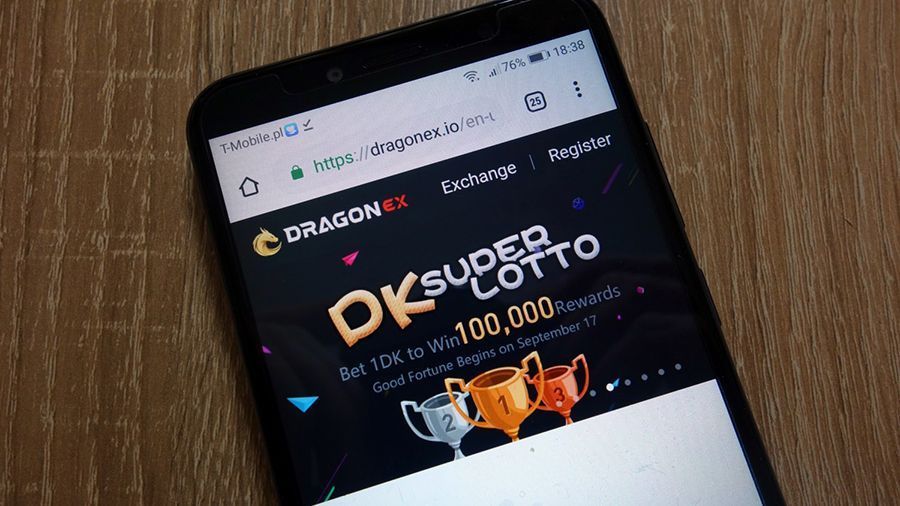
Singapore-based cryptocurrency exchange DragonEx will temporarily introduce tokenized withdrawal quotas for digital assets as part of addressing current issues.
Marketplace users will receive DragonEx Withdraw Quota (DWQ) tokens. 1 DWQ will allow you to withdraw one asset from the platform, the cost of which is 1 USDT. To receive DWQ, clients need to trade on the exchange, borrow assets or make deposits. When requesting a withdrawal, an equivalent amount in DWQ will be debited from the user’s account.
DragonEx management said that this is only a temporary solution that will help the exchange cope with its current problems. Recall that on October 21, DragonEx announced the suspension of the deposit and withdrawal of digital assets due to a “crisis of confidence” of users in centralized sites amid problems with the OKEx exchange.
OKEx halted the withdrawal of cryptoassets last month after one of the private key holders was unavailable due to an investigation by Chinese law enforcement agencies. DragonEx executives said that after the OKEx “incident”, users lost confidence in exchanges and began withdrawing funds, which negatively affected DragonEx’s operations.
Earlier, the exchange announced the development of a restructuring plan to restore the withdrawal function and did not even exclude the possibility of its closure if it had not been able to carry out the reorganization before November 2. In a recent address to users, DragonEx management said it is looking for outside investment, but it takes time.
DragonEx plans to gradually restore asset stripping. To make this process “less painful”, it was decided to temporarily introduce tokenized quotas. As soon as the exchange becomes profitable again, the site will destroy all DWQ tokens and restore the normal withdrawal function.
Microsoft employee got nine years in prison for bitcoin fraud
10/11/2020

A Microsoft employee who used data from colleagues to scam bitcoin and various gift cards received nine years in prison.
26-year-old Ukrainian Vladimir Kvaschuk lived in Washington and worked at Microsoft from August 2016 to June 2018. He used the personal data of colleagues to steal and then resell various gift cards.
Kvashchuk transferred his profits to Bitcoin and used mixing services to hide the origin of the funds. After that, the cryptocurrency was exchanged for US dollars and transferred to Kvaschuk’s accounts. The damage from his actions amounted to $ 10 million.
Interestingly, Kvaschuk even reported to the US Internal Revenue Service (IRS) that he received bitcoins. True, in his tax return, the criminal indicated that a relative gave him the cryptocurrency.
This is the first Bitcoin and tax fraud case in the US, according to IRS Special Agent Ryan Korner. He noted that now the IRS has all the necessary competencies to track cryptocurrencies:
“Simply put, today’s verdict shows that you cannot steal funds over the Internet, channel them through Bitcoin and think that it covered up your crime.”
Kwashchuk was found guilty of 18 federal violations, including six cases of money laundering and two cases of filing false tax returns. With the funds received, a former Microsoft employee bought a house on the lake for $ 1.6 million, as well as a Tesla electric car for $ 160,000.
OKEx announced the involvement of lawyers to solve the problem with the withdrawal of cryptoassets
09/11/2020
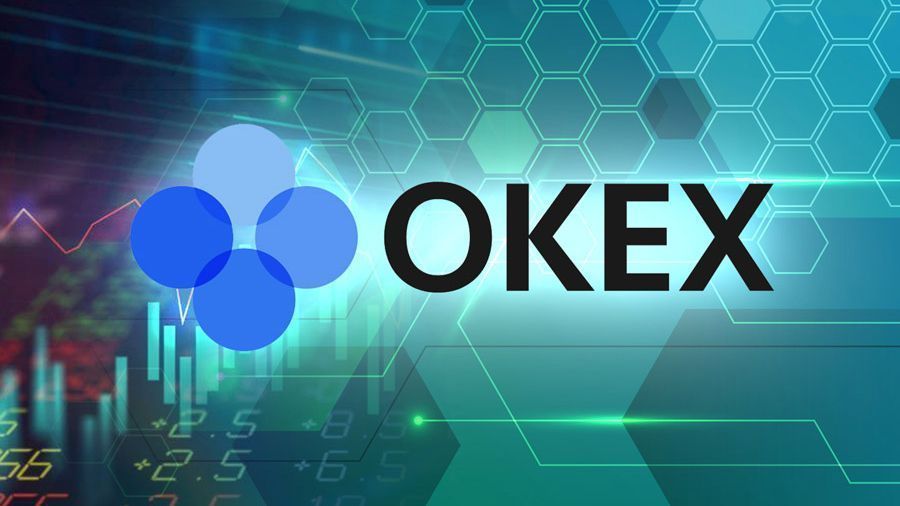
Cryptocurrency exchange OKEx announced the involvement of third-party legal consultants to solve the problem with the withdrawal of digital assets.
Recall that on October 16, the exchange suspended the withdrawal of cryptoassets due to the “unavailability” of one of the holders of private keys. OKEx CEO Jay Hao explained that the lack of a key holder is due to an investigation by Chinese law enforcement authorities against this person, but it has nothing to do with the exchange.
Then, on November 6, the OKEx management announced that they had contacted other private key holders, but could not disclose details due to the confidentiality of the investigation. The report also said that the trading floor staff were facilitating the investigation and cooperating with the police department.
Some media reported that the founder of OKEx Star Xu was detained, but the exchange representative denied this information. OKEx executives called it “rumors” that a criminal charge was being brought against the detained holder of the private keys. The exchange also denies rumors that it stores clients’ assets in a cold, one-signature wallet.
In addition, the OKEx management has assured users that their funds are safe and that the site is operating as usual. The representatives of the exchange explained that they are making every necessary effort to restore the withdrawal of funds in the near future.
As a reminder, in September, Chinese investigating authorities began investigating the activities of an OTC cryptocurrency trader who helped scammers exchange $ 73,500 for USDT. Funds are assumed to have been deposited with OKEx first.
DeFi developer PercentFinance error leads to $ 1 million freeze of crypto assets
09/11/2020
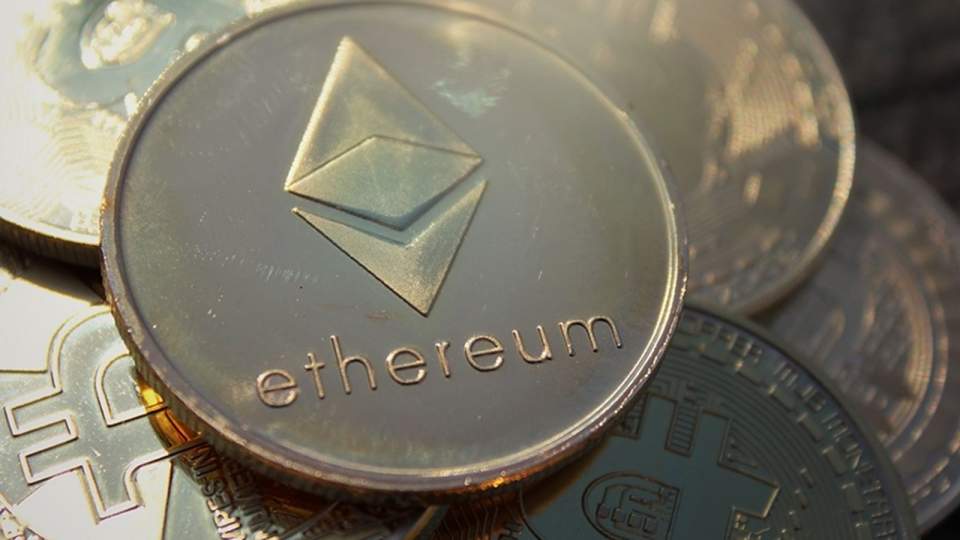
Due to a mistake by the developer of the DeFi PercentFinance application, a fork of Compound Finance, 446,000 USDC, 28 WBTC and 313 ETH were frozen, the total value of which exceeds $ 1 million
The DeFi platform team PercentFinance wrote in a blog post that “there is a problem in some money markets that could lead to permanent blocking of users’ assets.” The team froze money markets for USDC, ETH and WBTC.
A total of 446,000 USDC, 28 WBTC and 313 ETH are frozen, equivalent to roughly $ 1 million. According to a blog post, half of these assets are owned by the “community development team” PercentFinance. The withdrawal of money from other markets is open, but the team urges users not to take out loans in any of the PercentFinance markets.
In a Discord discussion of the vulnerability, Ethereum developer and PercentFinance Vfat said that another developer who forked PercentFinance from Compound Finance “used old Compound contracts instead of … newer, much better versions.”
Vfat has begun updating some of these smart contracts, in particular the platform’s lending interest rate regulation. After Vfat completed the changes and deployed them, it realized that the signatures for the old and new contracts were incompatible, so no transactions could be signed with them.
“The old and new interest rate models have different signatures for all of these important features,” he said in a Discord chat. “Basically, the token contract is trying to find an interest rate function that doesn’t work, so it fails on every interaction.”
According to Vfat, “The Compound team has confirmed that this means a contract lock.” He noted that it is too early to talk about an asset recovery plan, as the protocol developers have not yet communicated with Center or BitGo – issuers of USDC and WBTC, respectively.
In theory, USDC and WBTC issuers could blacklist addresses with blocked assets. After being blacklisted, BitGo and Center could re-issue new tokens to the old owners, which Tether did for a trader who mistakenly transferred 1 million USDT to the wrong address.
A Center spokesman said the company can only interfere with USDC transactions if it receives “a valid, binding order from a competent US court that has authority over Center.”
Regarding other recovery efforts, Vfat said one early-stage proposal involves the launch of new contracts for the USDC credit markets. Although 27% of loans are fixed in the old contracts, the new contracts will allow borrowers to pay off the remainder of their loans, thus obtaining their collateral and paying the lenders $ 0.73 cents on $ 1. At the same time, there are no opportunities to return the ETH blocked in the contract.
“Regardless of what happens next, I take responsibility for the lost assets and will do everything in my power to recover the losses,” Vfat said.
Blockstream Developers Introduce New Multisignature Option for Bitcoin
06/11/2020
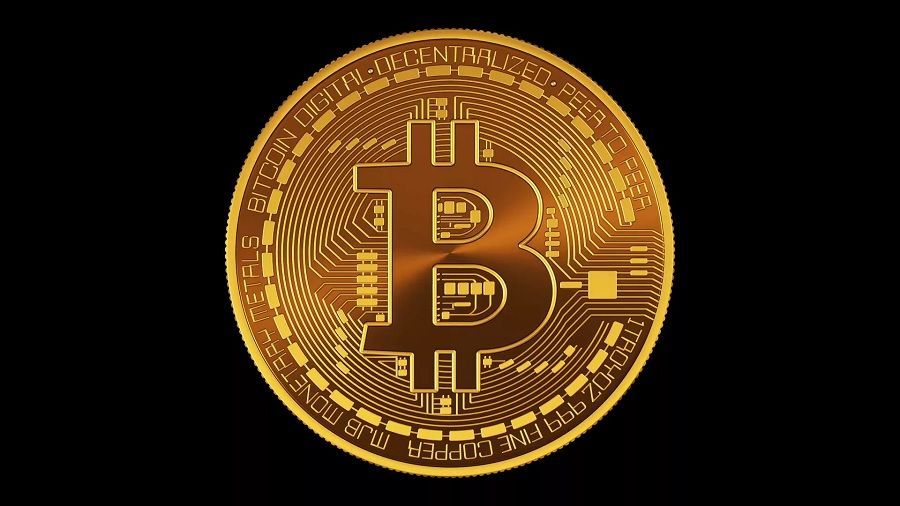
Bitcoin is gearing up to roll out support for Taproot privacy technology and Schnorr signatures. Blockstream developers have introduced a new version of MuSig2 multisignature transactions.
In a blog post, developers Jonas Nick and Tim Ruffing have proposed a new MuSig2 multisignature transaction scheme. It should reduce the technical complexity of multi-signature transactions while maintaining the privacy of the parties to the transaction.
The proposed multisignature scheme takes the best from the previous methods. The older version, called Checkmultisig, requires less interaction between participants, but provides a lower level of security and anonymity. Modern MuSig1 offers a better level of anonymity, but requires more interactions to confirm a transaction.
MuSig2 will provide the same level of anonymity and security as MuSig1, but will reduce the number of participant interactions to two. MuSig2 can also improve the privacy of the second level Lightning Network solution and the so-called threshold signatures, which are often used by exchanges and custodian services.
“MuSig2 provides the same level of functionality and security as MuSig1, but provides the ability to eliminate most interactions between participants. You only need two rounds of communication to create a signature, and one of the rounds can be prepared in advance, “the developers write.
In mid-October, it was reported that support for Taproot technology and Schnorr signatures had been incorporated into the Bitcoin Core code. However, the timing and methods of activating updates have not yet been determined.
Derivatives Exchanges Prepare to Start Trading ETH from Ethereum 2.0 Deposit Contract
06/11/2020
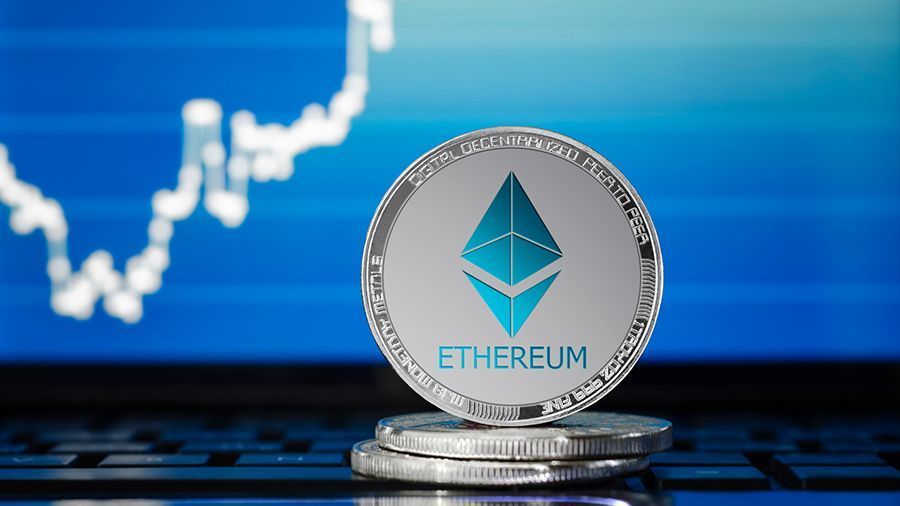
The FTX cryptocurrency derivatives exchange has expressed its readiness to place tokenized ETH based on the Beacon Chain (BETH) signal chain blocked in the Ethereum 2.0 deposit contract.
On November 4, the developers of Ethereum 2.0 presented a tool for creating an ETH 2.0 deposit contract, which will allow sending Ether from Ethereum 1.0 to Ethereum 2.0. According to Etherscan, to date, the contract already contains more than 19,600 ETH worth $ 7.9 million. The launch of the derivatives market for BETH will provide access to liquidity for investors who cannot use the coins from the deposit contract until the first phase of the renewal.
However, Ethereum Foundation researcher Justin Drake said that the deposit contract was specifically designed to prevent another type of ETH from becoming available for trading. And Ethereum co-founder Vitalik Buterin doubts that anyone would want to provide liquidity for the second version of Ether, sent to staking, since moving ETH to Ethereum 2.0 without a validator status will not bring profit.
At the same time, Coin Metrics co-founder Jacob Franek (Jacob Franek) believes that this will not stop exchanges from listing such assets, performing the function of “debt” coins. Their price may depend not only on the reward for staking ethers in the Beacon Сhain. The cost can also be influenced by the risks associated with trading products based on the blockchain, which is still in development. For example, penalties for failing to validate a new chain can negatively impact deposits. In turn, this will be reflected in BETH trading.
Anonymous cryptocurrency researcher Hasu believes intermediaries should be concerned about security first. People who take on financial risks will no longer just issue blocks, and block validators will only bear indirect financial risks. Hasu proposed linking the BETHs available for trading to the amount of Ether allocated for staking on centralized exchanges.
As a reminder, the Ethereum 2.0 update is scheduled for December 1, 2020 subject to certain conditions.
UN Regional Adviser: “blockchain is an effective tool for fighting corruption”
05/11/2020

David Robinson, regional adviser to the UN Office on Drugs and Crime, believes that blockchain will help governments in different countries fight corruption.
David Robinson stated that blockchain-based solutions will help fight not only corruption, but also other economic crimes. The blockchain will provide full traceability of transactions, prevent changes to already entered data and protect documents from forgery.
According to Robinson, due to corruption, society ceases to trust the state, and blockchain can become an important tool for increasing trust in the government. In particular, he mentioned Kenya – due to the lack of effective ways to combat bribery and the inability to track incidents of corruption, the country loses about $ 6 billion of its budget annually.
Many countries are already considering blockchain to transparently track transactions and reduce the likelihood of receiving bribes. Thus, according to a report from the Danish Ministry of Foreign Affairs, blockchain and big data technology can be used to securely exchange information, keep records of births and deaths, and keep track of car registrations.
The Peruvian government and the Inter-American Development Bank (IDB) are also ready to use blockchain to create a transparent contract procurement system that will be protected from data manipulation, unauthorized access and fraud.
This summer, the World Economic Forum (WEF), together with the government of Colombia, began testing a project based on Ethereum to increase the transparency of government processes and prevent corruption. In addition, the WEF concluded that blockchain can save billions of dollars by increasing the efficiency of supply chains.
Gibraltar became a GBBC member for the development of blockchain in the country
05/11/2020

Gibraltar has become a member of the Global Blockchain Business Council (GBBC), an organization dedicated to blockchain development in more than 50 countries.
Gibraltar’s Minister of Digital and Financial Services, Albert Isola, has announced that the government will promote blockchain adoption in the British Overseas Territories. This requires organizing training seminars for business leaders and legislators, as well as consulting on the regulation of firms in the industry.
The initiative aims to make the country more “blockchain-friendly”. GBBC CEO Sandra Ro expressed her gratitude to the Government of Gibraltar for their willingness to work with GBBC to introduce the latest technology. Roh believes that blockchain can take economies of different countries to the next level, opening up many opportunities for enterprises to develop.
GBBC was launched in Davos in 2017. Its goal is to protect the interests of firms that develop solutions on the blockchain, partner with leaders from different countries, as well as provide detailed information to government and regulatory authorities about the principles of blockchain operation. In a study conducted by GBBC last year, 63% of institutional investors have little understanding of the technology and are not interested in using it.
As a reminder, Izola signed a memorandum of understanding last year on behalf of the University of Gibraltar, which has partnered with the research department of the Huobi cryptocurrency exchange to conduct academic research on DLT. In September, the Gibraltar Financial Services Commission (GFSC) updated guidelines for blockchain firms and added guidance on token issuance and risk management.
69370 BTC withdrawn from one of the largest bitcoin wallets, which have lain for more than seven years
04/11/2020

On the day of the presidential election in the United States, bitcoins were set in motion on one of the largest wallets. Five hours ago, someone sent 69,370 BTC that hasn’t moved since October 2013.
A few hours ago, the Whale Alert service reported a large transaction from the address 1HQ3Go3ggs8pFnXuHVHRytPCq5fGG8Hbhx, widely known among crypto enthusiasts and hackers. About two years ago, a wallet.dat file appeared on the darknet, presumably containing keys to this address, but no one was able to crack the password.
Today, first 1 BTC was withdrawn from this wallet, and a few minutes later – the entire remaining amount, which at the current exchange rate is close to $ 950 million. Also, the same amount of Bitcoin Cash was withdrawn from it, and soon they will probably be followed by coins from other forks that are worth something.
Such total devastation speaks precisely of hacking the wallet, and not of transferring to another storage at the initiative of the owner. After all, no matter how complex the password from wallet.dat, sooner or later it can be brute-force – it is much easier than picking up the private key from the address “from scratch”. Such a huge “bonus” justifies any cost of computing resources.
Until today, this address was the fourth in the list in terms of the amount of stored bitcoins. Now this place of honor has passed to the recipient address, and this is the address of the new bech32 format, or native SegWit. The owners of both addresses are unknown.
A large amount of bitcoins (69,471 BTC) was transferred to the original address on October 4, 2013 – three days before the arrest of Silk Road administrator Ross Ulbricht. Therefore, many consider this wallet owned by Silk Road. Since then, this address has been diligently dusty with microtransactions, but to date, the only outgoing transaction from it in the amount of 101 BTC occurred on April 23, 2015. This is an argument against the version of the wallet belonging to Ulbricht, since he was already in prison at that time.
Whale Alert suggests that this wallet is linked to the MtGOX exchange that burst in 2014. Other versions will inevitably arise, but the real owners of both the old and the new addresses may forever remain unknown.
ETH 2.0 Developers Release a Tool to Create a Deposit Contract
04/11/2020

The Ethereum 2.0 developers have published a tool on GitHub to generate the keys needed to make a staking deposit in Ethereum 2.0.
On the night of November 4, the Ethereum 2.0 developers published a tool for creating an ETH 2.0 deposit contract on GitHub. The launch of the deposit contract will allow sending ETH from Ethereum 1.0 to Ethereum 2.0. This has brought the launch of phase 0 of the new version of the network one step closer.
Chain Games founder Adam Barlamm wrote:
“To quietly release the ETH 2.0 deposit creation tool on election day … tricky, very tricky.”
The Escrow Contract Tool is a key step towards the rollout of Ethereum 2.0 Phase 0. The deposit contract was successfully verified at the beginning of the year. It will allow validators to join the Beacon Chain by sending ETH to the contract. The published code allows you to generate the keys required to make a deposit in Ethereum 2.0. Phase 0 deployment will begin after the launch of the deposit contract.
Recall that recently the developer of the Ethereum Foundation Danny Ryan said that the launch of the deposit contract will take place in the first half of November. The contract must first receive approval following an audit of the BLST cryptographic library by the auditing firm NCC Group.
Atlas VPN: the number of attacks on cryptocurrency services decreased by 3 times in 2020
03/11/2020

According to Atlas VPN, the number of hacks of cryptocurrency services in the first half of 2020 decreased three times compared to the same period last year.
Atlas VPN experts calculated that over the entire history of the crypto industry, hackers managed to steal more than $ 13.6 billion. Despite the fact that fewer hacker attacks were made on cryptocurrency wallets, they turned out to be the most profitable. Over the past eight years, wallet operators have faced 36 hacks, resulting in losses of $ 7.1 billion.On cryptocurrency exchanges, cybercriminals carried out a total of 87 successful attacks, during which they stole $ 4.8 billion.
The most successful in terms of number were attacks on decentralized applications on the EOS blockchain – they accounted for 36% of all hacker attacks in the blockchain industry. In aggregate, the losses of such applications as a result of hacks amounted to $ 28.2 million. The actions of cybercriminals and decentralized applications on Ethereum could not be avoided – 33 successful attacks were carried out on them, losses amounted to $ 364.3 million. Decentralized applications based on Tron also became a target for hackers. Cybercriminals carried out 21 successful attacks on such applications, earning $ 1.22 million.
In addition, attacks were carried out on various blockchains. Since 2012, blockchains have suffered from 28 hacks, during which criminals earned $ 45.8 million. The most attractive networks for hackers were Bitcoin Gold and Litecoin Cash.
According to Atlas VPN, 2019 was a record year for the number of hacks in the cryptocurrency industry. In the first half of last year, 94 hacker attacks were successful, and in total, 133 attacks were carried out in 2019. However, in the first half of 2020, this figure dropped significantly to 33 attacks. Experts have suggested that even if attackers continue to operate with the same efficiency until the end of the year, the number of hacks will still not reach the “record” of last year.
Recall that recently, criminals attacked the Harvest Finance decentralized finance protocol and were able to withdraw $ 25 million worth of crypto assets. This led to a record increase in daily trading volumes on the DeFi exchanges. In addition, in September, the Slovak cryptocurrency exchange Eterbase suffered from a hacker attack, the total damage of which is estimated at $ 5.3 million.
Hackers demand ransom in cryptocurrency from patients of Finnish medical centers Vastaamo
03/11/2020

In Finland, hackers have gained access to the medical records of patients in psychotherapy centers and are demanding a ransom in cryptocurrency, otherwise threatening to publish the information in the public domain.
The hackers gained access to the medical data of 40,000 patients at Vastaamo psychotherapy centers. The attackers exploited a security breach that appeared as a result of a hack in 2018, but which was not previously known. The hackers began contacting patients whose data had been compromised and sending them messages with the following content:
“Your data from psychotherapy sessions will be published if you do not pay me € 500 in cryptocurrency within 48 hours.”
The Vastaamo hack is one of the largest cryptocurrency ransom attacks on a medical facility. Attackers have already published over 300 case histories on the darknet and threatened to release more data if patients do not pay the ransom. A massive data breach led to the firing of Vastaamo CEO Ville Tapio.
The hackers are part of an organized group that regularly steals data for ransom. The delay between the 2018 security breach and the blackmail attempts that began on October 21, 2020 is attributed to the “heavy workload” of the hackers and the fact that it took the group a long time to decipher the Finnish documents and understand their value.
Cybersecurity companies have joined forces with blockchain analytics providers to track down and identify hackers. Recall that in the spring, the largest network of private hospitals in Europe was attacked by a ransomware virus. In addition, hackers attacked the information system of a hospital in the United States, demanding a ransom in cryptocurrency.
Harvest Finance has increased the reward for returning stolen cryptocurrencies to $ 1 million
02/11/2020

The management of the Harvest Finance project, which works in the field of decentralized finance (DeFi), has increased the fee from $ 100,000 to $ 1 million for assistance in the return of stolen cryptocurrencies.
Recall that on October 26, hackers attacked the Harvest Finance protocol and withdrew cryptocurrencies worth about $ 34 million, using an instant loan to manipulate the prices of fUSDT and fUSDC. The developers of Harvest Finance turned to the cryptocurrency community on Twitter for help in recovering assets.
The attack organizer understands the principles of instant loans, internal Curve code and renBTC; understands cryptocurrency and arbitrage trading and knows how to ensure the secrecy of transactions. In addition, the hacker is familiar with profitable farming, can write smart contracts and can use cryptocurrency mixers, including in the darknet. It is also known that the attacker was available during the attack.
The management of Harvest Finance is ready to pay one internal FARM token to five random people who will retweet the record. Initially, the refund fee was $ 100,000, now it has risen to $ 1 million, and it is not necessary to publicly reveal the identity of the hacker, it is enough to convince him to return the stolen cryptocurrencies.
Some users have commented that it will be much more effective if Harvest Finance developers work more closely with law enforcement on this issue. And $ 1 million can be spent on further development of the project or on payments to affected users. Recall that due to the hacking of Harvest Finance, the daily trading volume on the decentralized exchanges Uniswap and Curve Finance exceeded $ 2 billion.
Research: Most DeFi projects remain centralized
02/11/2020
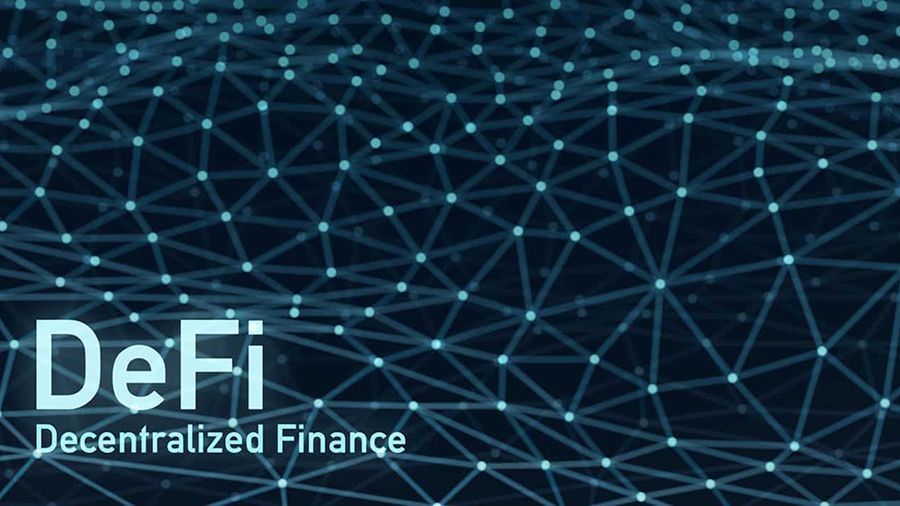
According to a joint report by think tank DappRadar and Monday Capital, most DeFi projects have a high degree of centralization due to the token distribution model.
The authors of the report stated that in the MakerDAO, Curve, Compound and Uniswap projects, tokens are unevenly distributed, which creates favorable conditions for large holders. The Maker control system is the most “mature”.
At the MakerDAO forum, community members can conduct a preliminary analysis and discuss the proposals that are put to the vote. The forum is open even to those who are not holders of MKR. However, the voting process in Maker can be controlled by large token holders. These include 20 addresses, where 24% of the total MKR volume is concentrated. However, analysts have concluded that compared to other projects, the distribution of tokens in Maker is the most equitable.
As for Compound, the main holders of COMP tokens were venture investors, team members and some projects, in particular, Dharma and Gauntlet. Only 2.3% of addresses have the possibility of delegation. This means that only this small part of the community can participate in project management, and if you exclude exchange addresses, this figure may be even lower. Similar problems arise in the Uniswap and Curve projects. In the case of Curve, one address controls 75% of all votes.
Analysts have named three main factors that contribute to the centralized management of DeFi projects. First, many users do not view their tokens as a voting tool, but use them to participate in profitable farming. Network members receive voting tokens as a reward. At first glance, the idea seems good – management goes to those who use the product. But in this case, material motivation becomes stronger than the desire to manage.
Second, such systems operate on the principles of plutocracy, where wealth determines power. This is due to the lack of minimum requirements for voting participants to ensure the necessary level of decentralization, and no one is able to compete with large token holders. Identifying participants in decentralized protocols is quite difficult, and plutocracy becomes the only method of governance.
Third, initial investments also play an important role in centralizing management. Venture companies and other investors often own large amounts of tokens, and for this reason other users lose interest in voting. Analysts have concluded that it is the distribution mechanisms that encourage centralized management, so the current result should come as no surprise.
According to MolochDao researchers, the transition to Ethereum 2.0 could put DeFi applications at risk due to reduced liquidity, which could also lead to centralization.
Former PBOC CEO: “digital yuan will prevent dollarization of the economy”
30/10/2020

Former head of the People’s Bank of China (PBOC), Zhou Xiaochuan, said the digital yuan will develop retail payments in China and prevent dollarization of the economy.
The President of the Chinese Finance Association said this at the Eurasian Forum. Zhou Xiaochuan said China’s central bank views government cryptocurrencies differently from the G7 countries, which include Canada, France, Germany, Italy, Japan, the United Kingdom and the United States. Regulators in these countries are focused on the challenges and threats posed by Bitcoin and other digital currencies, and even the unreleased Libra stablecoin.
China’s central bank focuses exclusively on using its digital currency for domestic retail payments. The agency is trying to prevent the popularization of the US dollar and is taking measures to reduce the use of the dollar for settlements in China. According to Xiaochuan, this is the main purpose of the digital yuan.
Last year, the US Treasury Department began to investigate the systemic risks of the Libra cryptocurrency project, which could affect the international economy. At the same time, the United States is in no hurry to launch its own digital currency. Recently, Federal Reserve Chairman Jerome Powell said that the digital dollar should not be launched until all risks associated with cyber attacks, fraud and money laundering have been eliminated.
Many central banks hold a similar position, believing that it is necessary to study the problems of government stablecoins more carefully. They can become a partial analogue of fiat money, which raises many questions related to legal and regulatory norms.
China’s approach to central bank digital currencies is indeed different from other countries. Instead of theoretical reasoning, the Chinese authorities prefer to conduct research in practice. Testing of the China Digital Currency-Based Electronic Payment System (DCEP) began in August, and this month, the NBK announced that a hardware wallet for the digital yuan is ready for testing.
Aave Developers Transfer Protocol Control to LEND Token Holders
30/10/2020

The developers of the DeFi Aave project announced the transfer of rights to manage the protocol to the LEND token holders. Aave has become the largest self-governing decentralized finance protocol.
The administrative keys to the protocol were originally in the hands of the Aave team. However, the project has now reached the stage where the management of the protocol can be transferred to the shoulders of the community and Aave can be truly decentralized. For this, administrative rights were transferred to the community of LEND token holders.
As part of the transfer of control of the protocol, the Aave Governance smart contract was empowered to change the protocol parameters and properties of the main Aave smart contracts, including the LendingPoolAddressProvider – the underlying smart contract of the protocol.
“Today is one of the most important milestones in the development of Aave: we have officially transferred the administrative keys of the protocol to the community. This is a very important step towards full decentralization, ”the developers wrote in the project’s blog.
Following the transfer of control of the Aave project to the community, LEND token holders have already voted for one change. This is the launch of the ability to migrate LEND tokens to AAVE tokens in a 100: 1 ratio. In the future, this will allow transferring control of the protocol to AAVE token holders.
As a reminder, the Aave protocol management system using tokens on the Ethereum mainnet was launched at the end of September. Almost $ 1 billion is currently blocked in the Aave protocol
TelosTask Decentralized Job Search Platform Beta Launched
29/10/2020

Telos startup has introduced TelosTask peer-to-peer platform on its blockchain. The platform was created to find work as freelancers during a pandemic.
TelosTask development team leader Destiny Marshall announced that the platform will operate on the Telos blockchain. Telos is a fork of the EOS project and runs on the EOSIO software.
According to the principles of work, the TelosTask service will not differ from ordinary exchanges for finding remote work. Customers will be able to form various tasks for writing articles, graphic design, video editing, etc. Customers will have the opportunity to directly communicate with performers and coordinate their work, while all information about their interaction will be stored in the blockchain.
Marshall hopes TelosTask will help people solve the unemployment problem and more easily overcome the economic downturn and isolation during the pandemic, as people need additional sources of income. An escrow system will be used to make secure automatic payments on the platform. In addition, the use of smart contracts will guarantee timely settlements and fair remuneration for the work performed.
Telos is not the only project using the power of blockchain to solve social problems. Last year, bitJob launched the Ethereum blockchain-based job search platform. The Freelance for Coins platform has also appeared, allowing freelancers to receive payments in various cryptocurrencies.
According to a study by Humans, conducted two years ago, 29% of 1,100 surveyed American citizens who work remotely are willing to accept payments in cryptocurrencies. However, given the rapid development of the cryptocurrency industry, this figure can be much higher today.
OKEx Denies Rumors Of Keeping Users’ Assets In A Cold One-Signed Wallet
29/10/2020

After the arrest of one of the founders of OKEx and the suspension of withdrawals, rumors emerged that the exchange was storing users’ assets in a cold, one-signature wallet. However, the company denies this.
The press service of the OKEx exchange told the industrial media that the information published on the Jinse Caijing website regarding the storage of cryptoassets of exchange users in a cold wallet with one signature is incorrect.
Recall that the founder of the exchange, Xu Mingxing, was detained by the Chinese police earlier this month, after which the withdrawal of crypto assets from the exchange was suspended due to the “unavailability” of one of the holders of the private keys.
A spokesman said he could not “disclose any information as it could jeopardize users’ assets.” He also did not say when the withdrawal will be resumed. The posting from the Jinse Caijing website has been removed.
When asked if OKEx uses a single-signature wallet, the press service referred to a 51% attack report on Ethereum Classic, which details the process of withdrawing crypto assets from the exchange, including the use of “semi-autonomous multisignature” for hot wallets.
According to the report, 95% of money is held in cold wallets. The cold wallet security detail page states that when generating private keys, the Advanced Encryption Standard (AES) password is “controlled by two exchange employees” – one at the OKEx office in Beijing and the other in a city on the west coast of the United States.
To withdraw cryptoassets, an employee visits “a bank safe near the office and retrieves the required number of unused encrypted private keys.” It then scans the QR code of the keys on two separate stand-alone computers. Thereafter, “the owner of the master AES password decrypts the private key on a completely autonomous computer.”
The final step is “signing the transaction on another completely autonomous computer. After that, the signature of the transaction is synchronized via a USB drive with a computer connected to the Internet and broadcast to the network. ”
Recall that last month, the Chinese police began to investigate the activities of an OTC cryptocurrency trader due to participation in a deal with $ 73,500 obtained by illegal means. It is assumed that the funds were initially deposited on the OKEx exchange.
Huobi Exchange Adds Direct Purchase of Cryptocurrencies Using Bank Cards

28/10/2020
Cryptocurrency exchange Huobi has added the ability to directly purchase major cryptocurrencies using Visa and Mastercard without intermediaries.
Ciara Sun, Vice President of International Business Development at Huobi Group, announced that the service is being provided by Huobi Technology, the Gibraltar-based regulated arm of Huobi Global. Previously, users of the site already had the opportunity to purchase cryptocurrencies using these credit and debit cards, but when making such transactions, Huobi customers were redirected to third-party services.
Visa cardholders residing in European countries and Australia will now be able to directly buy cryptocurrencies on the exchange. Users from the UK, Gibraltar, France, Poland, Czech Republic, Netherlands and Australia will have access to direct purchase of cryptoassets using Mastercard cards.
“Eliminating middlemen will make it easier for users to buy cryptocurrencies, and their interaction with our trading platform will become smoother,” said Ciara Sun.
Huobi recently integrated the Banxa payment service, which allows UK citizens to make deposits in fiat currencies through the fast payment system Faster Payments. It also allowed EU users to make fiat deposits to the exchange through the European Single Payment System (SEPA), and Australian traders through the POLi payment platform.
As a reminder, Huobi launched Huobi Brokerage digital asset trading platform in January, targeting institutional investors. A few months later, Huobi introduced the Huobi Chain open test blockchain for Decentralized Finance (DeFi) with support for KYC and AML requirements.
OpenZeppelin Introduces DeFi Automated Application Build Platform
28/10/2020

Audit firm OpenZeppelin has unveiled the Defender open source platform for the automated creation of Decentralized Finance (DeFi) applications.
OpenZeppelin CEO Demian Brener said the Defender framework allows for the secure automation of smart contracts. This significantly speeds up the creation of applications, which usually takes several months for developers. Defender supports level 1 and 2 smart contracts, as well as sidechains. The platform is already being tested by decentralized finance projects Aave, Compound Labs, dYdX and Balancer.
The Defender software is designed to ensure that developers don’t have to reinvent the wheel with each project. Building your own tools from scratch or writing code in a hurry carries enormous risks, especially if firms are looking to get their product to market as soon as possible.
Props CTO Peter Watts (Peter Watts), who participates in the test platform, said working with smart contracts takes effort. The Defender will “make life easier” for developers and help avoid human error, and manage smart contracts easier and safer.
Many Ethereum-based DeFi applications are already facing serious issues from smart contract audits or vulnerabilities. A few days ago, hackers managed to carry out an attack on the Harvest Finance protocol and withdraw $ 25 million worth of crypto assets. In August, the YAM Finance project was closed due to a critical error in a smart contract that allows an unintended release of YAM tokens. In September, the YAM Finance developers announced a post-audit restart.
As a reminder, a year ago, OpenZeppelin launched a library of proven smart contracts in partnership with Microsoft.
Jack Ma: “Digital currencies are the future of the financial system”
27/10/2020

According to the founder of Alibaba, digital currencies will help create a new global financial system. Jack Ma also criticized global banking regulation.
Chinese billionaire Jack Ma said digital currencies could play an important role in the new global financial system. The founder of China’s largest tech company, Alibaba, expressed his stance at the Bund Summit in Shanghai.
“Digital currency can create value and we need to think about how to create a new type of financial system with digital currencies,” Ma said.
However, it’s not clear exactly what Ma meant when he talked about digital currencies. Binance CEO Changpeng Zhao tweeted that it was “an amazing speech” in which Ma “talked a lot about cryptocurrency and the future.” However, Ethereum co-founder Vitalik Buterin asked Zhao what exactly Ma meant by “digital currencies.” To this, Zhao replied that “the meaning can be interpreted in different ways.”
Ma may have been talking about government cryptocurrencies in his speech, such as the digital yuan, which is in the final stages of testing before its official launch. Recently, Governor of the People’s Bank of China (PBC) Yi Gang said that the development of a national digital currency will be one of the main drivers of the PRC’s transition to a digital economy.
Ma also said during his speech that global rules, in particular the Basel Accords – international guidelines for banking regulation – were already outdated. He added that global regulation is holding back China’s development and “does not take into account the possibilities of young people or developing countries.”
Recall that according to a study published in September KISSPatent, Alibaba almost surpassed the American computer giant IBM and by the end of this year will become the largest holder of patents related to the blockchain.
Central Bank of Switzerland and BIS will start testing the state cryptocurrency by the end of the year
27/10/2020
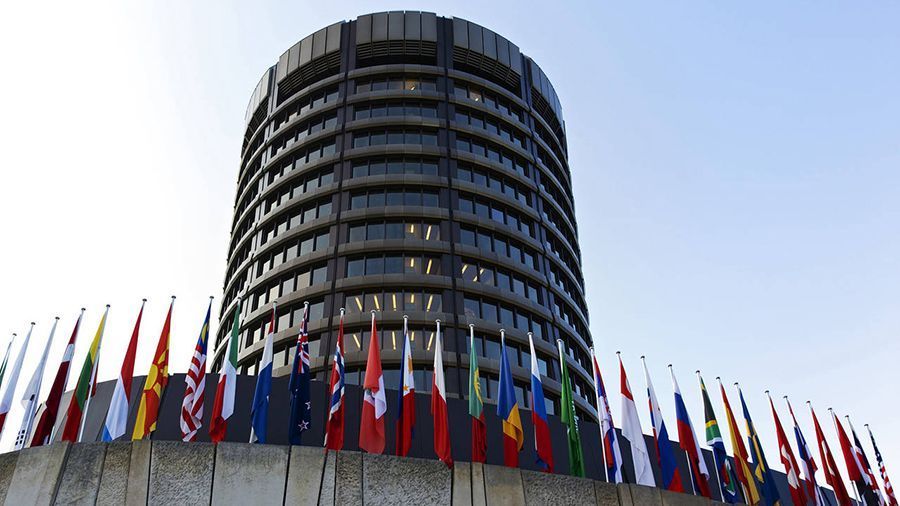
The Swiss National Bank (SNB) and the Bank for International Settlements (BIS) plan to start testing the state digital currency by the end of this year.
This was announced by Benoît Cœuré, Chairman of the BIS Innovation Center, at a conference in Shanghai. He said the Proof-of-Concept (PoC) will allow researchers to experiment with government digital currency, use it for retail payments, as well as study interactions with existing payment systems and monitor compliance with regulatory requirements.
BIS also plans to involve other central banks in the initiative, including the Hong Kong Monetary Authority (HKMA) and the Central Bank of Thailand. Köre believes that such cooperation will allow more efficient testing of cross-border payments using government cryptocurrencies.
Last year SNB and BIS teamed up to explore trends in the digitalization of the financial sector and expand their knowledge of financial markets. Departments believe that digital currencies from central banks can simplify the settlement of tokenized assets between financial institutions. However, such digital currencies should “peacefully coexist” with fiat currencies and not endanger the financial stability of states.
Recall that earlier BIS announced its intention to create four additional branches of the Innovation Center within two years to conduct research on digital currencies and financial technologies, as well as to study issues related to cybersecurity, artificial intelligence and digital payments. In addition, this month, BIS, along with several central banks, presented a report outlining the basic principles for issuing government cryptocurrencies.
US Federal Reserve and FinCEN proposed to tighten tracking of cryptocurrency transactions
26/10/2020

The Federal Reserve and the Financial Crimes Enforcement Network (FinCEN) have proposed lowering the threshold for registering remittances outside the United States, including for cryptocurrency transactions.
According to the document, the US Federal Reserve and FinCEN are proposing to change the thresholds at which banks must collect and store information about remittances. Regulators are proposing to decrease this value from $ 3,000 to $ 250 for any transfers outside the United States. The proposal will also expand the definition of “money” to include cryptocurrencies.
The Fed will accept public comments for 30 days after the proposal is posted on the Federal Register. Individuals can submit reviews online or via email. Note that although cryptocurrencies do not have legal tender status, according to the proposal, they can still be used to transfer value:
“Typically, cryptocurrencies can be exchanged instantly anywhere in the world through P2P payment systems that allow any two parties to transact directly with each other without the need for an intermediary financial institution. In practice, however, many people store and transfer cryptocurrencies using a financial intermediary such as a “wallet” or “exchange”.
The document points out illegal transactions using cryptocurrencies, including transfers by the North Korean hacker group Lazarus. Recall that in the spring, CipherTrace published a detailed analysis of how Lazarus hackers laundered stolen crypto assets worth more than $ 100 million, bypassing KYC checks on cryptocurrency exchanges.
BNY Mellon has processed $ 137 million in transactions for organizations linked to the OneCoin pyramid, according to FinCEN documents released last month.
US IRS Updated Recommendations for Reporting Cryptocurrency Transactions
26/10/2020

The Internal Revenue Service (IRS) has made changes to the taxpayer reporting form. Coins received during hard forks are taxed, and transfers between wallets do not need to be disclosed.
In the latest version of the Personal Income Tax Form 1040, the IRS has clarified which cryptoassets and transactions need to be disclosed. According to the new principles, if a user only owned a cryptocurrency, but did not trade it during 2020, then he can answer “No” to the question of trading, selling or receiving crypto assets in another way.
The updated guidelines provide specific examples of cases that fall under receiving, selling, sending, and exchanging cryptocurrencies. Crypto assets received for free during hard forks are considered taxable assets. As well as the exchange of cryptocurrencies for goods, services or “other property, including another virtual currency.”
“Transferring crypto assets between wallets, such as transferring money to an exchange and back, is considered a transfer for administrative purposes,” said Shehan Chandrasekara, head of tax strategy at CoinTracker.
Thus, users may not report transfers between personal wallets, as this does not represent a sale, exchange or purchase of cryptoassets. At the same time, Chandrasekhar noted that the approach of the IRS as a whole has not changed, but rather clarified it:
“The IRS just once again clarified the taxation of crypto assets. This shows that for the IRS, transactions that are reflected in tax reporting matter. At the moment, the IRS does not seem to be interested in the amount of cryptoassets users hold. You are not required to disclose information about them anywhere if no taxable transactions took place. ”
As a reminder, last fall, the IRS added a clause about cryptocurrencies to Form 1040. In February this year, the IRS updated the definition of virtual currency on its website. In the new version, game tokens were excluded – since then they are not subject to declaration in tax reporting.
Report: MESS system will not provide sufficient protection for Ethereum Classic against “51%” attacks

According to the latest report, the MESS system launched by ETC Labs to protect Ethereum Classic against “51%” attacks may not be as effective or secure as other alternative solutions.
This summer, the ETC blockchain fell victim to three 51% attacks in a month. In mid-October, ETC Labs implemented MESS (Modified Exponential Estimation of Subjectivity) to reduce the likelihood of future attacks by 51%.
However, according to a report by IOHK and ETC Cooperative, “The MESS solution will not provide the required level of security and there is no guarantee that further attacks will not be successful.” In addition, MESS does not provide “high confidence to stakeholders that confirmation time will be reduced to the desired level”.
MESS is designed to make reorganizing a large number of blocks 31 times more expensive, theoretically negating a 51% attack profitability. As ETC Labs previously stated, if MESS, activated on October 10 after successful testing, had been implemented back in the summer, 51% attacks on the Ethereum Classic blockchain would have cost the attackers $ 20 million.
IOHK and ETC Cooperative have studied various solutions proposed by development teams from across the ETC community and have stated that checkpoint and time stamp solutions will provide better security than MESS.
According to the report, the timestamps would allow ETC to base its security on another secure blockchain like Bitcoin. The checkpoint system implies that the “trusted authority” chooses a block that will represent an unchangeable standard for all participants in the network.
ETC Cooperative CEO Bob Summerwill said he hopes the report will be the first step towards decentralized decision making by ETC developers. The report also proposes to implement a “decentralized treasury” that provides a constant source of funding for the future development of the ETC platform.
“A democratic and transparent funding mechanism will also allow the ETC community to determine its future direction of development and choose which innovations will be included in the ETC” ,.
The report claims that this will ultimately allow ETC to “keep up with and even surpass other platforms.”
NAC Foundation Denies SEC Fraud Allegations
23/10/2020
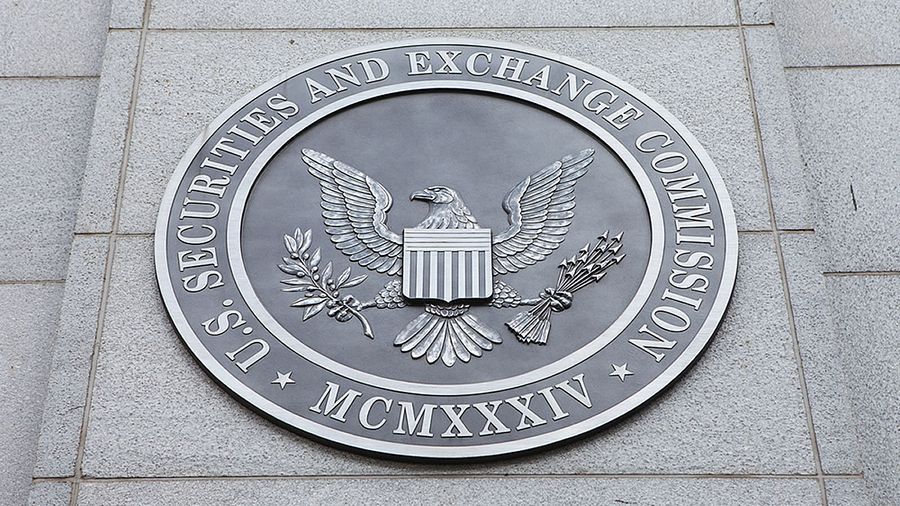
The NAC Foundation denies that AML BitCoin is a security and accuses the US Securities and Exchange Commission (SEC) of fraudulent conduct in a legal proceeding.
Earlier, the SEC accused the NAC Foundation, its CEO Marcus Andrade and political lobbyist Jack Abramoff of organizing an unregistered sale of AML BitCoin cryptoassets in the amount of $ 5.6 million, fraud and misleading investors. Abramoff agreed to pay a $ 50,000 fine, as well as $ 5,501 pre-judgment interest.
However, Andrade disagrees with the Commission’s allegations, and on October 20 asked a federal judge in San Francisco to dismiss the SEC’s claim. Andrade argues that the regulator is deliberately trying to mislead the court by accusing the NAC Foundation of using and offering technology that has allegedly never been developed. According to the defendant, the SEC was aware that the NAC Foundation has a patent for an anti-money laundering technology created specifically for AML BitCoin.
Andrade added that, in accordance with the terms of sale, AML BitCoin are not investment contracts. When purchasing this crypto-asset, users agreed that AML BitCoin is only a medium of exchange, not an investment or entitling to a share in any enterprise. The terms of sale state that NAC Foundation clients should not expect a return on their investment, and AML BitCoin cryptoassets should not be considered debt.
Andrade stressed that the SEC refused to point out a critical element of the Howie test, which helps determine whether an asset is classified as a security. This suggests that the sale of AML BitCoin did not violate securities laws. Consequently, there are no grounds for prosecution. Recall that, as the agency said last month, stock token exchanges that guarantee the legality of the origin of assets in their accounts will not be subject to regulatory sanctions.
Bitcoin exchange rate exceeded $ 12 800 and updated the maximum in 15 months
22/10/2020
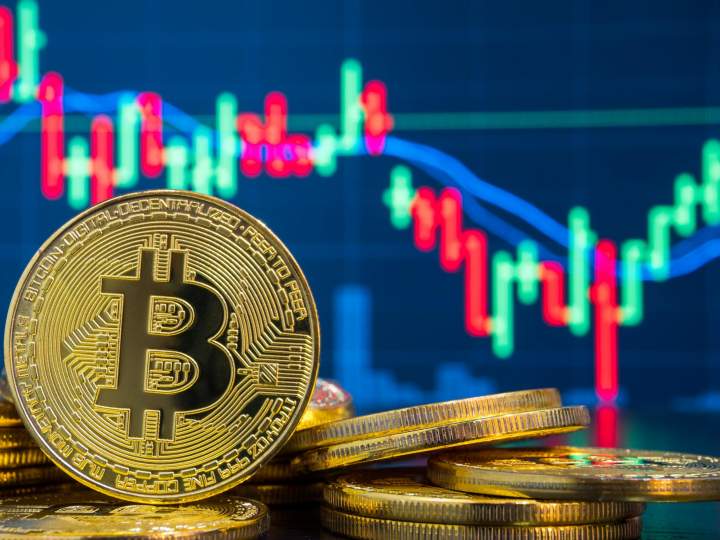
Bitcoin has surpassed $ 12,800, hitting a high since July 2019 amid growing support from institutional investors and large companies.
Today’s leap in the rate was mainly due to the announcement of the PayPal payment system to add support for bitcoin and other cryptocurrencies. Quantum Economics analyst Jason Deane believes that reaching this mark is important for Bitcoin, after which it can renew highs and continue to grow.

Institutional investors are helping the development of Bitcoin’s bullish trend. Asset management firm Stone Ridge Holdings Group bought 10,000 BTC last week. Big Bitcoin investors also include Square, MicroStrategy and Stone Ridge. In addition, earlier this month, Twitter founder Jack Dorsey revealed that his payment company Square acquired 4,709 BTC worth $ 50 million. After the news broke, the BTC rate rose to $ 10,935. Interlapse Technologies CEO Wayne Chen commented on the situation, saying that corporate support creates a favorable background for Bitcoin’s growth.
The current technical picture on the bitcoin chart suggests continued growth despite the fact that many futures traders are betting on an early reversal and the beginning of a new bear market.
PayPal Adds Cryptocurrency Support For US Users
22/10/2020

US PayPal users will be able to buy, sell and store cryptocurrencies. It is planned to add these features for international customers in 2021.
US citizens will be able to conduct cryptocurrency transactions via PayPal in the next few weeks, and the company’s Venmo mobile payment service will add this capability in the first half of 2021. On this news, bitcoin rushed up and is preparing to overcome $ 12,500, updating the maximum since last summer.
In addition, from the beginning of next year, it is planned to open these functions to other countries so that all PayPal customers can use cryptoassets to buy goods in 26 million stores around the world. When making cryptocurrency payments through PayPal, they will be converted to fiat currency (for example, the US dollar). This means that everything will remain the same for sellers – they will receive payment for goods in ordinary money.
PayPal has been licensed by the New York State Department of Financial Services (NYDFS) to provide payment services using cryptocurrencies. This license is issued to companies partnering with licensed firms, which is why PayPal has partnered with Paxos Trust Company.
PayPal CEO Dan Schulman hopes that with the addition of cryptocurrency support, PayPal will help the industry grow at scale. In addition, this step will prepare the system to work with new digital currencies, which in the near future may be issued by corporations and central banks of different countries.
“We work with central banks, so we are considering interaction with all forms of digital currencies. PayPal will contribute to the development of the cryptocurrency industry, ”said Daniel Schulman.
Last year, PayPal CFO John Rainey said the company is taking a cautious stance towards cryptocurrencies due to their high volatility and a “dim” future. However, with central bank analysts actively exploring the possibilities of launching their own digital currency, PayPal management has changed its mind to follow the current trends.
A year ago, PayPal refused to participate in the Libra project. Shulman explained that it is better for the payment system to focus on its own development. If Libra’s prospects become more specific, PayPal will again be able to become a participant in the project, since it is supportive of the blockchain.
US Federal Reserve Chairman: “The digital dollar is not a top priority”
21/10/2020
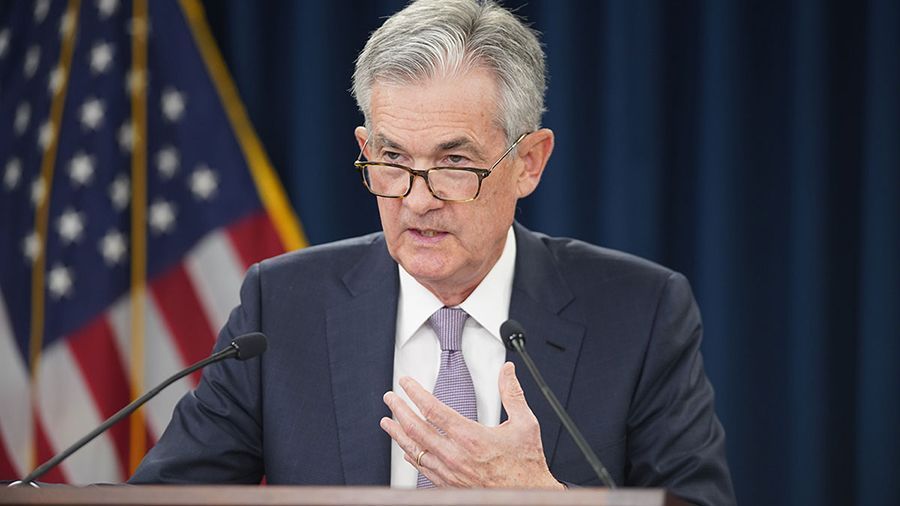
US Federal Reserve Chairman Jerome Powell said the regulator will not issue a digital dollar until all associated risks have been eliminated.
Powell announced this during a speech at the International Monetary Fund conference on cross-border payments. According to him, the United States is not seeking to be the first to issue its own digital currency. Issuing a government stablecoin is a serious task requiring extensive research. It is necessary to take into account not only the positive aspects of the digital dollar, but also its potential risks, given that the US dollar is the world’s reserve currency.
“We have not yet made a final decision on the digital dollar release. I do not think that in the current situation this task should be in the first place for the country. There is no need to rush to create a state cryptocurrency. It is better to do it properly and efficiently, rather than hastily, just to be the first, ”said Powell.
He emphasized that, unlike many countries, there is a strong demand for cash in the United States. In addition, the country has a highly developed financial and banking sector – most of the population has access to banking services, and many use electronic payment systems.
The US central bank will not issue its own digital currency until all associated risks have been removed. This requires providing a high level of protection against cyber attacks and fraud, as well as eliminating the threat to financial stability and the country’s monetary policy. Moreover, you need to think about how to prevent illegal activities with the digital dollar, while maintaining the confidentiality of user data and ensuring the security of funds.
Recall that, according to Powell, private firms should not participate in the development of state-owned cryptocurrencies – only central banks should do this. However, the American Bankers Association (ABA) did not support the issuance of the digital dollar, saying that otherwise the US Federal Reserve would become a “monopoly” supplier of currency, bank accounts and payment services.
The user lost 28,050 AAVE after sending them to the smart contract address
21/10/2020

The user mistakenly sent AAVE tokens worth $ 1.1 million to the token’s smart contract address. Now these tokens are locked on the blockchain and cannot be returned.
Cryptocurrency enthusiasts discovered an erroneous transaction for 28,050 AAVE decentralized finance (DeFi) tokens worth approximately $ 1.1 million, which led to their irrecoverable loss due to an error in the recipient’s address.
According to Etherscan, the transaction took place back on October 3, but went unnoticed until this week. The transaction was discovered by the TokenOops service, which tracks “ERC20 tokens sent to the address of the ERC20 token smart contract”, after which they cannot be returned.
For some reason, the sender of 28,050 AAVE did not pay attention to the fact that he was transferring tokens not to his wallet, but to the address of the smart contract of the AAVE token. As a result, cryptoassets worth more than $ 1 million remained locked on the blockchain.
“The key point here was that the AAVEs were transferred to the address of the contract itself, and not to another account,” explained Chase Wright, an enterprise solutions architect at the Federal Reserve Bank of Chicago. “It’s like sending a letter to the post office address instead of another person’s.”
According to TokenOops, such erroneous transactions occur frequently, but usually the amounts sent are much smaller. However, not all such transactions are made by mistake. Some users deliberately send a small amount of cryptoassets to inactive or inaccessible addresses, for example, the address of the Bitcoin genesis block, as a tribute to the technology or to indicate their position on some issue.
The user who sent the erroneous transaction has a small chance of being compensated. Several members of the AAVE community have offered to return the tokens to the affected user.
The problem of cryptoassets sent to the wrong addresses is relevant for the entire community. In June, Israeli startup Kirobo developed a technology to return bitcoins sent to the wrong addresses by mistake, but this requires a special transaction format. Additionally, in May of this year, the Ethereum community discussed the possibility of creating a Decentralized Autonomous Organization (DAO) to return ETH sent to the wrong addresses.
Monero devs update Oxygen Orion
20/10/2020

The developers of the privacy-focused cryptocurrency Monero have rolled out another update to the Oxygen Orion network.
According to a Monero blog post, the latest node software update is the work of about 30 developers. The Oxygen Orion update will bring new features to improve network efficiency.
For example, the update includes the CLSAG feature, which reduces the size of network transactions by about 25% and the time to confirm transactions by about 10%. At the same time, the confidentiality of transactions is preserved. Monero developers noted:
“CLSAG provides a reduction in size and increased transaction speed with a high level of security.”
Oxygen Orion offers several more new features. These include improvements to network security, in particular with respect to the Dandelion ++ protocol, which is responsible for hiding the user’s IP address. Each Monero update can technically be viewed as a hard fork that requires network members to update their software in a timely manner.
In the blog, the developers write that users who store XMR in hardware wallets should also be updated to the latest firmware in a timely manner. The Oxygen Orion update was rolled out a few months after the Monero developers launched a new version of the 0.16.0.0 Nitrogen Nebula Monero client.
The network updates are taking place against the backdrop of increasing attention of regulators to anonymous cryptocurrencies. As a reminder, Europol recently named anonymous cryptocurrencies and wallets with privacy functions as the “top threats” in a new report on the assessment of threats to organized crime on the Internet for 2020. In addition, in early October, the IRS selected contractors to create Monero tracking tools.
Associated Press will use blockchain to combat false news
20/10/2020
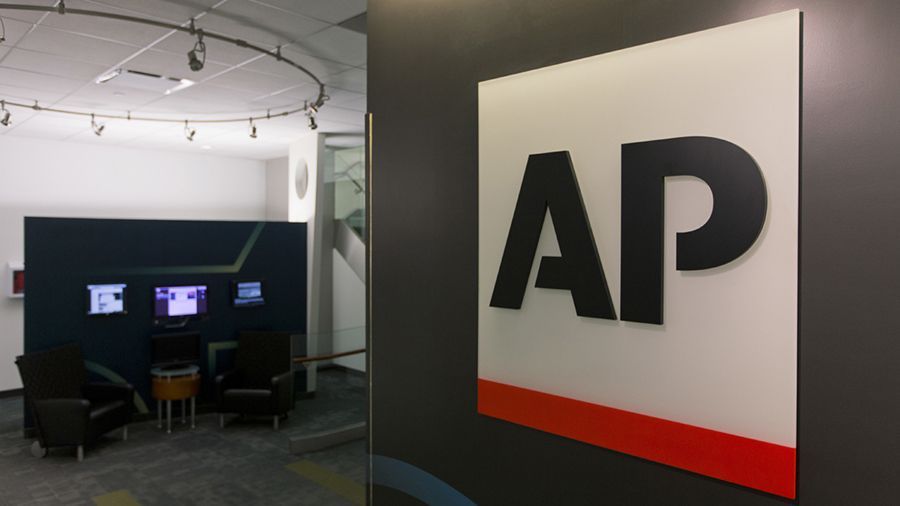
The Associated Press (AP) news agency has partnered with Everipedia and Chainlink, a decentralized oracle network, to track down fake news.
The collaboration will allow AP to authenticate race-related news using blockchain, according to a statement from Everipedia. The Associated Press works with a large number of freelance journalists to get information on local campaign developments. The news agency will use the power of the blockchain to cryptographically sign the data it receives from these journalists.
This does not completely guarantee the accuracy of the news received, as it is possible that the main AP systems are hacked or the keys used to sign the keys are stolen. But otherwise, such a system is much more reliable than the usual transfer of information via e-mail.
Everipedia’s Chainlink node will provide smart contracts with cryptographically proven access to US election data. It can be used to verify that the data from the host is coming directly from the original Associated Press API, to which Everipedia has exclusive authenticated access.
This integration is made possible by leveraging the Chainlink oracle infrastructure, which allows the Associated Press to sign and publish US election results simultaneously on several different blockchains.
This is not the first attempt to use blockchain to combat fake news. In the summer, The New York Times, as part of a joint project with IBM News Provenance, began testing blockchain to combat fake news.
Previously, other media outlets have also referred to the blockchain. Back in 2018, the American magazine Forbes announced a partnership with a startup Civil to publish its content on a decentralized network. Recently, however, startup Civil, which has been working to create a decentralized platform for media funding and posting, announced it would close in June after four years in operation.
Power Finance will launch a digital version of the New Zealand Power Dollar
19/10/2020

Financial company Power Finance plans to launch a digital version of the Power Dollar, which will be powered by distributed ledger technology (DLT).
Power Finance is led by Dave Corbett, partner at audit and consulting firm PwC. He said the Power Dollar will be developed without the participation of the New Zealand government and will be similar to the USDT stablecoin. The Power Dollar will be pegged to the NZ dollar at a 1: 1 ratio. The launch of the digital currency is scheduled for early next year.
Along with DLT, Power Finance will use smart identification technology to verify the identity of all Power Dollar holders and record transactions to prevent money laundering and fraud. Corbett added that the Power Dollar will be compliant with New Zealand law and regulatory requirements.
The Reserve Bank of New Zealand (RBNZ) supports the firm’s initiative. However, RBNZ and the New Zealand Internal Revenue Service (IRD) clarified that they are not cooperating with Power Finance in creating a digital currency, so it cannot be said that it is being developed with government support. In addition, the departments said they are not responsible for regulating the activities of financial companies.
Following the launch of Power Dollar, the firm plans to obtain a banking license from RBNZ. Once approved by the regulator, Power Finance will begin attracting partners that will provide “banking-style services” outside of the traditional banking system. Corbett believes that in the event of a successful experiment with the Power Dollar in New Zealand, the country’s Central Bank will decide to issue its own cryptocurrency.
Recall that last year, the IRD recognized income in cryptocurrencies as legal, and at the beginning of this year proposed not to apply a tax on goods and services in relation to digital assets, but at the same time leave income tax. In addition, IRD recently sent letters to New Zealand cryptocurrency firms asking them to provide customers’ personal data and information about their cryptoassets.
Gate.io Cryptocurrency Exchange Launches Its Own Hardware Wallet
19/10/2020
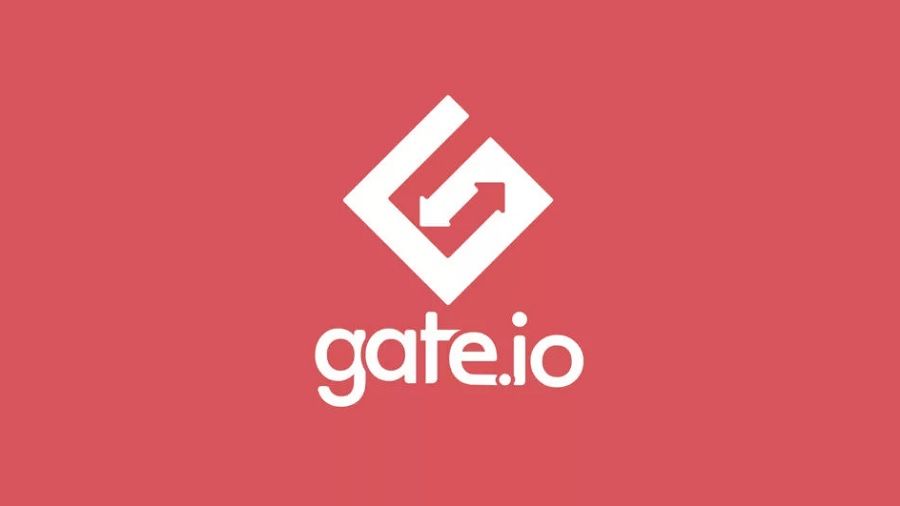
Cryptocurrency exchange Gate.io has released the Wallet S1 hardware wallet. This is the first such device developed by a marketplace.
Wallet S1 is equipped with a fingerprint sensor – the user does not need to come up with and enter complex passwords, just put his finger to verify the transaction. Also, thanks to the fingerprint scanner, the hardware wallet is protected from a brute-force attack.
The device supports over 10,000 different digital assets including BTC, ETH, EOS and other popular cryptocurrencies. Gate.io Marketing Director Marie Tatibouet stressed:
“Wallet S1 is a very secure wallet. The secret key is stored on the device itself, without Internet access. In addition, it allows you to quickly and easily sign transactions. This is the first hardware wallet with a fingerprint recognition algorithm. ”

In addition to a convenient way of storing cryptocurrencies, Wallet S1 will provide users with a fast, easy and secure option to access Gate.io’s own blockchain called GateChain.
“Wallet S1 is also suitable for corporate use – it can be used in conjunction with a Vault address to gain access to GateChain. It is an open blockchain designed with security in mind. The device provides increased security for storing large amounts of assets for a business or financial institution, ”the exchange said in a statement.
Schnorr and Taproot signatures added to Bitcoin Core code
16/10/2020
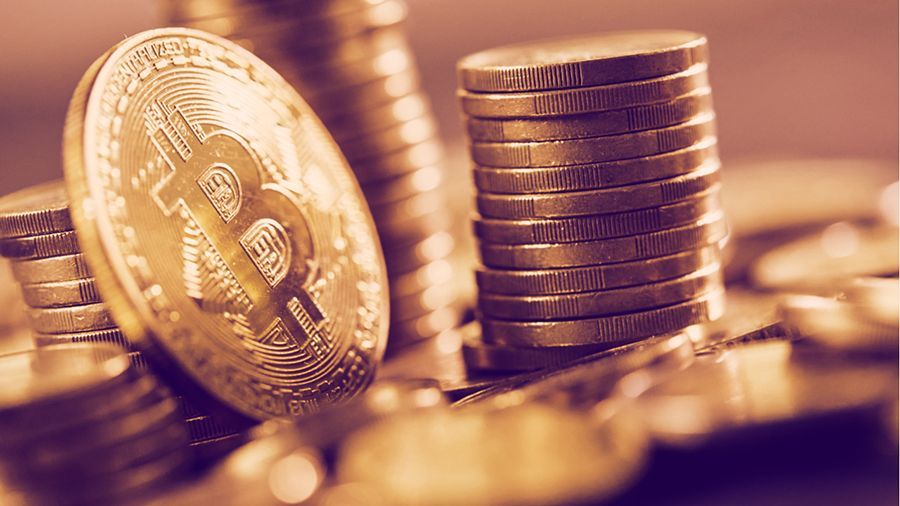
Updates to improve the privacy and scalability of the Bitcoin network – Taproot and Schnorr signatures – are embedded in the Bitcoin Core code. The mechanism for activating updates has not yet been determined.
The privacy and scaling updates of Taproot and Schnorr signatures have been rolled out to Bitcoin Core today, according to version history on GitHub. Once the updates are activated, more complex types of transactions will become easier to use and the privacy of the network will increase.
The update code enablement request was created in September by developer Pieter Wuille and has been tested for over a month. More than 150 developers have reviewed the Taproot proposal code alone. Schnorr Signatures and Taproot, Bitcoin Improvement Proposals (BIPs) 340 and 341 are the two biggest changes to the Bitcoin code since Segregated Witness (SegWit) was activated in 2017.
The mechanism for activating the two BIPs has not yet been determined. Depending on the method chosen, it may take some time before the code is activated. Schnorr signatures are an alternative to the current multisignature mechanism that uses multiple private keys to complete a transaction. Schnorr signatures combine multiple keys into one when making a transaction. This significantly reduces the size of the payment data and helps to relieve the network.
Taproot complements Schnorr signatures and offers a new version of transaction outputs and new options for defining the conditions for spending BTC to users. In some cases, Taproot can even help restore access to lost coins. Schnorr Signatures and Taproot are useful for users with complex spending policies who usually control large amounts, such as cryptocurrency exchanges.
Algorand will provide grants to startups and app developers
16/10/2020
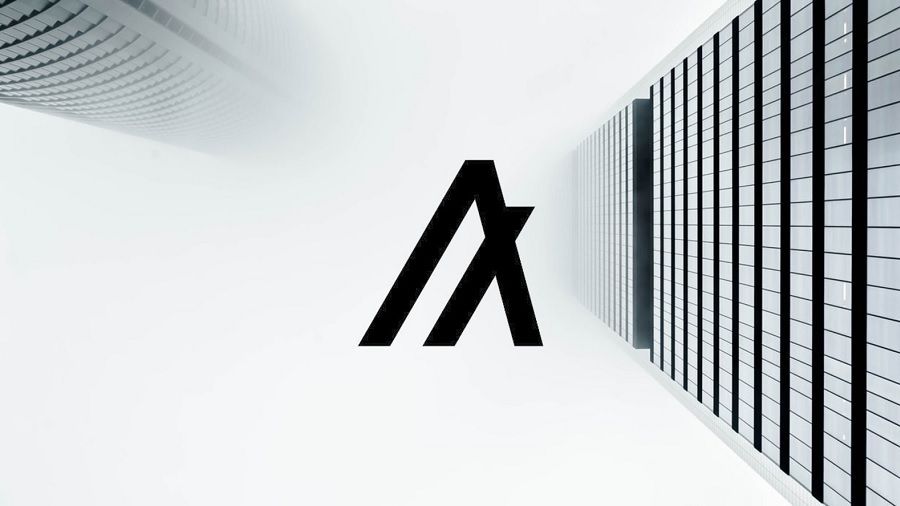
The Algorand Foundation has launched the Algorand Europe Accelerator program, under which it will provide grants to startups and application developers on the Algorand blockchain.
As the name suggests, the program is intended for European companies. The foundation is already accepting applications for a grant, and in general the program will last 12 weeks. Grant funding was provided by Eterna Capital and Borderless Capital. Companies entering the program will receive $ 15,000 each, and the maximum grant is capped at $ 500,000. In addition, additional funding from sponsors is possible.
“Europe is a critical region for Algorand’s growth, and London is a major innovation hub,” said Massimo Morini, chief economist at the Algorand Foundation.
In addition to grants through the accelerator, developers will have access to a “toolbox and resource kit” for building decentralized applications. Also, if necessary, entrepreneurs will be able to get advice on launching the application on the market, additional investments, issuing tokens and other aspects of developing their projects.
In August, Algorand developers added the ability to deploy stateful smart contracts. The function is useful for developers of decentralized applications.
Jeff Garzik’s Company Launches Vesper Platform to Invest in DeFi
16/10/2020

Bloq, led by Jeff Garzik, is releasing a new product for investing in decentralized finance (DeFi) projects through cryptoasset staking.
Bloq’s new platform, Vesper, is marketed as an easy-to-use tool for DeFi products. Through Vesper, users will be able to block ETH, wBTC or USDC for staking from mid-November using one of the “storage pools”.
Bloq co-founder, former Bitcoin Core developer Jeff Garzik, said that after depositing cryptoassets, users can choose the level of staking risk for profit – aggressive or conservative. Among the conservative-risk DeFi protocols, Garzik says, are the well-known Aave and Compound applications. With an aggressive approach, the platform will invest cryptoassets in lesser-known projects.
“We’re all tired of farming and dumping,” Jeff Garzik said at the CoinDesk invest: Ethereum economy conference. “There must be a market to transform these risky and often sloppy investments into more professional operations.”
Vesper will only be offering pools with a conservative staking strategy from mid-November. However, Bloq said it plans to add other investment strategies and crypto assets to the platform in the future. Vesper is backed by its own VSPR token, which will be used to distribute rewards to users and developers.
While the initial investment strategies will be developed by the platform team, Vesper will also offer strategies from developers who can be rewarded in VSPR if their proposal is accepted by the community. The platform will charge users 5% of the profits generated from staking their cryptoassets and 1% for withdrawing money from “storage pools”.
“This is a simple passive income product,” Garzik said. Vesper’s approach is somewhat similar to the strategy followed by ETFs, where the due diligence of an investment product is mainly performed by the issuer, he said.
More and more companies are looking to enter the DeFi industry amid its growing popularity. This week, corporate fintech platform COTI developed a decentralized cryptocurrency market volatility index (cVIX) to help investors assess industry risks.
Ethereum Foundation Developer Introduces Fe Programming Language To Create Smart Contracts
15/10/2020

Ethereum Foundation developer Christoph Burgdorf has introduced a new programming language called “Fe” for creating smart contracts.
Most Ethereum applications today are written in the Solidity language. Providing developers with a wider choice of languages will help develop the Ethereum ecosystem more efficiently.
Fe is a reworked version of the Vyper language that is used to work with the Ethereum Virtual Machine (EVM). Therefore, at the initial stage, the differences between Fe and Vyper will be minimal. In the future, Fe will borrow the syntax of the Rust programming language. The developers explained that the name “Fe” is directly related to the designation of iron in the periodic table. They associate this chemical element with the strength and stable operation of the compiler.
Fe was built to perform the same tasks that Vyper already solves, including more accurate calculation of transaction fees. Over the past month, the developers have accelerated the creation of Fe, so it is likely that by the end of this year it will have all the functions necessary to work with contracts of ERC-20 tokens.
At this stage, it is too early to use the Fe language to create such contracts, but the developers will be ready to demonstrate its capabilities in practice. In the future, Fe will be able to support Ethereum WebAssembly (eWASM) and Optimistic Virtual Machine (OVM), a virtual machine for scaling smart contracts on Ethereum.
Recall that in June, the Algorand and Blockstack projects began joint development of the Clarity language – a new programming language for smart contracts that can provide direct interaction between these networks using different mechanisms: the Proof-of-Stake (PoS) algorithm and the “Proof of transfer” (Proof-of-Transfer, PoX). In addition, a few months ago, Bitcoin Core developer Jeremy Rubin announced the creation of a new smart contract language for Bitcoin that will increase users’ control over their bitcoins.
Jeff Horowitz steps down from Coinbase
15/10/2020

Coinbase officials said Jeff Horowitz, head of corporate governance at Coinbase, is leaving his post. The reasons for his departure are unknown.
Horowitz began his career at Lehman Brothers and Citigroup and took up a senior position at Coinbase in 2018. According to the exchange staff, he made a huge contribution to the establishment and improvement of procedures aimed at combating money laundering and customer identification. Horowitz has also helped Coinbase comply with the Financial Action Task Force (FATF), the Financial Crimes Enforcement Network (FinCEN), the US Treasury Department, and other regulators.
In addition, Horowitz has worked hard to get the American investment bank JPMorgan to partner with Coinbase. Marketplace officials believe that by joining Coinbase as Chief Compliance Officer, Horowitz has taken every possible step to legalize the cryptocurrency industry, which is still in its early stages of development.
The exact reasons for the dismissal were not disclosed, but Horowitz’s colleagues clarified that his departure from Coinbase is not related to the recent announcement of the CEO of the exchange Brian Armstrong (Brian Armstrong). According to Coinbase’s new mission, the exchange refuses to discuss political and social topics unless they are related to the cryptocurrency industry. Armstrong urged his team to focus on solving the main tasks of the platform. Those who disagreed with Coinbase’s new philosophy could leave their jobs and receive compensation. About 5% of Coinbase employees decided to take advantage of this opportunity.
Horowitz previously revealed that Coinbase has begun working with the Gemini, Kraken and Bittrex exchanges to launch a unified user data exchange system in order to comply with FATF requirements.
PwC report: blockchain will drive the global economy by $ 1.76 trillion by 2030
14/10/2020

Blockchain will boost the global economy by $ 1.76 trillion over the next decade, with the greatest economic impact going to be seen in Asia, according to a new report from consultancy PwC.
PwC economists predict that a tipping point will come in 2025 if blockchain is widely deployed around the world. In addition, blockchain applications are expected to drive global gross domestic product (GDP) growth of $ 1.76 trillion (1.4%) by 2030.
Blockchain will have the biggest impact on the Asian economy as China, India and Japan drive technology adoption across the region, according to the report. China could get the highest net profit of $ 440 billion, and the US $ 407 billion. According to analysts, the economies of Germany, Japan, the UK, India and France can expect to grow to $ 50 billion over the same period.
The report identifies five key blockchain applications with economic value potential: product supply chain tracking ($ 962 billion), financial services and payments ($ 433 billion), identity and credential security ($ 224 billion), contracts and dispute resolution ($ 73 billion). , customer acquisition and reward programs ($ 54 billion).
The government, education and healthcare sectors will benefit the most ($ 574 billion) by “capitalizing on the efficiency that blockchain brings to the world of identity and credentials.” A PwC survey found that 61% of CEOs worldwide make digital transformation of their core business operations one of their top three priorities.
“Serious blockchain activities are now affecting industries around the world,” PwC Blockchain Leader Steve Davies said in a report. He also added that the acceleration of the introduction of revolutionary technologies in business is caused by the coronavirus pandemic.
Recall that in the summer, PwC, RFID solutions provider Temera, blockchain company Luxochain and Italian IT firm Var Group created a blockchain-based platform for authenticating luxury goods.
Ethereum 2.0 Developers Successfully Launch Zinken Testnet
14/10/2020

Ethereum 2.0 developers have successfully launched the Zinken testnet and tested the creation of the ETH 2.0 genesis block. Zinken launched after a failed deployment of the Spadina testnet.
According to the developer of Ethereum 2.0. Danny Ryan, today’s launch of the Zinken testnet went smoothly. Zinken is the latest planned “dress rehearsal” for ETH 2.0 testing to create a Genesis Block – the first block in a new chain before the Proof-of-Stake network goes live. Zinken follows the previous Spadina testnet, which launched at the end of September, but ran into problems due to low staking participation and minor customer bugs.
Following today’s successful launch, Ryan said, “the customer development teams are now completing audits and preparing for the mainnet launch.” As with Spadina, the goal of the Zinken testnet is to create a genesis block. To launch the Ethereum 2.0 blockchain on the main network, 16,000 validators and 500,000 ETH are required on the deposit. These targets have been lowered for the Spadina and Zinken testnets for practical reasons.
Together with the Medalla testnet, which aims to replicate a fully functioning Ethereum blockchain, Zinken represents the efforts of developers to prepare the blockchain for the transition to a proof of stake (PoS) algorithm. After the upgrade, the throughput of the blockchain will grow to 100,000 transactions per second.
As of September 28, Medalla’s testnet has attracted 60,000 validators who have blocked 2 million test ETHs for staking. These numbers have since grown to 75,000 validators and 2.4 million test ETH, Ryan said. Developers are already creating tools for the future web. For example, Prysmatic Labs today announced a web interface for its Prysm Eth2 client.
While the Zinken testnet will run for a few more days, it has already completed its task, as Ryan said:
“The creation of the genesis block was successful. This was our main goal. ”
As a reminder, the developers plan to launch Ethereum 2.0 on the mainnet next month.
Three ATMs with BTC purchase function appeared at Tesla’s gigafactories
13/10/2020

Crypto ATM operator LibertyX stated that devices with the BTC purchase function appeared at three Tesla enterprises. However, Elon Musk doubted this information.
Fold payments platform CEO Will Reeves tweeted Saturday that Tesla’s gigafactory has a cryptomat. However, Tesla CEO Elon Musk questioned this statement.
“I think this is inaccurate information,” Musk tweeted.
Soon, the ATM operator, LibertyX, confirmed the launch of three ATMs at three Tesla gigafactories in the United States. The confusion seems to have arisen due to the fact that the ATMs in question were not originally specialized devices for buying and selling cryptocurrencies.
Until recently, these were ordinary ATMs, according to a LibertyX employee. Once installed, ATMs can be upgraded to support additional features such as buying bitcoins.
“Yes it’s true. We have upgraded three conventional ATMs to buy bitcoins through them. They are only available to employees, and may be available to visitors when the gigafactories reopen for excursions, “LibertyX_Chris wrote on Reddit.
Now you can buy BTC through the device with a commission of 8%. For now, only the purchase option is available, but this may change in the future. “Hopefully we will soon announce the addition of the BTC sale option,” added a LibertyX employee.
According to LibertyX CEO Chris Yim, the ATM upgrade took place just a few months ago. This may explain why Musk is not aware of the situation. LibertyX tweets:
“Elon, 0.25 BTC is too little (Ed. – Musk previously stated that he owns only 0.25 BTC). Now you can buy bitcoins from three ATMs at gigafactories, you don’t even need to leave your office. ”
At the beginning of the year, Elon Musk said that he did not consider himself an adherent of cryptocurrencies, however, he recognized the thoughtfulness of the White Paper of Bitcoin.
Google Trends: Interest in Bitcoin and DeFi Industry Falls
13/10/2020

According to Google Trends, users have become less interested in Bitcoin and the decentralized finance (DeFi) industry. Often, a drop in the number of search queries correlates with a drop in prices.
Google Trends tracks the number of searches for different words, assigning each a numeric value that indicates its popularity. Google Trends data gives a rough idea of the world’s interest in various aspects of the cryptocurrency market.
In the first week of September, Google Trends rated Bitcoin 51 out of 100, while in mid-May, before the halving of the mining reward, this figure was 100. When the price of bitcoin dropped in early September, user interest fell to 41.
As for DeFi, according to Google Trends, user interest and searches peaked at the end of March, when the price of Bitcoin fell to its lowest level this year. Interest dropped in the following months, although the DeFi markets grew rapidly.
However, in the first week of September, users again became interested in decentralized finance and the DeFi rating rose to 99 out of 100. But as of the first half of October, this figure dropped again to 65.
As interest in Bitcoin remains relatively stable, one would expect interest in Ethereum to grow, as most DeFi projects are powered by it. It really increased, but not significantly – by 11% since the beginning of the year.
Recently, Coindesk experts analyzed the statistics of Google Trends and came to the conclusion that despite the rapid growth of decentralized finance, retail investors show little interest in this area compared to the ICO boom three years ago.
Ethereum Miners Disapprove New Fee Model in EIP 1559
12/10/2020

According to the survey, Ethereum miners are disapproving of the Ethereum Improvement Proposal (EIP) 1559, put forward by leading network developers, aimed at introducing a new fee model.
Eight of the nine mining projects that participated in the EIP 1559 community survey responded negatively to the proposal. At the same time, seven out of nine respondents said they would refuse to implement EIP if it is included in a future hard fork.
Developers began discussing the proposal in the summer when online transaction fees soared. EIP 1559 aims to address problems with the current transaction fee model that forces users to pay more than necessary. EIP 1559’s proposed fee structure autonomously adapts to network requirements and allows users to pay only the fees they actually need to complete a transaction.
The survey involved 25 Ethereum projects, most of which chose to remain anonymous, said ConsenSys product manager and survey creator Tim Beiko. According to him, exchanges or wallets did not participate in the survey. In general, 42% of the respondents gave a positive or negative assessment of the proposal, the rest of the respondents remained neutral or did not express their position.
EIP 1559 was first proposed by Vitalik Buterin in 2018. The main idea of the proposal is that it will make the commission market more predictable and reduce network congestion. EIP 1559 does not promise lower transaction fees. Miners will still be making profits under the new model, but they will be limited compared to the current setup. This will add a deflationary mechanism to the Ethereum network.
However, the concerns of miners are understandable. Recall that they earned $ 166 million in commissions in September – a record amount in the entire history of Ethereum. The boom in the DeFi market has been a major driver of miner revenue growth.
At the moment, the developers are still considering the EIP. They will not include it in the update until after the Berlin hard fork, which was suspended in July, is completed. In addition, developers have raised concerns about the EIP 1559 itself in terms of its effectiveness and changes in developer tools. Some Ethereum clients, like Nethermind and Besu, have started rolling out EIP on testnets. But other clients, including Geth and OpenEthereum, are awaiting the final specification before launching EIP on the testnet.
Recall that in September, Ethereum co-founder Vitalik Buterin proposed to triple the cost of smart contracts that update the state of the network to solve the problem of exponential growth of fees.
DappRadar: Ethereum accounts for 96% of transactions in the DeFi industry
12/10/2020
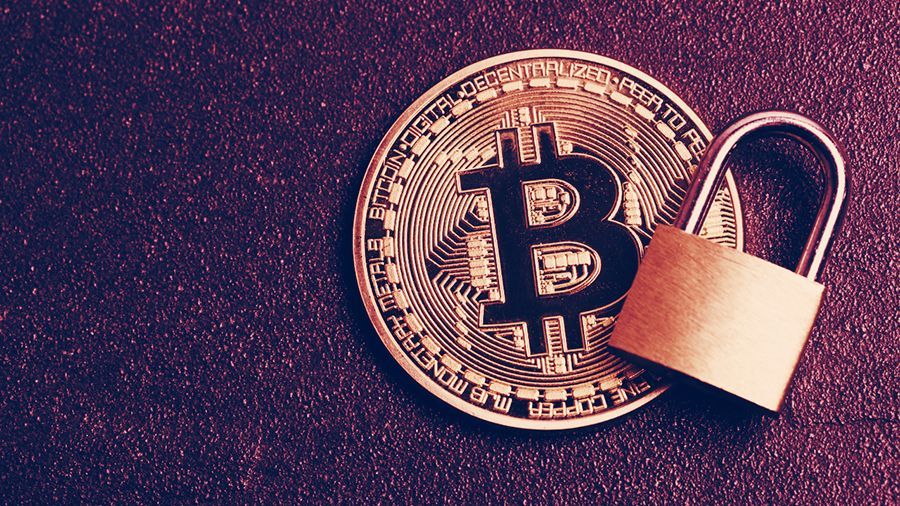
According to DappRadar’s Q3 2020 report, 96% of total DeFi transactions came from Ethereum. DeFi user activity has increased due to “profitable farming”.
The DappRadar team has released a Q3 report on DeFi performance. According to the report, over the past three months, the volume of transactions in the industry has reached $ 125 billion, which is $ 113 billion more than in the second quarter. At the same time, 96% of the total volume of transactions fell on Ethereum.
According to DappRadar, the total value of cryptoassets blocked in Ethereum smart contracts has exceeded $ 10 billion, with Uniswap, MakerDAO and Curve leading in this indicator. The total dollar value of crypto assets blocked in DeFi is $ 10.82 billion.
Ethereum also leads in terms of the daily number of active wallets – over 57% of the total. The similar figure for Tron in the third quarter is 35%, and EOS – 5%. The researchers note that the largest contributions to the Ethereum protocol came from Uniswap, Sushiswap, Balancer, and Compound, which accounted for 56% of Ethereum’s active wallets on a daily basis.
DeFi projects on EOS grew in popularity in Q3. Defibox, Dmd.Finance and the DeFis Network had over 4,300 active wallets daily. That said, decentralized apps on Tron, including JUST, Zethyr Finance, Sun and SharkTron, had 32,000 wallets.
DeFi’s explosive growth is rooted in the yield farming strategy that has gained popularity thanks to the Compound lending protocol, the researchers note. In the first half of June alone, Compound’s transaction volume totaled $ 4 billion.
The rise of the decentralized exchanges Uniswap and SushiSwap has resulted in billions of dollars worth of crypto assets on the DeFi market. In September, Uniswap generated $ 33 billion in transactions (60% of total DeFi transactions) when it issued a token to manage the UNI protocol.
In the third quarter, DeFi decentralized applications brought in about $ 59 million to their creators. Most of this revenue – $ 33 million – came from Uniswap. XReg recently said that the EU cryptocurrency regulation bill poses risks to the DeFi industry due to the registration requirements for issuers of cryptoassets.
Fidelity, Circle and MakerDAO: “stablecoins will increase the efficiency of enterprises”
09/10/2020
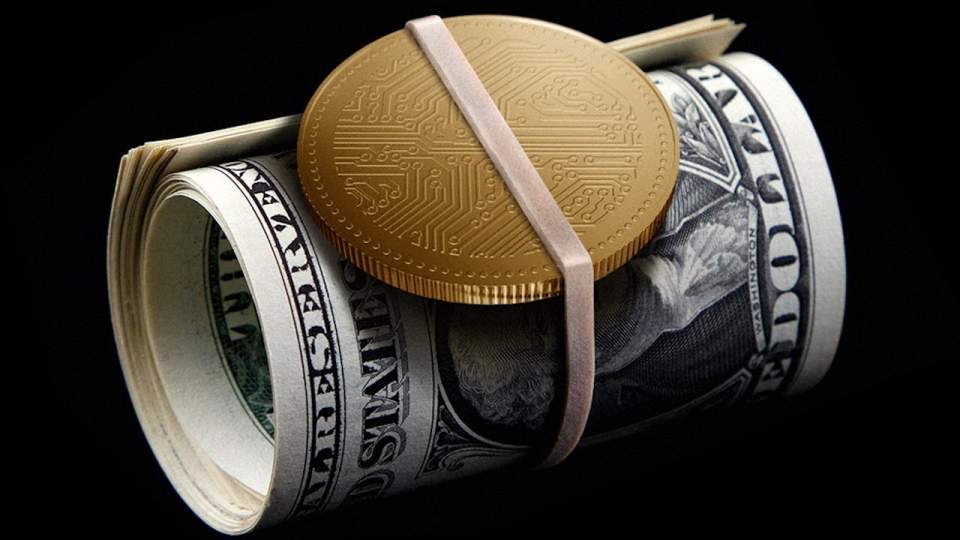
According to project leaders at Fidelity Labs, Circle, and MakerDAO, dollar stablecoins are attracting new users to the cryptocurrency market and improving organizations.
They announced this at the Blockchain Summit in Los Angeles, discussing the possibilities and prospects of stable cryptocurrencies. Raghav Chawla, director of product development at Fidelity Labs, believes that stablecoins pegged to fiat currencies simplify transactions for ordinary users and large enterprises, eliminating the need to go to banks or other intermediaries. According to Chawla, people consider the national currency to be a reliable store of value, so they trust more stablecoins backed by fiat currencies, as their rate is more stable compared to decentralized cryptocurrencies.
According to Joao Reginatto, Head of Product Development at Circle, the launch of the USDC stablecoin in 2018 boosted the flow of new users into the cryptocurrency industry by providing protection against crypto asset volatility. In turn, the head of business development of the Maker Foundation Greg Di Prisco said that MakerDAO began to interact with the Center consortium in order to “lure” more users to stablecoins. At the same time, Center focuses on converting fiat currencies to stablecoins, while MakerDAO focuses on cryptocurrency loans.
Reginatto emphasized that stablecoins are increasingly being used for commercial settlements, B2B payments and international transfers. However, stable cryptocurrencies still have a lot of untapped potential, so it is necessary to look for new options for their use in business. According to Reginatto, stablecoins can improve the efficiency of interaction between organizations, but in the coming years they may face serious rivals – state cryptocurrencies from central banks.
Last month, the European Central Bank (ECB) proposed not to use the term “stablecoin” for cryptoassets backed by fiat currencies, as it considers them not safe enough for investors. In addition, the ECB recently announced four conditions for the launch of the state cryptocurrency and has already applied for the registration of the “digital euro” trademark.
BMW to Launch Blockchain Apps to Distribute Rewards to Customers
09/10/2020

BMW Korea to Launch Blockchain Bonus Program in South Korea. Users will be rewarded for purchases and will be able to use points to access events and discounts.
According to the Korea Herald, the Korean subsidiary of German automaker BMW will soon launch a blockchain-based bonus program in the country. The BMW Vantage Rewards Program will allow customers to accumulate Reward Points and use them to pay for products or receive discounts on services offered by the program.
First-time customers buying BMW models can earn between 300,000 and 900,000 points per purchase. Those who buy used BMW vehicles are also eligible for bonus points based on the market value of those vehicles.
Users will be able to earn membership points through the game and other social features on the automaker’s mobile app. Program members can use points to receive discounts on scheduled vehicle maintenance and other services provided by BMW partner companies.
In addition, “high level” users will also be able to receive invitations to events organized by the company. BMW Korea notes that while the Vantage app will initially only be available in South Korea, the program will subsequently be rolled out globally. The company says it is currently testing the app and will launch before the end of this year.
The blockchain app launch is not BMW’s first technology-related initiative. Last month, it was revealed that BMW and VeChain are creating a blockchain platform to track vehicle information. In addition, BMW was testing blockchain to improve vehicle mileage tracking in collaboration with DOVU back in 2018.
Last spring, the company partnered with blockchain startup accelerator Tribe, and announced plans to launch PartChain, a platform for tracking auto parts shipments.
DAI stablecoin support added to Bitcoin RSK sidechain
08/10/2020

The developers of IOV Labs, who launched the RSK Bitcoin sidechain, announced the possibility of using the DAI stablecoin from the Ethereum blockchain.
The integration will allow the transfer of DAI coins from Ethereum to the RSK sidechain so that they can be used in the Bitcoin-based decentralized financial ecosystem. For this, a mechanism developed by the RSK Infrastructure Framework (RIF) team is used, which serves as a “bridge” for the transfer of Ethereum-based tokens. This bridge blocks coins on the Ethereum blockchain and generates an equivalent amount in RSK, thus enabling decentralized pegging through smart contracts.
IOVLabs said the audit was conducted by Trail of Bits and the Maker Foundation’s integration specialists. The trading pairs for RSK DAI (rDAI) were created based on RSK Swap, a fork of the Uniswap protocol.
IOVLabs CEO Diego Gutierrez explained that rDAI was created as an alternative digital asset, with which transactions will cost much less, and this will help avoid congestion on the Ethereum network. Ethereum’s high gas cost and lack of scalability are hindering the adoption of DAI in the retail market, Gutierrez said. In particular, we are talking about traders who do not receive the desired services in traditional markets and are interested in conducting transactions for small amounts with low commissions.
Gutierrez said that, thanks to merged mining, using DAI on the RSK sidechain will be as secure as it is on the Bitcoin blockchain. In addition, transaction fees will be 50 times lower than current fees on the Ethereum blockchain.
IOV Labs is positioning RSK as a Bitcoin-based decentralized finance platform. In February, IOV Labs launched a tool that allows RSK and Ethereum-based cryptoassets to be transferred between Bitcoin and Ethereum blockchains, including Ether and ERC-20 tokens. The firm announced last week that it will partner with Grupo Sabra to create an Extrimian platform for developing enterprise decentralized blockchain solutions.
Chainalysis ranks BitMEX as a high-risk exchange
08/10/2020

Due to the allegations made by the US government against the cryptocurrency derivatives exchange BitMEX, the analytical company Chainalysis has ranked it as a high-risk platform.
On October 5, Chainalysis contacted its clients, which include government agencies, banks and marketplaces. According to the Chainalysis notice, from October 1, 2020, all trades using this exchange will be considered high risk. Customers using the Chainalysis KYT solution to track suspicious transactions will see alerts in the system. The KYT tool can also mark older trades made on BitMEX with the corresponding icons.
Such changes could adversely affect the willingness of regulated entities to interact with BitMEX. The general director of the fintech company LMAX Group, David Mercer, called this situation a “domino effect”, which worked against the backdrop of the exchange’s proceedings with American regulators.
Recall that on October 1, the US Commodity Futures Trading Commission (CFTC) filed a lawsuit against the BitMEX exchange and its owners, accusing them of illegal activities in the United States and willful violation of KYC and AML rules. Despite the fact that executives of parent company HDR Global Trading deny these allegations, users managed to withdraw more than 32,000 BTC from the exchange within 24 hours after news of the CFTC allegations.
“Clients can define their own risk limits. However, in order to protect users, we must notify them that if any organization, its owners or operators are charged with committing criminal offenses, it becomes extremely dangerous to operate such a site, ”says Chainalysis.
HDR Global Trading executives are aware of this situation and are in talks with Chainalysis and BitMEX continues to operate as usual. According to a BitMEX spokesperson, the custom assets are safe and the withdrawals are made according to the usual schedule.
The new version of the hidden mining program Monero Black-T learned to steal passwords
07/10/2020

A new version of the Black-T Monero stealth mining malware can steal sensitive user data and disable other cryptojacking programs.
According to a report from cybersecurity firm Unit 42, hackers have updated Black-T, a long-standing malware for stealthy Monero mining, which can now steal user credentials and disable any other mining software on the victim’s computer.
Black-T is now capable of detecting sensitive information about a user residing on a computer and sending it to hackers who can use it for further attacks. This data includes, for example, passwords and bank account data. Black-T uses a tool called Mimikatz to extract unencrypted passwords from Windows systems. The tool also allows attackers to intercept user sessions, for example, interrupting computer use when the user is active.
“Of these new Black-T techniques and tactics, the most notable is the detection and termination of previously unknown cryptojacking programs,” said Unit 42 researcher Nathaniel Quist.
If Black-T gets on a computer that already has mining malware installed, it automatically attacks those files, disables them, and then installs its own cryptojacking program. This allows Black-T to fully exploit the computing power of the computer, providing maximum benefit to the hacker. Quist said the Black-T team will likely keep rolling out updates.
“Unit 42 believes TeamTnT hackers are planning to incorporate more sophisticated cryptojacking functionality into their toolkits – especially for identifying vulnerable systems across various cloud infrastructures,” Quist said.
Hackers who distribute cryptojacking programs most often choose Monero for hidden mining due to its anonymity. Last month, Tencent’s cyber security division discovered a new miner virus called MrbMiner. The virus infects Microsoft SQL servers for Monero mining.
In addition, in August, computer security experts from Guardicore Labs announced the discovery of a new botnet, FritzFrog, that scans addresses and hacks into servers for Monero mining.
Sale of cryptocurrency derivatives to retail investors is prohibited in the UK
07/10/2020
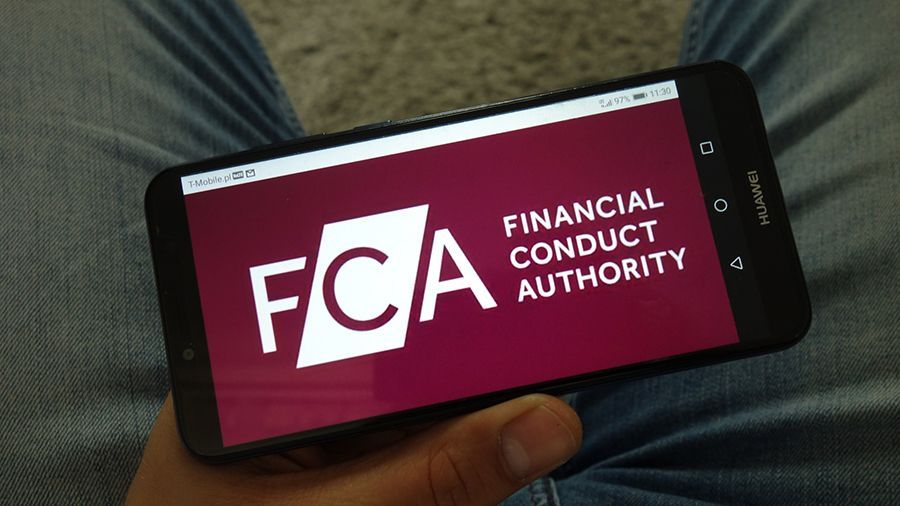
The UK Financial Conduct Authority (FCA) has published final rules prohibiting the sale of cryptocurrency derivatives to retail investors.
These products are not suitable for retail investors due to the harm they cause, according to a statement on the UK regulator’s website. FCA believes that these products cannot be judged correctly by retail consumers for the following reasons:
Inherent properties of underlying assets that do not allow them to be reliably measured;
The prevalence of market abuse and financial crimes in the secondary market, such as theft of crypto assets;
Extreme volatility in crypto asset prices;
Inadequate understanding of the nature of cryptoassets by retail investors;
Lack of a legal need for investment in these products by retail consumers.
FCA believes retail investors could suffer sudden losses if they invest in cryptocurrency derivatives. As the agency says, unregulated transferable cryptoassets are tokens that do not represent “statutory investments” or electronic money and can be traded. FCA mentions BTC, ETH and XRP among examples of such assets.
The regulator has adopted rules prohibiting the sale, marketing and distribution to retail consumers of any cryptocurrency derivatives, including Contracts for Difference (CFDs), Options, Futures and Exchange Traded Notes (ETNs), which are tied to unregulated transferable cryptoassets by companies operating in the UK.
The FCA estimates that retail consumers will save around £ 53 million after banning access to such products. FCA Acting Executive Director of Strategy and Competition, Sheldon Mills, said:
“This ban reflects how seriously we consider the potential harm to retail investors from these products. Consumer protection is paramount. Significant price volatility, coupled with the difficulty of reliably valuing cryptoassets, puts retail investors at high risk of losing money from trading cryptocurrency derivatives. We have evidence that this is a massive problem. The ban will provide the necessary level of consumer protection ”.
The ban will come into effect on January 6, 2021. UK consumers must continue to report cryptocurrency derivatives scams to the FCA. Cryptocurrency companies are now unable to offer investment in such products to retail consumers in the UK.
In August, the FCA said it could oblige cryptocurrency firms and exchanges to provide additional reporting on possible money laundering risks.
Research: 43% of enterprise blockchains are deployed in finance
06/10/2020

A Cambridge University report on enterprise blockchains found that 43% of projects in production are carried out in financial companies.
The University of Cambridge published the results of the second enterprise blockchain comparative study, which collected data from surveys of more than 200 enterprises, startups, central banks and other public sector institutions in 59 countries from July 2018 to June 2019.
One of the sections of the survey was devoted to corporate projects on the blockchain. After analyzing 67 operating networks, the researchers concluded that in 43% of cases, blockchains are used in financial projects, for example, for clearing and reconciling records.
At the same time, the researchers found that most projects are developed for a long time. On average, it takes about 25 months from proof of concept to deployment, and larger networks can take more than four years to build.
Enterprise blockchains are much more centralized than their open counterparts. This means that instead of thousands of anonymous nodes and miners securing the blockchain, one or more nodes agree on the content of the new blocks and the existing chain.
Managed blockchains, which provide greater control over networks and a high level of privacy, are important in industries where data is trade secret. However, this raises concerns that centralization would allow leading organizations to gain an unfair advantage and potentially block others from accessing aggregated results.
Cambridge researchers found that over 80% of enterprise projects used only one blockchain deployment service to run nodes and mine. 48% of the reviewed projects are based on the IBM Hyperledger Fabric blockchain, and 15% are based on R3’s Corda.
According to the report, market leaders have developed over 70% of enterprise blockchain projects in the hope that other companies in their industry will join them. Industry consortia have deployed 22% of enterprise blockchains, with just over 5% being created by government agencies. Working under the auspices of market leaders allows some corporate networks to grow at a faster pace, but they may struggle to attract competitors to their platform.
In addition to the financial sector, blockchain is often used to track supply chains. Austrian gin maker Stin recently said it intends to use NFC technology and ICON blockchain for bottle tracking and supply chain transparency. In addition, in August, the USDA announced that it will track the supply of organic products using the blockchain.
User lost $ 140,000 in UNI tokens while farming in the UniCats project
06/10/2020
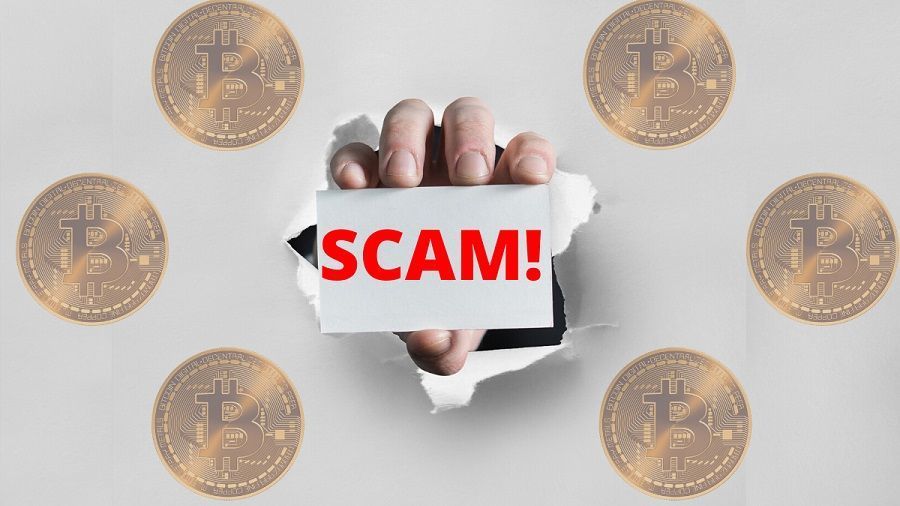
One of the users of the fraudulent project UniCats lost $ 140,000 in UNI tokens invested in it for farming.
The UniCats developers have implemented a defect in the smart contract to control tokens even after their withdrawal. This was announced by Alex Manuskin, a researcher from the ZenGo cryptocurrency wallet team.
To start using the UniCats platform, the user is required to have permission to spend an unlimited number of tokens. Considering that many decentralized finance (DeFi) projects have similar requirements, the user accepted these conditions. After farming a certain amount of MEOW tokens, he pulled UNI out of the pool. It was later revealed that the UniCats developers had incorporated a “workaround” into the smart contract that allowed them to manage tokens even if they were withdrawn from the platform.
“The user did not even suspect that having received permission to spend an unlimited number of assets, the contract can use them at any time. This is possible even if the user has withdrawn the tokens from the profitable farming scheme, ”said ZenGo researcher Manuskin.
Thanks to a loophole in the smart contract, the creator of UniCats managed to intercept the user’s tokens by making two transactions for 26,000 UNI and 10,000 UNI for the amount of $ 94,000 and $ 38,000. Then the attackers exchanged the received tokens for 416 WETH. Thus, the scammers received at least $ 50,000 from other victims. The exact amount of damage to users is not easy to determine, given that the withdrawal of cryptoassets was made using separate transactions.
Manuskin said that this is the first time he has encountered this type of attack used in farming pools. The researcher cited as an example the situation with the Bancor protocol, when, due to a vulnerability in a new version of a smart contract, users lost BNT tokens worth more than $ 100,000. Contract. To cover their tracks, the scammers created an additional contract for each victim, and used the Tornado Cash cryptocurrency mixer to launder stolen tokens to make it more difficult for analytical companies to track the funds.
In order to avoid such losses, users need to study the terms of the smart contract, give permissions only to those crypto assets that they want to spend and do not forget to revoke such access. The crux of the problem is that users give permission to spend unlimited amounts, which is often found in popular decentralized applications. However, applications should only ask for permission to spend the required amounts, even if this is not very user-friendly. In turn, cryptocurrency wallets must notify users that they allow all current and future tokens to be used.
According to CoinGecko, 40% of DeFi pharming participants are not able to independently assess the risks of smart contracts and rely on auditors, which is why they are at great risk.
How to buy cryptocurrency correctly and safely? 3 ways
05/10/2020

You can buy bitcoin and altcoins through exchangers, on exchanges and from other people, these are the most popular options. We talk about each of them and about the risks that can lead to the loss of all money
You can buy cryptocurrency in different ways. Exchanges, exchangers and other services are suitable for these purposes. But the market is changing, new opportunities appear for working with digital assets, and the risky sides of the old ones are revealed.
“Сhange bureau”
The most common way to buy cryptocurrency is through exchangers. These are special services where you can exchange most of the popular coins for fiat money in various options. For example, purchase digital assets using bank cards, through payment systems, cash using ATMs, or transfer funds using a phone number.
Exchangers work as follows.
- You choose the asset you want to buy and the payment method
- Indicate the amount for which you want to buy cryptocurrency
- Indicate the address of the wallet where the cryptocurrency will go. This can be a wallet on an exchange, a cold wallet, etc.
- Confirm purchase request
- Transfer funds to the address offered by the exchanger
On many services, after payment, you need to click the “I paid” button. If this is not done, the service will not transfer your cryptocurrency
Exchangers charge commissions for their services. Their size is always different, differs from service to service and depends on the payment method chosen by the user. In addition to this, exchangers always have different rates. To find the most profitable option, you can use special aggregators. On them, you can sort exchangers by the best offers, as well as by reviews.
When using exchangers, in order not to lose funds, it is important to follow a few rules. First, always start working with an unfamiliar service with a small amount to make sure it is working properly and check for fraud. Secondly, send exactly the amount of funds indicated in the exchange request. Otherwise, the service will not recognize the transaction and it will hang. If this happens, the only solution is to contact the service support.
Thirdly, it is extremely important to check the reserves of the exchanger, their value is indicated for each asset separately on the service website. Reserves mean the amount of rubles or cryptocurrency that the exchanger has in stock. If you place an application for an amount that exceeds the amount of the reserve, the service will have nothing to transfer your cryptocurrency from, and the transaction will freeze. In this case, you should also communicate in support.
When using exchangers and exchanges to buy digital assets, there is always a risk of getting “dirty” cryptocurrency related to illegal activities, warned Nikita Zuborev, senior analyst at Bestchange.ru. This is especially true for small exchange offices. They may not have enough resources to properly and promptly check the coins sold, sometimes their purity “no one checks in any way.”
If we talk about the segment of exchange offices, then the risk of getting tokens seen in criminal schemes in a large exchanger is comparable to the risk of getting those from a cryptocurrency exchange. All of these organizations verify the purity of assets to a certain extent and comply with all anti-money laundering and anti-terrorist financing procedures for any suspicious transactions.
Exchanges
Now you can buy cryptocurrency with a bank card on most major cryptocurrency exchanges. But payment methods in this case, as a rule, are much less when compared with exchangers. There are also advantages – it is safer to purchase digital assets on trading platforms, especially large ones, as the risk of using the services of fraudsters is reduced.
At the same time, you can lose part of your capital on commissions. Their size on exchanges can be significantly higher than those set by exchangers. Reason: most trading platforms do not sell cryptocurrency directly, but through other services. In other words, the user transfers money to a third-party company, it makes an exchange with the exchange, and then the latter credits the user with coins. In this case, a double commission may be charged, so you should carefully check the terms of the deal.
Another advantage of exchanges over exchangers is that the purchased cryptocurrency can be immediately used for trading or other purposes. For example, exchange for many other coins to build an investment portfolio. However, it is not safe to store funds on trading floors. If there is a risk that the exchange will go bankrupt or be hacked by hackers, as happened with KuCoin. Therefore, the hope is to keep digital assets in cold wallets.
Other ways to buy
Apart from exchanges and exchanges, there are several other options for buying cryptocurrencies. For example, exchange offices operating on the p2p principle – from person to person, are very popular. On such platforms, the user leaves an application to buy or sell assets for a certain amount. When a counterparty is found, they exchange, and the platform acts as a guarantor that one will not deceive the other.
This method has several disadvantages. There are not always enough bids to buy or sell cryptocurrency. Sometimes you have to wait until a great offer appears. Also, p2p platforms are inferior to exchangers in terms of the number of payment methods, and there is a risk of buying dirty assets.
Less popular methods include buying cryptocurrency through cryptomats (analogs of ATMs, but with cryptocurrency) and directly from another person for cash. In the first case, the problem is the low number of such devices. According to the cryptocoinmap.ru card, there are only 7 crypto ATMs in Moscow. In the second case, there is a high risk of losing funds. The counterparty can sell coins at an overvalued rate, disappear when receiving money, appropriate them for himself, citing a technical error, or cheat in any other way.
Coinbase will share some customer data with UK Internal Revenue Service
05/10/2020
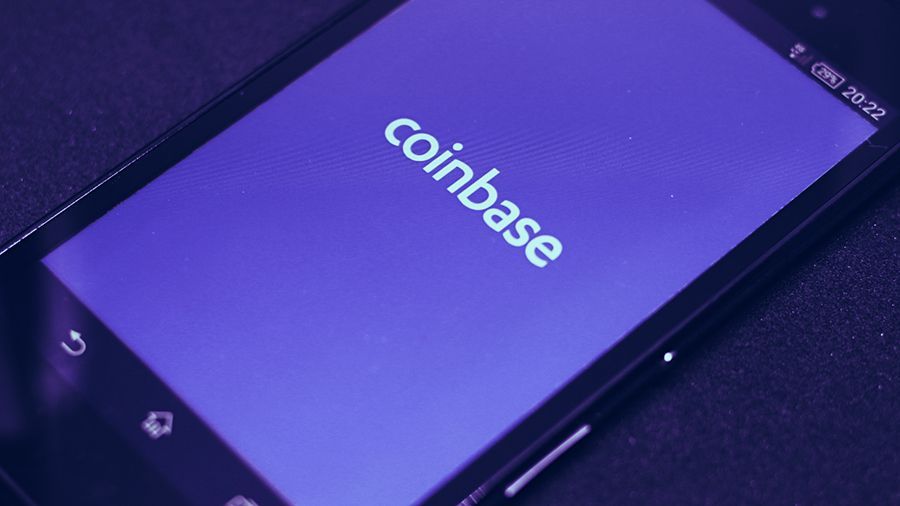
Cryptocurrency exchange Coinbase will provide UK tax authorities with data on its customers who have received over £ 5,000 worth of crypto assets over the past year.
According to an email from Coinbase, the exchange will transfer its UK customer data to the UK’s Royal Revenue Service (HMRC). In this case, information will be transferred only about those customers who have purchased or deposited cryptoassets worth more than £ 5,000 (about $ 6,474) into their Coinbase account in the last year.
HMRC originally required Coinbase to provide certain UK customer records to the exchange between 2017 and 2019. However, after discussions with the tax authority, the requirement was changed, and now it only affects some users of the platform. The letter from Coinbase notes:
“Following further discussions with HMRC, an amended notice has been issued that requires disclosure of UK citizens who have received over £ 5,000 in crypto assets from Coinbase in 2019/2020. This includes both purchases and credits of cryptoassets to your Coinbase account. ”

Last year, HMRC sent out emails requesting customer lists and transaction information to at least three exchanges doing business in the UK – Coinbase, eToro and CEX.IO. Apparently, Coinbase was able, through negotiations with HMRC, to reduce the amount of information provided to the tax authority, and to limit itself to customers who received large amounts of cryptocurrencies.
UK citizens are required to pay Capital Gains Tax on cryptocurrency income. Any information that HMRC receives is likely to be used to verify the accuracy of individuals’ tax records. As a reminder, the IRS exempted crypto assets from stamp duties last year.
An anonymous researcher accused Ethereum miners in manipulating transactions for arbitrage on DeFi
02/09/2020
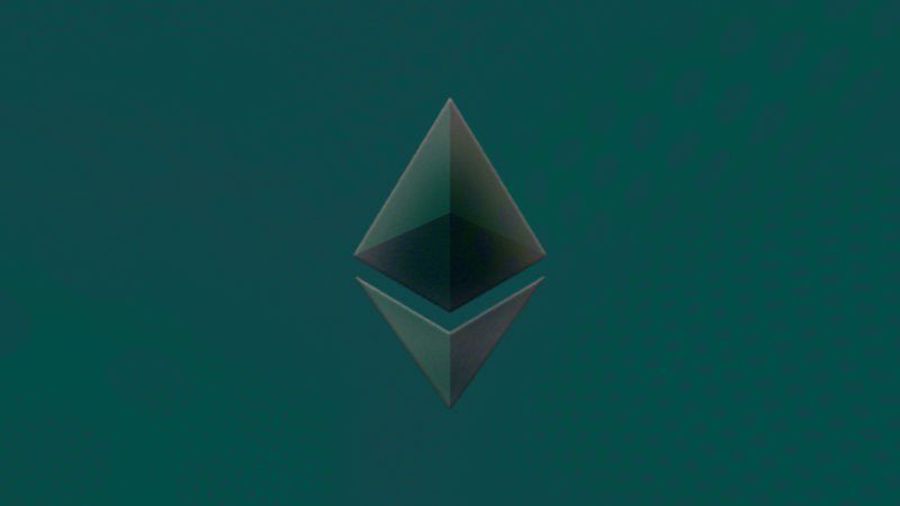
An anonymous researcher under the pseudonym Frank Topbottom accuses Ethereum miners of arbitrarily including transactions in blocks to manipulate transactions in DeFi.
The researcher believes that with the development of the decentralized finance (DeFi) industry, the likelihood of manipulating data on the blockchain for profit only increases. This can be explained by the fact that miners are free to decide which transactions they can process and in what order. This practice is called “miner extractable value” (MEV).
Frank Topbottom noticed a number of suspicious transactions added by the SparkPool and F2Pool mining pools. Despite the small fees for these transactions compared to other transactions, they ranked first in the blocks. It is noteworthy that such transactions were sent from specific addresses.
The researcher also reported that MEV practices are most common in small pools such as 2Miners, Minerall Pool and EzilPool, which account for about 2% of the network’s total hashrate. Frank Topbottom gave an example of a dubious transaction with multiple MEV signs.
First, the processing fee was almost zero – only 2 Wei (1 Gwei is equal to 1 billion Wei). Wei is the smallest component of the broadcast. A transaction with such a commission would hardly have been confirmed, but in this case, its processing took only 17 seconds. Secondly, the transaction was made for the purpose of arbitrage trading. The sender could have made $ 70 on a $ 2,800 trade. Given the current gas price, such a deal would not be profitable, and arbitrage traders would ignore the opportunity. The “culprit” of the transaction is unknown, but he would not have been able to complete it without the assistance of the miners.
According to the researcher, thanks to the ability to change the order of transactions at will, miners can stay ahead of any other DeFi users. Miners can abuse their powers to outperform other traders in arbitrage trading, auctions, and token offerings. There are fears that miners will start submitting their own bids with zero commission and block legitimate bidders. On the other hand, this is unlikely, as miners will have to take concerted action over a long period of time.
A more realistic scenario is competition between miners for a highly profitable MEV. In this case, they will have the motivation in short-term blockchain forks to “steal the trophy” from other miners. It can be bad for regular users if they see their transactions being removed from the chain after confirmation.
Frank Topbottom believes that stopping miners from extracting value from DeFi is extremely difficult because their actions are consistent with the rules of consensus. Moreover, these manipulations can be performed not only by miners, but also by stakers in Ethereum 2.0, if the blockchain architecture remains the same. The researcher proposed to solve this problem with the help of the MEV auction, where the rules of conduct for miners will be specified and the “rights sale” will be carried out to change the transaction queue at will.
Recall that in September, Ethereum miners earned $ 166 million in commissions, this is a record figure in the entire history of Ethereum. The main factor behind the growth of miners’ income was the increase in trading activity in DeFi projects.
SingularityNET Project Plans To Move From Ethereum To Cardano Blockchain
02/10/2020

Ethereum-based SingularityNET AI platform developers are discussing with IOHK the possibility of moving to the Cardano blockchain.
SingularityNET allows you to create, host and monetize services using artificial intelligence, while being scalable. In recent months, the load on the Ethereum blockchain has increased dramatically, resulting in higher fees. Therefore, the platform developers are seriously considering moving to the Cardano network. Moreover, according to the creators of SingularityNET, they do not have much confidence in Ethereum 2.0’s prospects for solving problems.
“Current problems with speed and fees on the Ethereum network have made it urgent to find alternatives to support SingularityNET. Moving to modern blockchains like Cardano is a clear path to achieving speed and scalability. The launch of a gateway for exchanging cryptocurrencies for fiat money will allow end users not to work with cryptocurrencies, ”said Ben Goertzel, CEO and founder of the SingularityNET Foundation.
If the transition to Cardano is approved, then SingularityNET will have to exchange AGI ERC20 tokens for Cardano network tokens. In addition, developers will have to abandon the popular programming language of decentralized applications Solidity – smart contracts in the Plutus language are supported on the Cardano network. However, the Solidity language has its drawbacks.
The SingularityNET Foundation CEO believes that the ideal option for a project is to use multiple blockchains, so leaving Ethereum might not be complete.
“If it turns out that everything works much better on the Cardano network, then everyone should use this particular blockchain. If Ethereum is more suitable for some part of the tasks, then so be it, right? ”- said the founder of Cardano Charles Hoskinson.
Last year, Cisco and SingularityNET joined forces to develop blockchain-based “strong artificial intelligence” (AGI).
Ripple plans to achieve carbon neutrality by 2030
01/10/2020
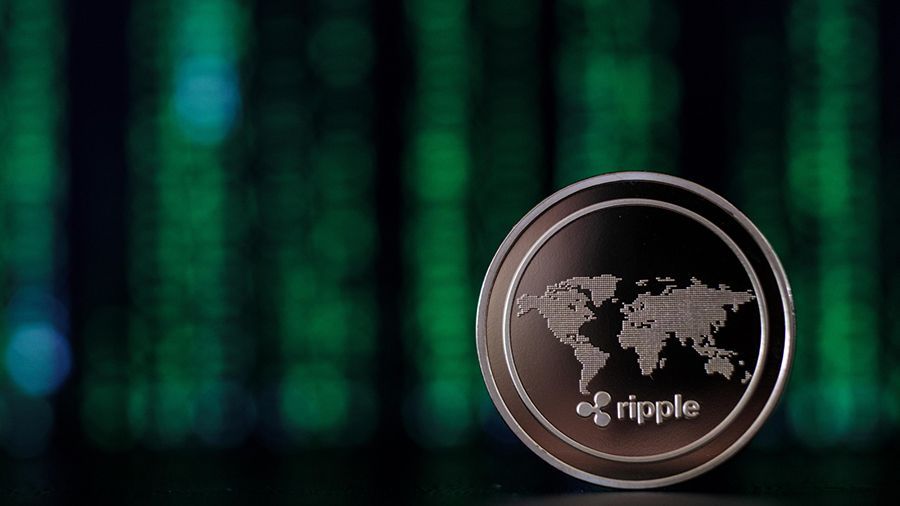
Ripple has created a tool called EW Zero that makes it easier for blockchain projects to use renewable energy sources. The XRP Ledger Foundation will be the first to use it.
The EW Zero tool, developed in partnership with the non-profit Energy Web Foundation, will reduce the carbon footprint of any blockchain by purchasing renewable energy from local markets around the world. The XRP Ledger Foundation, the newly formed XRP cryptoasset developer fund, will be the first to use EW Zero to reduce the carbon footprint of the network.
“The massive adoption of blockchain and cryptocurrencies is encouraging and we must continually assess how we innovate to ensure the sustainability of the future of global finance,” said Ripple CEO Brad Garlinghouse. “As digital payments continue to evolve, we need to make long-term systemic changes to the industry so that digitalization does not come at the expense of the planet.”
According to Ripple, by 2030, the company will achieve carbon neutrality by purchasing clean and renewable energy, financing the development of technology to reduce carbon emissions, and forging partnerships with environmental organizations. The Renewable Energy Buyers Alliance (REBA) and the Rocky Mountain Institute are already in talks with Ripple.
“The international financial system is key to achieving a zero-carbon future for the industry,” said Jules Kortenhorts, CEO of the Rocky Mountain Institute. “Blockchain and digital assets are revolutionary technologies that will play a key role in the future of finance.”
As a reminder, in January, Mercedes Benz and startup Circulor launched a blockchain pilot project to track cobalt and carbon emissions. In March, the Yale University OpenLab team said it would use blockchain, sensors on the Internet of Things, and other data processing tools to measure and track carbon emissions.
In addition, in the summer, Microsoft, together with universities in Germany and Denmark, released a paper outlining the potential benefits of blockchain for creating an international carbon market.
RUSI survey: regulators doubt the ability of self-government of the cryptocurrency industry
01/10/2020

Regulators and banks are skeptical about the idea of self-regulation of the cryptocurrency industry in the fight against money laundering and the financing of illegal activities.
The survey results, released on Tuesday by the UK’s Royal United Defense Research Institute (RUSI), showed that banks, governments and cryptocurrency CEOs have conflicting views on the self-regulation of the cryptocurrency industry. RUSI is the UK’s oldest think tank on defense and security issues.
According to the survey, 63% of banks and 56% of regulators view cryptoassets as risky, but this opinion is shared by only 9% of the surveyed representatives of the cryptocurrency industry.
“The crypto business seems to be very confident in their ability to withstand and detect risks, while regulators do not share this confidence,” said RUSI analyst Kayla Izenman.
556 respondents took part in the survey: representatives of regulators, intelligence agencies, banks and CEOs of cryptocurrency companies. According to the study, the use of cryptocurrencies in illegal activities is a concern for 70% of respondents.
Around 84% noted concerns about the use of cryptocurrencies for money laundering and the purchase of illegal substances on the darknet, 79% for terrorist financing, and 76% for human trafficking. At the same time, representatives of regulators assessed these risks as high.
However, participants in the cryptocurrency industry noted that cryptocurrency transactions are more transparent than traditional ones and more beneficial in terms of security. The survey found that CEOs of cryptocurrency companies are more aware of the potential risks of an emerging industry compared to the rest of the respondents.
At the same time, 78% of representatives of traditional financial institutions are more likely to turn to private organizations and blockchain associations for advice on cryptocurrency-related topics than to the government. All respondents agreed that cryptocurrency use is expected to increase over the next five years.
“All survey participants agree that the use of cryptocurrencies is growing, but we know there is no clear consensus on how to regulate them,” Eisenman said. “This could lead to an increase in the use of cryptocurrencies for illegal activities.”
Recall that, according to Reuters, by 2024 the European Union plans to fully regulate cryptocurrencies and digital assets.
Ocean Protocol hard forked and thwarted the exchange of stolen KuCoin tokens
30/09/2020

Ocean Protocol suspended an old smart contract on Ethereum and hardforked its blockchain to prevent KuCoin hackers from exchanging stolen OCEANs.
On September 28 at 1:00 am ET, Ocean Protocol announced the suspension of the old smart contract and the transition to a new one in order to prevent hackers who hacked KuCoin from exchanging 21 million OCEAN tokens worth about $ 8.6 million. The Ocean Protocol team said:
“At 16:00 GMT, a new contract was created reflecting the balance of OCEAN as at block 10943665 on the Ethereum mainnet. The new smart contract will distribute the remaining stolen tokens to a fiduciary address in Singapore for those affected by theft. ”
Changing the address of the smart contract actually blacklisted those stolen by hackers OCEAN. However, community members are also concerned that the project team implemented the hard fork so quickly, as this raises the issue of protocol immutability.
According to Larry Cermak, head of research at The Block, before the hard fork, the hacker managed to exchange approximately 330,000 OCEAN tokens worth about $ 120,000. Ocean Protocol has a liquid supply of 587,622,921 OCEAN, and the total supply is $ 1.4 tokens.
According to CoinGecko, the price of OCEAN fell 8% from $ 0.399 to $ 0.365 when the hacker sold the stolen cryptoassets in batches of 10,000 tokens. After the Ocean Protocol smart contract was suspended, attackers began exchanging other crypto assets, including COMP, SNX, and LINK.
The hacker exchanged the stolen ERC-20 tokens for ETH. Most of the swaps have occurred on the Uniswap decentralized exchange due to its new liquidity model that reduces price slippage.
Paxful Launches USDT Trading and Adds New Features
30/09/2020
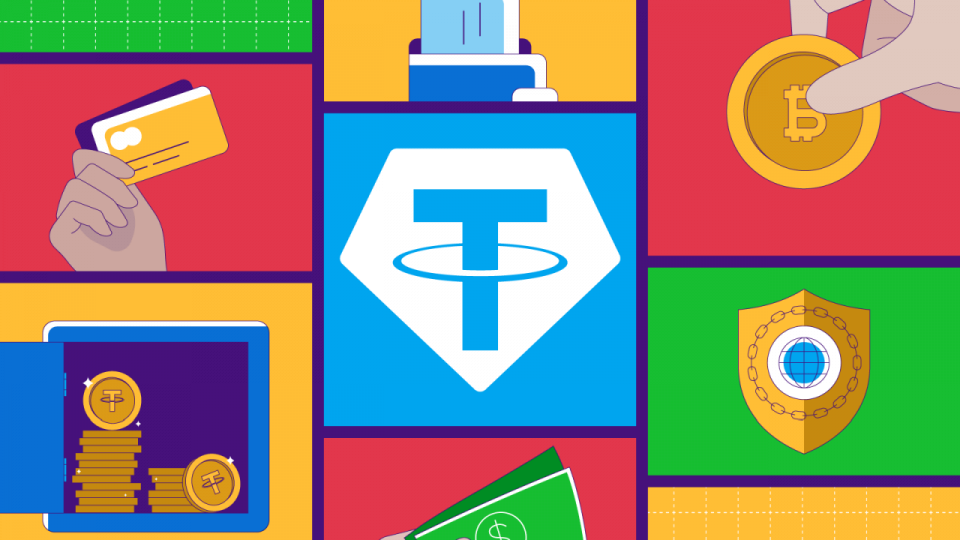
All Paxful users can now buy and sell USDT, add bank details and send bitcoins to their username.
International P2P cryptocurrency platform Paxful today announced the launch of peer-to-peer transactions in Tether (USDT). Now all verified users can protect their funds from Bitcoin price fluctuations and trade the USDT stablecoin with the highest market capitalization. This feature has been successfully tested in Nigeria and several other regions:
“To show our respect for one of our largest markets, we decided to first offer this feature to Nigerian Paxful users. During testing, we verified its effectiveness and usability, and collected feedback that helped us improve it. We are now ready to present this update to all of our users, “said Artur Shabak, director of product development and co-founder of Paxful.
Paxful users now have the ability to buy and sell USDT in the same way as bitcoin, using over 300 payment methods available, including bank transfers, e-wallets and gift cards. USDT can now be purchased immediately without purchasing BTC in advance, and stablecoins can be withdrawn directly from your Paxful wallet. Users can also convert their BTC to USDT (and vice versa) to protect their funds from market volatility.
The hedging function has been appreciated by thousands of users who have already converted about USD 1.5 million to Tether and thus secured their bitcoins from rate fluctuations. Paxful has also introduced additional updates to make the platform even more user-friendly.
All users can now add their bank details in their account settings for even faster bank transfer transactions. When creating offers, you can select an option under which the account details will be automatically transferred to the trading partner after opening a deal. This will help both parties to the transaction save time and avoid mistakes.
And one more update: if earlier you had to know the recipient’s wallet address to send bitcoins, now a username on the Paxful platform is enough for this.
“Since our P2P platform works with the support of all users, we listen carefully to their opinion. Thanks to the latest updates, it has become even easier for users to send bitcoins to their family and friends. Everything we do is aimed at the convenience and security of transactions and transactions.” added Shabak.
The company recently announced that Paxful had 4.5 million users, had deals worth $ 4.6 billion, and had less than 1% of disputed deals. Since the creation of the company, every year (including 2020), 1 million new users came to the platform. In addition, Paxful plans to attract another 2 million users by the end of this year.
Ebang’s 1H 2020 Revenue Halves Due to COVID-19 Pandemic
29/09/2020

Amid the coronavirus pandemic, the revenue of the Chinese mining company Ebang in the first half of 2020 was halved compared to the same period last year.
According to the financial statements of Ebang, filed with the US Securities and Exchange Commission (SEC), the company’s net revenue in the first six months of this year decreased by $ 11 million (50.6%), while in the first half of 2019 it was $ 22.35 million.
Ebang Chairman and CEO Dong Hu explained that such a significant decline in revenue was due to the coronavirus pandemic. Chip suppliers were forced to reduce their manufacturing capacity, resulting in constant material shortages. This negatively affected the activities of the mining equipment manufacturer Ebang.
Ebang’s cumulative net loss in the first half of 2020 was $ 7.3 million, compared to $ 17.6 million in the same period in 2019, according to its unaudited financial report. Hu said that in the face of the pandemic, the company had to optimize its financial structure and look for new sources of income.
In August, Ebang announced plans to launch a cryptocurrency exchange in Singapore. The company believes the initiative will help double Ebang’s total revenue by 2022. Against the background of this news, the stock price of the mining company on the Nasdaq stock exchange rose by 2.5% to $ 9.85.
Recall that on June 26, 2020, Ebang entered the Nasdaq listing, hoping to raise from $ 106 million to $ 125 million. The company’s shares began selling at $ 5.23 per share, but the next day their value dropped to $ 4.12.
In August, Ebang announced its readiness to shift its focus to the production of chips for artificial intelligence (AI) due to declining profits from mining activities.
Users lost $ 15 million in cryptocurrency overnight due to curiosity
29/09/2020
The developer of the token that has risen in price by 100,000% has created a test version of the new DeFi project. His address on the Ethereum network was found by traders and immediately transferred $ 15 million there. Later, the funds were discovered by a hacker.

On the night of September 29, traders lost $ 15 million in cryptocurrency. The reason for this was curiosity and, probably, the pursuit of quick money. The day before, the developer André Cronier, known in the field of decentralized finance (DeFi), released several new contracts on the Ethereum network, as he announced on his Twitter account.
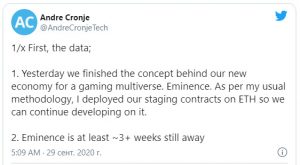
These were test versions of a future project. Users, knowing thanks to the announcements that the team is working on a new product, found these contracts on the Ethereum network, studied them and transferred about $ 15 million in cryptocurrency to them. Most likely, traders believed that this could be a new token that will show significant growth, like Cronier’s previous project. On July 18, he issued the YFI coin. At that time, it cost $ 32. By September, the asset price had risen by more than 100,000%, briefly reaching $ 44,000, now it has dropped to $ 25,000.
User funds lay on a test contract created by Cronier until a hacker found them. He found that $ 15 million in cryptocurrency could be withdrawn, there were no obstacles. An unknown person took all the coins, but some of them for $ 8 million were returned to Cronier to his personal wallet. The developer himself indicated that he was sleeping at that time.
On September 15th, Cronier found himself attending another bizarre DeFi event. The developer talked about the SAFE project on his Twitter account. Within a few hours after that, the price of the token of the same name soared by more than 500%, from $ 800 to $ 5000. But the next day, the coin fell sharply to $ 300 and has since been trading near these values.
13 alternatives: why investing not only in bitcoin.
28/09/2020
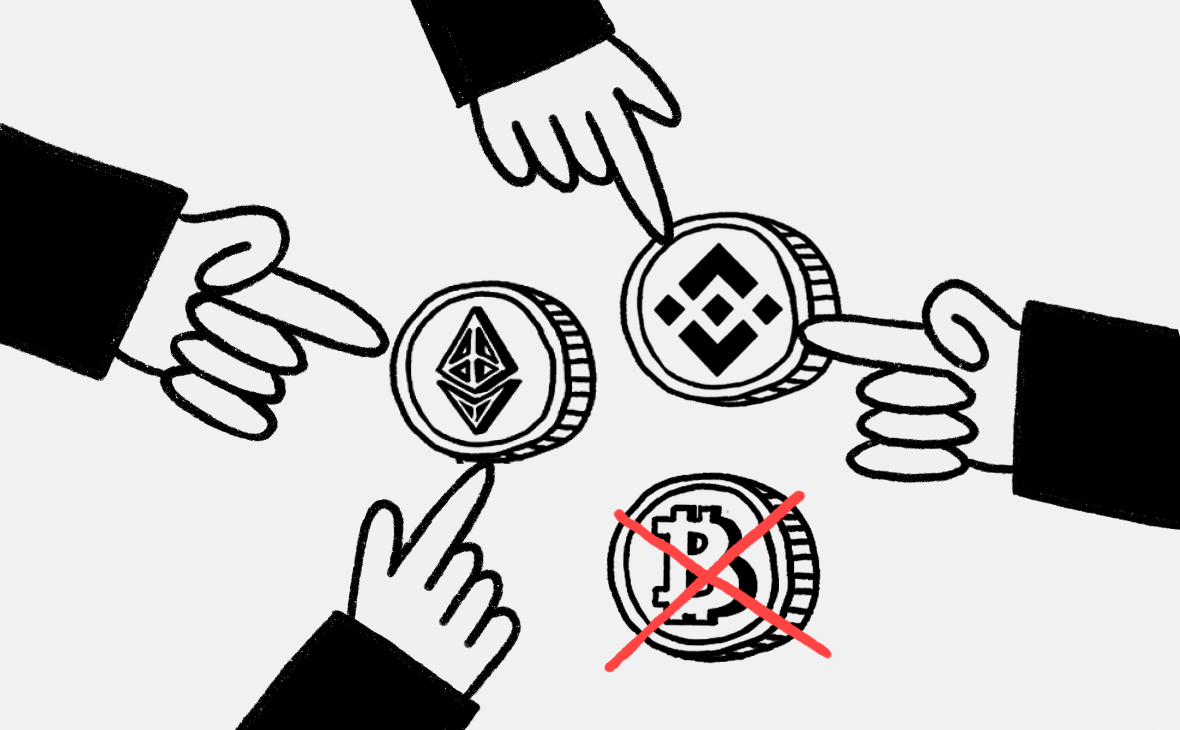
In 2020, investing in BTC brought its holders several times less profit than buying altcoins. Some of them have risen in price by thousands of percent. Analysts told which cryptocurrencies remain undervalued and retain great potential for price growth.
In 2020, Bitcoin remains a symbol of the cryptocurrency market, but it is not a leader in terms of profitability. BTC has risen 46% since January, which is significantly weaker than most other coins. For example, Ethereum added 170% of its value over the same period. The key reason for this growth was the expectation of updating the ETH blockchain to the second version, which will introduce the possibility of passively increasing the number of coins by staking.
Since the beginning of the year, the Binance exchange token (BNB) has also shown significant growth – 100%. One of the drivers of the coin’s rise in price was its entry into the decentralized finance (DeFi) market. The trading platform also provided customers with the opportunity to make deposits in cryptocurrency in order to receive rewards in other coins. At the moment, the annual profitability from the use of this product reached 1200%, but later the rate dropped significantly.
The largest growth in 2020 was shown by assets related to the DeFi sector directly. For example, the Chainlink token rate has grown by 450% since January, to $ 10, in August, rising to $ 20. A similar dynamic was demonstrated by the BAND coin. Over the same period, its rate rose by 2900%, from $ 0.22 to $ 6.6, briefly reaching $ 17.6. Both projects provide oracles – products that allow you to track cryptocurrency rates with decentralized applications.
Growth of thousands of percent was shown by tokens of DeFi sites. The leader in terms of profitability in this area is the Yearn Finance (YFI) platform token. It was released on July 18 and was trading at $ 32 at the time. Now the asset is worth almost 100,000% more, $ 32,400, and in mid-September the price peaked at $ 44,000.
There is a “whole palette” of instruments that you can invest in instead of bitcoin. As an example: the NEO token, which will soon launch its own DeFi platform on the blockchain. Another option is YFI coin. Both assets have an average degree of risk, the investor should take into account that their price can fall by up to 50%.
Among the high-risk, but interesting from the investment point of view, DeFi tokens: Balancer (BAL), Synthetix (SNX), REN (REN), Curve (CRV) and Aave (LEND). Their rate is quite volatile, but in September it corrected and now has good prospects.
Instead of bitcoin with medium-term goals, you can invest in altcoins that are in the top cryptocurrency rating by capitalization. Fluctuations in their price will depend on bitcoin, if it enters the growth phase again, alkoins will also rise in price and bring even greater profitability.
Ethereum is the first altcoin to be added to an investment portfolio. The coin has corrected its past upward movement and is poised for a return to 2020 highs and possibly a refresh. The coin looks strong in terms of technical and fundamental analysis. Binance Coin, EOS are also of interest, they are at acceptable levels for opening long positions.
On the horizon of the next year, representatives of the TOP-30 cryptocurrency market are interesting altcoins for investment. For example Ethereum. The transition to version 2.0 and the development of the Proof-of-Stake protocol will allow the price to rise significantly. Also, the driver of its growth may be the development of the DeFi sector, related to which applications are mainly built on the basis of ETH.
Interesting is the token of the Binance exchange (BNB). It is underestimated by market participants, although the project also started to enter the DeFi market. On September 10, the company announced that its Binance Smart Chain (BCS) blockchain can now be used by various projects to launch its applications.
VeChain (VET) coin is interesting in terms of joint partnerships and projects with companies from the classical financial sector. Another option is the crypto.com token (CRO). It is likely to continue to rise in price due to an increase in the customer base, the development of a mobile application and an ecosystem that includes cryptocurrency-supported debit cards.
Separately, it is worth highlighting the LINK and UNI DeFi tokens. They are fundamentally and technically capable of reaching new historic highs next year due to the next stage in the evolution of “profitable farming” and a new round in the development of decentralized applications. Another promising and underestimated option is the project with the eponymous 0X token, which may rise in price by 2-3 times in the coming year.
The moment to buy cryptocurrency data will come in the next couple of weeks. The market has been in correction since September. It is unlikely to be long-term, and digital assets will return to growth in Q4.
White hackers prevent theft of 25,000 ETH from Lien Finance smart contract
28/09/2020

The “white hacker” under the pseudonym samczsun discovered a vulnerability in the Lien Finance smart contract on the Ethereum blockchain, preventing the theft of 25,000 ETH (about $ 10 million).
Samczsun discovered the vulnerability on September 15th while searching for bugs in Ethereum smart contracts. The “hacker” accidentally found the Lien Finance protocol contract, which contained over 25,000 ETH. samczsun found out that anyone could withdraw coins from this smart contract. It had a “burn” function, with the help of which users could independently issue tokens with no value and exchange them for ether stored in a smart contract.
Given the anonymity of the Lien Finance team, the researcher reported the issue to Alexander Wade, ConsenSys cybersecurity specialist working on the development of the Ethereum ecosystem, and also contacted Ethereum security specialist Scott Bigelow. They began to look for a solution to the problem, considering several scenarios.
The Lien Finance team could have disclosed information about the vulnerability, but in that case, attackers would have taken advantage of this opportunity. It was also unsafe to return the coins to their previous holders, since predatory bots could have misappropriated them by performing the same operations using the Ethereum’s Dark Forest mempool.
Mempool is a staging area where transactions are accumulated, awaiting confirmation from miners, in order to be included in the next block. This zone is constantly “patrolled by predatory bots” that could automatically copy transactions to the mempool, replace their addresses with their own and “slip” duplicated operations to miners. Therefore, direct withdrawal of crypto assets from the Lien Finance smart contract would result in the theft of 25,000 ETH by these bots in a matter of seconds.
The researchers connected blockchain researcher Tina Zhen to the solution, as well as the auditing company CertiK and the SparkPool mining pool. Together, they developed a special API with which miners could accept transactions without exposing them to the mempool. In addition, in order to “save” 25,000 ETH, specialists prepared a script to create four signed transactions. However, these measures did not imply direct coin withdrawal. Lien Finance needed to transfer 30,000 SBT and LBT tokens, which are available for issuance in unlimited quantities, and convert them to ETH through the burn function.
As a result, the operation to save ethers was successfully completed in cooperation with the mining pool, which made it possible to avoid sending transactions to the mempool and their collision with bots. The transactions were placed in the block by the miners themselves. The Lien Finance team only had to exchange SBT and LBT tokens for ETH using the burn function. After a while, the Ethereum blockchain observer Etherscan confirmed the successful operation.
Recall that in May, “white hackers” discovered vulnerabilities in the Lykke and Hubdex cryptocurrency exchanges, due to which it was possible to withdraw digital assets worth a total of $ 18 million. In 2018, ethical hackers received about $ 900 thousand for information about bugs in various cryptocurrency projects.
Venezuela regulator will begin to tightly control mining in the country
25/09/2020

Under the new law, the Crypto-Assets and Related Operations Authority (Sunacrip) will regulate all mining activities in Venezuela.
Despite the fact that mining is allowed in Venezuela, the country’s authorities intend to make it more centralized. Now the production of ASIC miners, the construction of mining farms, the import of equipment and the distribution of rewards among the cryptocurrency miners will be controlled by regulators. In addition, the new law obliges all miners to become members of the national pool so that the government can control all aspects of their activities.
Venezuelan authorities said that Bitcoin mining creates conditions for speculation with the US dollar and contributes to the evasion of financial control. To prevent these risks, the authorities have created a register of miners (RIM), in which all miners, mining farms and hardware manufacturers will be required to register. Individuals or organizations working in the mining industry and not registered in the registry will face a large fine.
Cryptocurrency entrepreneurs fear that disclosing information about their activities and earnings could attract the attention of intruders and corrupt officials. Miners believe that the government’s attempts to centralize the mining of cryptocurrencies are contrary to the philosophy of bitcoin. If the authorities begin to control mining, they can tax miners, freeze funds and delay payments.
At the very least, regulatory oversight is better than banning mining. Two years ago, international carriers were prohibited from importing any equipment for the extraction of crypto assets into Venezuela, despite the active development of digital currencies in the country.
As a reminder, P2P platform Paxful stopped serving Venezuelan users this month due to US sanctions. In addition, access to the American Coinbase trading platform was blocked for residents of Venezuela.
Polkadot Developers Introduce Substrate 2.0 Update
25/09/2020

The Polkadot developers have released a Substrate 2.0 update that allows decentralized applications to interact with the outside world without the involvement of third-party oracles.
Substrate is an infrastructure with a set of tools that developers can use to create their own blockchain for various applications. These blockchains can be launched independently or integrated into the Polkadot shard network (parachains).
A key feature of Substrate 2.0 is the off-chain worker module, which runs off-chain and allows blockchains to perform advanced computing and send requests to the outside world. This module optimizes Substrate nodes to perform operations beyond the capabilities of the blockchain.
On the Ethereum network, computation must be fast and limited to fit into a block. This eliminates many non-deterministic operations (for example, web requests can fail) and actions that may be too complex for the available resources.
With Substrate 2.0, developers will be able to pass these operations off to hosts that can execute web requests, encrypt and decrypt, sign data, generate random numbers, and other tasks that require more CPU resources.
Substrate 2.0 will allow Polkadot developers to build complex systems on the web, such as price stream providers, while removing some of the elements of trust. According to Polkadot developers, finding reliable data sources is the main problem of oracles, and it is still relevant.
The update will provide maximum flexibility when building blockchains and decentralized applications. For example, Chainlink oracles collect data exclusively off the network. Smart contract developers can only access processed data provided by oracles, which requires trust in these data providers.
Substrate 2.0 also offers developers various “Pallets” toolsets. These are configurable modules that simplify certain actions. For example, the Democracy suite simplifies online voting, and the EVM suite duplicates the Ethereum Virtual Machine (EVM), allowing developers to move their smart contracts to the Polkadot network. Earlier, Polkadot developer Bruno Škvorc said that the modular architecture of Substrate will allow deploying its own blockchain in an hour, it can be quickly updated without the need for a hard fork.
Recall that last month the head of the Spartan Black cryptocurrency fund Calvin Koch suggested that in the near future Polkadot could enter the TOP 3 blockchains.
The developer has discovered an attack vector on Wumbo channels
24/09/2020

Lightning Labs developer Joost Jager described a micropayment network vulnerability that could lead to compromise of Lightning Network channels at low cost.
Joost Jager said the Lightning Network could attack Wumbo payment channels, which allow for larger transactions on the network and increase transaction volumes. Prior to the addition of Wumbo Channels this summer, users could create channels with a maximum capacity of 0.1677 BTC – this limitation was made as a precautionary measure.
Jager states that Wumbo channels can be exploited by attackers because a channel cannot contain more than 483 hash-locked and time-bound (HTLC) contracts, regardless of its capacity. Thus, the fraudster can send himself 483 micropayments and control the HTLC to disable the channel for up to two weeks.
According to the developer, this can be achieved by using the maximum route length to add channels and more contracts. At the same time, according to Jager’s calculations, the cost of such an attack will be small – about 5.8 million satoshi. The developer noted:
“Using the maximum route length for adding channels, each payment can take up to 9 HTLC slots on the target channel. If the attacker is lucky, he will only need to send 54 payments to reach the target. One tiny channel can cripple double-digit BTC amounts. ”
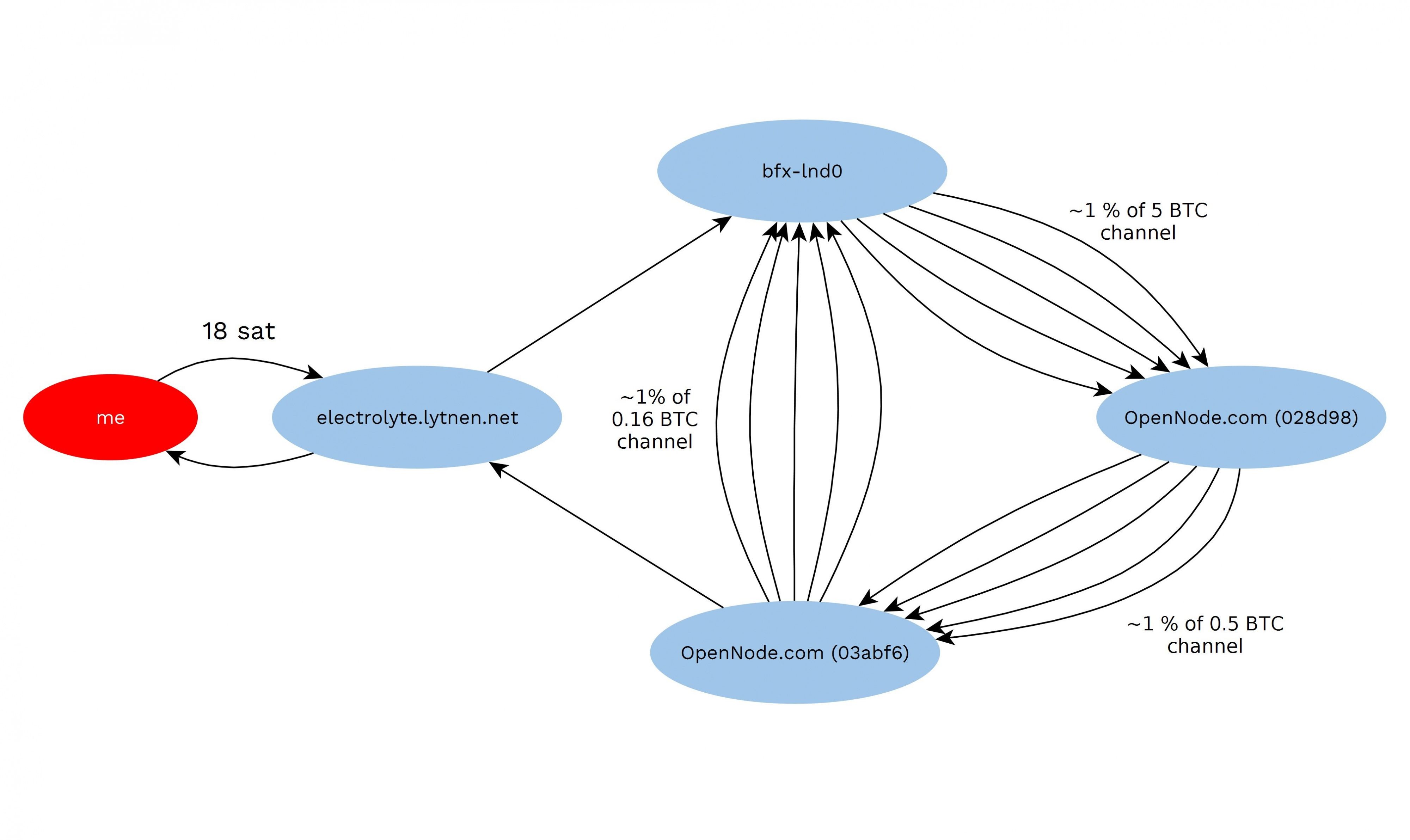
Jager said he launched a new project called Circuit Breaker to address this issue, a firewall for Lightning nodes. Its main purpose is to induce thinking about this attack. According to the developer, the project has the potential to become a full-fledged protection system for Lightning. When asked if this attack is the largest undisclosed attack vector on LN today, he replied:
“It depends on what is considered a major attack vector. There are other attacks that can make you lose money, which seems even worse. But this is one of the biggest problems in terms of the fact that we do not know how to solve it. ”
As a reminder, in June, the Lightning Network discovered the possibility of an attack on payment channel chains. In addition, in the spring, researchers from universities in Norway and Luxembourg discovered the possibility of an attack on the Lightning Network. In this case, the balances of the nodes through which the transaction passes can be disclosed.
The People’s Bank of China created a “black list” of OTC traders’ accounts
24/09/2020

The People’s Bank of China (PBOC) has begun blacklisting the accounts of large OTC cryptocurrency traders as part of its anti-money laundering program.
According to WuBlockchain, China’s Central Bank has launched a campaign against money laundering through cryptocurrencies. The initiative to blacklist linked accounts is part of a broader anti-money laundering effort in China.
Earlier this year, the NBK launched a campaign to eradicate illicit proceeds and requested account information and transaction details from banks in the country to prevent illegal money circulation, including crypto assets.
The biggest threat under the NBK’s new strategy is Chinese OTC cryptocurrency traders who transact millions of dollars worth of cryptoassets outside the public market.
According to the publication, some over-the-counter cryptocurrency accounts have been blacklisted by the NBK, which prevents their holders from using bank-issued cards for the next three years, or conducting online transactions for the next five years. These rules apply to all blacklisted accounts and are not limited to cryptocurrency accounts.
After the bank’s risk system has marked and restricted transactions from a specific account, it reports this account to the regional branch of the NBK. This will ensure that information on blacklisted accounts and their owners is shared with all Chinese banks, preventing OTC dealers from opening new accounts elsewhere.
The NBK’s new strategy could cause many cryptocurrency OTC traders to stop working. However, the blacklist does not apply to legitimate cryptocurrency transactions.
“Normal cryptocurrency transactions are not considered illegal, and only those related to illegal proceeds and illegal assets will be frozen,” according to a report from the Huobi exchange.
However, the lack of uniform rules for all banks could mean that OTC trading in cryptoassets will be blacklisted regardless of its legitimacy. China does not have specific laws on cryptocurrencies, therefore, transactions with them may face the restrictions of individual banks.
As a reminder, this summer the police began freezing the accounts of Chinese OTC traders over suspicions that they are using crypto assets for money laundering and other illegal activities. In addition, reports emerged in July that Chinese police had detained Zhao Dong and other OTC traders to aid investigations, but RenrenBit denied reports of Zhao Dong’s arrest.
BRD Developers Introduce Blockset Service For AML Compliance
23/09/2020
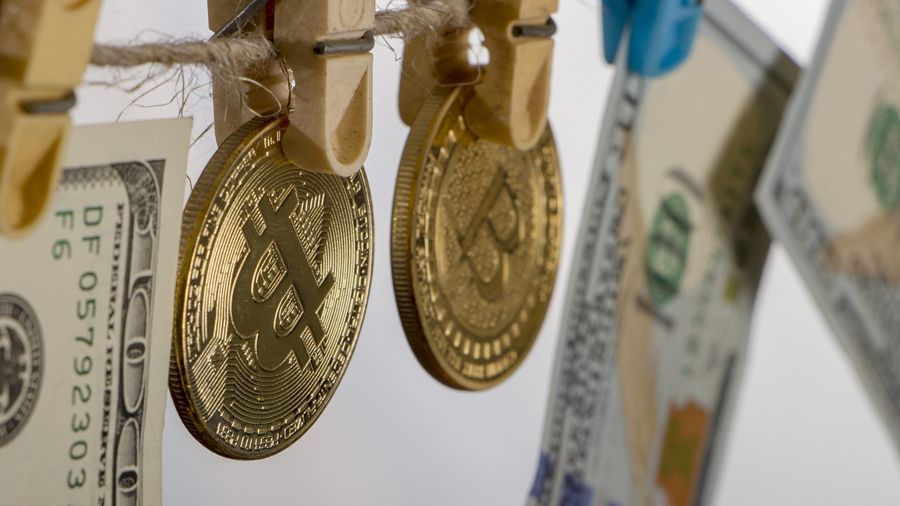
The BRD (formerly Bread) wallet developers have unveiled the Blockset toolkit, developed in collaboration with Chainalysis, CipherTrace and Elliptic. The service is aimed at complying with the AML rules.
The Bread wallet was launched in 2014 and became the first Bitcoin wallet available on the Apple app store. A few years later, the project held an ICO, where it raised about $ 32 million, after which it changed its name to BRD and added support for BCH, ETH and ERC-20 tokens. The BRD developers reported that they partnered with analytical companies Chainalysis, CipherTrace and Elliptic to create Blockset, which provided their tools for blockchain monitoring.
BRD also began working with cybersecurity firm Unbound Tech. Unbound Tech will perform tasks related to security key management. BRD CEO Adam Traidman explained that Blockset is a comprehensive platform that brings together the expertise of the above companies. The site is intended for financial institutions, government agencies and cryptocurrency firms.
Blockset will include a suite of tools aimed at detecting fraud, obtaining data, and complying with anti-money laundering (AML) and other regulatory requirements. The Blockset software will combine Chainalysis’s Know Your Transaction tool, the CipherTrace tool for tracking illegal cryptocurrency transactions, and Elliptic’s risk management solution. Using the developments of these companies in the complex, Blockset clients will receive real-time notifications of suspicious activity and transactions using “dirty” cryptocurrencies.
Trademan said that the service was primarily created for financial institutions and banks. Blockset was tested by SBI Holdings, PayPal, auditing firm KPMG, investment arm of Ripple Xpring and 16 other firms. Trademan emphasized that the Blockset functionality will not be integrated into the BRD wallet, but the service can be used to speed up the synchronization of wallets with transaction history.
“Compliance with regulatory requirements is a top priority for any financial institution. They need resources that can protect the interests of their clients, ”said the BRD CEO.
Trademan cited the example of a suspicious activity report from the Financial Crimes Enforcement Network of the United States (FinCEN), according to which BNY Mellon processed $ 137 million in transactions for organizations associated with the OneCoin cryptocurrency pyramid. Deutsche Bank reported a total of $ 1.3 trillion in suspicious transactions, JPMorgan $ 500 billion, and Bank of America $ 384 billion. In addition, last year, FinCEN provided new guidelines for applying AML rules to digital assets.
Wealthsimple Crypto – the first regulated cryptocurrency exchange launched in Canada
23/09/2020
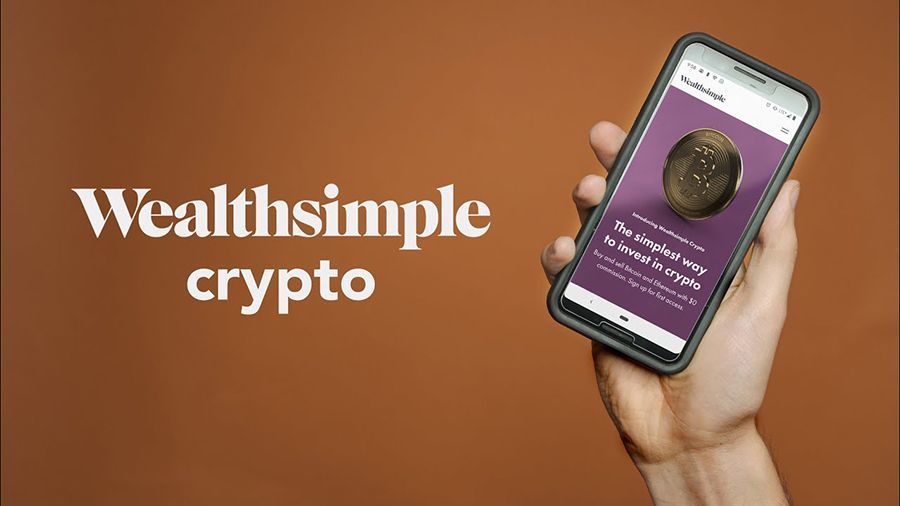
Wealthsimple Crypto, the first regulated cryptocurrency exchange, was launched in Canada yesterday, September 22nd. The custodial storage of crypto assets for the platform is carried out by the American Gemini exchange.
Wealthsimple Crypto’s public launch came shortly after the company received approval from the Canadian securities regulator in August. To date, Wealthsimple is the only cryptoasset trading platform that has been authorized to operate in the country by the Canadian Securities Administrators (CSA).
Before the public launch, Wealthsimple was available in beta, and potential users could sign up for a waiting list to be the first to test the platform. According to representatives of the exchange, at the moment 130,000 Canadians have signed up on the waiting list.
At first, only BTC and ETH will be available for trading on Wealthsimple via the mobile app. Deposits and withdrawals will only be made in Canadian dollars. In addition, Wealthsimple will not store crypto assets in their own hot or cold wallets.
Blair Wiley, General Counsel for Wealthsimple, said that custody of the cryptocurrency is carried out by the American Gemini exchange. Working with Gemini is one of the factors that helped Wealthsimple get approval from Canadian regulators, Wiley said.
“Probably the simplest explanation is that all companies that have tried to get regulatory approval in the past wanted to do everything – buy and sell cryptocurrency for customers, operate an exchange, store cryptocurrency that customers buy […] And each of these actions involves a long list of regulatory requirements. If one business tries to do all of this, it will be much more difficult to get regulatory approval. ”
As a reminder, from June 1, 2020, Canada began regulating the activities of all cryptocurrency firms. They are now required to register with the Financial Transactions and Reporting Analysis Center of Canada (FINTRAC).
Former top managers of the largest banks launch a cryptocurrency hedge fund
22/09/2020

Former heads of banking units HSBC, Citigroup and Merrill Lynch in the Asia-Pacific region launched a cryptocurrency hedge fund Liquibit Capital with assets of $ 50 million.
The founders of the cryptocurrency fund are Joseph Chang, who served as Head of Equity Trading at Merrill Lynch, HSBC and Citigroup from 1997 to 2016, and his partner Grahame Webb, who previously served as Head of Technology for HSBC and Citigroup. …
They began trading cryptocurrencies in June 2020, creating for this purpose the Liquibit Capital fund in Hong Kong. In addition, a former vice president of Barclays Capital and two technical specialists from financial giants JPMorgan and Wells Fargo are involved in the fund’s activities.
The fund will manage crypto assets worth $ 50 million. Liquibit Capital’s portfolio will include BTC, BCH, ETH, LTC and EOS. Storage will be the responsibility of Fireblocks, a digital asset security company. In the future, the fund’s management plans to start trading options and futures on the BitMEX, Huobi, OKEx and Deribit cryptocurrency exchanges, which are popular in Asia.
Chan noted that the decision to switch to the cryptocurrency industry from traditional finance was made precisely because of the tightening of regulation and a huge number of intermediaries when working with investment banks.
Several cryptocurrency hedge funds have closed in recent months. Last month, Neural Capital ended its operations, losing half of its capital. In addition, hedge funds Tetras Capital and Prime Factor Capital announced in July that they were closing down due to unprofitability and insufficient demand from institutional investors.
Bitcoin blockchain size exceeded 300 GB
22/09/2020

The size of the full Bitcoin blockchain on September 19 exceeded 300 gigabytes. This is the size of the complete history of BTC transactions for almost 11 years of its existence.
According to Blockchain.com, full Bitcoin nodes now need over 300GB to download and save BTC transaction history to disks and synchronize with the Bitcoin network.
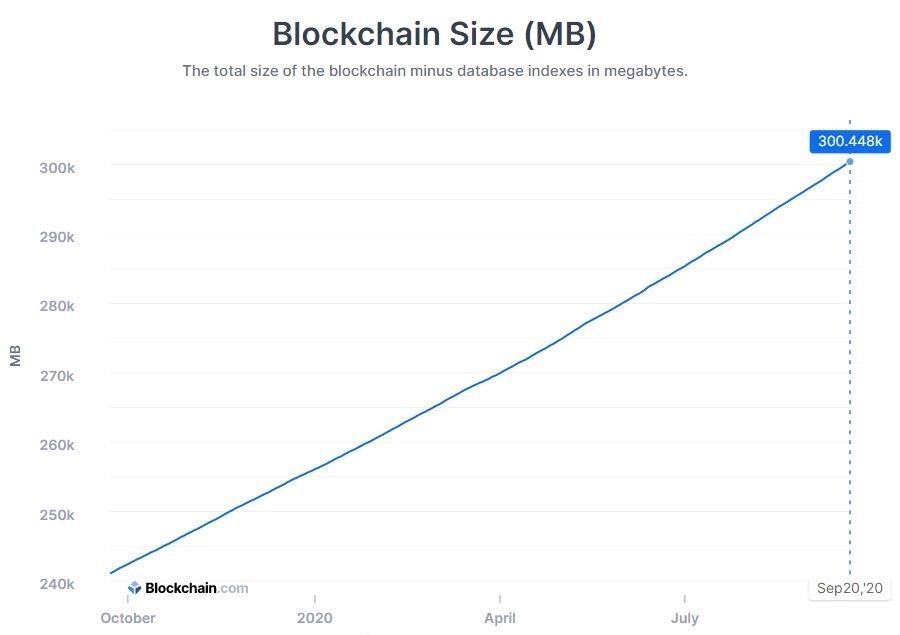
While this amount of data may seem significant, a 1TB hard drive is sufficient to store the entire history of BTC transactions. At the same time, the archive node in the Ethereum blockchain already has a size of more than five terabytes and is growing at a record speed with an increase in block size, although the “simplified” node takes only 165 GB.
Over the past few years, the Bitcoin blockchain has grown faster than in the early years. This is largely due to the increase in daily transactions and the introduction of the SegWit scaling solution that effectively doubled the maximum block size.
In the first four years of its existence, the Bitcoin blockchain reached only 20 GB. Only in 2016, when it grew to 54 GB, its growth began to accelerate due to the increased number and activity of users. It is now growing at about 58 GB per year. Although the size of the blockchain does not affect network performance, as full nodes only need to download the entire transaction history once during synchronization, some aspects of it can be optimized.
One of the elements of the network is the unspent outputs (UTXOs), which are generated after each transaction. When a portion of the BTC is sent and the remainder is returned back to the wallet as “unspent”, another UTXO entry appears. According to one of the developers of Utreexo, Calvin Kim, although UTXOs currently occupy only four gigabytes of the total blockchain size, in the future they may become a problem for network scaling.
As a reminder, Thaddeus Dryja published a new research paper last summer outlining a proposed Utreexo Bitcoin scaling solution.
Poloniex and KuCoin Teamed Up to Develop Cryptocurrency Industry
21/09/2020

Cryptocurrency exchanges Poloniex and KuCoin have teamed up for joint research and large-scale development of the cryptocurrency industry amid increasing regulatory requirements.
Exchanges will begin to conduct research and development collaborations related to cryptocurrency trading, liquidity provision, product iterations, and mining pools using Proof-of-Work (PoW) and Proof-of-Stake (PoS) consensus methods. According to the management of both sites, instead of competing, it is much more effective to combine efforts to strengthen their positions in the market and develop the cryptocurrency sector as a whole.
“Given the difficult political and economic situation in the world, institutional and even individual investors have a difficult time. They are forced to look for a balance in order not to fall under the influence of new market risks, and at the same time receive long-term profits. Hopefully this partnership between KuCoin and Poloniex will be a landmark event in the digital currency industry, ”said Johnny Lyu, CEO of KuCoin Global.
Shelley Wu, VP of International Relations and Marketing at Poloniex, added that the industry is currently fiercely competitive, with exchanges competing for user preferences, not to mention pressure from various regulators. Several cryptocurrency exchanges have already closed in Brazil this year due to new tax rules. In addition, Venezuelan traders were recently blocked from accessing Coinbase due to US sanctions.
Shelley Wu believes that in such conditions, exchanges should take a different approach and start cooperating, because the sites pursue common goals. As a reminder, in April KuCoin partnered with the Singaporean Onchain Custodian and the Lockton insurance company to provide additional security for user assets. In the same month, KuCoin announced the development of an Enterprise Currency Desk platform for OTC cryptocurrency trading.
Xage to develop a blockchain-based protocol to protect US Space Force data
21/09/2020

Cybersecurity firm Xage will develop a blockchain-based decentralized P2P protocol for protecting US Space Force (USSF) data.
The Xage developers explained that the protocol will be created to protect the data of military and civilian objects, and step-by-step verification will be required to access the USSF system. The blockchain solution will be applied both at ground stations and in space. USSF, commercial operators and other parties involved will be able to report on the situation in real time, exchange data, and prevent unauthorized access to network resources and block attacks.
The USSF said they need a sustainable security system that will not only protect US interests, but also accelerate the development of the military space industry using the latest technology.
Xage CEO Duncan Greatwood said the secure protocol would allow UFFS data to be decentralized to keep the system running smoothly in the event of single failures. Even if terrestrial resources are disrupted, UFFS satellites will continue to function. Greatwood added that the Xage solution will not only secure the data of key UFFS infrastructure facilities, but will also combine blockchain with satellite technology.
Blockchain is gradually beginning to “conquer” space. So, last month, the SpaceChain project successfully sent 0.01 BTC with multisignature, using special equipment to transfer encrypted data to the International Space Station (ISS). In addition, in 2019, the Bitcoin community began testing a new technology with which it is possible to send anonymous messages to the whole world via satellite for a nominal fee in BTC.
Former HSBC executive to lead Libra Association
18/09/2020

The Libra Association has appointed HSBC Banking Group employee James Emmett as Managing Director of Libra Networks LLC.
James Emmett spent about 25 years at HSBC International Bank, as did the new Libra Association CEO, Stuart Levey, who served as Chief Legal Officer at HSBC. Over the years at HSBC, Emmett has held several management positions.
Levy stressed that thanks to a deep understanding of the field of finance and extensive experience in this industry, Libra developers will be able to translate their ideas into reality. It is about expanding the practical application of Libra to finance. Emmet will take up duties on October 1, 2020.
The Libra Association is an independent organization headquartered in Geneva, created to manage the Libra ecosystem. Libra Networks was launched in May 2019 as a subsidiary of Facebook. Libra Networks is directly involved in the development of a cryptocurrency payment system, and in October of the same year the company was taken over by the Libra Association.
The outlook for the stablecoin Libra remains uncertain as the EU plans to tighten regulation of stable cryptocurrencies and is already preparing a corresponding bill. In addition, University of Berkeley economics historian Barry Eichengreen believes Libra will never launch due to regulatory opposition, despite the revamped project structure.
In April, Libra developers unveiled an improved White Paper that states that the base LBR cryptocurrency will be priced using four stablecoins pegged to fiat currencies. However, according to Eichengrin, anti-crisis measures are not sufficiently spelled out in the new technical documentation of the project.
At the same time, the former governor of the Reserve Bank of India (RBI) Raghuram Rajan believes that Libra has a better chance of widespread adoption than Bitcoin and the digital currencies of the Central Bank. Rajan is confident that Libra is a more suitable solution for international settlements.
US authorities accused three Chinese citizens of running a global cryptojacking scheme
18/09/2020

The US prosecutor’s office has accused three Chinese citizens of organizing a global hacker campaign to steal confidential data from more than 100 companies and install malware for mining.
According to the May 2019 indictment released this week, Jiang Lizhi, Qian Chuan, and Fu Qiang have been active for many years, working for the Chinese cybersecurity firm Chengdu 404 Network. Technology Co.
Three Chinese citizens are accused of money laundering, conspiracy and identity theft. They also faced charges related to computer systems. The US authorities are based on claims that the hackers used an extensive cryptojacking scheme and installed mining malware on victims’ computers.
In the indictment, prosecutors say Chengdu 404 executives attacked at least 100 “victimized companies, organizations and individuals” in a multi-year fraudulent scheme that used “big data” analytics to maximize impact.
In May 2014, the three defendants “agreed to organize a massive network of computer hacks targeting secure computers belonging to hotels, video game developers, technology and telecommunications companies, research universities, non-governmental organizations and other organizations around the world.”
They allegedly stole source code and customer data from companies, carried out “supply chain hacks” to disable victims’ computers, infected networks with ransomware, and installed mining malware to increase the Chengdu 404’s bottom line.
“The main overall goal of the conspiracy was to achieve commercial success of the Chengdu 404 and personal financial gain for the participants in the scheme by hacking into secure computers,” the prosecutor’s office said.
Jiang, vice president of engineering for Chengdu 404, intended to “get more domains to increase computing power” for one of the targeted companies in Singapore. “Let’s see what the profit would be if we captured a total of about 10,000 devices,” he told an unnamed fourth hacker.
Jiang allegedly advised him to look into French and Italian companies as potential targets, saying, “The only thing is, the time difference is a bit of a hassle. We’ll have to work at night. ” The indictment does not indicate which cryptocurrencies the suspects were trying to mine.
Recall that, according to a recent study, the number of hidden cryptocurrency mining attacks through browsers in the second quarter of this year increased by 163% due to the growth of the cryptocurrency market.
The draft law on the regulation of cryptoassets in the EU appeared on the Internet before the official publication
17/09/2020

The draft law on the regulation of cryptocurrencies in the EU that has hit the Internet contains general rules for the release and circulation of cryptoassets. Legislators paid special attention to stablecoins.
The Draft European Markets for Cryptoasset Act (MiCA) provides legal certainty in relation to cryptoassets – cryptocurrencies, stock tokens and stablecoins, on the same principles as the Markets in Financial Instruments Directive (MiFID) of the European Union – the legal framework for securities markets, investment intermediaries and trading platforms.
Based on the document that got to the Internet, the European Union intends to treat cryptocurrencies in the same way as any other regulated financial instrument. The bill lays out the definition of cryptoassets and a basic set of rules that apply to issuers of these assets and service providers. At the same time, the definition of operators of cryptocurrency services mainly coincides with the definition of virtual asset service providers (VASP) proposed by the FATF.
Regulation is mainly focused on the issuance and circulation of stablecoins in the European Union, which are defined as asset-linked tokens or electronic money tokens. In addition to providing legal certainty for all cryptoassets, another core principle of the proposed regulation is to support innovation.
XReg Consulting Senior Partner Siân Jones commented on the document and noted that among the many regulatory obligations that will be imposed on cryptoasset issuers and service providers in the EU, there will be the need to register as a legal entity, and for service providers – having an office in one from the countries of the block.
“There is no doubt that MiCA will create serious problems for the DeFi industry projects,” Jones said.
Overall, however, regulatory clarity is likely to attract more institutional investment in the cryptocurrency industry.
“The perception of cryptocurrencies will become easier after regulators recognize them as part of the traditional world,” said Jones. “As for the bill, I would say that it will be in favor of banks and traditional investment companies. Traditional operators will have an edge in a number of ways. It is unlikely that the regulators are doing this on purpose, but this is exactly the effect the law will have in the short and medium term. ”
The proposed regulation is laid out in 168 pages and is due to be officially published later this month. However, the bill is unlikely to enter into force until 2022. Typically by the EU, it will directly apply throughout the EEA without the need for national legislation.
Jones concluded by saying that the new rules are likely to spark a restructuring of the cryptocurrency industry in Europe.
“In a sense, the cryptocurrency industry has been in a gray zone for most of the past decade,” she said. “But now we have a very clear set of rules – and we need to follow it or go beyond it.”
We will remind that recently the Executive Vice-President of the European Commission Valdis Dombrovskis said that the European Union plans to issue more stringent laws to regulate stablecoins.
Chinese BSN platform adds support for Algorand, ShareRing and Solana
17/09/2020

China National Platform Blockchain Service Network (BSN) has added support for Algorand, ShareRing and Solana blockchains.
The BSN project is a blockchain-based universal “hub” for developers of decentralized applications, which is supported by the State Information Center of China. Yifan He, CEO of Red Date Technology, which helped build BSN, said the platform has moved into a second phase of open network integration. Previously, BSN added support for Ethereum, EOSIO, Tezos, Neo, Nervos and IrisNet blockchains.
He explained that BSN is choosing open blockchains with unique characteristics that will help solve real-world problems, as well as facilitate the rapid development of the platform’s ecosystem. In the future, BSN plans to support all types of decentralized applications. The creators of the platform believe that this will reduce the costs of their development and deployment, as well as ensure interoperability between managed and unmanaged blockchains.
“By integrating open blockchains, we are installing main and test network nodes on our Public City Nodes (PSN), which are BSN data centers. Developers can access all nodes from all open networks through a single channel, so the cost of connecting to open networks is reduced to almost zero, ”He said.
Algorand Foundation COO Fangfang Chen added that the integration of Algorand’s open-source blockchain using PoS will benefit both enterprise users and developers by making it easier to deploy their applications.
ShareRing CEO Tim Bos said that access to so many blockchains through the BSN platform will help drive the ShareRing project, which in turn will enable developers to leverage their products. We are talking about a protocol for digital identity management (ShareRing ID), an infrastructure for making payments (ShareRing Pay), a decentralized e-commerce platform (ShareRing Shop), as well as a protocol for asset management.
Solana CEO and co-founder Anatoly Yakovenko noted that the Solana blockchain is focused on increasing scalability without compromising security and decentralization. Yakovenko added that Solana executives are happy to become part of the Blockchain Service Network and provide convenient access for developers to work with the BSN infrastructure.
In addition, BSN is considering collaborating with the Cosmos and Polkadot projects to create the Interchain Communications Hub (ICH), which will be the standard protocol for decentralized applications running on different blockchains. In addition, in July, the creators of the BSN platform announced that they plan to integrate more than 100 open blockchains during the year.
Fisco accuses Binance of failing to prevent money laundering of stolen BTC
16/09/2020

The company Fisco, which owns the Zaif exchange, which was hacked and stolen 6,000 BTC in 2018, sued the Binance cryptocurrency exchange for “complicity” in laundering some of the stolen bitcoins.
Shortly after 6,000 BTC worth $ 60 million were stolen from the Zaif exchange at the time of the 2018 hack, hackers sent 1,451 BTC to one of Binance’s addresses, according to a complaint filed by Fisco in the Northern California District Court.
After the hack, the Japanese Zaif exchange came under the control of the Fisco Digital Asset Group (FDAG) shortly before the restart. Fisco now claims that the attackers who hacked the exchange were laundering money through the world’s largest crypto-asset exchange Binance due to its weak KYC / AML protocols, which are “not in line with industry standards.”
The hackers allegedly took advantage of Binance’s rules, which allowed new users to open accounts and transact on the platform for amounts of up to 2 BTC per day without the need to provide any significant personal data.
“The attackers split the stolen BTC into 7,000 separate transactions and accounts, all below the 2 BTC threshold. Thus, the thieves converted the stolen BTC into other cryptocurrencies and withdrawn them from Binance, ”says Fisco.
Fisco claims that because Binance “was notified and actually knew” that the stolen bitcoins were being sent to its platform, it “could not, either intentionally or inadvertently, interrupt the money laundering process when it could.”
As such, Fisco requires Binance to pay damages equal to the amount laundered through the platform in addition to other penalties and damages. According to court records, the cryptoassets, equivalent to $ 41 million at the time of the hack, belonged to Zaif clients, including those in the United States, including California.
The case could draw additional attention to the KYC and AML procedures of cryptocurrency exchanges as the Financial Action Task Force (FATF) is urging global regulators to work in line with their guidelines issued last year.
Fisco argues that the case should be brought to a California court, not only because the victims of the hack live in this region, but also because important components of Binance’s business are located in this particular US state. For example, Fisco stated that Binance uses Amazon Web Services (AWS) to host its servers and has the ability to choose any AWS datacenter.
“Based on the information available, much, if not all, of the AWS servers that Binance relies on to operate are located in the state of California,” says Fisco.
In addition, Binance has at least six employees in California, and a significant portion of Binance’s cryptocurrency reserves are held in offline vaults located in San Francisco. Fisco is seeking a jury to try the case.
Indian startup EPNS created push notification protocol for dApps on Ethereum
16/09/2020

An Indian startup has created a decentralized Ethereum Push Notification Service (EPNS) notification protocol that allows dApps to send pop-up notifications to users.
EPNS founder Richa Joshi said the project team developed the protocol after discovering striking similarities between how applications worked in the early days of the Internet and how they work on Web 3.0.
She explained that Gmail or Orkut didn’t send notifications at first. Users had to check every time if they received new emails or messages. That changed when Apple launched notifications for internet applications in 2010. Joshi noted:
“All of a sudden, services started reaching out to users whenever an action was required on their part. This increased the level of engagement by 7 times and significantly improved interaction. ”
From this point of view, she said, dApps, smart contracts and other decentralized services in Web 3.0 work similarly to early GMail and Orkut. This is what prompted Joshi and her team to bring push notifications to the decentralized world and “take the industry out of the stone age of communications.”
According to Joshi, EPNS is a decentralized communication layer that “follows the spirit of Web 3.0 and is capable of delivering notifications to any platform, including cryptocurrency wallets, mobile apps, or even web browsers.” EPNS for decentralized apps and services will serve the same purpose as Apple Push Notification Service for iOS platforms.
EPNS will act as a decentralized middleware and verify the source, provide spam protection, and only send notifications to the wallet user if they have agreed to receive them. She added that users will have full control over receiving notifications:
“The protocol allows users to directly control which services they receive notifications from, it imposes rules on services, including spam protection for users, etc.”
According to the EPNS team, decentralized services will have a better chance of promoting their services in the cryptocurrency community using push notifications.
Similar to how the Chromium-based Brave browser rewards users for viewing ads, EPNS will incentivize cryptocurrency wallet users who opt for push notifications over the protocol. In addition, cryptocurrency wallet operators that allow EPNS to send notifications to their users will receive a portion of the revenue generated from using the system.
Decentralized applications are becoming increasingly popular in the cryptocurrency industry. Recently, trading volumes on decentralized exchanges surged amid a boom in interest in DeFi, and surpassed $ 10 billion in August.
FATF Formulated Signs of Suspicious Activity of Cryptocurrency Users
15/09/2020

The FATF recommends that regulators and exchanges create profiles of cryptocurrency users to detect criminal activity.
The Financial Action Task Force (FATF) said in its report on Monday that it has identified certain behaviors and characteristics of cryptocurrency users that may be considered suspicious. Such models can be applied by regulators when detecting illegal transactions.
One of the main methods suggested in the report is to compare the user’s transaction activity with that in their profile. This may include cases where the amount of the deposit or transaction is inconsistent with the user’s financial position or historical financial activity, which may indicate money laundering or fraud. For example, it can be suspicious if a young user with no known business interests starts receiving large sums from different people around the world.
Other suspicious signs include a user having a criminal record or activity on websites and forums related to illegal activities, sending cryptocurrencies to exchanges without KYC / AML checks, or sending transactions that are slightly below the amount subject to regulatory review under the earlier FATF guidelines.
The group also recommends that regulators monitor users who exchange cryptoassets from public and transparent blockchains for sensitive cryptocurrencies such as Monero or Zcash.
The new report was released more than a year after the FATF published the final version of the recommendations on the regulation of cryptocurrencies and the activities of cryptocurrency service operators, which received support from the G20.
US Prosecutor’s Office indicted the operator of the cryptocurrency pyramid Argyle Coin for $ 25 million
15/09/2020

The head of the Argyle Coin cryptocurrency pyramid, which offered investments in diamonds, has been charged with fraud.
The US Federal Attorney’s Office of South Florida accused Jose Angel Aman of electronic fraud while running a cryptocurrency scheme offering diamond investments.
According to the investigation, from May 2014 to May 2019, Aman and his partners urged people in the United States and Canada to invest in contracts for the purchase of diamonds. They promised investors that they would use the money to buy rough colored diamonds, which Aman would cut and resell at a profit.
They reassured investors that the money was safe because it was backed by Aman’s diamond reserves, allegedly valued at $ 25 million. Aman and his partners presented the investment as a high-yield, risk-free deal. However, according to the prosecutor’s office, these statements were false and unsupported.
According to the investigation, Aman rarely used investors’ money to buy diamonds. He never cut or resell diamonds. Also, Aman did not have $ 25 million in diamond reserves. To cover up the fraud, Aman allegedly paid interest to investors using money from new participants in the scheme.
As the scheme was on the verge of collapse, prosecutors say Aman founded a new business, Argyle Coin LLC, which was allegedly involved in the development of a diamond-backed cryptocurrency. Aman attracted new investors to Argyle, promising high risk-free returns. Aman used only part of the money he received from Argyle investors to develop the coin, and used most of it to pay interest to investors in another scheme.
In the course of the pyramid, Aman and his partners collected more than $ 25 million from hundreds of investors. Aman used the money to pay interest to investors, pay operating expenses, pay commissions to partners, and maintain his luxurious lifestyle.
Recall that the US Securities and Exchange Commission (SEC) took action against Aman’s fraudulent cryptocurrency project last spring.
EU plans to tighten regulation of stablecoins
14/09/2020
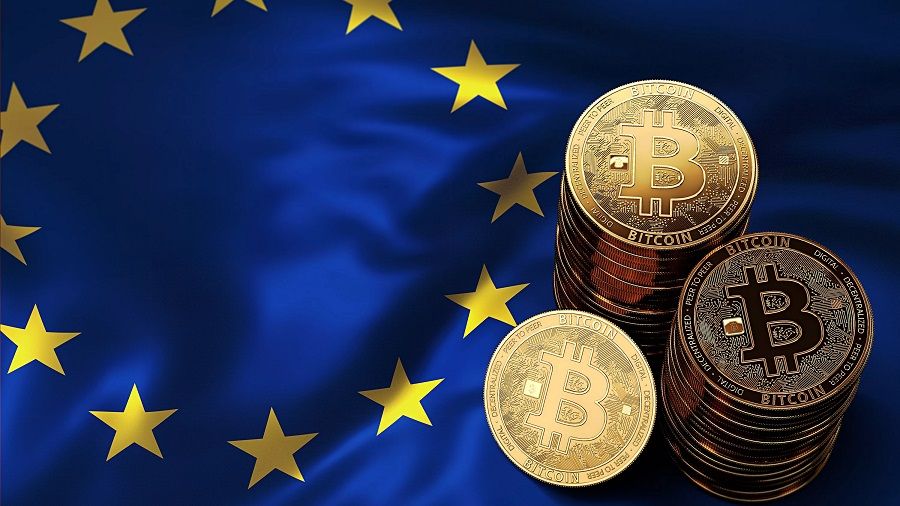
As the Executive Vice President of the European Commission Valdis Dombrovskis said, the European Union plans to issue stricter laws to regulate stable cryptocurrencies.
On Friday, September 11, finance ministers from several countries, including Germany and France, called for tighter regulation of stablecoins in the region. Already on September 12, Valdis Dombrovskis issued a statement that officials are aware of the problem and are preparing a bill to regulate stable cryptocurrencies. He emphasized:
“Some ministers yesterday expressed concern about the risks associated with so-called stablecoins, which are outside the scope of our laws. Rest assured that our bills will offer a comprehensive solution to this problem. We will regulate the risks of financial stability and monetary sovereignty associated with the use of stablecoins for payments. ”
At the same time, Dombrovskis noted that the regulation will be “adequate”. Stablecoins offer many new opportunities, and the European Commission is going to regulate innovation, but not destroy it.
A clear legal framework for the regulation of cryptocurrencies and stablecoins is expected to emerge soon in the European Union. Such assets, as well as the companies issuing them, will come under the jurisdiction of regulatory authorities at both the state level and the EU level.
Bank of France chairman François Villeroy de Galhau said on Friday that the EU cannot turn a blind eye to the risks associated with cryptocurrencies and postpone tackling these problems.
The developer has discovered a vulnerability in the Ethereum 2.0 testnet
14/09/2020

Jelurida co-founder Lior Yaffe claims to have discovered a potential vulnerability in the Ethereum 2.0 testnet – low staking participation could allow the whales to disable the network.
Jelurida co-founder and lead developer of the Ardor and Nxt blockchains Lior Yaffe discovered a vulnerability in Ethereum 2.0. As a reminder, the blockchain is currently running on Medalla and other testnets to check for problems.
Yaffe considered a situation where the level of participation in staking is low, and some “whales” quietly control many accounts. Since the minimum level of participation in staking is 66%, in case a large cryptocurrency holder suddenly leaves the network, this can cause problems.
“Let’s assume that 10% of ETH is currently staking, and user participation in the network is at 75% (which is roughly what we now see on the testnet). In this case, to reduce the participation level by 9% and stop the chain, only control over the 0.9% ETH in circulation is required. This is achievable with the participation of a large whale or a medium-sized exchange, ”said Yaffe.
In Ethereum 2.0, users cannot deposit more than 32 ETH for staking from a single account. However, according to Yaffe, nothing prevents a single user from dividing a large share of coins into 32 ETH chunks stored in different accounts. This will give him the opportunity to participate in the multi-account network, which Jaffe has already observed in Medalla’s testnet block generation.
“Entities that currently control more than 0.16% of ETH – Binance, Coinbase and Vitalik Buterin – will be able to shut down the network at will,” added Yaffe.
The CEO and founder of Etherscan blockchain observer Matthew Tan admitted that such a problem could exist.
“I have not performed any calculations to verify the above, but yes, if user participation falls below 66%, there will be problems with ‘finality’ in the blockchain, as in the previous Medalla testnet incident we witnessed,” he said.
Go developer Raul Jordan, who is working on the Ethereum protocol, said there will be “over 16,384 validators on the Ethereum 2.0 mainnet. Jordan is confident that at the time of the creation of the first block there will be about 25,000 of them, so participation in staking will be above the required level.
As a result, the cost of such an attack would become very high. Jordan said that the participation rate should be around 99%, which means that “an attacker would need control over approximately 25,000 validators, or approximately $ 100 million, to launch an attack that would result in the loss of all funds.
Major banks postponed launch of Utility Settlement Coin until 2021
11/09/2020

The launch of the Utility Settlement Coin (USC) project, supported by major commercial banks, has been postponed until 2021 pending regulatory approval.
Last June Barclays, Banco Santander, Credit Suisse Group AG and ten other largest banks in the world announced a $ 63 million investment in the Utility Settlement Coin project. The USC project partners became the founding shareholders of a new commercialization firm called Fnality International.
As previously reported, the USC platform aims to facilitate the issuance of blockchain-based currencies by commercial and central banks around the world. It was planned that the issuance of digital currencies will be launched this year. However, it was decided to postpone the implementation of the project until at least 2021.
The project, called Fnality, was developed by the Swiss investment bank UBS Group AG. The company managed to attract other banks to the development of the initiative, because they all will benefit from achieving the ultimate goal: faster and cheaper settlements.
Settlement is an often time-consuming process by which financial institutions clear transactions so that all participants in the payment system receive their money. Basically, this involves transferring money from the buyer’s account to the seller’s account minus fees for credit card operators and banks.
Originally known as the Utility Settlement Coin, the Fnality project was supposed to make this whole process much easier and faster.
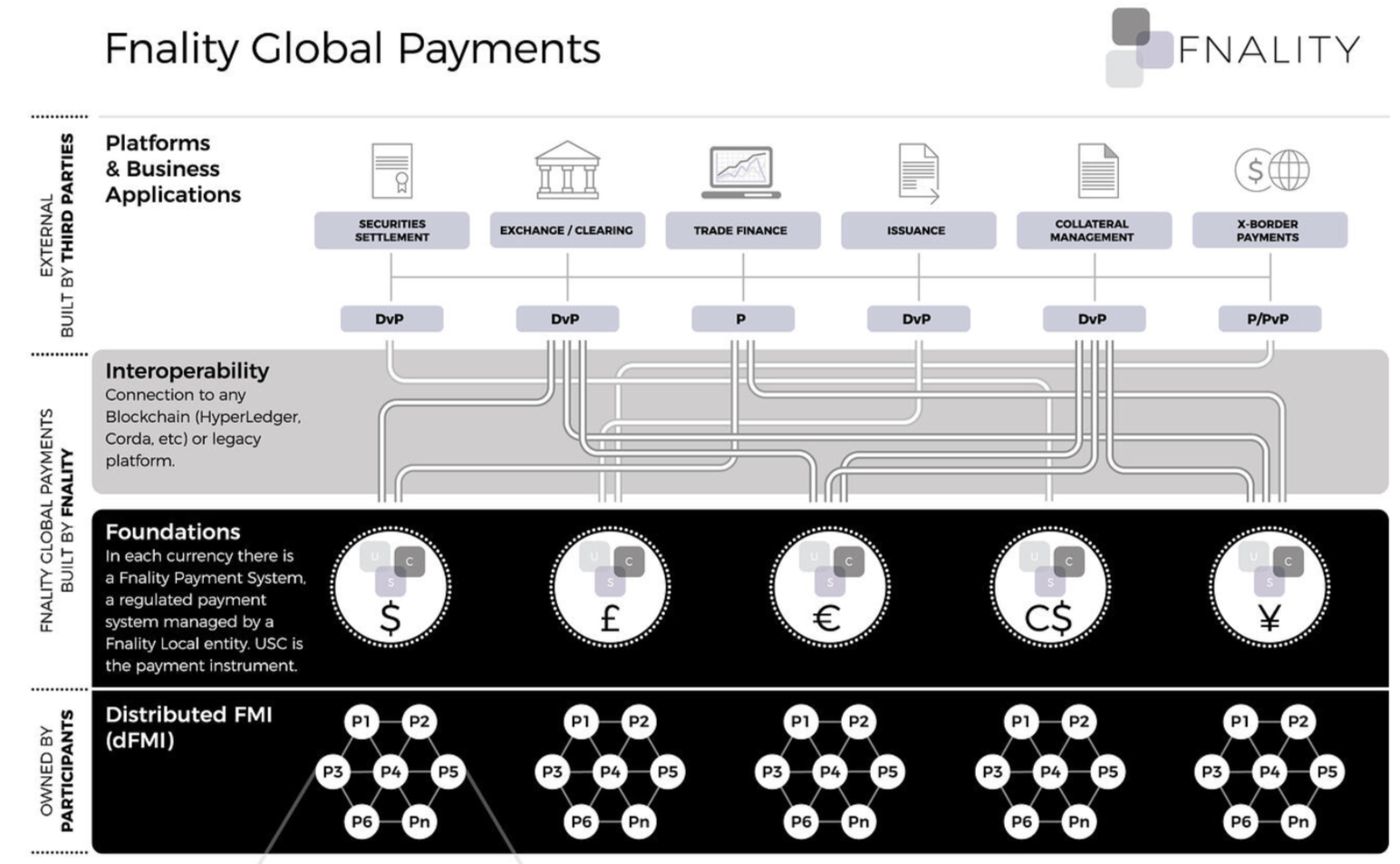
Specific project details and regulatory requirements are still being worked out. According to a Reuters publication, the head of Fnality International, Rhomaios Ram, is awaiting regulatory approval in early 2021. The delay is likely due to the fact that many central banks are now exploring the concept of government cryptocurrencies.
Dutch nonprofit dGen recently announced in a report that three or more nations will replace their fiat currencies with digital ones by 2030. DGen does not make precise assumptions about which countries will make this transition by 2030, but notes significant progress in the development of government cryptocurrencies in the Bahamas and Sweden. As a reminder, China has recently begun testing digital RMB payments for large commercial transactions.
Australian researchers report blockchain privacy concerns
11/09/2020

Researchers from the University of South Australia have concluded that blockchain technology needs to be improved to improve user privacy.
The research results, described in a blog post from the University of South Australia, show that the features that make the blockchain secure pose privacy concerns for users, especially in line with new European standards.
The study was conducted by advanced technology researcher Dr. Kirsten Wahlstrom in collaboration with Dr. Anwaar Ulhaq and Professor Oliver Burmeister from Charles Sturt University.
The research team found that new technologies such as blockchain and the Internet of Things can compromise people’s privacy because they are immutable and store data. This is due to the fact that blockchains use the details of previous transactions, including data that can be used to identify participants, to verify future transactions.
“When someone’s data enters the blockchain, the system never forgets it,” Walstrom said. “Yes, this data can be encrypted, but it is also part of an immutable ledger that is stored in the cloud.”
The document mentions recent legal changes in EU legislation, meaning that citizens have a “right to be forgotten” in relation to their data posted on the Internet. Thus, as long as the blockchain exists, the technology is contrary to European regulation that people have the right to revoke their data, Walstrom said.
In August, the not-for-profit Electronic Frontier Foundation (EFF) raised similar concerns about a proposed California law allowing medical records to be stored on the blockchain.
“Standards need to be consolidated now to clearly delineate the concept of confidentiality and what governments and organizations are trying to protect and why,” Walstrom said. “The main problem is that we are still trying to understand what privacy really means in the online world.”
Holochain is an example of technology that can solve the privacy problem, according to the study. The project uses distributed hash tables, a form of a distributed database that can record data associated with a key in a P2P network of nodes, and avoids the need to create a comprehensive “ledger” of the blockchain.
“This allows people to verify data without revealing all of its details or storing it permanently in the cloud,” Walstrom said. “But there are still many questions about how this affects the long-term viability of the chain and how it gets validated.”
Many projects in the blockchain industry are implementing privacy solutions. The Secret Network recently announced that it will deploy “secret contracts” on its blockchain on September 15th. These smart contracts allow the use of confidential data in dApps without disclosing the original information.
DGen report: “at least three countries will release government cryptocurrencies by 2030”
10/09/2020

Dutch non-profit organization dGen says in its report that three or more nations will replace their fiat currencies with digital ones by 2030.
DGen, an independent non-profit research institute focused on blockchain research, has released a report examining the issue of government cryptocurrency issuance. The report, sponsored by the European Central Bank (ECB), Standard Chartered Bank and the Frankfurt School of Management and Finance, has made some important predictions about the impact of government cryptocurrencies on the global financial system.
DGen researchers predict that three to five countries will completely replace their national currency with the cryptocurrency of the Central Bank within ten years. DGen does not make precise assumptions about which countries will make this transition by 2030, but notes significant progress in the development of government cryptocurrencies in the Bahamas and Sweden. The think tank noted that the development of the e-krona in Sweden is in line with the country’s plan to phase out cash by 2025.
DGen suggests that the euro will be supplanted by the Chinese digital yuan if the EU does not create its own state-owned cryptocurrency by 2025. Analysts stress the need for the ECB to create “a suitable environment for the digital euro to flourish.” In their opinion, fiat currency risks losing its position in the world economy.
The head of the blockchain center at the Frankfurt School of Management and Finance, Philipp Sandner, criticized the ECB for its apparent inaction:
“The ECB is too slow to react. In particular, the advantages of the state cryptocurrency for the industry, for example, based on programmable money, are currently being ignored. Given the Libra and the DCEP [digital yuan], the ECB must react quickly to maintain its geopolitical position. ”
While China’s state-owned cryptocurrency poses a threat to the euro, the digital yuan is unlikely to replace the US dollar as the world’s reserve currency, according to the report. According to the think tank, the digital yuan has a low chance of surpassing the dollar due to “political unrest in China and efforts to move reserves.”
As a reminder, China recently began testing digital yuan payments for large commercial transactions. However, other countries are not lagging behind – the other day, President of the Central Bank of Brazil Banco Central do Brasil (BCB) Roberto Campos Neto announced that the launch of the state digital currency will take place in 2022.
Sia developers proposed to hard fork protocol to create Sia Foundation
10/09/2020
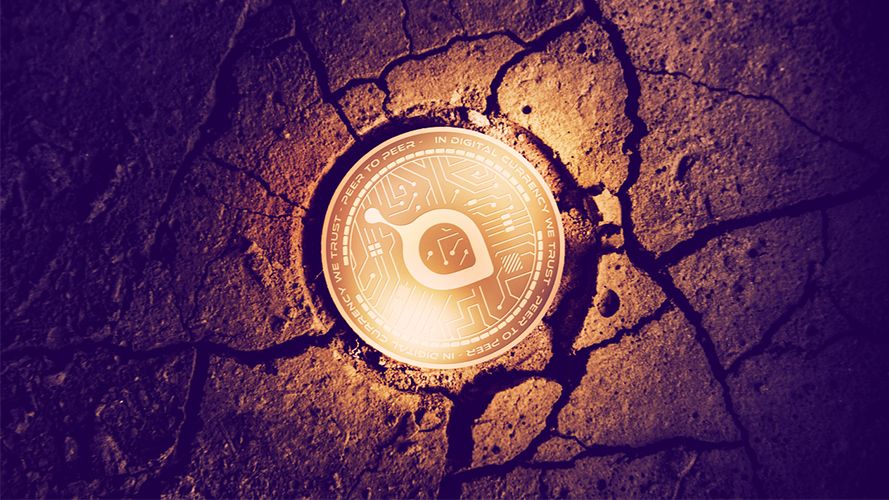
Sia developers proposed to hard fork the protocol of the decentralized cloud storage network. This will allow transferring part of the reward for each mined block to the Sia Foundation.
The idea of a decentralized data warehouse is being implemented by several projects at once – Sia, Storj and Filecoin. However, this concept still fails to gain widespread popularity. According to CoinMarketCap, Siacoin is currently trading at $ 0.003 and the crypto asset has a market cap of less than $ 3 million.
Previously, the Sia developers did not plan to create a fund to manage the protocol, but the situation has changed. One of the co-founders of Sia, Luke Champine, posted on Reddit a proposal for the creation of the Sia Foundation, where Champine will serve as president.
In theory, the fund could play a large role in promoting the Sia blockchain, but to fund it, Champin proposes to hard fork the protocol. The reward for each block mined will be doubled from the current rate of 30,000 Siacoin (approximately $ 94). An additional 30,000 Siacoins will go to the fund. In addition, after the hard fork, 1.57 billion Siacoin ($ 4.94 million) will be transferred to the fund.
Basically, the project founders are proposing to expand the overall coin supply. Annual inflation by 2021 could reach 10.4%, although the developers are urging to limit the amount in the fund to 5% of the total Siacoin volume and “burn” all unused coins.
In addition, the fund will be tasked with maintaining and improving the underlying software, overseeing the legal protection fund, deploying security updates to protect against attacks, promoting the coin’s popularity and adoption, and listing on exchanges. A quarter of the fund will go to “grants, incentives, hackathons and other community initiatives.”
Ethereum Developers Discuss GasToken Elimination To Curb Fee Rise
09/09/2020

Developers are exploring a proposal to improve Ethereum EIP-2751, which can contain the growth of blockchain fees by eliminating “tokenized” gas.
GasToken are loopholes in Ethereum smart contracts that help send transactions cheaply by “tokenizing” gas. This feature allows an Ethereum user to purchase gas tokens for the future at a low price, store them, and then spend them when the commission grows again.
While the matter is still under debate, some developers fear that tokenized gas could one day act as a “floor price” for transaction fees and keep them consistently high.
As Ethereum transaction fees continue to hit highs, developer Alexei Akhunov’s June proposal to improve Ethereum to get rid of EIP 2751 gas tokens has again caught the attention of developers.
According to Akhunov’s calculations, from 1.5% to 2% of transactions on the Ethereum network this summer used prepaid GasTokens. Moreover, many algorithmic traders have similar settings that Akhunov’s analysis does not reflect, as noted by developer Ali Atiia.
“Transaction pools are like a one-way order book in which you place your bets on gas prices. These orders help ensure that you buy gas at the lowest price, as in a traditional two-way order book for exchanges, ”Akhunov said during an Ethereum developer conference call last Friday, adding that he was still analyzing GasToken usage.
Some data on blockchains is more valuable than others, and storing data on the chain is a cost that is borne by the node owners. Ethereum tries to solve this problem by offering ETH to remove old contracts or information from them. Some argue that this is now being done to lower transaction fees.
Created by the cryptocurrency exchange commodity research group Project Chicago in 2017, tokenized gas is essentially a small script that the user runs when they send a transaction. This script deletes the previous data stored in the smart contract with GasToken when the fees were lower.
The network rewards the user for deleting old data. If the price of sending a transaction on the Ethereum network is high enough, the tokenized gas can subsidize up to 50% of the commission.
“GasToken can be used to reduce the cost of gas for any transaction in DeFi or other applications,” said GasToken co-author Florian Tramèr.
However, Akhunov and other developers warn that the widespread use of GasToken could result in market stabilization of high fees. Developer Philippe Castonguay, on the other hand, says the tool simply “flattens” the commission market. Indeed, there are secondary markets for gas tokens, such as the 1.Inch aggregator’s CHI token, launched in May.
Of course, GasToken is just one problem in the commission market. DeFi applications such as Uniswap or Chainlink remain among the top gas consumers, according to Ethgasstation. In addition, the popularity of stablecoins such as USDT or USDC continues to grow.
Recall that recently Ethereum co-founder Vitalik Buterin proposed tripling the cost of smart contracts that update the state of the network to solve the problem of exponential growth in fees.
Chinese traders transfer cryptoassets from centralized exchanges to DeFi
09/09/2020
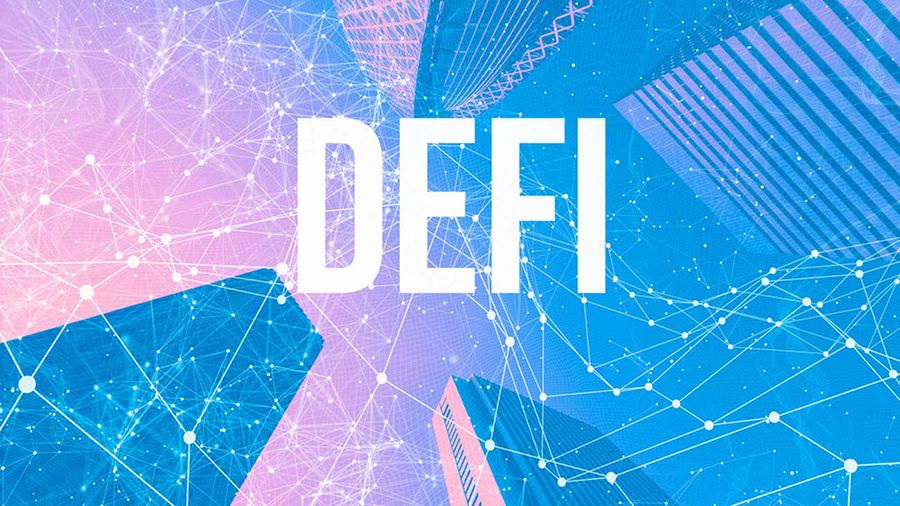
Despite the market correction, interest in DeFi in China is growing. Local exchanges are experiencing difficulties as users transfer cryptoassets to DeFi protocols.
The number of searches for the word “DeFi” on the popular Chinese platform WeChat hit 900,000 on September 2, a new record high. On September 7, Chinese journalist Colin Wu reported that many local exchanges are suffering from liquidity problems due to the massive withdrawal of cryptocurrencies by customers looking to transfer assets to DeFi protocols.
Colin Wu has posted charts showing that many Chinese traders have moved their assets to decentralized exchanges (DEXs) in response to the yield farming trend – the practice of maximizing rewards for providing liquidity to DeFi protocols using high leverage solutions.
In response, he says, many exchanges have suspended withdrawals, escalating tensions and sparking a “coin withdrawal campaign”:
“On September 6, many exchanges in China began to suspend the withdrawal of crypto assets. The Chinese community has launched a ‘coin withdrawal campaign’ urging the withdrawal of all USDT and cryptocurrencies from exchanges and the deletion of accounts. ”
The journalist suggested that the proliferation of the rapidly growing DeFi tokens on Chinese exchanges is a protective measure designed to prevent capital migration to decentralized exchanges.
Cryptocurrency journalist bigmagicdao tweeted that DeFi is starting to gain traction with Chinese investors and that “a lot of people are planning to create their own projects.”
At the moment, according to DeFi Pulse, assets with a total value of $ 8.02 billion are locked in DeFi protocols, while on September 2 this figure exceeded $ 9.5 billion.Uniswap remains the largest protocol – the value of assets locked in the application reached $ 1.56 billion.
Recall that at the beginning of the month, Ethereum co-founder Vitalik Buterin compared the decentralized finance (DeFi) industry to the “printing press” of the US Federal Reserve System.
Cryptocurrency bank Ziglu added functions for buying and sending cryptoassets
08/09/2020

Cryptocurrency bank Ziglu added functions for buying and sending cryptoassets
Alternative bank Ziglu has added the ability to buy and sell cryptoassets in its app. Cryptocurrencies can be sent to other bank customers, but not to third-party wallets.
The limitation was commented on by Ziglu Product Director Nick Turner-Samuels. He said that connecting the option of sending cryptocurrencies to external wallets is not an easy task for the bank. Ziglu was only launched on June 15 and wants to “prove that it can quickly find a product suitable for the market, test the application, and integrate cryptocurrencies as quickly as possible.”
Alternative banks – small retail banks in the UK such as Revolut, Ziglu, Starling and Monzo – want to take the place of traditional banks. They offer lower currency conversion fees, easy-to-use apps, robot advisors, and more. Ziglu and Revolut have a special money transfer service license issued by the UK Financial Conduct Authority (FCA), which allows them to process cryptocurrency transactions alongside normal banking activities. These are the only alternative banks that have such a license. Ziglu was licensed recently and Revolut in May 2016.
“Now that we have an FCA license, we are launching additional features such as P2P payments. And we’re going to release cards pretty soon. We are starting to create a complete package of services for clients, ”said Turner-Samuels.
There is another reason why Ziglu is in no hurry to add sending cryptocurrencies to external wallets – unwillingness to come into conflict with regulators. According to Turner-Samuels, there are dark sides to the cryptocurrency world, full of scammers, hackers and money launderers.
“We want to make sure we are really in control when it comes to keeping track of money so that everything is fair,” said Ziglu’s chief product officer. He added that the bank is working with technology companies to combat money laundering, but did not disclose their names.
Ziglu is mainly aimed at newcomers to the cryptocurrency industry, and the lack of the ability to send cryptoassets to third-party wallets is a kind of insurance against user error.
“It’s very easy to enter the wrong wallet address if you’re not careful,” Turner-Samuels said. “It is very difficult for ordinary clients to know where their money went if they made a mistake.”
Recall that according to a study by another cryptocurrency bank Revolut, British citizens began to buy more BTC during the coronavirus pandemic and the quarantine imposed in connection with it. The largest deals were made by investors aged 55-64.
DeFi Experts: Ethereum 2.0 Launch Is Not Enough To Reduce Fees
08/09/2020
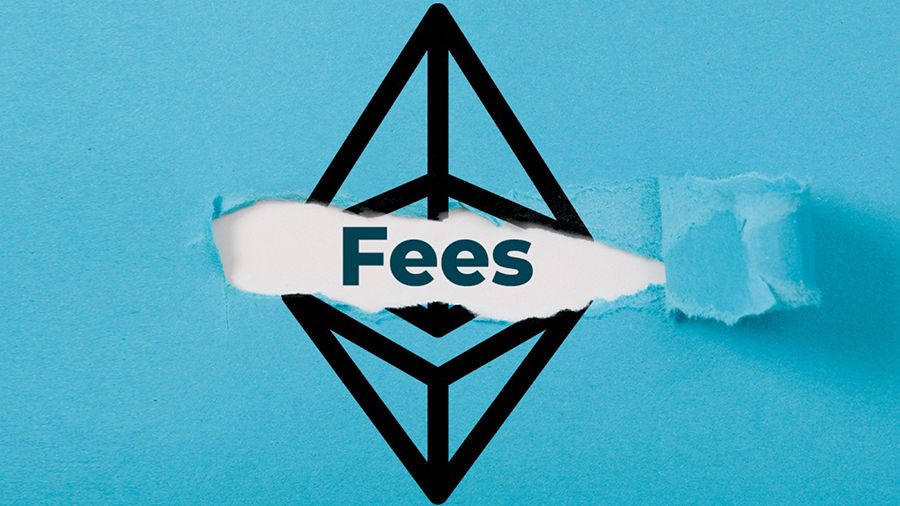
Decentralized finance (DeFi) industry experts believe that the launch of Ethereum 2.0 itself will not lead to lower fees on the Ethereum network, so additional solutions are needed.
DeFi industry experts and computer scientists discussed the Ethereum network issues at the China’s DeFi Marathon. 1inch Decentralized Exchange CEO Sergej Kunz, ParaSwap Founder and CEO Mounir Benchemled and bloXroute Labs Co-founder Alex Kumanovic expressed their views on the growth of commissions on the Ethereum network. In their opinion, the Ethereum 2.0 update may not be scalable and secure enough to be applied to custom transactions.
Ethereum 2.0 is a radical upgrade of the Ethereum network with the transition to a new type of consensus. In August, Medalla launched, the final version of the testnet. Vitalik Buterin believes that the deployment of the zero phase of the update should take place this year. While Ethereum 2.0 is designed to accelerate the mass adoption of Ethereum by making it faster and more efficient, Koontz noted that current gas prices could scare off many new users who are entering the DeFi industry. The developers of the update could not have foreseen the hype around DeFi. Koontz said:
“Everything needs to be rethought. You can port smart contracts to code, but it doesn’t scale. To be able to scale, you must create standards and implement new protocols based on a new sharded architecture, such as NEAR, which is similar to Ethereum 2.0. ”
Munir added that even if Ethereum 2.0 can scale, it could take too long. The reason for the delay is mainly related to security. The development team must make sure it is secure enough before launching it. Kunz, Munir and Kumanovich agreed that it is not advisable for all projects to switch to Ethereum 2.0:
“For it to work, all applications must move to a single platform. Large projects may have consensus, but other projects that have plans of their own can be difficult. New “bridges” will be built to provide interoperability. ”
Munir said that some projects are now implementing second-tier solutions to reduce fees. For example, the developers of the popular stablecoin Tether recently unveiled plans to support the ZK-Rollups tier 2 solution to reduce blockchain load and transaction fees.
However, there are difficulties in explaining how such solutions work to end users, as well as the risks that users will not be able to receive their funds instantly. BloXroute is now creating an infrastructure that helps traders trade faster and more efficiently using the Tx Stream project tool, Kumanovich said.
There are three types of API built into the tool, which allow traders to learn about transactions faster. This means that traders are more likely to benefit from CDP liquidation, be able to use arbitrage opportunities, and increase the chances of confirming the transaction in the next block. Kumanovich explains:
“One API allows transactions to reach the mining pool faster than others. The second API is for transaction fees. By examining the entire environment, we can connect traders or all participants in the scheme even before the miners know what is happening. The third API we are working on is designed to provide real-time feedback on traders’ transactions … ”.
In conclusion, Kumanovich said that it will be a long time before the real effect from Ethereum 2.0 appears, and projects need to live their lives before that. The community, transaction creators, miners, and app developers need to work together to co-create solutions and engage users before Ethereum 2.0 is deployed.
Recall that last week the average transaction fee on the Ethereum network exceeded $ 15, and Ethereum co-founder Vitalik Buterin proposed to triple the cost of smart contracts that update the state of the network in order to solve the problem of exponential growth of fees.
Denmark sees blockchain as an anti-corruption tool
07/09/2020

Blockchain and big data technology can be used to fight administrative and political corruption, according to a report from the Danish Ministry of Foreign Affairs.
The ministry presented a report at the International Anti-Corruption Conference (IACC). According to the department, the blockchain will create a more transparent system for managing and tracking various financial transactions. In addition, distributed ledger technology (DLT) will give ordinary citizens more rights to their own data, ensuring their confidentiality.
The department noted another advantage of the blockchain – everyone has the same access to the data stored in the registry. This allows people to claim their own rights to material assistance, real estate, financial resources and others, without resorting to the services of intermediaries.
In its report, the ministry also noted that blockchain eliminates the need for banks, cadastral offices and accountants, as their tasks can be solved faster and more efficiently using the latest technology. The ministry added that if the blockchain is used on a massive scale, it will no longer be necessary to maintain books of births and deaths, as well as record car registrations, since all this information can be confirmed on the blockchain.
According to a study by the Danish Ministry of Foreign Affairs, blockchain will help organizations efficiently and securely share data with people without a bank account. In addition, DLT can be used in the public sector to protect various documents and prevent their falsification.
The ministry noted that blockchain can be confidently used as a tool to fight corruption, as this technology provides transparency and immutability of data. According to the department, transparent tracking of transactions will reduce the likelihood of receiving bribes, but this will only be possible if correct data is entered into the distributed ledger.
“Blockchain technology is as good as data is entered correctly. They cannot be removed from the registry, so any error can be fatal, ”the report says.
Note that last year, the Danish Ministry of Energy began to cooperate with the IOTA network to improve the efficiency of the energy sector. However, with respect to cryptocurrencies, the Danish government does not show such loyalty. At the end of last year, the Danish tax agency Skattestyrelsen asked cryptocurrency traders for detailed information on all digital asset transactions in the previous three years.
The future of Ethereum: how the project will change in the next 5 years
07/09/2020
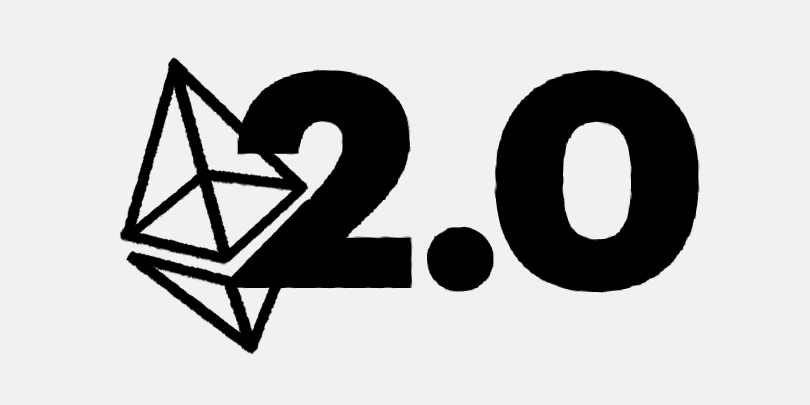
Everything you need to know about the largest altcoin by market capitalization, which is preparing for the most important update in its history.
On July 30, 2015, the first Ethereum genesis block was mined. Over the past five years, ETH has become the dominant altcoin in terms of market capitalization, popularity and use, and has grown into the largest blockchain platform, with over 2,000 decentralized applications used. Ethereum may have changed the blockchain world even more than Bitcoin.
Ethereum was the first general-purpose blockchain to allow decentralized ledger technology to be applied to almost any real industry, not just electronic money. With its help, it became possible to create smart contracts, tokenized assets, complex decentralized applications (dApps), alternative methods of fundraising (ICO) and a decentralized finance system (DeFi). But Ethereum also has a number of unresolved issues: scaling, high fees, and growing rivalry with rival blockchains.
Why Ethereum Update: Network Issues
Ethereum is still far from what the developers want it to be. Its current infrastructure is insufficient to meet the demand of tens of millions of people, let alone billions. Developers will devote the next few years to solving them.
Ethereum’s weakest point is scalability. It creates the rest of the project’s problems. The network is almost overcrowded and not ready for more widespread use. Gradually, transactions are slower and slower, and the cost of “gas” (transaction fees) increases. On September 2, 2020, the average cost of commissions peaked at an all-time high of $ 15.2 per transaction. At the time of publication, the commission is $ 3.25, i.e. 20-30 times more expensive than a year earlier and 2 times more expensive than in early August.
The recent boom in DeFi protocols, as well as Yield Farming, are placing even more stress on the network and negatively impacting transaction costs. Because of this, Ethereum is becoming too expensive and slow for use in decentralized applications and the DeFi sector, depending on the ability to make many small and frequent transactions – at current prices, using ETH in them is simply not profitable. The high cost of the ETH is already negatively affecting its development, safety and adoption. And if you don’t update the Ethereum protocol, one day it will simply be impossible to use.
The scaling problem cannot be solved by updating the protocol – the consensus algorithm must be changed. In June, the miners agreed to raise the gas limit from 10 million to 12.5 million, which led to an increase in block size and an increase in network capacity by 25%. However, this did not reduce the cost of “gas”. Level 2 solutions that allow the creation of additional blockchains (sidechains) on top of the main network – Plasma, Omise Network, Optimistic Rollup and others – are either undergoing testing or are not achieving the required indicators.
To address the scalability problem, developers have been working on updating the network to state 2.0 since 2016. It will move away from the mining-based PoW algorithm to a more energy efficient PoS algorithm, in which payment processing goes to validators. The assumption is that the network will then become more scalable, faster and cheaper.
When the transition to Ethereum 2.0 is complete
Ethereum 2.0 will be deployed in phases. This is necessary in order to avoid failures and take into account all the nuances. It is estimated that this will take about two years.
Phase 0. Preparatory (Beacon chain). It will include validators, staking options, new ETH coins, and will test Lighthouse, a new client of the network. The methodology for calculating the cost of gas and the formation of commissions will also be revised. Initially, there will be no smart contracts and no dApps support on the network. In fact, this is another test network, but working on PoS and with real ETH 2.0 coins. But even in this form, the network will be faster and more efficient.
The start of the zero phase can take place on November 4. This will happen on the condition that the Medalla testnet, launched on August 4, has been running smoothly for three months. However, on August 14, due to an error, the network was divided into 4 blockchains, which could not interact with each other. On August 17, developers A day earlier, Buterin admitted that the launch of Ethereum 2.0 was more difficult than expected, but on August 21, the developers said that Medall’s outage would not affect the timing. This is possible thanks to the discovery of a vulnerability at the testnet stage.
Phase 1. Start of sharding – transition from full nodes to load distribution between separate sections of the network (shards) without using a virtual machine. This should be the key change to address the scalability issue. First, 64 shards will be launched in the network, later their number can be increased to 1024.
Previously, it was assumed that the two networks – the old and the new – would work in parallel to each other, and users would be able to exchange the former for the latter. But now the developers believe that the existing ETH network will be integrated into ETH 2.0 as one of the shards. Thus, it will be possible to avoid a hard fork – the old network will enter the ecosystem of the new one, the old smart contracts, without being canceled, will move from ETH 1.0 to ETH 2.0.
Phase 2. Launching a new operating mode (state execution). A fully functional Ethereum 2.0 network, in which smart contracts and dApps will already be available. In this phase, eWasm will be launched in the protocol – a new virtual machine for the execution of smart contracts, which will further reduce fees and make smart contracts more functional. By this point, if the developers are right, the network has solved its main problems.
Maintaining leadership, but losing the monopoly
It is important to understand that Ethereum problems will remain until the full transition to the new consensus. Gas prices will continue to rise and the network will become more and more congested. The network’s capacity may very soon not be enough for all the projects working on it, especially if the DeFi sector continues to develop so rapidly. In this case, Ethereum risks losing its market leader status. Competing blockchains – TRON, EOS, NEO and Steemit, TomoChain and Binance Chain, and others – are getting an excellent head start in order to catch up with Ethereum.
While Ethereum is a universal blockchain for all occasions, competitors are trying to gain a foothold in more specialized and niche areas, focusing on projects with more specific requests. For example, almost 100% of apps on NEO are decentralized exchanges, while EOS and TRON account for the majority of the gambling market. The most promising area for competitors is gaming applications – it is in this area that Ethereum lags behind the most (in 2017, the rather simple game CryptoKitties practically paralyzed the network). Competing blockchains are already surpassing Ethereum in many ways in terms of speed, cheap commissions and scalability. If the launch of updates is delayed, the technical backlog of ETH will only increase.
The real salvation for Ethereum will be the universality of the project. It still seems to be the best choice for p2p lending, insurance, and stablecoins. Ethereum ERC-20 standard is one of the most demanded on the market. Given the cost of developing a new product, it is unlikely that many projects will dare to switch from Ethereum to another blockchain. In addition, the Ethereum community has extensive experience in developing and fixing vulnerabilities that other networks simply do not have. Competing blockchains are not yet capable of replacing Ethereum on a global scale. Probably, in the next 5 years, he will retain his leadership status, although that will be given to him more and more. But Ethereum will most likely lose its monopoly and will gradually cease to be a mandatory standard.
Ethereum 2.0 will change the staking market, but it is unlikely to overclock the coin
There will be no mining in Ethereum 2.0, the confirmation of blocks will occur due to the delegation of their coins by users to masternodes. These ETHs will be frozen, and users will receive part of the new coins as a reward. The more coins are frozen, the higher the income. This process is called staking. For the network, this is an opportunity to mine coins at a lower cost, become safer and create a new infrastructure sector, and for users – to receive passive income from storing cryptocurrencies.
Being a validator is not easy. The minimum amount that a user must freeze to become a validator is 32 ETH (≈ $ 11,292). It is also necessary to keep the wallet connected to the network at all times.
Stakers will receive their first payments only after the volume of frozen coins reaches 524,000 ETH, which is 16,375 validators with a minimum stake. It will take a year or two.
The profitability in ETH 2.0 will be variable – it depends on the number of validators and the volume of frozen coins. The less coins are frozen in the network, the higher the percentage for their storage, and vice versa. At the start, the expected return is about 21%, and after a year – about 5%. To get a net profit, you need to subtract the equipment and energy costs from these figures, which will amount to about 4.75% of the start-up bonus and will eventually grow to 14-20%. It is also worth considering exchange rate fluctuations. Even at rates of 20% per annum in the ETH, if the price of the coin falls, the investor can get a loss in dollars. In this situation, it is more profitable to work on your own equipment, rather than use cloud services. It will also make the chain more decentralized.
The transition of such a large project as Ethereum to PoS will instantly increase the share of staking in the market. The minimum deposit is too expensive for most investors, so it is worth waiting for cloud staking offers and similar products from crypto exchanges. This will have a positive effect on the price of the coin. According to experts from Binance Research, the launch of staking could double the price of ETH and the share of staking in the market.
There is also a downside to staking. If there is a risk that the US Securities and Exchange Commission (SEC) may recognize the ETH as a security. So far, this is only a probabilistic threat, which is little talked about, but it should not be discounted.
If staking is approved by regulators, institutional investors are likely to enter the market. They can afford large steaks, and even 5% profitability will be very attractive for them. In addition, institutional investment will further accelerate the coin’s price and popularity among retail investors. However, as with solving the scaling problem, the transition to staking will not be quick and will take several years.
DeFi will push Ethereum further
DeFi is the main driver of the crypto market in 2020. Now $ 7.72 billion is locked in DeFi protocols – 14 times more than a year ago. And the sector is not going to slow down the pace of development. Against the background of zero interest rates, the yield of 10-15%, and sometimes, as in the case of Yield Farming, and up to 100% per annum, looks very attractive for new users.
However, this return reflects high risks. Security is the main concern of the DeFi sector. This year, hackers were able to take advantage of protocol vulnerabilities several times and withdraw funds. Developers themselves sometimes release unaudited products onto the market. All this suggests that DeFi needs stringent security standards – without them, the sphere will not be ready for mass use.
There is also a good chance that the DeFi sector will repeat the fate of ICOs, which experienced a short period of hype in 2017, but already in 2018 the coins of most projects were worthless. There are also regulatory risks. Now DeFi exists in a gray regulatory area, one day the SEC will get to decentralized finance.
Once security and regulatory concerns have been resolved, institutional investors may enter the sector. They will boost liquidity and build user confidence. This plays into the hands of Ethereum as the main blockchain of the market. Despite today’s complexities, DeFi is likely to continue to grow in the medium term.
Ethereum is a living developing project, the developers of which are methodically working to fix its considerable shortcomings and are focused on long-term development. They continually bypass network restrictions, update development tools, and validate new and current EIP standards. The developers already have plans for where Ethereum will move after the update. This approach pays off – the ecosystem evolves despite scaling problems.
A full transition to version 2.0 is unlikely to be smooth – crashes are inevitable. But the long-awaited update will allow, although not overnight, to solve the problems with scaling and high cost of commissions. This should leave Ethereum as the leader among altcoins.
US Air Force has signed $ 779,000 contract with Chainalysis
04/09/2020

The US Air Force has signed a third contract with Chainalysis to obtain a “cryptocurrency data subscription.” They are used to track supply chains.
The agency has allocated $ 779,740 for services under a contract that is dated May 19, 2020, and follows two other contracts completed in the previous two years. Collectively, the BBC has already spent $ 900,000 on analytical services from Chainalysis. There are no details about the services used in the contract, but on the description tab there is a mention of “cryptocurrency data subscription”.
Chainalysis is one of the companies that study transactions on various blockchains and use analytics tools to extract as much information from the data as possible. She works with many US government agencies, such as the Federal Bureau of Investigation (FBI) and the Securities and Exchange Commission (SEC), and her analytical tools are used to track cryptocurrency crime.
Casey Bohn, a high-tech crime specialist at NW3C, said Chainalysis could provide services to the US Air Force’s Office of Special Investigations (OSI).
“OSI, for lack of a better term, is the internal FBI Air Force,” Bon said. “OSI investigates aircraft crimes in other areas such as fraud, waste and abuse. Let’s say the Air Force signs a contract with Boeing, but there are allegations or assumptions about the company related to fraud or waste. OSI will investigate on behalf of the Air Force. ”
Thus, Chainalysis data can help OSI devote more time to investigating crimes related to cryptoassets.
“The number of cryptocurrency-related crimes is growing. I think people are trying to be more original in hiding assets, ”added Bon. “I have personally trained several IRS criminal investigators, and they are starting to see more and more cryptocurrency crimes in tax evasion and tax crimes.”
In addition, the Air Force can “study threats at the national level,” said John Jeffries, chief marketing officer and chief financial analyst at CipherTrace. While national threats are diverse, some of them are especially relevant to blockchain analytics.
“Many believe that most North Korean weapons of mass destruction are funded by theft of cryptocurrencies,” Jeffreys said. Recall that last year, in a closed UN report, the DPRK was accused of stealing $ 2 billion from banks and cryptocurrency exchanges to develop weapons.
However, blockchain data can also be used by the US Air Force to solve more peaceful issues, such as supply chain management.
“At the highest level, the Air Force is a pretty advanced technology arm of the military, and they’ve done a lot of blockchain work in terms of supply chain management,” Jeffreys said.
The US Air Force has previously explored the possibilities of blockchain in this area. In June of this year, the agency signed a two-year contract for $ 1.5 million with SIMBA Chain to develop a blockchain for supply chain tracking.
Supply chain attacks are well known in today’s cyberspace. Advanced military systems are usually not connected to external public networks, which means that hackers must infiltrate the network locally through supply chain vulnerabilities.
“Maybe they are exploring the possibility of using blockchain to track the details of aircraft or other important items such as ammunition, or maybe it has something to do with national security,” he said.
BitGo will start providing custody services to the Japanese exchange Bitgate
04/09/2020
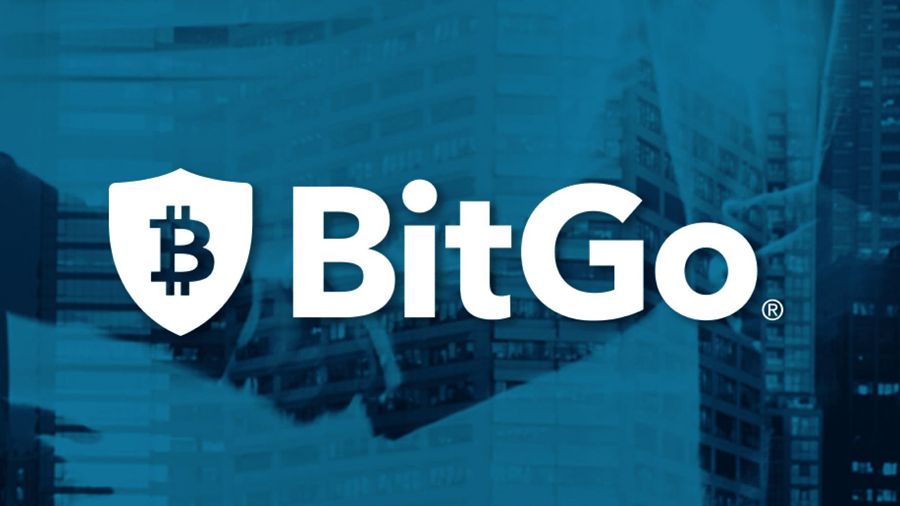
BitGo will provide cryptocurrency cold storage services to the Japanese marketplace Bitgate to ensure the security of digital assets.
Bitgate management announced that it has decided to use the BitGo service to meet the new requirements set by the Japan Financial Services Agency (FSA). On May 1, new laws to regulate the cryptocurrency industry came into force in Japan – the Payment Services Act (PSA) and the Financial Instruments and Exchanges Act (FIEA).
According to these laws, Japanese cryptocurrency exchanges are required to interact with a third party firm that will store customer funds using cold wallets. BitGo CEO Mike Belshe said that by partnering with BitGo, the Bitgate exchange will comply with the new rules of the local regulator.
“The Japanese government has begun to pay more attention to the safe storage of digital assets. Japan is known for its fierce attitude towards the cryptocurrency industry, given the situation with the closed exchange Mt.Gox and the Coincheck hack, ”said Belsch.
Recall that in January 2018, the Coincheck trading platform reported a hacker attack, as a result of which NEM tokens worth $ 532 million were stolen.A few months after the hack, the exchange was bought by Monex Group, one of the largest brokerage companies in Japan, which helped to restore the site.
Belsch added that the FSA is aware of the risks associated with holding custom assets, whether in the cryptocurrency or traditional finance industry. By tightening the requirements, regulators are concerned about the safety of users, which is why keeping digital assets in cold wallets has become a requirement for cryptocurrency exchanges in Japan.
According to Belsh, BitGo already provides its services to six Japanese exchanges that have received a license from the local regulator. As a reminder, in May the company began providing custodian services to the Indian exchange CoinDCX, and last year BitGo announced a partnership with the Genesis Global Trading OTC trading platform.
Zcash Developers Has Published Code For New Version Of Halo 2 Zero Knowledge Proof
03/09/2020

Electric Coin Company has released the code for Halo 2, an updated zero knowledge proof of Zcash that removes the need for a trusted install.
According to a blog post, the private cryptocurrency developer Zcash Electric Coin Company (ECC) has released the source code for Halo 2, an updated and more efficient version of ECC’s recursive evidential composition that removes the need for a trusted setup for Zcash. Halo 2 also has a promising scaling solution for Zcash and other blockchains.
ECC plans to complete development of Halo 2 with the intention of eliminating the need for a trusted installation in 2021. It will also pave the way for future recursive evidence support to support tier 1 scaling decisions. In the coming months, the organization plans to devote significant resources to research and development, business development, marketing and third-party support to ensure the safe and reliable development of Halo 2. Ultimately, the Zcash community will decide whether Halo 2 will be implemented in Zcash.
Halo efficiently compresses transaction history and distributes computation using recursive evidential composition. This makes transactions on the blockchain easier and faster, significantly increasing efficiency and eliminating the need for a trusted setup.
While the first Halo used “Sonic” to verify transactions, Halo 2 uses “PLONK”, a new zk-SNARK created by Zac Williamson and Ariel Gabizon of the Aztec Protocol. The new ideas behind Halo are used in recursive SNARK projects such as Coda (Pickles) and Mir (Plonky).
In July of this year, the Ethereum Foundation provided ECC with a $ 120,000 grant to continue developing Halo. Both organizations are still in the research phase but believe Halo standardization is essential for the industry as a whole. One of the potential benefits of the solution is that it can facilitate interconnection.
“The Ethereum Foundation is delighted to officially support the talented people at ECC, while taking our informal collaboration to the next level,” said Ethereum co-founder Vitalik Buterin. “The Foundation believes that zero knowledge proof technologies will change the path to building a better world, and recognizes that Halo 2 can do its part.”
ECC is in talks with the Ethereum Foundation and other organizations for further collaboration on Halo development. Using the same zero knowledge proof (Halo 2) technology on multiple blockchains can provide unreliable and flexible interconnection. In conclusion, the ECC notes:
“The process of introducing new advanced technologies is a long one. It includes scientific peer review, engineering, third-party security audits, and security testing. ECC has a track record of safely deploying innovative technologies and we know this work requires collaboration. From open source Halo to working with the Ethereum Foundation and exploring future implementations, collaboration is at the core of what we do. If you are considering Halo for your project or would like to know more, do not hesitate to contact us. “
Bitcoin ABC Developers Will Fork Bitcoin Cash In November
03/09/2020
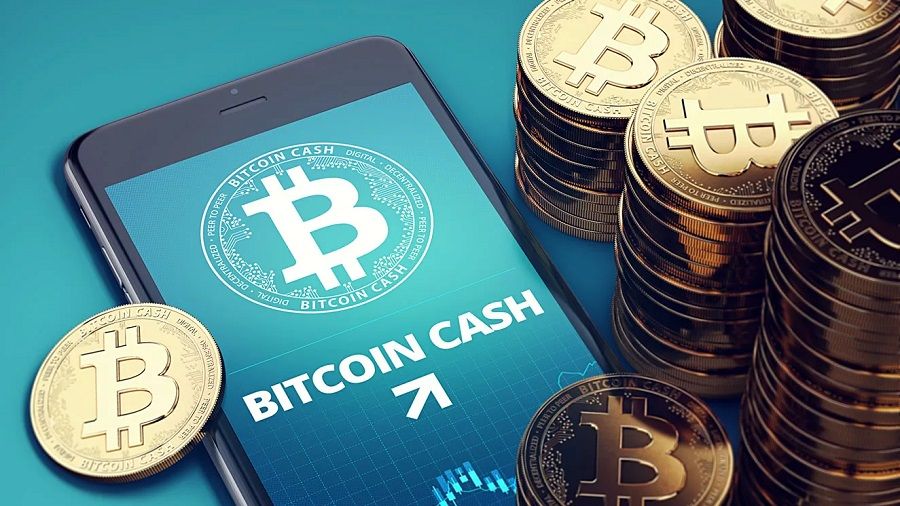
The Bitcoin Cash blockchain is preparing for a split: Lead developer Amaury Sechet is set to launch its own fork of the coin on November 15.
“Bitcoin ABC and Amaury Sechet announced that they will launch their own fork on November 15th. We wish them the best of luck with the new coin and thank you for giving the coins to all BCH holders, ”Bitcoin Cash co-founder Roger Ver tweeted.
Disagreements arose over a proposal to create a cryptocurrency development fund, which will receive 8% of the block mining reward. The new Bitcoin ABC client release 0.22.1 supports this offer and the update will be activated on November 15th. This client runs 42% of Bitcoin Cash nodes. Other customers, including Bitcoin Unlimited and BCHN, do not support the offer, accounting for 55% of active nodes.
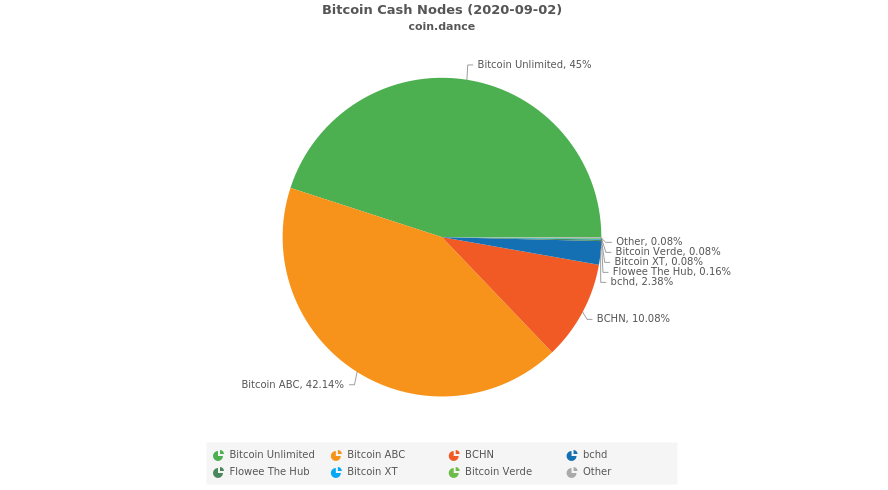
Another problem is that both forks are not planning to abandon the Bitcoin Cash name. A dispute is brewing, especially since the Bitcoin ABC developer does not believe that more than half of the network nodes work on the Bitcoin Unlimited and BCHN clients. It is very easy to fabricate the number of nodes, it is enough to clone and run the required number of virtual machines.
The Bitcoin Cash cryptocurrency appeared on August 1, 2017 as a result of a hard fork of the Bitcoin blockchain. It was driven by a controversy in the community over the maximum block size and scaling methods.
Binance Announces Binance Smart Chain Mainnet Launch
02/09/2020
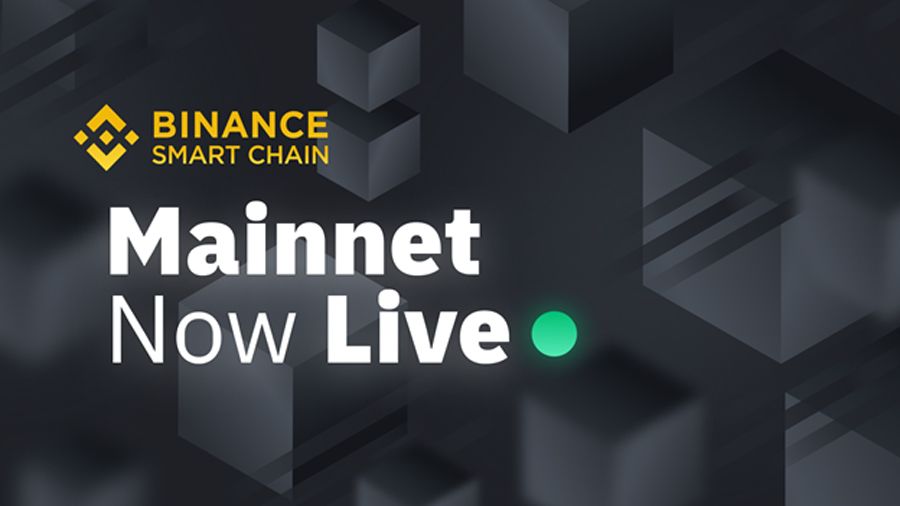
Binance Chain Developers Launch Binance Smart Chain Mainnet with BNB Staking and Decentralized Finance (DeFi) Application Development.
The developers published the Binance Smart Chain White Paper in April 2020. The Binance Smart Chain is the Binance Chain sidechain to support smart contracts. Before deploying the main Binance Smart Chain, the developers launched a test network, checking the security of its interactions with various blockchains, as well as conducting stress tests using competitions.
With Binance Smart Chain, you can develop decentralized applications (dApps) on the Binance Chain ecosystem and build products for the DeFi industry. The infrastructure of this blockchain allows Binance Chain to work with the Binance DEX decentralized exchange and various cryptoassets. In addition, the Binance Smart Chain blockchain is compatible with the Ethereum Virtual Machine (EVM), which means the integration of Ethereum-based instruments.
Another important feature of the Binance Smart Chain is the staking of the BNB coin, one of the ten leaders by market capitalization. Thanks to the Proof of Staked Authority (PoSA) consensus mechanism, Binance Smart Chain validators will receive a BNB reward for completing tasks. This will motivate the participants in the network and ensure its smooth operation without reducing the speed of transactions.
“Binance Smart Chain enables the development of DeFi services and decentralized applications in the Binance Chain ecosystem. At the same time, Binance Smart Chain has the advantages of a new generation blockchain: BNB staking, high performance, reduced fees, direct interaction with a decentralized exchange, and much more. There are plans to launch new products in the near future, ”said Binance CEO Changpeng Zhao.
Talking about the benefits of Binance Smart Chain, the developers noted the following:
Reliability of the blockchain ecosystem. We are talking about a powerful developer base supporting various integrations, including Chainlink, Band Protocol, Swipe, Ontology, Trust Wallet and about 25 other projects.
High speed of block creation and low transaction fees. In addition to being compatible with major blockchains, Binance Smart Chain uses a unique PoSA consensus algorithm that allows a new block to be generated every 3 seconds. In addition, the fee structure significantly reduces costs when using DeFi protocols and decentralized applications.
Access to assets on the Binance Chain network. Binance Chain interacts with the Binance DEX decentralized exchange and also supports Bitcoin, Ether and other well-known cryptocurrencies. The list of assets available on the Binance Smart Chain for DeFi protocols will expand.
The launch of Binance Smart Chain comes amid the rapid development of the DeFi industry, which is changing the perception of finance, attracting more and more attention to blockchain and cryptocurrencies. In July, Binance Smart Chain specialists connected Chainlink oracles to empower the DeFi industry, and in August integrated Band Protocol data oracles to protect users from potential risks.
Bermuda government is testing BMDT stablecoin
02/09/2020

The Bermuda government has announced that it has begun testing the Bermudian Dollar Token (BMDT) digital currency pegged to the Bermuda dollar.
Denis Pitcher, chief financial adviser to the Prime Minister of Bermuda, said the BMDT would be used to distribute financial aid to the public. The development of this stable cryptocurrency has been carried out since the end of last year by the startup Stablehouse.
The authorities intend to examine whether Bermuda residents will be able to pay with digital coins for groceries and other essentials. To date, three vendors and 20 individual users are participating in BMDT testing. Pitcher said that a dedicated digital Bermuda dollar wallet will be introduced in the future, which will be used by about 60,000 Bermuda residents.
The BMDT will be produced by Stablehouse, which was opened last year by XBTO founder and Interim CEO Philippe Bekhazi. Stablehouse will also provide dedicated POS terminals and a Green Wallet, which will allow the stablecoin to be stored offline. BMDT will operate on Blockstream’s Liquid sidechain. Stablehouse added that Phil Potter, a former senior executive at Bitfinex and Tether, is an advisor to their firm. In addition to Potter, Stablehouse’s consultants include Galaxy Digital partner and founder David Namdar and Blockstream’s director of strategic affairs Samson Mow.
Pitcher said Bermuda authorities may allow residents to pay taxes in any stablecoins pegged to the US dollar in October. This initiative aims at widespread adoption of digital currencies in the islands. The idea came from the government of Bermuda during the coronavirus pandemic, since it will be faster and more convenient to transfer benefits for the population in digital currencies. According to the authorities, in this case, they will be able to transparently track when and in what amount each individual person received financial assistance.
Recall that in October 2019, the government of the island state has already begun accepting payments for taxes, fees and government services in the stable USD Coin (USDC) cryptocurrency. In addition, Bermuda began developing a blockchain-based citizen identification system last fall.
Chainlink acquired privacy-focused DECO oracle protocol
01/09/2020

Chainlink has acquired the privacy-focused DECO oracle protocol created by developers at Cornell University and is also working on the project’s second White Paper.
DECO was co-authored with Ari Juels, former chief scientist at RSA, a digital security company. He will now hold a similar position at Chainlink Labs. Jewels, who also teaches at Cornell University, developed DECO with other developers.
Chainlink co-founder Sergei Nazarov and Jewels have started to create the second White Paper of the project. As a reminder, the original Chainlink White Paper was created in 2017 by two developers in collaboration with CTO Steve Ellis.
The Chainlink oracle solution brings off-grid data to blockchain smart contracts. Chainlink provides data information for most decentralized finance applications. For example, DeFi protocol dYdX recently launched perpetual contracts for LINK / USD based on Chainlink oracles.
“DECO is also useful for users who want to monetize their own data and therefore prove that they are indeed providing the correct data without disclosing any information other than what they are selling,” according to the DECO website.
Nazarov said that developers can use DECO as a basis for, for example, uncontrolled loans or decentralized identification. DECO can prove that a person is over 18 years old by obtaining data from the Department of Motor Vehicle Registration, but hiding the person’s date of birth.
In the future, this solution can be applied to decentralized finance. Nazarov said the DECO oracle could one day allow a smart contract to request off-network credit information such as bank records without revealing too much sensitive data.
“DECO is the path that many collaterals will take to DeFi,” Nazarov said. Jewels noted that such confidentiality is possible thanks to the introduction of zero-knowledge proof.
As a reminder, last month Binance Smart Chain integrated the Chainlink decentralized oracles, and Huobi was the first major exchange to launch the Chainlink node.
CipherTrace created tools to track Monero transactions commissioned by the US government
01/09/2020
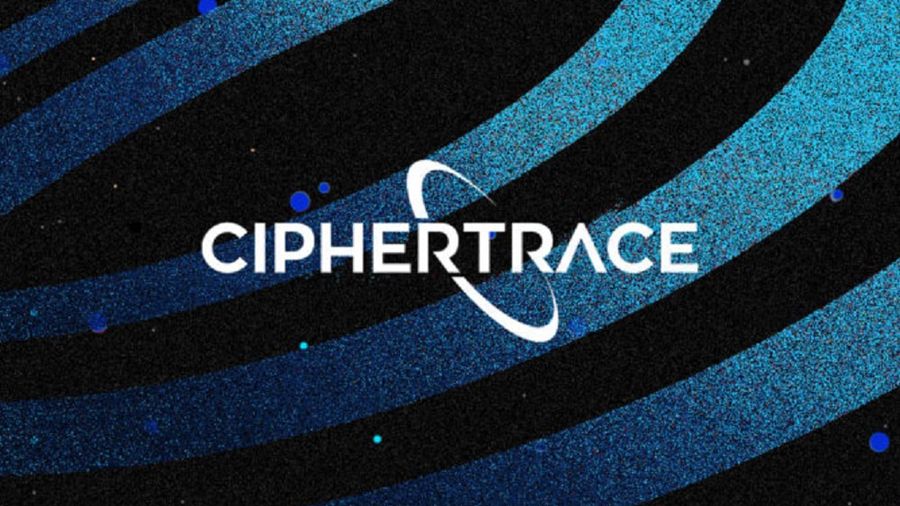
The developers of CipherTrace have presented a set of tools for tracking transactions with the Monero cryptocurrency (XMR). The tools will be used by the United States Department of Homeland Security (DHS).
CipherTrace executives explained that the firm’s end-to-end solution will enable analysts to search and monitor XMR transactions. The company has been working on the creation of the tools for a year, working with DHS’s R&D department.
According to the GovTribe, CipherTrace received $ 2.4 million in funding from a contract it signed with DHS in 2018. CipherTrace CEO Dave Jevans said the mechanism was designed specifically for DHS to allow regulators to track illicit funds.
At the same time, Jevans believes that cryptocurrency exchanges and investment funds can also benefit from this. By using the CipherTrace solution, they will have confidence in the “purity” of cryptoassets entering their sites, which will ensure compliance with regulatory requirements. In the future, CipherTrace plans to expand the functionality of the existing toolkit, adding functions for grouping transactions and identifying wallets, as well as the ability to interact with exchanges.
“Analysis of transactions with confidential cryptocurrencies will only contribute to their development. If governments fail to assess the potential risks, regulators will complicate the use of anonymous crypto assets or ban them altogether, ”said Dave Jevans.
He added that anonymous cryptoassets are no longer traded on Korean cryptocurrency exchanges, and XMR and ZEC were removed by several Australian marketplaces last week. Jevans is confident that allowing the authorities to track Monero transactions will only strengthen its viability. At the same time, financial analyst at CipherTrace John Jeffries said that even if a set of tools will allow tracking stolen XMRs, it is still too early to use it to counter money laundering.
As a reminder, last month CipherTrace introduced a risk prediction system that notifies exchanges, investors and law enforcement officers about suspicious cryptocurrency transactions in real time. Additionally, in April, CipherTrace announced the Armada tool for tracking illegal cryptocurrency transactions through banks and financial institutions.
BVV: over 95% of cryptocurrency futures trading volume is on Asian exchanges
31/08/2020

Asian exchanges account for more than 95% of cryptocurrency futures contracts trading volume, according to a new report by Swiss company Blockchain Valley Ventures (BVV).
As BVV states in its report, Asian exchanges account for 95% of cryptocurrency futures trading, while Huobi, Binance and OKEx have surpassed BitMEX to become the leading spot and derivatives markets. At the same time, 83% of the trading volume for cryptocurrency derivatives is carried out on six exchanges, and 95% of futures contracts are in BTC, ETH and EOS.
According to BVV, from Q1 to Q2 2020, the total volume of cryptocurrency derivatives trading increased by $ 60 billion to $ 2.16 trillion. Spot trading volumes fell 18% to $ 5.44 trillion over the same period. BVV predicts that due to differences in derivatives across exchanges, there will be multiple acquisitions or acquisitions in the market over the next few months.

BVV believes that LedgerX, BitFlyer and ErisX are the most likely targets for acquisitions by the larger companies. Coinbase, Bitstamp, Huobi and Binance are among the most likely buyers in the report. BVV Partner Sebastian Markowsky said:
“Derivatives are an entry into the cryptocurrency market for institutional investors. A player who can enter the US or European market through a regulated platform will receive a large institutional capital. ”
An increase in demand for some derivative products in the Asian market was forecasted last year. In October 2019, the Chicago Mercantile Exchange (CME) announced that demand for options on cryptocurrency futures would be high among traders and miners from Asia.
Online retailer Galaxus makes first payment with Sygnum’s DCHF stablecoin
31/08/2020

Galaxus, Switzerland’s largest online retailer, partnered with Coinify to make the first payment using the digital Swiss franc DCHF issued by Sygnum Bank.
Sygnum Bank, Coinify and Galaxus have announced the world’s first e-commerce transaction using the bank-issued Sygnum Digital Swiss Franc (DCHF) stablecoin pegged to the Swiss franc at a 1: 1 ratio.
DCHF eliminates the need for a bank card system, reduces costs and the likelihood of fraud, and processes transactions in real time, the companies note. The transaction was initiated by the cryptocurrency platform Coinify.
Using DCHF for e-commerce payments reduces costs for online retailers by eliminating credit card systems and protecting against fraud, and simplifying and accelerating the buying process for customers.
The companies say this link between the digital and traditional economies could revolutionize the e-commerce industry and forge direct connections between consumers and online stores.
“With DCHF and other digital currencies, the future of money is returning to its roots. The exchange between the two parties is instant and easy, ”said Coinify CEO Mark Højgaard in a statement.
Galaxus CFO Thomas Fugmann emphasized that enabling customers in Switzerland and Liechtenstein to make payments in an online store using stablecoins improves the user experience and improves their experience with Galaxus.
The regulated bank Sygnum holds one Swiss franc as collateral with the Swiss National Bank for each DCHF it generates in its clients’ accounts.
DCHF also supports Sygnum’s tokenization solution, which generates digital versions of blockchain assets, such as company and real estate shares, that can be safely sold, paid for, and delivered instantly. Sygnum’s Chief Accountant Martin Burgherr said:
“This deal is further proof of the value of DCHF Sygnum and its potential to drive digital transformation in major global industries such as e-commerce and payments. We continue to innovate and develop partnerships like this to accelerate the development of the global digital asset economy. ”
As a reminder, Sygnum Bank introduced the DCHF digital Swiss franc for settlements with securities in March this year.
Filecoin Test Network Capacity Exceeds 12 Petabytes
28/08/2020
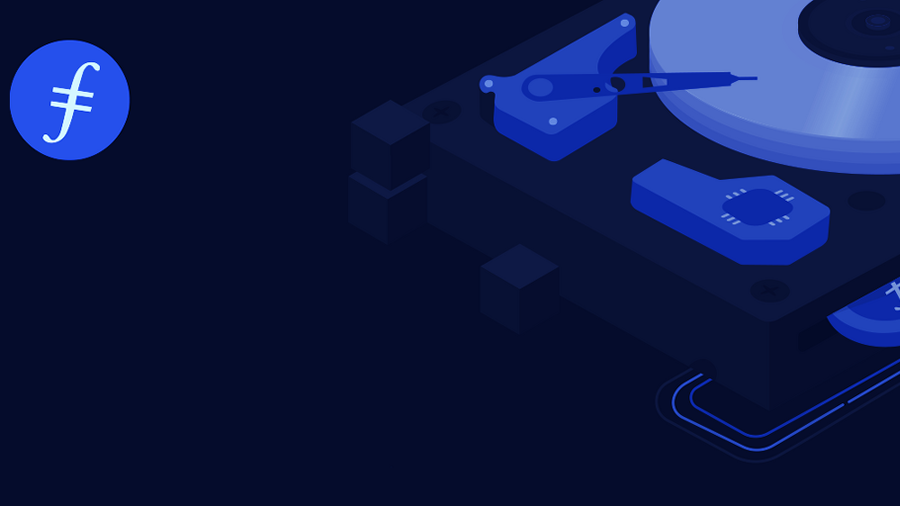
Three years after the sale of $ 257 million tokens, the Filecoin project launched a test storage network on the blockchain, the capacity of which reached 12.9 petabytes.
According to the Filecoin project website, blockchain-based file storage “incentivized testnet” capacity has reached approximately 12.9 petabytes in less than two days since launch.

On August 24, developers launched the Filecoin Space Race, positioning it as a “co-competition” for stress testing the network. The developers of the project are encouraging miners from all over the world to test and promise to give away up to 4 million FIL tokens as a reward.
“Compete and work together. The top 50 miners in each region and the top 100 in the world are eligible for rewards. The larger the total storage capacity, the larger the total prize pool, ”says Filecoin.
The Filecoin testnet currently has a capacity of just over 12 petabytes, which is split between 280 miners – about 46 tebibytes each. The term tebibyte is used to measure the amount of information and was introduced by the International Electrotechnical Commission in 1998. It differs from a terabyte in that the base for the calculation is a binary system, not a decimal system: 10244 (240) bytes, which is almost 10% more than a terabyte (10004 or 1012 bytes).
FIL tokens have yet to be issued, however, the IOU tokens that are used to place bets on the future FIL price are now worth around $ 16.5 according to CoinGecko. At this price, the total prize pool for Filecoin for stress testing is about $ 66 million. The Filecoin Space Race will run for three weeks and end in mid-September.
Last week, it was reported in the media that there was a controversy over the distribution of tokens between Protocol Labs, which is developing the Filecoin decentralized file storage project, and its investors. As a reminder, the launch of the Filecoin testnet has been repeatedly postponed since the project’s developers announced plans to launch the project’s mainnet in 2019.
The regulated sale of Filecoin tokens brought the project $ 257 million in 2017. This was the first campaign to be conducted using SAFT, a list of recommendations created by lawyers based on the requirements of the US Securities and Exchange Commission (SEC).
Hackers attacked the New Zealand Stock Exchange and demand a ransom in Bitcoin
28/08/2020
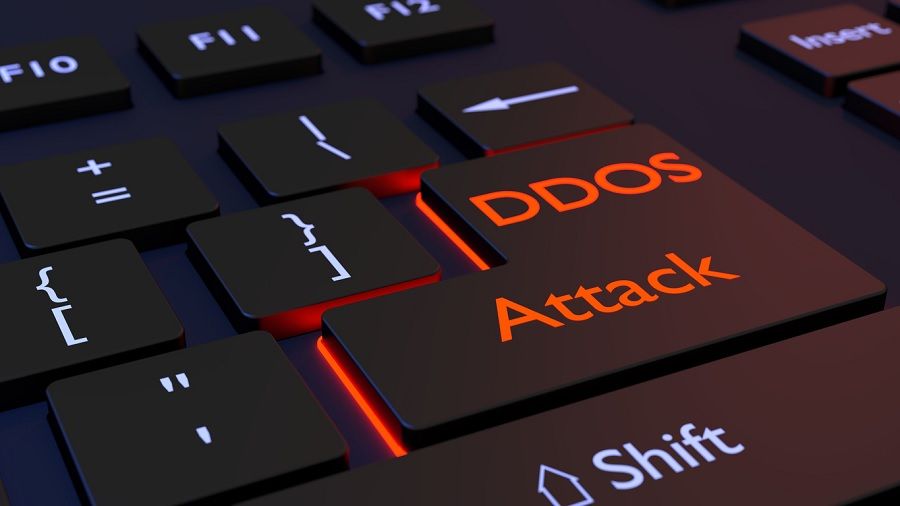
The New Zealand stock exchange NZX has been under attack by hackers for the third day. To stop the attack, the attackers demand a ransom in bitcoins.
Hackers overload the exchange’s communication channels and interfere with its normal operation. They stepped up their attack this morning and the NZX was unable to start trading on time. In addition, trading was closed for an hour on Tuesday and three hours on Wednesday. At the same time, the trading volume on the New Zealand stock market is estimated at $ 135 billion. NZX does not disclose the source of the attack, but, according to Bloomberg, the attack is being carried out from abroad.
“We continue to fight this threat and work with computer security experts. We are doing everything in our power to resume trading tomorrow ”, – said the representatives of the stock exchange.
The attack was launched at the most inconvenient moment for the exchange, as many New Zealand companies are now issuing financial statements, including the national airline Air New Zealand. At the same time, representatives of the exchange emphasize that the internal network of NZX was not compromised, as well as trading information.
Back in November last year, New Zealand’s state cybersecurity agency CERT NZ reported that companies operating in the financial sector were receiving DDoS threats and ransom letters. Interestingly, the letters were apparently sent by members of the Russian hacker group Fancy Bear / Cozy Bear. CERT NZ did not comment on the current attack.
The DDoS attack was also reported by the Korean Stock Exchange, stating that the attack caused the exchange to become inoperable for 3 hours.
In March, during a massive fall in the cryptocurrency market, the popular derivatives exchange BitMEX was subjected to a DDoS attack. As a result, the site paid out $ 200,000 to affected traders.
DeFi protocol dYdX launches perpetual contracts for LINK / USD based on Heinlink oracles
27/08/2020

The dYdX decentralized exchange has launched perpetual contracts for the LINK / USD pair that receive price data from Chainlink decentralized oracles.
The dYdX decentralized exchange has announced the launch of perpetual contracts for the LINK / USD pair. The new contracts will use prices for LINK / USD from Chainlink’s decentralized network of oracles, which provide on-net price data and are tamper-proof.
Perpetual contracts are similar to futures contracts, whereby traders commit to buy or sell an asset at a specific price at a specific point in time. However, there is a difference: futures contracts are often traded at prices significantly different from market prices at the time the contracts are created, while perpetual contracts are usually traded close to the market price of the underlying asset. Perpetual contracts are traded continuously and have no expiration date.
DYdX LINK / USD perpetual contracts are generated with a minimum of 12.5% collateral. This means that traders with a small amount of money can place large bets on the LINK price movement. If the price rises, they will make much more profit than if they simply bought LINK on the open market. On the other hand, if the LINK price falls too much, then the entire amount that the trader used to enter into a leveraged perpetual contract may be liquidated and he will be left with nothing.
The dYdX decentralized exchange was launched in October 2018 and provides trading on the platform with spot, margin and now perpetual contracts. In addition to LINK / USD, dYdX plans to add perpetual contracts for other pairs, as well as implement StarkWire’s scaling technology. In the spring, the developers of the dYdX platform announced that since May 2019, more than $ 1 billion in crypto assets have been issued on it.
Chainlink oracles are integrated into many popular DeFi protocols including Kyber Network, Aave, Synthetix, and more. The total dollar value of locked assets in the protocols that implemented Chainlink oracles exceeds $ 2 billion. We also remind you that in May Chainlink launched provably random values oracles for dApps.
The value of blocked assets in DeFi applications exceeded $ 7 billion
27/08/2020
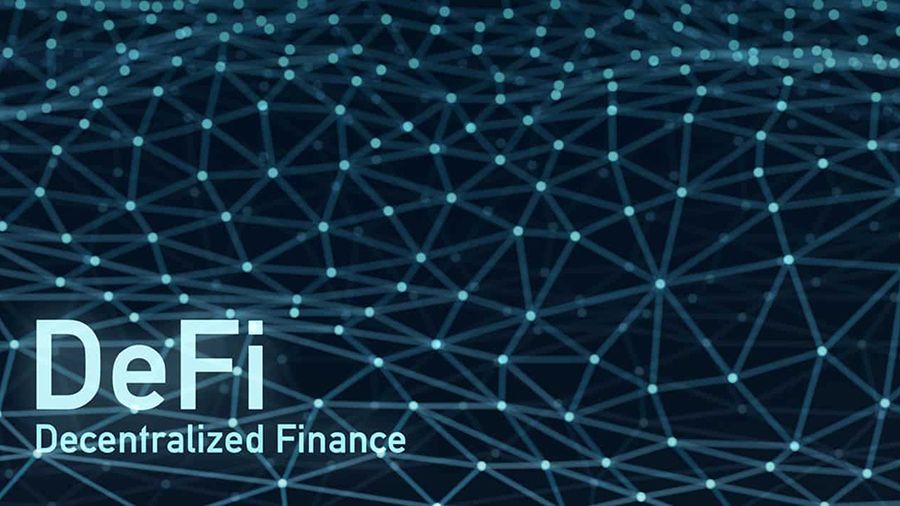
The total value of assets blocked in DeFi protocols grew by 271% in two months and exceeded $ 7 billion. If the current growth rate is maintained, this figure will reach $ 27 billion by the end of the year.
According to DeFi Pulse, today the value of assets locked in DeFi applications in dollar terms for the first time exceeded $ 7 billion, while almost 90% of crypto assets are locked in smart contracts in just six projects.
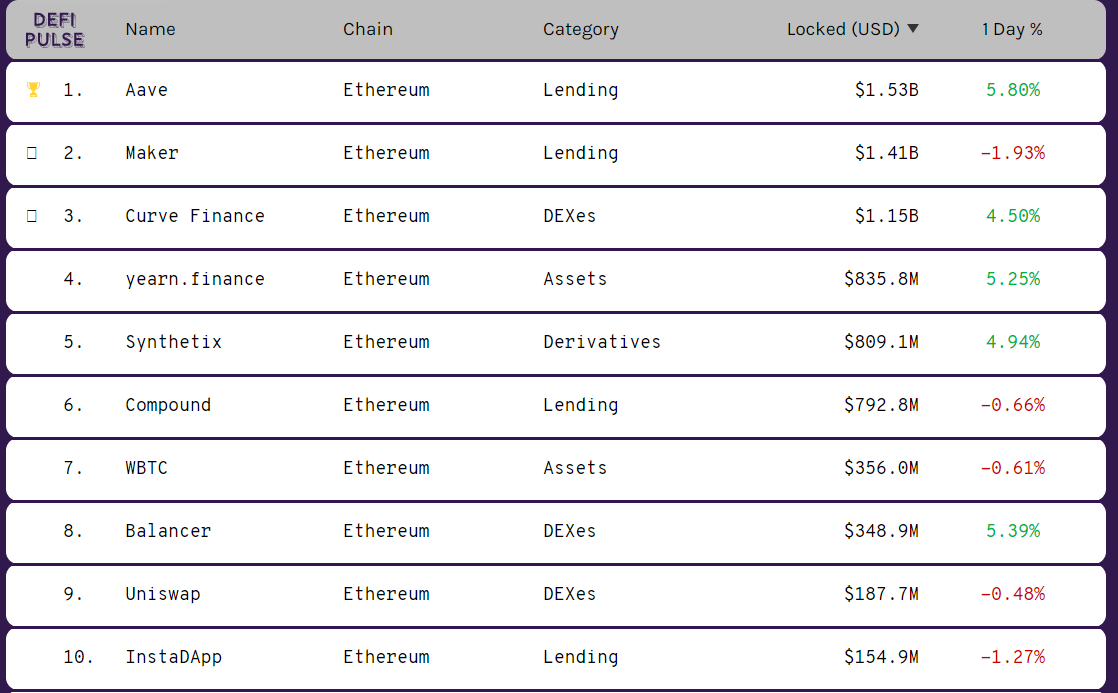
The largest DeFi protocol to date is Aave. During the month, the total value of assets blocked in the protocol increased by more than 300% and has already exceeded $ 1.53 billion. MakerDAO and Curve Finance are in second and third places in the list with blocked assets for $ 1.41 billion and $ 1.15 billion, respectively. They are followed by Yearn.finance, Synthetic and Compound.
Aave recently became a flagship DeFi project after being licensed as an e-money issuer by the UK Financial Conduct Authority (FCA), signaling the sector’s growing legitimacy.
For a fast-growing industry like DeFi, bubbles and major project crashes are inevitable. Recall that recently, the DeFi YAM project, which raised $ 76 million in the sale of tokens, announced its closure due to a critical error in the code. In addition, the YFI token for managing the yEarn protocol raises a lot of questions – its price has increased by more than 1500% in a month and is now $ 13,548.
Some analysts speculate that the rapid growth in the DeFi industry is driven primarily by the rise in the price of cryptoassets involved in the protocols. At current growth rates, DeFi-locked assets will reach $ 27 billion by the end of the year.
Industry leaders are concerned that the DeFi sector is growing too fast, Compound founder Robert Leshner recently tweeted. Ethereum co-founder Vitalik Buterin also expressed his opinion on the situation:
“Reminder: You DO NOT HAVE to participate in the latest DeFi industry events to work with Ethereum. In fact, if you * really * don’t understand what’s going on, it’s best to stay on the sidelines or risk small amounts. There are many other decentralized apps on Ethereum, check them out! “
Boston Fed and MIT will study 30 blockchains to deploy the digital dollar.
26/08/2020

Boston’s Federal Reserve Bank will study 30 blockchains for a digital dollar development initiative. The study is being conducted in collaboration with the MIT Digital Currency Initiative.
Earlier this month, the Boston Federal Reserve Bank said it is actively testing the digital dollar, a tokenized version of the US dollar, in partnership with the Massachusetts Institute of Technology (MIT) Digital Currency Initiative (DCI).
The collaboration builds on previous research and aims to explore how the digital dollar can complement the existing dollar, Boston Fed Senior Vice President Jim Cunha said. The research results will be published and can potentially be accounted for in relation to the real digital dollar, when and if it is released.
“We’re trying to build a platform to see if a distributed ledger can meet the digital currency needs of the US central bank,” he said.
According to him, cooperation is “at the stage of formation”, which means that right now the two institutions are determining what requirements are imposed on the project and what platforms should be used. In the course of the work, the researchers hope to develop requirements for scalability, bandwidth, privacy, resiliency and resilience to cyber attacks.
“I think we will first look at 30 to 40 different open source or very high-level proprietary solutions and then explore some of them more deeply,” said Cunya.
DCI Director and MIT Researcher Neha Narula noted that MIT is a neutral research institution. The project’s researchers will explore various infrastructures and, Narula hopes, will provide concrete data and options for deploying the digital dollar.
“We’re excited about this collaboration because DCI’s goal is to answer the fundamental questions needed to determine under what circumstances a government cryptocurrency is a good idea and how we could deploy it if the Fed decides to do so,” she said. “Working closely with one of the largest central banks in the world is incredibly helpful in providing real-time information on how to formulate and answer these questions.”
Boston Fed Deputy Vice President Bob Bench said the US may have a different view of privacy or other government cryptocurrency-related issues than other countries. Therefore, the study needs to explore possible privacy measures. Even basic questions, such as which programming language should be used, have not yet been resolved, he said.
Cunya said the goal of the project is to publish a joint study over the next two years so that anyone studying the concept of a government cryptocurrency can learn from this collaboration.
Narula noted that the retail-focused digital dollar system will require the fastest possible response and high throughput. It must process a large number of transactions per second while remaining secure. The Fed wants to leverage existing cryptographic systems and distributed ledgers “that have been tested in the real world,” Narula said.
According to the latest report from the Bank for International Settlements (BIS), in 2020, interest in the Central Bank’s cryptocurrencies became higher than in bitcoin and the Libra project. In the Netherlands, China and Sweden, central banks are prioritizing research work on the development of government cryptocurrencies during the pandemic, according to BIS.
Power Ledger Announces Launch of Blockchain Platform for Renewable Energy Trading
26/08/2020

Australian company Power Ledger has announced the imminent launch of a blockchain platform for renewable energy trading in Thailand and Southeast Asia.
The platform is based on joint developments with the Thai renewable energy firm BCPG. One of the earliest Power Ledger and BCPG projects was tested back in 2018, when the firms conducted a pilot green energy sale in the central Bangkok region.
Power Ledger continued to work with BCPG and later was joined by Thai Digital Energy Development (TDED) to help develop the blockchain-based TraceX REC platform. The platform was developed for the transition to clean energy in Bangkok.
The platform has been successfully tested, so firms intend to use it not only in Thailand, but also in Southeast Asia. BCPG plans to sell Renewable Energy Certificates (REC), with the entire process of issuing, selling and expiring certificates being recorded on the blockchain. Each REC certificate issued will certify that 1 megawatt of electricity is indeed sourced from green sources. Such certifications will help various organizations and governments move more quickly to renewable energy sources. In turn, this will help reduce carbon dioxide emissions into the atmosphere.
“Organizations want to make sure that all purchased REC certificates have not yet been used. Firms are also interested in fast transactions. Therefore, the blockchain-based platform will enable transparent, secure and traceable energy trading without the need for intermediaries, ”added Power Ledger co-founder and executive chairman Jemma Green.
Late last year, Power Ledger began testing a solar energy trading project with the Indian state of Uttar Pradesh and partnered with Powerclub to deploy its technology in South Australia.
Apptopia: Mobile Cryptocurrency Trading Grows 81% YoY
25/08/2020
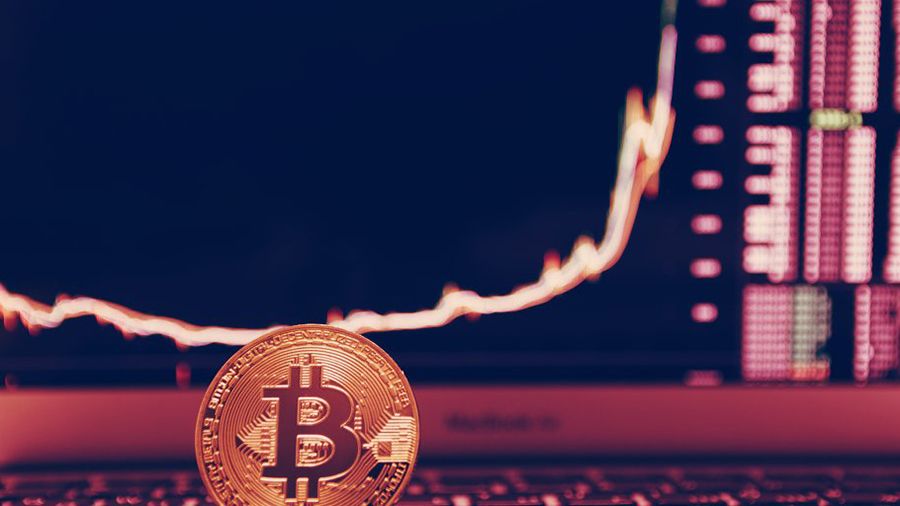
Cryptocurrency trading via mobile apps grew 81% compared to August last year. The most popular mobile apps are Coinbase, Blockchain Wallet and Binance.
According to the latest report from Apptopia, cryptocurrency trading via mobile apps is becoming more popular, with each new month surpassing the previous one in terms of active users and new signups.
Among the most popular mobile cryptocurrency trading apps are Coinbase, Blockchain Wallet, and Binance. According to Apptopia, on August 20, the mobile apps of Coinbase and Crypto.com had a record number of daily active users – 969,000 and 576,000, respectively.
“July is the highest performing month for mobile cryptocurrency applications in the history of the market, and August has the potential to surpass it,” reads an article on the Apptopia blog.
Analysts associate the surge in cryptocurrency trading through mobile applications with the coronavirus pandemic, as well as the rise in the value of crypto assets. Bitcoin is considered by some to be a “safe haven” asset, and although its price dropped by half in mid-March, BTC rebounded in the following months.
Unsurprisingly, the number of new installations of the ten most popular mobile cryptocurrency trading apps peaked in May and July when the bull market began. The situation could also be related to the boom in the DeFi industry that began this summer. Some analysts suggest that 75% of the industry’s growth is driven by an increase in the price of cryptoassets.
Apptopia also notes that cryptocurrencies have grown in popularity in Africa. According to Yellow Card CEO Chris Maurice, cryptocurrencies are on the rise in South Africa, Ghana, Kenya and Nigeria. Installations of the Crypto.com app by users in Nigeria have grown 339% over the past three months.
The popularity of cryptocurrency trading has also grown in Hong Kong – mobile cryptocurrency trading apps are among the top 10 most popular apps on Google Play in the region.
Recall that recently the analytical company CryptoCompare presented a report, according to which the trading volumes on the main cryptocurrency exchanges in July increased significantly.
BIS report: “Interest in government cryptocurrencies has exceeded interest in Bitcoin and Libra”
25/08/2020
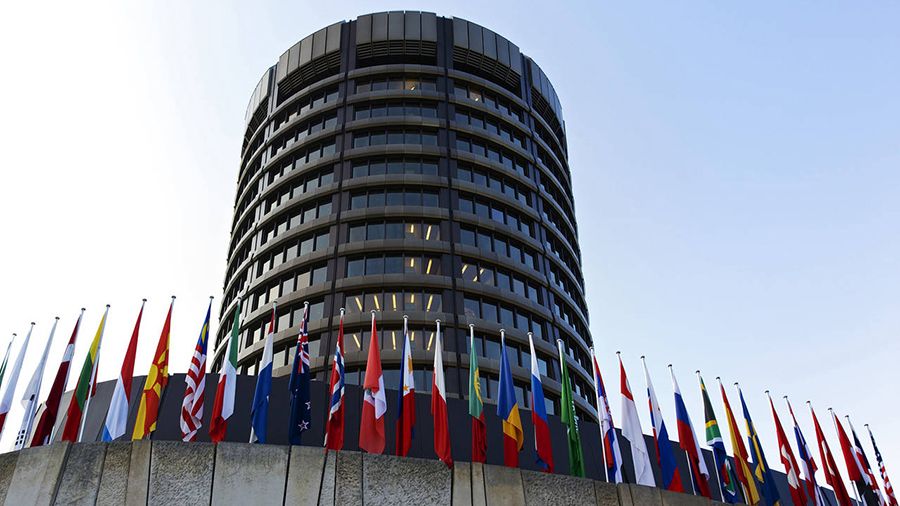
According to a new report from the Bank for International Settlements (BIS), in 2020, interest in the Central Bank’s cryptocurrencies has become higher than in Bitcoin and the Libra project.
In a new working paper, BIS analyzes the global state of research and development of government cryptocurrencies, technical approaches and government attitudes towards this initiative. The comprehensive study draws on more than 16,000 presentations from central bank officials in recent years and evaluates the existing designs of government cryptocurrencies and the motivations behind the adoption of the new model by various countries.
“Attitudes towards the question of whether central banks should issue cryptocurrencies have changed markedly over the past year,” the authors of the document write.
The study includes an analysis of public interest in government cryptocurrencies over time. According to BIS data, in 2020, users around the world were much more likely to search for information about government cryptocurrencies in search engines than about Bitcoin or Facebook’s Libra cryptocurrency.
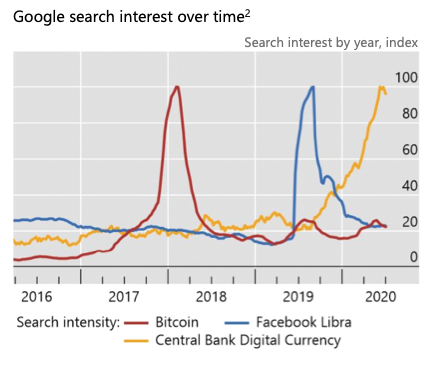
These findings support the report’s suggestion that while the concept of a state-owned cryptocurrency was proposed long ago, it wasn’t until 2020 that the initiative began to gain global attention. BIS offers several hypotheses as to why this happened. First, the organization points to Facebook’s announcement that the company plans to launch its own global cryptocurrency, Libra, and the subsequent public sector reaction in 2019 as a “tipping point.”
Additional data confirms this assumption: as of the end of 2019, “many of the largest central banks have indicated that they are likely to issue their own cryptocurrencies very soon.” Moreover, the share of central banks that can issue retail government cryptocurrencies in the medium term – the next 6 years – doubled in 2019.
According to the BIS analysis, the coronavirus pandemic has become a decisive factor accelerating developments in this area:
“Social distancing measures, public concerns about COVID-19 being transmitted through cash, and new payment schemes between government and individuals have further accelerated the transition to digital payments.”
The BIS report mentions the United States, where early versions of congressional fiscal stimulus bills called for a digital dollar to speed up the distribution of government aid to citizens. In the Netherlands, China and Sweden, central banks are prioritizing research work on government cryptocurrency development during the pandemic.
According to BIS, all of these factors may be enough to overcome the large momentum in the retail payments industry. However, there is a downside to the coin:
“When user behavior changes, it often happens very actively. Likewise, the change in payment behavior caused by the COVID-19 pandemic, such as the increased use of digital payments, could have far-reaching implications in the future”.
Kadena blockchain throughput reaches 480,000 transactions per second
24/08/2020

The Kadena blockchain, developed by former JPMorgan employees, has reached 480,000 transactions per second, increasing the number of forked chains on the network to twenty.
The developers of the Kadena blockchain have doubled the network throughput to 480,000 transactions per second. In comparison, Ethereum 1.x processes about 14 transactions per second. The Kadena blockchain relies on the same proof of work (PoW) mechanism as Ethereum. However, the Kadena developers said they have solved the scaling problem that prevents PoW blockchains from supporting unlimited traffic.
Team Kadena increased throughput by doubling the number of braided chains in its network to twenty. The developers claim that the number of these chains can reach thousands and increase further.
“Launching Kadena and expanding to twenty chains proves that we can scale the Tier 1 blockchain to the point where digital assets can be used by more people,” said Kadena co-founder and CEO Will Martino.
The Kadena team claims the network is “the fastest blockchain platform in the world.” Kadena joins dozens of blockchains, including Algorand, Corda, Polkadot and Blockstack, which promise high bandwidth and low transaction fees.
Their common competitor is Ethereum, which is gearing up to launch ETH 2.0 and increase network bandwidth. Ethereum co-founder Vitalik Buterin said last month that Ethereum 2.0 will support processing 2,000-3,000 transactions per second at launch, followed by 100,000 transactions in about a year.
The Kadena team also announced that they have developed Kadena Kuro, a private free open source version of the Kadena blockchain. Recall that the Kadena startup launched a hybrid blockchain platform earlier this year, and in May integrated decentralized price oracles Chainlink into the blockchain.
First BTC transaction with automated reporting conducted in Switzerland
24/08/2020
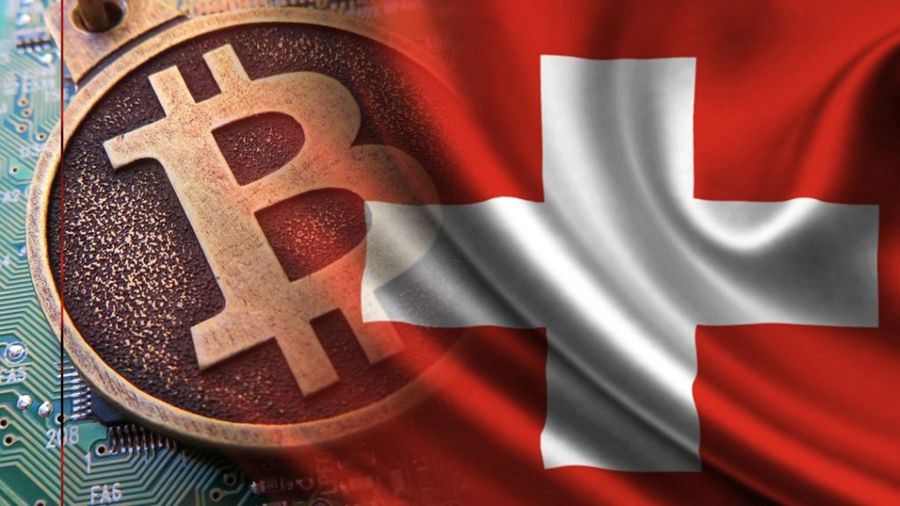
Three Swiss cryptocurrency firms successfully completed the first BTC transaction with automated reporting. The transaction complies with anti-money laundering (AML) regulations.
The participants in the deal were Crypto Finance AG and 21 Analytics from Zug, as well as Mt Pelerin from Geneva. 21 Analytics CEO Lucas Betschart reported that the Bitcoin transaction between Crypto Finance and Mt Pelerin was the equivalent of $ 23. To carry out the transfer, the Travel Rule Protocol (TRP) solution from ING Bank was used. It aims to comply with the recommendations of the Financial Action Task Force on Money Laundering (FATF). In addition, AI technology from 21 Analytics and the OpenVASP solution were used.
The transaction was made in accordance with the industry standard Intervasp Messaging 101 (IVMS101), which defines a unified data model that must be exchanged between Virtual Asset Service Providers (VASP). According to the FATF requirements, cryptocurrency exchanges, wallet operators and service providers must request the details of participants in transactions exceeding $ 1000.
Betschart added that previously the VASP, regulated by the Swiss Financial Market Supervisory Authority (FINMA), had to manually report each transaction. In the case of this transaction, the collection of the necessary information was fully automated.
Recall that last month, the BitGo custodian service integrated a tool into cryptocurrency wallets that allows you to transfer additional data about users and their transactions. The tool also uses the IVMS101 standard.
Ontology, Neo and Switcheo Launch Poly Network Interconnection Platform
21/08/2020
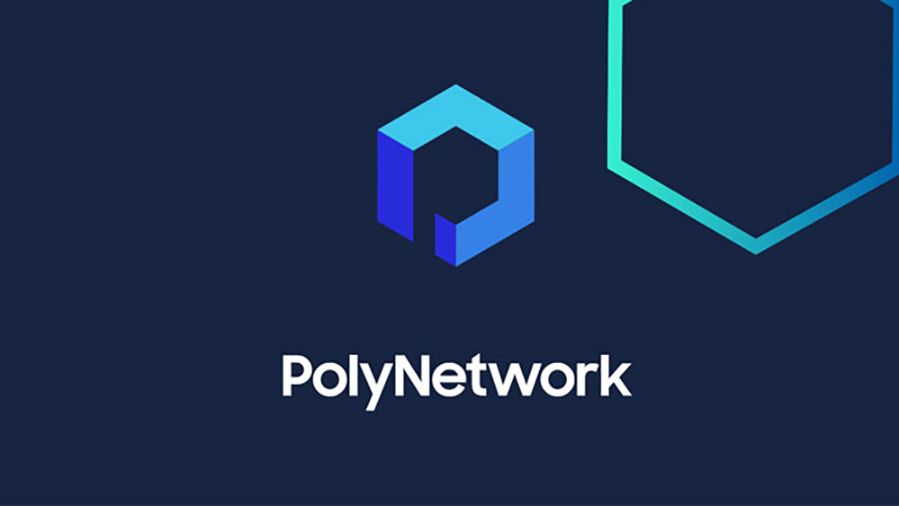
Ontology, Neo and Switcheo have announced the launch of the Poly Network, which will provide inter-network interoperability and hosting of multi-blockchain compatible dApps.
According to the developers, Poly Network will provide transparent and efficient interaction between blockchains. Businesses using different systems will be able to connect to the Poly Network and collaborate and interact with each other through an open and transparent access mechanism.
Ontology co-founder Andy Ji said the Poly Network will provide unprecedented benefits for developers by helping create a decentralized ecosystem through a range of platform offerings that make it easier for users to interact with networks:
“Ontology is already enjoying the benefits of interconnecting with Ethereum. Now, thanks to the Poly Network, businesses using the Ontology blockchain will be able to seamlessly interact with products on Ethereum, Cosmos, or Neo. This will help platforms overcome scalability challenges, accelerate their mass adoption, and foster industry collaboration. Ontology has invested heavily in technical research, development and financial support for the project. ”
According to the developers’ statement, the priority goals of the Poly Network are to ensure interconnection and atomic interconnection transactions, for example, the exchange of cryptocurrencies for tokenized assets. In addition, Poly Network has the following capabilities:
Providing DeFi developers with a new infrastructure to build decentralized applications that are compatible with multiple networks;
Support for both heterogeneous and homogeneous networks, including Ethereum, Neo, Ontology and Cosmos, as well as forks of homogeneous networks of each platform. Future plans include support for Bitcoin;
Providing easy access to inter-network transactions and reducing the required number of smart contracts;
Increase the scalability of interconnected transactions by enabling the transfer of both assets and information.
Ji noted that interconnection is becoming more important as different platforms are now trying to work together. He said:
“Ontology is committed to building an open and transparent blockchain industry and we are proud to partner with Neo and Switcheo to enable true interoperability between blockchains. We look forward to playing our part in this innovative alliance”.
China tests digital yuan payments for large commercial transactions
21/08/2020
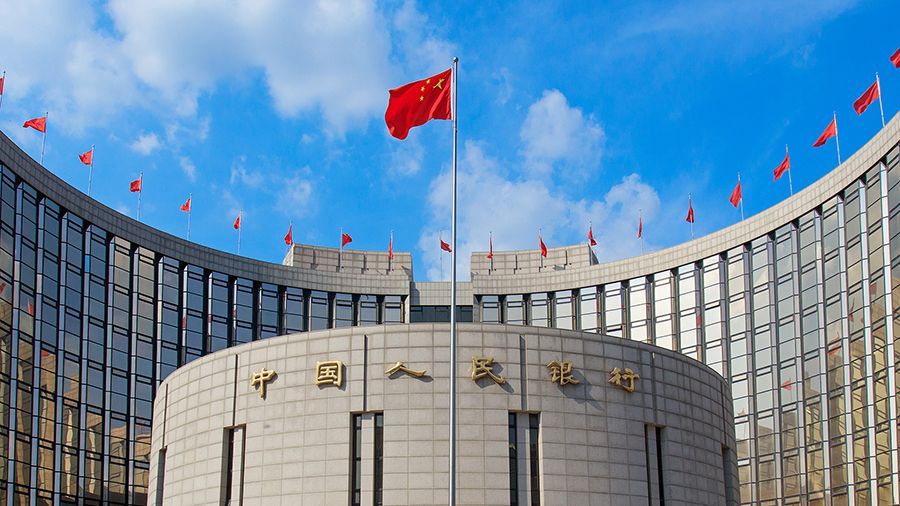
The China Digital Currency Electronic Payment System (DCEP) has entered the testing phase of large commercial transactions and is close to its official launch.
Following the first large-scale testing of China’s Digital Currency Electronic Payment System (DCEP) in Shenzhen, China’s Ministry of Commerce announced that it is expanding DCEP testing to more cities. The system will also be tested in the processing of large commercial transactions, including payments in the hospitality industry and e-commerce.
The Chinese Ministry of Commerce recently released a detailed DCEP test plan in three major financial and political centers in China, including the Yangtze River Delta Economic Zone, which includes Shanghai and neighboring provinces of Jiangsu, Zhejiang and Anhui, Beijing, and the Great Bay Area. Guangdong-Hong Kong-Macau.
From this list, Suzhou, a city in Jiangsu province, will be the first to test the digital yuan. DCEP testing focuses on commercial transactions such as retail, e-commerce, education and transit card top-ups, according to a source in the city who spoke with Jingji21.
Another source told Jingji21 that testing in Shenzhen was also deployed in this direction. Forkast was able to confirm this fact by asking the shoppers of a shop in Shenzhen if they were using DCEP to complete transactions.
According to an anonymous source Forkast, the People’s Bank of China (PBOC) and the Department of Commerce still have internal differences over DCEP that need to be resolved, and it is unclear how this will affect the digital currency rollout. Every NSC employee working on a DCEP project has signed a nondisclosure agreement that prohibits discussion of internal project work.
Stakeholders interviewed by Jingli21 said there is still a lot of internal debate in the NBK about the complexities of changing user habits, such as weaning citizens from using WeChat and Alipay in order for DCEP to be successful. For their part, the NBK and the Commerce Department say that work on the platform is ongoing and they are listening to feedback from stakeholders to improve it.
“We will pay more attention and channel more resources to expanding the use cases of DCEP in the economy as directed by the Department of Commerce and the NBK,” said a spokesman for the DCEP project team. “The specifications have been worked out and the risks are under control.”
Earlier this month, local media reported that four Chinese banks were conducting full-scale testing of the NBK digital yuan app and wallet. In April, the Central Bank of China began testing the state digital currency payment system in four Chinese cities: Shenzhen, Xiongan, Suzhou and Chengdu. In addition to commercial banks, Starbucks and McDonald’s food service chains took part in the testing.
ASIC miner makers return to developing chips for AI
20/08/2020
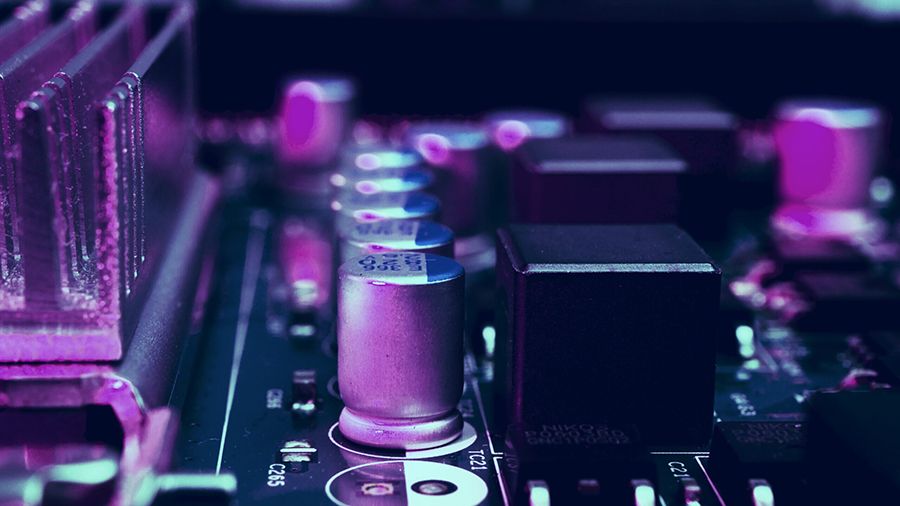
The largest manufacturers of ASIC miners have returned to the idea of producing chips for artificial intelligence (AI) due to the decline in mining profits.
According to a report by analyst firm TokenInsight, the change in market dynamics has forced the three largest manufacturers of mining devices – Bitmain, Ebang and Canaan – to shift the focus from ASIC miners to chips for AI in the long term.
Research and development of microcircuits is the main component of the competitiveness of manufacturers of mining equipment. The industry has annual revenue in the billions of dollars, with Bitmain alone generating over $ 300 million in the first quarter of 2020, according to another report.
However, companies’ profits are gradually decreasing. TokenInsight reports that Bitcoin mining costs have skyrocketed after the Bitcoin halving on old ASIC miners, putting millions of dollars in revenue at stake for the three firms. In addition, emerging miner manufacturers such as WhatsMiner and the development of Proof of Stake (PoS) consensus cryptocurrencies are making it even more difficult to grow and even keep profit.
“In the long term, the mining industry has changed from a highly profitable business to a predictable and fairly stable direction in terms of income,” says TokenInsight.
This, in part, has forced mining equipment manufacturers to seek revenues in other sectors. Since these companies have sufficient technological experience, they made the choice to create chips for AI.
AI chips are specialized processors that perform millions of calculations per second to run software. Their production opens up a new revenue stream for established companies like Bitmain and Ebang.
“Researchers believe that AI chips have a broader perspective and that they largely overlap with ASIC chips in terms of design and manufacturing. The experience of mining equipment manufacturers in the field of chips can be quickly transferred to the field of chips for AI, ”the report says.
Bitmain tried to enter the AI industry back in 2017 with a Sophon chip that could do millions of calculations per second and compete with Nvidia and AMD products. But the project at that time was significantly losing in profitability to the production of ASIC miners and was frozen.
Tether to Launch USDT Stablecoin on OMG Network
20/08/2020

Tether has announced the launch of USDT stablecoin on the OMG Network, a tier 2 scaling solution for the Ethereum blockchain.
As reported by Tether, thanks to the OMG Network, USDT holders will pay fewer fees, and the time to confirm token transactions will be reduced without compromising security. Tether CTO Paolo Ardoino said that making USDT transactions on the OMG Network will reduce costs, improve network performance and reduce the load on the underlying blockchain.
This will positively impact Tether customers, the entire Ethereum ecosystem, and the Bitfinex cryptocurrency exchange. The OMG Network will make it easier to deposit and withdraw USDT to this platform, so traders will be able to react faster to market changes and arbitrage between exchanges more efficiently.
Currently, the total throughput of the Ethereum blockchain is about 12 transactions per second. If the number of transactions increases, along with this, the time of their execution and the cost of gas, that is, the transaction fees, increase. Ethereum’s transaction fees hit new highs last month, according to Etherscan. On July 18, the network used 74.033 billion gas, and on July 22, the network again approached the mark from 74.015 billion gas. In addition, USDT transaction fees on the Ethereum network totaled $ 2.56 million in June.
OMG Network CEO Vansa Chatikavanij added that the network supports thousands of transactions per second, and the cost of transaction fees is two-thirds lower compared to similar transactions on the Ethereum network. OMG Network is trying to address the major challenges facing Ethereum and furthering the development and adoption of open source financial services.
According to Messari, in 2020 the capitalization of the USDT stablecoin doubled and exceeded $ 10 billion.In addition, recently, Tether issued USDT stablecoins totaling $ 540 million on the Tron and Ethereum blockchains, explaining this by the need to replenish the USDT reserves.
SpaceChain made a “space” transaction in BTC with a multisignature via the ISS
19/08/2020

SpaceChain made a “space” transaction in BTC with a multisignature via the ISS
The SpaceChain project successfully sent 0.01 BTC with multisignatures using dedicated hardware on the International Space Station (ISS).
The developers of the blockchain-based satellite project SpaceChain reported that they sent 0.01 BTC to two Bitcoin addresses. They used special equipment to transmit encrypted data through a ground station to the ISS. It was created by GomSpace, a satellite manufacturer using nanotechnology, and was subsequently placed on the ISS.
Unlike a regular transaction, a multisignature transaction requires confirmation from multiple people. This increases the level of security and allows you to create “collective” wallets, access to which depends on multiple users.
“We’ve worked hard to make multi-signature transactions from outer space a reality. We managed to create an open satellite network based on blockchain with an increased level of security and immutability. SpaceChain’s mission is to connect space with blockchain technology, ”said SpaceChain co-founder and CTO Jeff Garzik.
The project received support from the European Space Agency (ESA), becoming a member of the Kick-start Activities program and winning a grant of 60,000 euros. In the future, SpaceChain developers plan to create new products for digital banks and firms working in the field of fintech. Last December, SpaceChain sent a hardware wallet to the ISS, which was delivered by SpaceX’s Falcon 9 rocket, with Nanoracks contributing. Once the hardware was activated, it was used to receive, confirm, and retransmit multisigned transactions on the Qtum and Ethereum blockchains.
“This event brought humanity closer to the use of space systems and the latest technologies in the commercial market. We will continue to support SpaceChain to help the project achieve its goals in space and beyond, ”added GomSpace CEO Niels Buus.
SpaceChain isn’t the only firm trying to combine satellite technology and blockchain. In 2017, Blockstream launched the Blockstream Satellite service, allowing Bitcoin users to transfer BTC via leased satellites.
Coinbase Engineer Names Technical Requirements For Listing ERC-20 Tokens
19/08/2020

Coinbase security engineer Nadir Akhtar spoke about the technical factors that ERC20 tokens must meet to be placed on the platform.
Nadir Akhtar named four characteristics that issuers’ tokens should have when they want to list their assets on Coinbase. This is the presence of verified source code; using libraries that comply with industry standards; limited options for privileged members; and simple and modular design.
Akhtar explained that the source code of the token contract must be verified, and this requirement is paramount for listing. The engineer recommended that developers upload the source code for all smart contracts to trusted platforms, including Etherscan and the Github repository.
Second, to create ERC-20 tokens, developers need to use open standards for smart contracts and not write the entire contract code from scratch. Otherwise, important details can be overlooked, which could compromise the integrity of the token. According to a Coinbase engineer, the OpenZeppelin smart contract repository can be used for this purpose.
Third, smart contracts for ERC-20 tokens should include restrictions for administrators and other privileged users. If the smart contract allows you to suspend transactions, change balances, or completely change the logic of the token, this greatly reduces the likelihood of a token being listed on Coinbase.
Finally, to avoid any complications, token protocols should be simple and modular in design.
In addition, Coinbase security engineer said that external audits, detailed technical documentation, code compliance with the updated version of the Solidity language, and comprehensive tools for early error detection are equally important. Akhtar stressed that audits of smart contracts are very important, because even one bug can lead to losses in millions of dollars.
“If you follow these security principles when developing tokens, you can create an open financial system with a high level of security,” wrote a Coinbase engineer.
As a reminder, the DeFi YAM Finance project was closed last week. The startup began an ICO, which raised about $ 76 million, without going through an audit. Less than two days later, YAM Finance closed due to a critical error in the smart contract code.
Bitcoin hashrate declines amid storms in Sichuan
18/08/2020

In the past week, the Chinese province of Sichuan, whose miners generate more than 50% of the hashrate of the Bitcoin network, was hit by storms. As a result, part of the cryptocurrency mining capacity was shut down.
Storms in Sichuan are leading to power outages in some areas of the province, and some hydroelectric power plants are turning off generation to contain floods. It is equally important to disconnect communications in certain regions.
According to the BTC.com portal, as a result of the shutdowns of mining farms, the hash rate of the four largest mining pools PoolIn, F2Pool, BTC.com and AntPool, which are located in China, decreased by 10-20% over the past 24 hours.
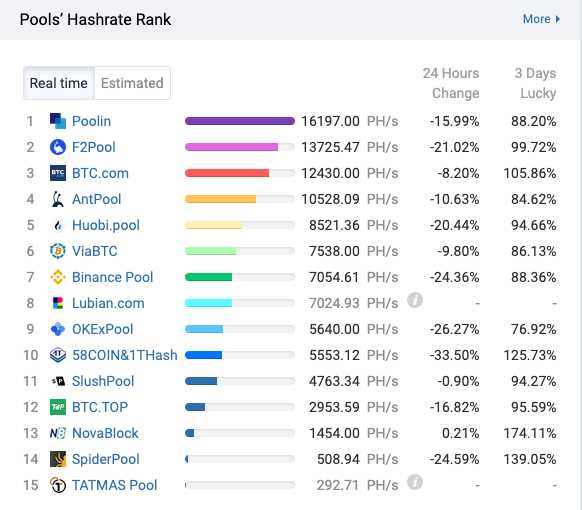
Thus, the average three-day hash rate of the Bitcoin network dropped to 123 Eh / s, and the average daily – to 110 Eh / s. These indicators are below the average hash rate for 7 days by 3% and 10%, respectively.
Recall that during the rainy season in the Chinese provinces of Sichuan and Yunnan, energy generation greatly increases, which is used by the miners of bitcoin and other cryptocurrencies. However, mining in these provinces is associated with flood risks.
In mid-July, the hash rate of the Bitcoin network reached a historic record of 148 Eh / s. Then analyst Max Keiser expressed the opinion that the bitcoin rate will follow the hash rate and continue to grow.
Prysmatic Labs Developed Solution to Resolve Sync Bug on Medalla Testnet
18/08/2020

On August 14th, unplanned forks occurred on the Ethereum 2.0 testnet – Medalla. The Prysmatic Labs development team has found a solution to fix a bug that disrupted Medalla.
Medalla’s testnet was launched on August 4th. Its goal is to enable the transition to a Proof-of-Stake (PoS) algorithm. About 26,000 validators joined the testnet, and users transferred over 830,000 ETH to the testnet.
According to TrustNodes, on August 14, Medalla experienced unscheduled forks – the network split into four chains. The difficulties arose due to problems with the third-party CDN service Cloudflare, which is used by the Prysm client.
Problems accessing Cloudflare lasted four hours, so internal node times changed by about the same period. Some of the validators began to transfer blocks that have not yet been released for other nodes. In addition, the validators were unable to process blocks correctly and receive rewards.
As a result, the testnet blockchain broke into several chains, as some nodes were “stuck” behind for several hours. This resulted in numerous requests from the parent chain for synchronization. The number of testnet participants who successfully confirm blocks dropped from 75% to 5%. It later turned out that Prysm did not have alternative functions that would allow it to keep track of time correctly even in the event of a service problem.
The Prysmatic Labs team has unveiled the Alpha.22 solution that can address the current sync issues on the Medalla testnet. Several more malfunctions were previously eliminated. The developers tweeted that they would need any help getting Medalla back up and running. To add more healthy peers to the network, they recommended upgrading the nodes.
Prysmatic Labs co-founder and Ethereum protocol developer Preston van Loon emphasized the importance of using the testnet to detect and fix these kinds of bugs before the Ethereum 2.0 mainnet goes live.
Last month, creator of Ethereum wallet MyEtherWallet, Kosala Hemachandra, said that full deployment of Ethereum 2.0 should not be expected until 2022. He believes there is a need to take a cautious approach to triggering an update when it comes to custom funds and immutable blockchain.
SEC fined startup Boontech $ 150,000 for fraud and illegal ICO
17/08/2020
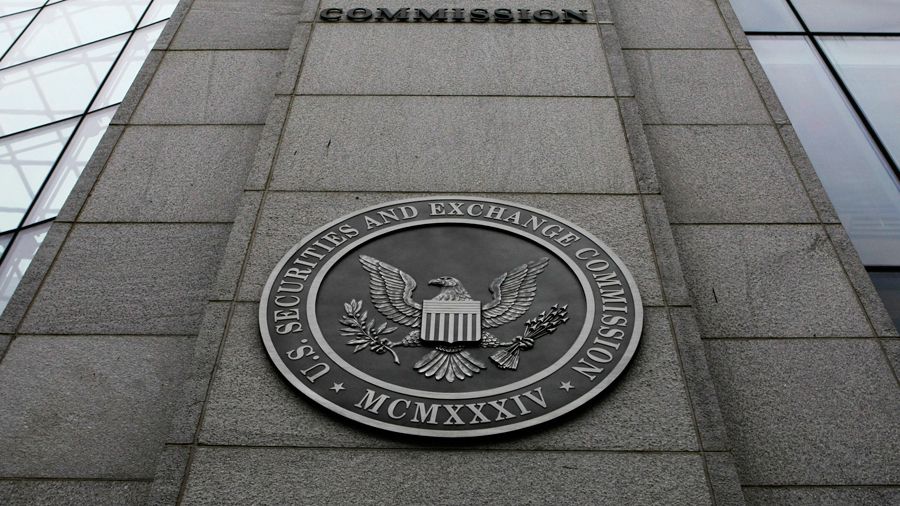
The US Securities and Exchange Commission (SEC) fined cryptocurrency startup Boontech $ 150,000 for providing false information to investors and conducting an unregistered ICO.
According to the SEC, between November 2017 and January 2018, Boontech sold $ 5 million worth of Boon Coins. More than 1,500 American investors took part in the token sale. The Commission accused Boontech co-founder Rajesh Pavithran of selling unregistered securities and defrauding investors.
According to the SEC, Pavitran provided false information about his project, which allegedly used a special technology that eliminates the volatility of Boon Coins tokens, hedging risks with the US dollar. Boontech management claimed to have filed a patent application for this technology and it is pending. The SEC has warned that no such technology exists.
Pavitran also stated that his platform is much faster compared to other platforms, since it was developed on the basis of a closed blockchain. The SEC called these statements false. In fact, Boontech used an open blockchain just like its competitors.
Pavitran pleaded not guilty, but did not dispute the Commission’s charges either. He agreed to return the $ 5 million raised during the ICO, as well as pay the interest earned on the sale of tokens. In addition, the SEC demanded that Pavitran pay a $ 150,000 fine and banned him from working as a director in public companies.
Recall that at the beginning of the year, the SEC fined the startup Enigma MPC $ 500,000 for an unregistered token sale. The commission also brought charges of conducting an illegal ICO on the Opporty B2B marketplace. In addition, the SEC announced last month that it will track transactions on the Binance Chain blockchain using CipherTrace tools.
BitMEX will begin to verify users
17/08/2020
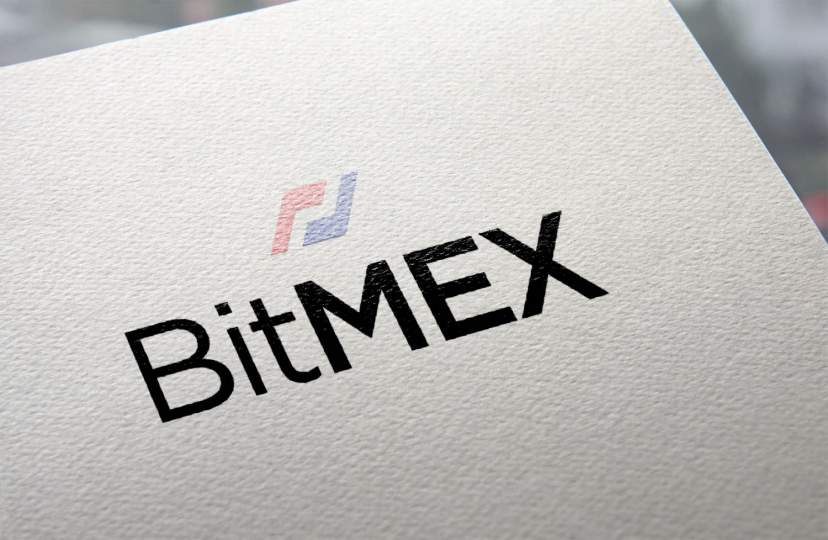
The popular cryptocurrency derivatives exchange BitMEX announced that on August 28, a user verification program will be launched on the site.
According to an article in the company’s blog, users will be required to provide documents proving their identity and place of residence. Exchange clients will have 6 months to complete the verification procedures. The article says:
“Retail customers will need to upload a passport photo and proof of address, take a selfie and answer a few questions about the source of funds and trading experience. The whole process will take a few minutes. Corporate clients will have to go through an already existing verification process, and our team will help them do it as quickly and efficiently as possible. ”
BitMEX was one of the first cryptocurrency derivatives trading platforms and has always carefully adhered to the “spirit of free cryptocurrencies” – it did not require identification and worked exclusively with the input and output of digital assets. However, it looks like the site is trying to get started in new jurisdictions that require user verification.
BitMEX employee Ben Radclyffe said the identification procedures will help the company in the long term. According to him, they “will make the work with regulators more transparent and accurate and support the requirements of regulators.”

Note that in recent months, the exchange has not been doing very well – since November last year, the company’s share in the cryptocurrency derivatives market has dropped by about half. In addition, in June, Bitcoin Manipulation Abatement (BMA) accused BitMEX of manipulating the market and serving American citizens without the required license.
Waves Enterprise Developers Release New Node 1.3
14/08/2020
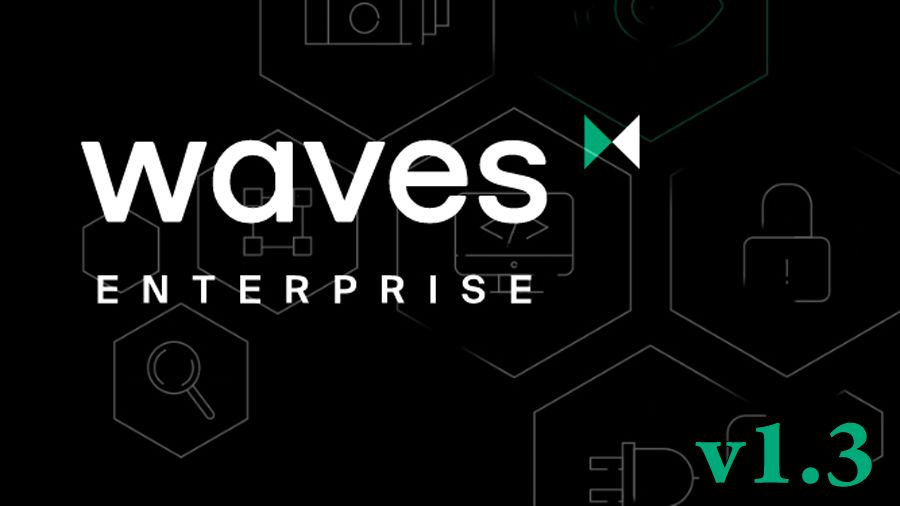
Waves Enterprise developers have released a new version of node 1.3. Activating the update will expand the functionality of the main network and increase its performance by 30%.
The new version of the site contains more than 20 improvements, but the developers have provided information only about the main changes. The v1.3 functionality allows you to run certain types of smart contracts in multiple threads, so they are executed in parallel. On average, this will increase the efficiency of smart contract data processing by 5 times. Main network performance will be increased by 30% by optimizing latency during microblock creation.
At the request of Waves Enterprise partners, the development team has added a function to confirm the results of the execution of a smart contract by several network nodes. This option will increase the level of security in the execution of smart contracts. S3 / Minio support has been added as a storage for sensitive data in order to transfer large amounts of data.
The platform user interface has also undergone changes. A new section “Network statistics” has appeared, which displays information about the number of nodes, average block size, number of blocks in the chain, network load, as well as statistics for the selected period: graphs on the number of transactions of different types and data from the oracle. In addition, customers have the opportunity to directly contact the developers.
Recall that in December, Waves introduced the Gravity Hub solution aimed at improving the “communication” of various blockchains and decentralized applications, as well as efficient data acquisition. In addition, last week, Ontology and Waves began jointly developing the infrastructure for blockchain interoperability.
Thailand’s SEC Issues Four Licenses to UpBit
14/08/2020
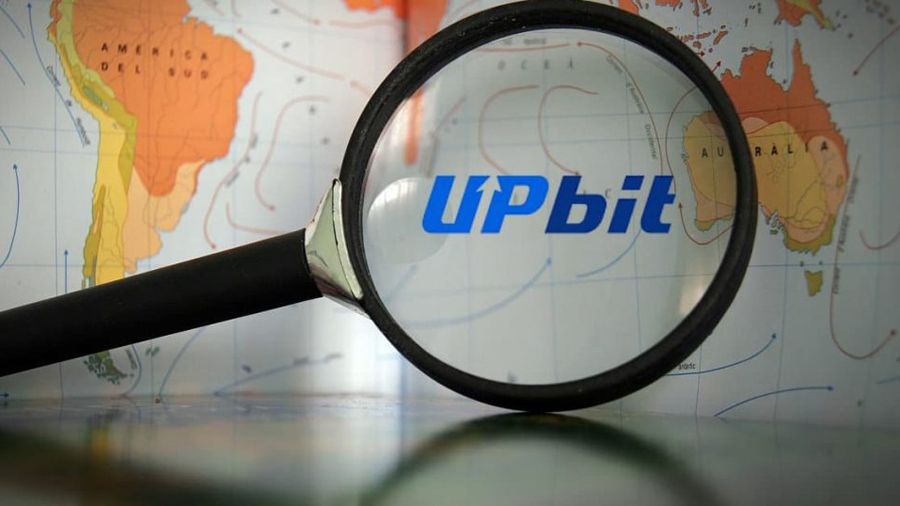
South Korean cryptocurrency exchange UpBit has received four licenses from the Thailand Securities and Exchange Commission (SEC) to operate in the country.
Due to uncertainties over the regulation of the cryptocurrency industry in South Korea, Upbit was forced to ban foreign traders from trading in fiat currencies. This was one of the reasons why the management of UpBit opened a new division in Thailand, having received regulatory approval. Thailand’s SEC has granted UpBit four licenses, allowing it to operate in the country as a cryptocurrency exchange, digital token exchange, cryptocurrency broker and digital token broker.
UpBit Thai CEO Peeradej Tanruangporn said UpBit was the first digital currency organization to receive all four licenses.
Tanruangporn explained that in Thailand, separate licenses are issued to conduct exchange and brokerage activities. An exchange license allows order matching, and a brokerage license allows operators to transfer a user’s order to another exchange.
The head of UpBit Thailand added that the SEC has not yet completed the final audit. However, the site can already provide Thai traders with services for the exchange of cryptocurrencies, as well as for trading digital assets and fiat currencies. The exchange has yet to determine which cryptocurrency pairs will be available for trading. Tanruangporn added that UpBit will liaise with Thai regulators on tax issues to maximize the interests of investors and service providers.
Last year, the Thai government approved an amendment to the Securities and Exchange Act allowing the issuance of securities on the blockchain. This allowed firms to obtain licenses to act as depositories for securities and digital tokens.
Apollo Fintech introduces NPP platform for settlements in government cryptocurrencies
14/08/2020

The developers of the Apollo Fintech startup have presented the National Payment Platform (NPP) platform based on the blockchain, which will allow settlements with state cryptocurrencies.
The developers explained that NPP is a cashless settlement system that central banks can use after issuing their own stablecoins. Government agencies will have the opportunity to interact with commercial banks and other financial institutions to conduct settlements in stable cryptocurrencies issued by central banks.
The platform will allow making transactions between individual users and merchants using SMS, QR code and bank cards. Payments can even be made using text messages. This means that in theory the system will be able to support even outdated phone models.
“NPP will simplify communication between economic market participants, as well as save their time and resources. Payments using government cryptocurrencies will be much more efficient and it will be easier for central banks to adopt their stablecoins, ”said Stephen McCullah, CEO of Apollo Fintech.
He added that the new system will remove possible barriers that banks may face when launching their own cryptocurrency. According to the head of Apollo Fintech, if you provide access to such stablecoins to all banks, individuals and organizations, it will accelerate the development of the cryptocurrency industry and the widespread adoption of digital payments.
Last month, it became known that the Bank of Japan has created a new division to accelerate the development and release of its cryptocurrency. A few years ago, the deputy president of the Bank of Japan Masayoshi Amamiya said that such digital currencies would not be able to improve the existing monetary systems. In addition, Chinese media reported last week that several banks have already begun full-scale testing of the People’s Bank of China (PBOC) digital yuan app and wallet.
One-day: the DeFi YAM project that raised $ 76 million closed due to a bug
14/08/2020

The DeFi YAM project, which only the day before yesterday raised $ 76 million in the sale of tokens, today announced its closure due to a critical error in the code.
YAM Finance has excellently illustrated the risks of the explosive growth of the decentralized finance industry. In the best traditions of the “instant” ICO of 2017, on Tuesday, in just an hour, the project raised more than $ 76 million, despite the developers’ warnings about the lack of audit. At its peak, the capitalization of the YAM token rose to $ 470 million, and the price reached $ 167. However, today the token collapsed to zero in half an hour after the announcement of the closure of the project.
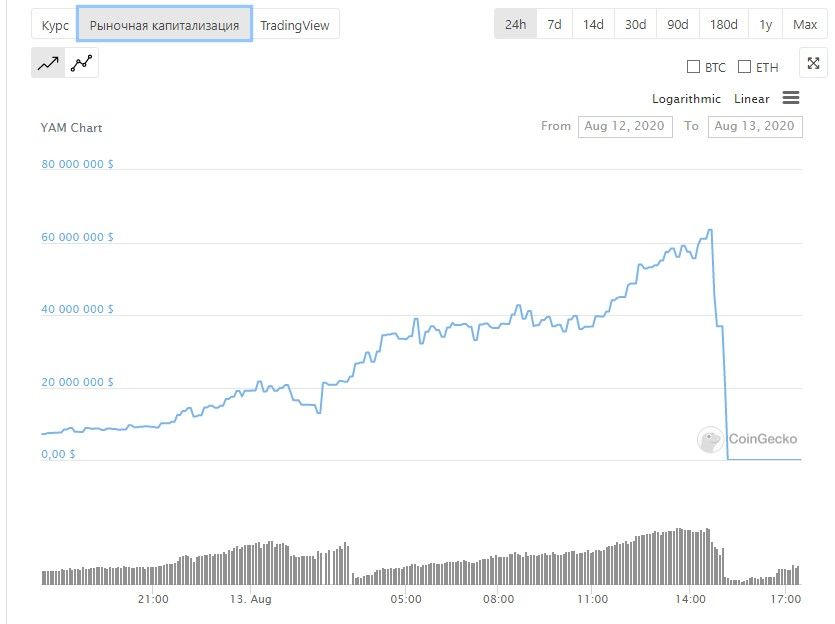
Shortly after launch, a critical bug was discovered in the smart contract that allowed for the unintended emission of YAM tokens. This effectively deprived token holders of the opportunity to participate in project management. To solve the problem, it was decided to collect a pool of liquidity, but the attempt to save the protocol failed and today at 11:01 Moscow time, the developer and co-founder of YAM Finance Brock Elmore announced the death of the project. After that, the capitalization of the token quickly collapsed to zero.
However, the developers, inspired by the “success” of the project at the token sale stage, have already announced the creation of YAM Finance 2.0.
A recent study by DeFi Italy co-founder Simone Conti found that DeFi project tokens are focused on a small number of wallets.
The Block: Ethereum Miners’ Revenues Hit Two-Year High
13/08/2020
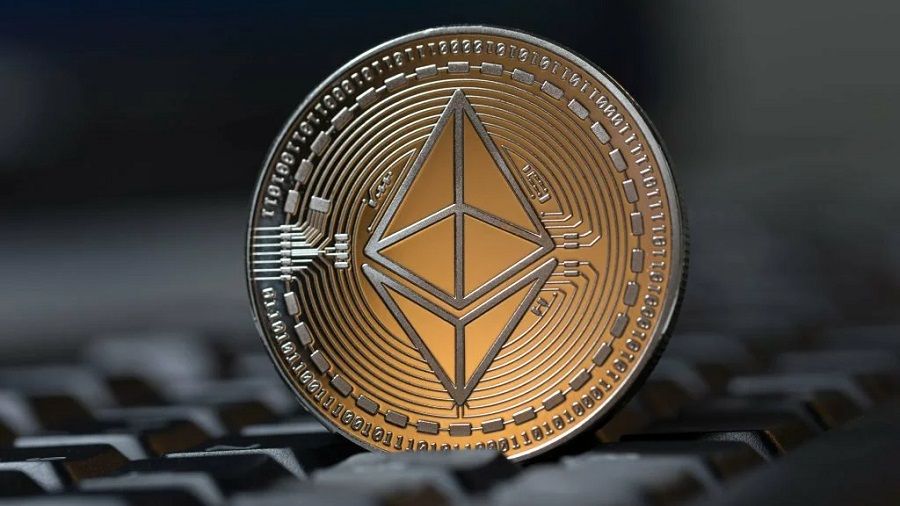
The Block analyst Larry Cermak reports that Ethereum miners earned $ 143.8 million in July, the highest in 23 months.
Interestingly, in recent months, the share of miners’ income not from block mining, but from transaction fees has been growing significantly. Of the total revenue of $ 143.8 million, transaction fee income was 23%, or about $ 33 million. By comparison, in May, commission income accounted for only 10% of total miners’ income.
Bitcoin miners generated $ 299 million in July, nearly double that of Ethereum miners. In July, bitcoin miners received 8% of the income from commissions, and in June this figure was 4%. At the same time, over the month, the average transaction size in the network of the first cryptocurrency grew by 525%.
Chermak also said that in July, the volume of stablecoins continued to grow – the total capitalization of the stable cryptocurrency market amounted to $ 13.2 billion.For comparison, in June it was $ 12 billion.There was also an increase in trading volume on cryptocurrency exchanges in July, immediately by 51%.
In mid-July, it was reported that from April to June, miners were constantly reducing the sales of mined BTC. They were waiting for the opportunity to sell bitcoins at a higher price and, as we can see, the miners’ expectations came true, because bitcoin broke through the resistance at $ 10,000 and reached $ 12,000.
Coinbase will issue loans secured by bitcoins in the US
13/08/2020

Coinbase, a major American cryptocurrency exchange, is preparing to launch the Borrow loan service in the United States, within which customers will be able to receive loans in US dollars secured by bitcoins.
The launch of Coinbase Borrow is scheduled for this fall, while initially only 17 US states will be able to use the service. However, in the future it is planned to expand the geography of the lending service. In addition, if at first it will be possible to provide loans only with bitcoins, then later they will add support for other cryptocurrencies.
Clients will be able to receive in cash up to 30% of the value of collateralized bitcoins, while the maximum loan amount will be $ 20,000. Clients will pay 8% per annum for using the loan, and the maximum term will be 12 months. The rate will become the same for all customers, but the service reserves the right to revise the terms of the loan, based on various factors.
According to BlockFi, which already provides loans secured by cryptocurrencies, customers usually borrow funds for short-term needs, such as fixing a car or renovating a house. The cryptocurrency ecosystem allows you to take out loans without having to fill out huge applications and go through credit checks.
As a reminder, in July, exchanges Coinbase, Gemini, Kraken and Bittrex announced plans to launch a system for the exchange of user data in order to comply with the requirements of the Financial Action Task Force on Money Laundering (FATF).
Ireland will tighten regulation of the cryptocurrency industry

13/08/2020
Ireland will introduce amendments to the legislation that will tighten the regulation of the cryptocurrency industry to combat money laundering and terrorist financing.
Irish Justice Minister Helen McEntee announced that a bill will soon be presented to implement the EU’s Fifth Anti-Money Laundering Directive (5AMLD), which entered into force in January 2020. The Cabinet of Ministers supported the amendments to the current legislation. The updated money laundering law will contain provisions for all participants in the cryptocurrency industry. These will include trading platforms and cryptocurrency wallets.
Irish regulated banks and financial institutions will also be prohibited from creating anonymous safety deposit boxes. McAntee added that while updating the legislation, politicians had to work closely with regulators to properly formulate the language regarding the work with cryptoassets. She believes that the amendments to the regulation of digital assets are necessary to protect the rights of cryptocurrency investors.
Note that due to the 5AMLD directive, many trading floors had to change jurisdiction. So, due to the new EU regulation, the non-custodial exchange KyberSwap left Malta and registered in the British Virgin Islands. For the same reason, the Deribit cryptocurrency derivatives exchange moved from the Netherlands to Panama.
A vulnerability was found in the Tor browser that allows to steal bitcoins
12/08/2020

A cybersecurity specialist working under the pseudonym nusenu discovered a vulnerability in the confidential Tor browser.
Hackers can get a chance to steal bitcoins if they take control of the exit nodes. The Tor browser uses technology that increases the anonymity of users on the network by hiding their IP addresses. The data is encrypted using “onion routing” through multiple intermediate nodes. According to researcher nusenu, the main threat is the operators of the exit nodes, receiving information about the real purpose of user requests.
To gain complete control over unencrypted HTTP traffic, hackers selectively remove HTTP-HTTPS redirects. Attackers pay special attention to requests for bitcoin mixers and sites related to cryptocurrencies. By controlling exit nodes, hackers can remove encryption protocols on such sites and view and track user data. The vulnerability allows hackers to change Bitcoin addresses in HTTP traffic and redirect transactions to their wallets.
This year, hackers managed to take control of 24% of Tor exit nodes. By May, their number had reached 380, and this figure is much higher than the last five years. Despite the fact that man-in-the-middle (MITM) attacks are no longer new, the expert was surprised at the scale of the attack.
On June 21, Tor administrators carried out the elimination of malicious nodes, but attackers still control more than 10% of exit nodes. Therefore, attacks are likely to resume. To solve this problem, the researcher suggested temporarily limiting the number of output nodes or working only with proven node operators. This will require verification of email addresses or an actual network address.
As a reminder, last year hackers distributed a fake version of the Tor browser with malware to steal bitcoins.
Coinbase Leaves Blockchain Association After Joining Binance.US
12/08/2020

Coinbase cryptocurrency exchange withdrew from the Blockchain Association advocacy group due to the fact that Binance.US joined it.
Coinbase management believes that the decision to include Binance.US as a member of the Blockchain Association is contrary to the mission of this organization. Coinbase called such a step ill-considered, and it allegedly could cause “irreparable damage” to the credibility of the Association. At the same time, the exchange did not indicate what the damage could be and why Binance does not deserve membership in the Association.
The real reason for Coinbase’s displeasure is that Binance’s US arm is competing with it for cryptocurrency traders in the US. In an address to the top manager of the Blockchain Association, Kristin Smith, Coinbase executives indicated that the Association attracts members without meeting “certain criteria.”
Meanwhile, the Blockchain Association has expressed regret at Coinbase’s exit from the organization during such a difficult time for the industry. The human rights group noted that it complies with the requirements for the selection of participants. The decision to include Binance.US received a majority vote on the Association’s board of directors. Binance.US management declined to comment on the situation.
According to a Twitter post from the Blockchain Association, in order to accelerate the development of the blockchain industry and the development of cryptocurrency legislation, it is necessary to team up with all major companies, investors and innovative projects from the cryptocurrency industry. This will facilitate the introduction of technological innovation in various industries, including the financial sector, as well as facilitate the creation of open blockchain-based networks.
For two years, the organization has already achieved some success. This month, an advocacy group called on the Office of the Comptroller of the Currency (OCC) to allow banks to make payments and accept deposits in stablecoins pegged to the US dollar. In addition, the group is working on the adoption of the Token Taxonomy Act and the Digital Taxonomy Act, taking cryptocurrencies out of the definition of securities.
As a reminder, the Blockchain Association previously supported Kik and Telegram messengers in litigation initiated by the US Securities and Exchange Commission (SEC).
NYDFS Unveils List of Allowed Crypto Assets for Storage and Listing on Exchanges
11/08/2020

The New York State Department of Financial Services (NYDFS) has approved eight cryptoassets for listing and trading on exchanges and ten for holding in licensed organizations.
The regulator’s website presents two categories of assets: cryptocurrencies, which are allowed to be stored in licensed firms, and cryptoassets, available for trading on exchanges. The second category includes BTC, ETH, BCH, LTC, BUSD, GUSD, PAXG and PAX. In the first category, in addition to these cryptocurrencies, XRP and ETC were added.
The NYDFS clarified that any firm with a BitLicense to conduct cryptocurrency activities in New York State can operate with assets from these lists. Before companies start using them, they must notify regulators.
NYDFS has overseen the cryptocurrency industry in New York State since 2015. In June, the NYDFS announced that it would make it easier for cryptocurrency firms to obtain a BitLicense and suggested using a conditional license under which startups could work with companies that already have a valid BitLicense. Additionally, NYDFS Superintendent Linda Lacewell said last month that the industry has generally reacted positively to the changes made to BitLicense. These changes affect the approval process for cryptocurrencies for listing and the structure of their placement on exchanges.
Recall that more than half a year ago, Governor Andrew Cuomo proposed to tighten regulation of cryptocurrency companies and expand the powers of the NYDFS in regulating the activities of licensed companies working with digital assets.
ICO Analytics: traffic of centralized cryptocurrency exchanges has increased significantly
11/08/2020

According to ICO Analytics, traffic from centralized cryptocurrency exchanges and decentralized finance (DeFi) services increased significantly in July 2020.
Illia Kmez, Content Director of the ICO Analytics analytical service, said that the researchers analyzed the Internet traffic of about a hundred trading platforms operating both in one state and in several countries.
Binance ranked first among the TOP 20 exchanges in terms of traffic volume in July. More than 24.9 million visits were recorded on the exchange, and the volume of its traffic increased by 10%. The number of visits to the Coinbase exchange last month was less – 22.5 million, but its traffic grew by 18%. In July, this figure for YoBit and KuCoin exceeded 60%. However, not all cryptocurrency exchanges can boast such high numbers. For example, BitMEX and OKEx’s traffic decreased by 1.6% and 6%, respectively. According to Kmez, the flow of information data from centralized cryptocurrency exchanges has increased by an average of 26% since December, and by 13% last month.
In addition, ICO Analytics specialists presented similar statistics on trading platforms in the field of decentralized finance (DeFi). In terms of traffic volume, the first place was taken by the decentralized platform Uniswap. Last month, the number of visits exceeded 1.4 million. The leading positions in terms of traffic growth were taken by the Balancer pool and the Curve platform, their indicators increased by 193% and 152%.
According to The Block, in July trading volumes on decentralized platforms amounted to more than $ 4.3 billion. The volume of transactions on Uniswap amounted to 41% of the total, and on Curve – 24%. However, ICO Analytics noted that despite the rapid development of the decentralized finance industry, none of the DeFi platforms reached the traffic volume that the above centralized exchanges have.
According to DeFiMarketCap, in June the total value of tokens participating in the DeFi protocols exceeded $ 2 billion. In addition, Dapp.com analysts reported that in the second quarter of this year the number of active users of decentralized applications based on Ethereum doubled compared to the first quarter, which is largely driven by the growth of the DeFi industry.
Not just bitcoin. How is blockchain useful for marketing?
10/08/2020
 Distributed ledger already used in logistics, finance and medicine, the next target is the advertising market. The introduction of technology will help solve a number of problems, for example, the collection of personal data of users by large corporations. However, blockchain is still not perfect.
Distributed ledger already used in logistics, finance and medicine, the next target is the advertising market. The introduction of technology will help solve a number of problems, for example, the collection of personal data of users by large corporations. However, blockchain is still not perfect.
Blockchain is used in various fields: finance, logistics, government accounting and medicine. Gradually, distributed ledger technology is included in marketing. While most startups aren’t offering anything ground-breaking, blockchain has potential and could have a positive impact on the ad market.
Blockchain is a threat to corporations
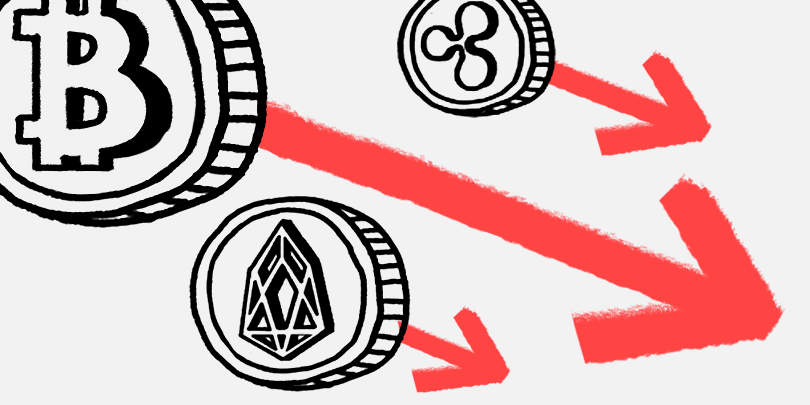 Large companies are interested in process automation. Robots and programs are used instead of people, for example, Uber replaced operators with an application. Blockchain will help get rid of Uber and its 25% commission, and smart contracts will ensure the fulfillment of obligations between drivers and passengers.
Large companies are interested in process automation. Robots and programs are used instead of people, for example, Uber replaced operators with an application. Blockchain will help get rid of Uber and its 25% commission, and smart contracts will ensure the fulfillment of obligations between drivers and passengers.
A similar breakthrough has already been partially made by bitcoin in the financial sector. It allows you to make transfers without intermediaries with a fixed commission for any distance. On July 20, 2020, the average commission on the first cryptocurrency network was 0.00025371 BTC – $ 2.33. Meanwhile, Sberbank takes 1.5% for transfers abroad. To send $ 500 to Belarus, you need to pay $ 7.5 to the bank. The higher the transfer amount, the more profitable it is to use digital money.
A similar situation is observed in the contextual advertising market. To make money on advertising, site owners connect to ad networks to save themselves from looking for an advertiser. Intermediaries provide a stream of advertisements and guarantee payment, but in return they deduct a commission – in 2019, the revenue of the Yandex advertising network amounted to 25.4 billion rubles, and these funds could have been divided among advertising platforms.
Popular platforms like Yandex, Google and Facebook are not going anywhere, but blockchain will create a transparent advertising network, increase competition in the advertising market and reduce the commission of centralized ad networks. All network members, with the exception of large corporations, will be able to benefit.
Advertising “plantations” will become a thing of the past
Smaller sites don’t have employees or an advertiser sourcing department, so they have to settle for unfair ad network commissions. As a result, the resource receives a part of the real profit from banners. The funds received are not always enough to fully support the site, because of this, only large sites that work directly with advertisers feel confident in the market.
As advertising revenues rise, small and medium-sized information sites will increase their budget for new content and compete with larger resources. Smart contracts will act as a guarantor of payment. They will withhold the deposit from advertisers and pay money after the ads are shown.
High-quality traffic will attract new advertisers
 In terms of efficiency, the Internet surpasses other methods of promotion – television, billboards, radio, and so on. In the ad account, you can always view the statics:
In terms of efficiency, the Internet surpasses other methods of promotion – television, billboards, radio, and so on. In the ad account, you can always view the statics:
number of impressions;
number of clicks;
cost of one click;
data on individual audience groups, etc.
However, there are also pitfalls here. One person can see the same banner or commercial several times a day. Certain sites and unscrupulous webmasters increase the rates, which is why the advertiser receives low quality traffic. As a result, negative experience leads to disappointment in marketing as a promotion tool.
Blockchain and smart contracts have every chance to make the advertising market more transparent. The advertiser will make sure that real people have viewed his product due to the network identifiers. The collected statistics will be more objective and will help to more accurately determine the target audience for future ad impressions.
Blockchain will take care of the rest of the users
Large corporations use personal data of users to make money on advertising. Google and Facebook know your age, location, and preferences. Servers collect all the data that you specify on their resources. In return, they give bonuses in the form of convenient services – email, cloud storage, social network, video hosting, and so on.
Blockchain, on the other hand, can offer members monthly payments of up to $ 5 for specifying information about themselves and actively participating in the community – viewing ads. The payment will serve as an incentive to disable Adblock extensions and its ad blocking counterparts.
Each user will receive a network number that will combine the functions of an identifier and a wallet. Along with this, information on tastes and preferences is provided on a voluntary basis. The blockchain will not collect data that can be used to identify the participant – name, phone number, email and exact place of residence, although large corporations know your contact information.
In 2018, 267 million users were leaked to Facebook. This is not the only case where personal information has fallen into the hands of third parties.
What is preventing blockchain integration?
 There are disadvantages to distributed ledger technology. They are slowing down the revolution and ubiquitous use of blockchain in many industries, and this is unlikely to change in the near future.
There are disadvantages to distributed ledger technology. They are slowing down the revolution and ubiquitous use of blockchain in many industries, and this is unlikely to change in the near future.
The modern user has become too lazy. It is surrounded by convenient services with clear interfaces. In 10 minutes, he will not be able to fully understand either cryptocurrency or creating a wallet, so for a long time a bank card will be the most common way to transfer and pay for goods.
A similar situation will happen with the new blockchain-based ad network. Even if she does offer something revolutionary, marketers and advertisers will not rush to learn new things and support a promising startup right away.
In terms of bandwidth, the blockchain is still far behind Google. The Ethereum network, which uses smart contracts, processes 20 transactions per second. Among other popular cryptocurrencies, Ripple can boast of high speed – 1,500 operations per second. However, these numbers pale in comparison to the speed of Google, which processes 63,000 requests per second.
New cryptocurrencies are gradually emerging, developers are finding solutions to increase data transfer speed. One day the blockchain will come close to Google, but when it will happen, it is impossible to determine.
Revolutions are impossible without resistance
 Revolutionary solutions are often viewed with hostility. Not everyone is ready to accept cryptocurrency despite its benefits. Therefore, digital money still has an uncertain status in many countries. Algeria, Bangladesh, Bolivia and Nepal, for example, criminalize the use of cryptocurrencies.
Revolutionary solutions are often viewed with hostility. Not everyone is ready to accept cryptocurrency despite its benefits. Therefore, digital money still has an uncertain status in many countries. Algeria, Bangladesh, Bolivia and Nepal, for example, criminalize the use of cryptocurrencies.
Large corporations are happy with their own position – most likely they will not want to see a competitor in the form of a decentralized advertising network. The easiest way to avoid competition is to buy out a startup. In 2012, Facebook bought Instagram for $ 1 billion and retained its monopoly on social media in Europe and the United States.
Google could do the same – buy out a new ad network, integrate with Adsense, and keep commissions high. If the startup fails, the corporation has a different leverage. On July 29, at a hearing in the US Congress on an antitrust case, accusations were made against Google about the impact on search results. CEO Sundar Pichai confirmed this possibility – some of the lists are manually adjusted to comply with the law.
Small to medium sized sites get most of their traffic from search engines. If they get rid of ad slavery and give preference to an ad network on the blockchain, they can lose their position in Google’s results – the search engine can adjust the algorithm in such a way that preference is given to the sites of advertising partners.
However, the United States has shown concern about the increasing influence of large corporations. The ongoing lawsuit against Google, Facebook, Amazon and Apple could benefit the blockchain as decentralization solves the problem with monopolies.
Polkadot Developers Launch Rococo Testnet
10/08/2020

On August 4, Polkadot developers launched the Rococo testnet to implement sharding using parallel chains (parachains).
According to the developers, the key parameter of shards is communication, otherwise they will act as independent chains. Shards need to interact with peers to enable sending tokens between shards. Rococo’s new testnet is specifically designed to test Polkadot protocols that will enable communication between shards.
Three separate parachains are available in Rococo: “tick”, “trick” and “track”, and developers can add their own parallel chains. The testnet uses a Proof-of-Authority (PoA) consensus mechanism and supports horizontal messaging. Messages and tokens will be sent to the parachains via the Relay Chain, which performs similar functions to the Ethereum Beacon Chain.
The ultimate goal of Polkadot is for messages to travel between chains without using the Relay Chain. This will provide faster and more direct communication. The developers have warned that the system is still unstable and will later add new code to prepare for the mainnet launch.
The Polkadot architecture uses parachains – independent but interacting chains. These parachains are based on the modular Substrate architecture, which allows users to create custom blockchains for decentralized applications. Substrate blockchains can also be used offline, however the Cumulus framework makes it easy to integrate into Polkadot.
Earlier, Polkadot developer Bruno Škvorc said that Substrate allows you to launch a blockchain that can be quickly updated without a hard fork. Last month, Polkadot became a fully decentralized network, and the administrative authority of the non-profit Web3 Foundation was removed.
Research: Growth in Ethereum Transactions Fueled by Trading Bots
07/08/2020
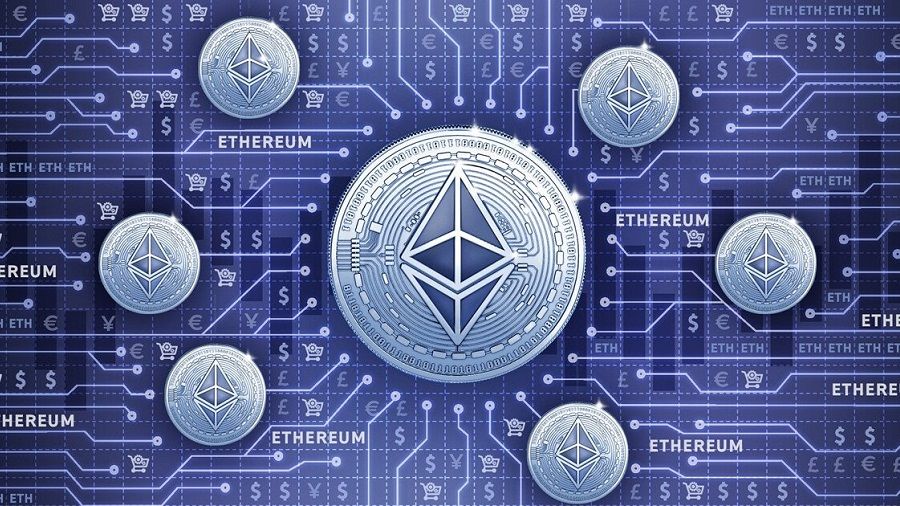
Certus One co-founder Hendrik Hofstadt attributed the marked increase in Ethereum transactions to the architecture of the popular Geth client.
The fact is that now the Geth client, used by Ethereum miners, executes transactions with the same gas size in a random order. This is used by trading companies – they create bots that monitor the queue of unconfirmed transactions on the network. If large transactions are detected on decentralized platforms, such bots create new transactions with increased commissions in order to profit from movements in the price of tokens and ether during the execution of the transaction.
To prevent other firms from performing a similar trick, bots “clutter” the network with many zero-amount transactions. So firms are spent on commissions, but they get a lot of profit. Since April 2018, $ 5.99 million has been spent on commissions for such transactions, although the bulk of them were created after mid-March 2020.
According to Coin Metrics, the average transaction fees on the second cryptocurrency network have grown 9 times since May. This was influenced not only by spam transactions, but also by the growing popularity of DeFi, various fraudulent schemes, and more.
The Geth development team is aware of the issue. At the end of July, it was proposed to change the principle of confirming transactions – instead of a random sample of transactions with the same gas size, it was proposed to execute them on a first come, first served basis. Miners must now update their Geth clients for the offer to take effect. Hofstadt emphasized that if miners care more about their pockets and not about the health of the network, then they may not update the application.
Recall that in July trading volumes on decentralized exchanges (DEX) amounted to more than $ 4.3 billion. This is 174% higher than the previous record set a month earlier.
Millions of hotels, electronics, video games. What to spend cryptocurrency on
07/08/2020
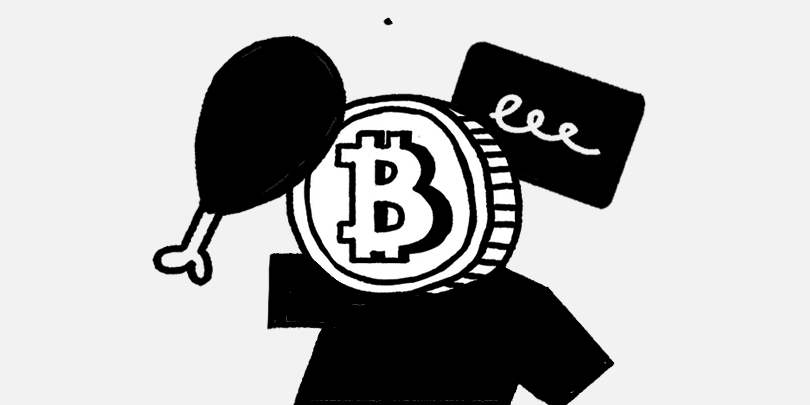
Bitcoin is gaining more and more recognition in the world. You can use it to pay for your Twitch subscription, buy plane tickets, book a hotel, and much more. We will tell you which services accept digital money.
1. For travelers
Tourism is one of the areas that is adapting the fastest to dealing with digital assets. You can book a hotel almost anywhere in the world by paying with cryptocurrency using the travala.com service. It provides more than 3 million objects, BTC, ETH and 28 more coins are accepted for settlements. Travala.com also gives customers the option to buy plane tickets with cryptocurrency. AirBaltic has a similar option; it added the option to pay with bitcoin in 2014. Richard Branson’s Virgin Galactic began accepting BTC a year earlier.
2. For video game lovers
For traders who are fond of video games, a separate payment method was introduced by the streaming service Twitch. Its users can buy a subscription by paying with cryptocurrency. Now there is a promotion: when using digital assets, you can get a 10% discount. You can buy video games themselves using cryptocurrency, as well as the Xbox console and other products in this direction in the official Xbox Store. To do this, the user needs to create an account on the Microsoft website and select BTC as the payment method. This option has been in effect since 2014.
3. For traders and investors
Actively trading users rarely do without special services such as TradingView. Especially for crypto traders, this platform has introduced the ability to pay in cryptocurrency. You can pay in Bitcoin, the transaction will go through the Coinbase exchange. Investors can use cryptocurrency to buy hardware wallets. Ledger sells its digital asset storage devices for Bitcoin and Bitcoin Cash through Bitpay.
4. Electronics, books, clothing
The American online electronics store Newegg also accepts cryptocurrency for payment. Here you can buy a printer, a computer and accessories, a virtual reality helmet and many other equipment. The transaction will also go through the Bitpay payment system. An even greater variety of goods can be bought with cryptocurrency on Amazon. The service itself does not accept digital money. But for these purposes, you can make a purchase through a gift card. Such services are offered by the Bitrefill, Purse, CoinCards platforms.
5. Crypto card
Holders of cryptocurrency can find places where it is accepted for payment using the coinmap.org interactive card. On it you can filter what exactly the user is interested in: shops, restaurants, entertainment, cryptomats, and more. The card is valid all over the world.
6. “Useless bitcoin”
Most of the named companies do not accept cryptocurrency directly. They use processing services such as Bitpay. The firm receives Bitcoin, converts it to the settlement currency, and then transfers the funds to the seller. For this operation, the user pays 1% commission. Bitpay is owned by billionaire Mark Cuban. Despite the fact that his service is tied to working with cryptocurrency, the businessman has repeatedly criticized bitcoin for its lack of application in real life, called it useless and compared it to bananas. The latter turned out to be better.
Hacks, laws, manipulations. Why is it dangerous to keep bitcoin on the exchange
06/08/2020

1. Hacking
The main risk for any exchange user is a successful hacker attack. Attackers can steal funds stored in the company’s wallets. In this case, she will have nothing to give clients their funds and she is likely to declare bankruptcy. To reduce the risk of losing funds due to hacking, it is safer to choose the largest exchanges. They invest more money in providing protection and create reserve funds in case of an attack. At the same time, the more capital “in one basket”, the greater the temptation for criminals.
2. The disappearance of leaders
Another risk: bad leadership. The founders of the trading platform have access to all funds stored in their wallets. For this reason, staff can simply hide away with users’ money. A similar thing happened in November with the Canadian Einstein Exchange. With large companies, such a scenario is possible, but unlikely. The management of popular exchanges is known to the public. If it goes to such a crime, the authorities are likely to respond promptly. Although the founder of one of the largest financial pyramids, Ruzha Ignatov, has been sought since 2017.
3. Crashes
A less significant but more pressing problem is disruptions. Due to the heavy load on the server, exchanges can operate with delay or even fail. Because of this and because of the delays that have arisen, users can make mistakes in trading. For example, to sell assets at a very low price. Failures usually occur during strong market movements. When Bitcoin drops in price by tens of percent, trading activity increases, this leads to a heavy load on the servers. The exchange can go offline at the most inopportune moment. For example, this happened with BitMEX during the fall in the price of BTC to $ 3800.
4. Manipulation
Another problem of trading platforms is exchange rate manipulation. Traders use stop-losses to avoid significant losses. These orders allow you to sell an asset at a predetermined price if it starts to fall. Big players can use this to their advantage. For example, a player with large capital can sell a significant amount of bitcoins on the market. In this case, the price will fall short-term and stop-losses will be triggered. Users who have sold an asset due to such manipulation will have to buy it back, but probably already more expensive.
5. Laws
Cryptocurrency, even after 10 years of existence, has a controversial legal status. In China, most transactions with digital assets are prohibited, in Russia, they cannot be used for payment. At any time, the legislation may change, and the user will not be able to legally access the exchange. The solution is to keep funds in cold wallets or on decentralized sites. In this case, the user will not lose access to the cryptocurrency if a prohibiting law is passed. But its use is likely to continue to be illegal.
Vulnerability found in Ledger wallet leading to write-off of BTC instead of altcoins
06/08/2020
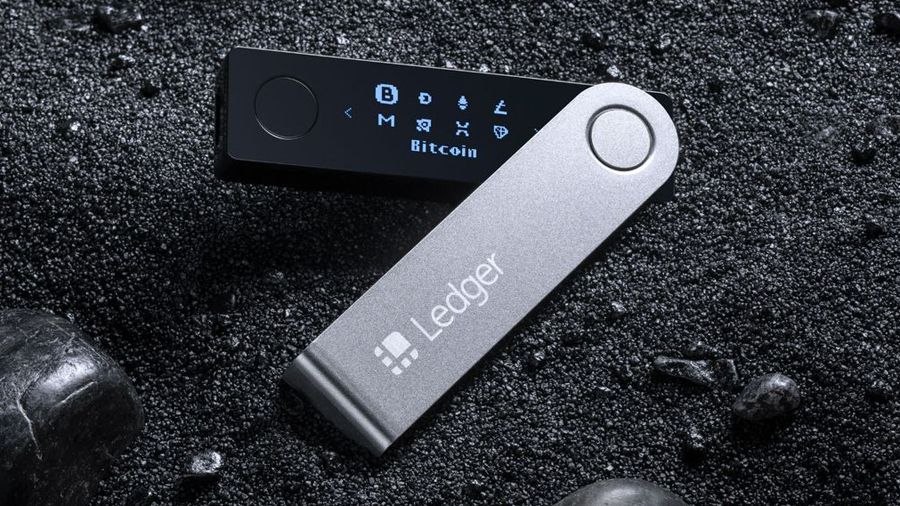
Liquality developer Mohammed Nokhbeh has discovered a vulnerability in the Ledger hardware wallet that leads to the withdrawal of bitcoins instead of altcoins.
The developers presented a report that described how the attack works. The attacker creates an imaginary transaction with any altcoins, during which bitcoins are debited from users. For example, a trader may have the impression that he is sending 0.01 LTC, but in fact 0.01 BTC will be sent from his wallet.
Nohbeh added that Ledger hardware wallets support multiple cryptocurrencies with dedicated apps for each asset, but only one app can be activated. It turned out that external applications can access data about other cryptocurrencies even from inactive applications. The researchers found that by exploiting the vulnerability, if a user opens an app for LTC, they receive a request to confirm a Bitcoin transaction, even if they are not using that asset. In this case, the interface will display data for making a deal with LTC. Upon confirmation of such a request, a full signed transaction will be made on the Bitcoin network.
According to the developers of Liquality, Ledger was notified of this vulnerability back in January last year, but has not fixed the problem. However, Ledger said it always carefully reviews all of the researchers’ comments. According to Ledger, the developers of Liquality may have sent a report of the identified problems to other departments that are not involved in fixing bugs. Commenting on the Liquality report, Ledger acknowledged that the Bitcoin application is becoming available when dealing with other cryptoassets. The wallet manufacturer explained this by supporting forks of bitcoin and other cryptocurrencies created on the basis of the bitcoin blockchain and having a common history.
“Some bitcoin forks use the same derivation paths as bitcoin. Without them, people simply won’t be able to use Ledger Nano S / X wallets to work with these coins. Developers will have to choose between security and usability so that customer funds are not blocked, ”explains Ledger.
Ledger has announced that it will soon release a new version of the Bitcoin app. In case of using a different output path, users will be notified.
Last month, experts from Kraken Security Labs talked about new opportunities for a firmware change attack on Ledger Nano X hardware wallets, but this issue has already been fixed.
Cryptocurrency hedge fund Neural Capital closes with a loss of over 50%
05/08/2020

Cryptocurrency hedge fund Neural Capital announced it would close after losing half of its capital. The fund was launched in 2017.
According to local media reports, the crypto assets of the Neural Capital fund were liquidated back in December, and some of the cash is still kept in escrow accounts, which violates the previously agreed storage periods for several months. However, the fund is already returning the remaining funds to investors. By 2019, Neural Capital managed over $ 13 million in assets and worked with over 40 investors.
These include Greylock venture partner Joshua Elman and Expa partner Hooman Radfar. The minimum deposit for each investor was $ 250,000. In December, the fund was revoked from the US Securities and Exchange Commission (SEC) registration, and this year Neural Capital stopped filing mandatory financial statements with California regulators.
Fund managers Arij Nazir and Christopher Keshian did not have sufficient experience in digital asset management, but when they opened Neural Capital in 2017, they worked with several other funds. Nazir and Keshian were consultants to the investment firm Protocol Ventures, which has already invested in several cryptocurrency hedge funds, including Neural Capital.
In addition, Keshian was the founder of Apex Capital, which was never launched due to an unsuccessful ICO, the organizers of which were unable to raise $ 100 million. According to local media reports, Keshian left his post at Neural Capital in 2019, and since then does not keep in touch with Nazir. Keshian said he was working on another project, but did not want to provide detailed information about it.
Earlier, Protocol Ventures partner Rick Marini said that in the end there will be about 50 funds that will work with large institutional investors. He spoke about this back in 2018, when many leading hedge funds were already concerned about a significant decrease in the inflow of new investments.
As a reminder, two cryptocurrency hedge funds were announced last month: Tetras Capital and Prime Factor Capital.
MonolithosDAO announces the start of the second stage of the MDT token sale and the listing of the token on Uniswap
05/08/2020

The developer of the decentralized crypto-ruble DeFi platform MonolithosDAO announced that on Monday, August 3, the second stage of the MDT token sale – a token for managing the Monolithos network – has started. At this stage, the liquid MDT / ETH pair is added to the listing of the Uniswap decentralized exchanger.
Monolithos is allocating 500K MDT for sale on Uniswap and providing them with Ether. The initial token price was $ 0.42 and continues to grow. The exchange has already started and the first 100 transactions have been successfully completed.
MonolithosDAO is an independent autonomous decentralized organization based on self-government, the economy of which is based on the MCR stablecoin used in a number of DeFi applications embedded in the unified ecosystem. The stablecoin rate is softly pegged to the Russian ruble at a 1: 1 ratio – the MCR is essentially the first working crypto-ruble on the Ethereum blockchain.
MDT is the Monolithos platform management token. The goal of a DAO-based project is to maintain stability in a decentralized system. MDT is designed to provide this stability. The token gives the owner the ability to manage the community together with other participants, participating in votes on a number of critical issues for the system and thus regulating the operation of the protocol.
In addition to governance, the MDT token is also intended to recapitalize the system. This token function is triggered when the Monolithos protocol runs in deficit and the system debt exceeds the maximum threshold. During a surplus, part of the MDT is destroyed to bring the system into balance. The ability to create and destroy MDT encourages token holders to manage the system intelligently.
What financial benefits do MDT owners get?
By owning MDT, you can buy crypto assets on the Monolithos platform at 5-10% below market value. This opportunity is carried out within the framework of the credit system, where participants take loans secured in cryptocurrencies. When the value of the collateral decreases, the system signals the need to replenish the storage. If the user does not respond, then upon reaching a predetermined threshold, the collateralized assets are sold at auction for MCR at a cost below market value. Also, upon liquidation, a 7% penalty is applied to the vault. All this leads to a stablecoin surplus in the system. In this situation, redundant auctions are triggered, where MCRs are purchased for MDT also at a below market price.
When the MDT is destroyed, the number of coins in the system decreases and their price increases. MDT tokens contributed as payment for assets or votes on the platform are subject to burning, and since the total number of tokens in the system is initially limited to 1 million, the value of the remaining coins increases as they are destroyed. The MDT value is divisible up to 18 decimal places, so as long as at least one token exists, the system allows trading 1 quadrillion rubles without the need for additional emission.
Selling profitably on Uniswap. Trading on Uniswap is designed in such a way that with each purchase of an asset, the value of the remaining coins increases. Therefore, if you buy MDT at the minimum price at the presale or the initial stage of sales on Uniswap, you can get a doubling or more of the initially invested amount. Recall that over the next seven days, the sale of the first and second stages of the token sale will go on simultaneously – the first stage of the sale of tokens at a fixed price on the project’s website runs until August 10.
Bitcoin Core version 0.20.1 Released
04/08/2020
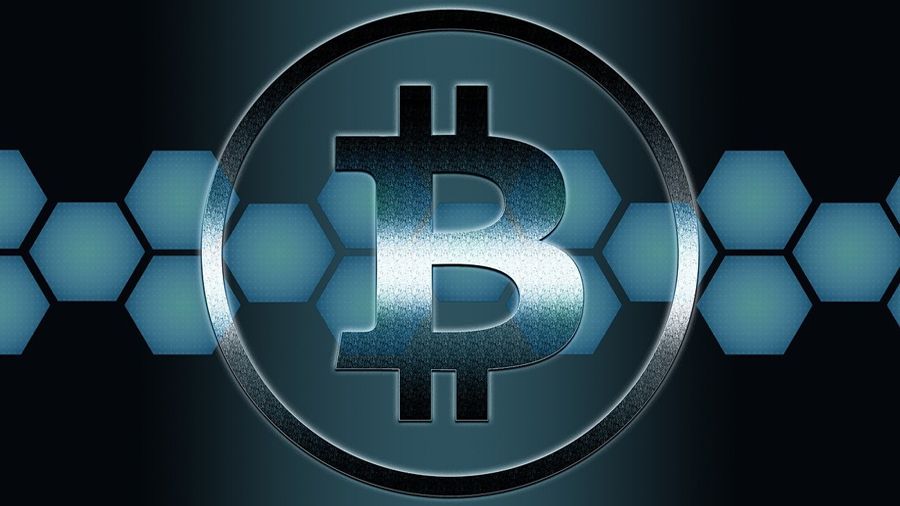
Bitcoin developers have released an updated version of the main software client Bitcoin Core 0.20.1 with a mechanism to limit the “misbehavior” of peers.
The Bitcoin Core client update contains only minor changes and improvements, unlike the previous version of Bitcoin Core 0.20, which was presented in early June. Version 0.20 was mainly aimed at moving away from the OpenSSL cryptographic library, which caused bugs, crashes and network problems.
According to the accompanying documentation, the main change to Bitcoin Core 0.20.1 is aimed at limiting the “misbehavior” of peers or users transmitting invalid blocks. In the new version, such users will not be blocked, but will receive a special label “discouraged nodes”, which will reduce the likelihood of their interaction with the network. The limited access status can last more than a day, depending on the workload of the Bitcoin blockchain. After restarting the node, the black mark is removed from it.
In addition, the update fixes a notification bug that was present in Bitcoin Core 0.19. Users will now be notified of transactions that are removed from the mempool if they have a conflict with a new block.
The previous Bitcoin Core 0.20 update included 119 programmers’ commits, and only 13 developers participated in the preparation of the latest version of the client. In November, the Bitcoin Core 0.19.0.1 update was released, containing a number of performance improvements as well as tweaks and fixes based on 550 pull requests.
As a reminder, last month, Bitcoin Core team member Jeremy Rubin introduced a new smart contract language for Bitcoin that will increase users’ control over their BTC.
# bitcoin #Bitcoin Core # updates
Monero and Tari Labs Prepare Guidelines for Listing Anonymous Cryptocurrencies on Exchanges
04/08/2020

Monero and Tari Labs will present a guide for cryptocurrency exchanges to place cryptoassets with increased privacy.
The document will be released under the title “The Fundamentals and Regulation of Privacy-Enabling Cryptocurrencies”. It will be published by the law firm Perkins Coie.
The developers explained that the guide will be a “white paper” detailing how the improved tools can reduce the risks associated with anonymous cryptocurrencies. Marketplaces will receive instructions on how to place XMR without violating regulatory requirements.
In July, Coinbase CEO Brian Armstrong announced that he would like to add Monero to his platform, but fears possible problems with regulators. Monero developers believe Coinbase is not the only exchange concerned about this issue. In the fall, BitBay announced that XMR will stop trading on the platform from February 2020. OKEx Korea has also stopped trading confidential cryptocurrencies XMR, DASH, ZEC, ZEN and SBTC, as they do not comply with the recommendations of the International Financial Action Task Force on Money Laundering (FATF).
“The guide will present a comprehensive and reliable analysis of confidential cryptocurrencies. In addition, it will address regulatory concerns regarding cryptoassets and anti-money laundering (AML) regulations. We are delighted to be able to contribute to the development of this project, ”said Lewis Willacy, legal consultant for compliance with Tari Labs.
Willace added that anonymous digital assets carry much more risks. However, they can be eliminated with improved compliance mechanisms. In the course of a comprehensive analysis of confidential cryptocurrencies, the developers have concluded that regulated financial institutions can maintain such assets in compliance with AML rules.
Monero developers have previously stated that the recommendations of the United States Financial Crimes Enforcement Network (FinCEN) do not apply to anonymous cryptocurrencies and should only apply to regulated assets.
Billions of dollars in losses. All about cryptocurrency pyramids.
03/08/2020

The biggest damage in the blockchain industry comes from Ponzi schemes. They are especially popular with scammers who deceive hundreds of thousands of people every year.
1. How do financial pyramids work?
The organizer of the pyramid scheme invites investors, promising them high profits in the future. There are two conditions: the victims must contribute money and invite new members. Those are given a similar task and so on along the chain. All the profits that early investors get are generated by the late ones. As a rule, the organizers of the pyramid receive most of the funds, and the rest of the participants are left with nothing.
2. Why are crypto pyramids especially popular?
The deception is based on poor awareness of people about the new area, which is used by cybercriminals. Cryptocurrencies are associated with making quick money without much effort. Scammers promise high profits in a short period of time. For example, the largest fraudulent scheme last year, AirBitClub, raised over RUB 500 million. from about 60 thousand people. The money was collected allegedly for the release of tokens and earnings on the growth of their exchange rate. But in reality, the participant could only sell the local currency to other deceived investors.
3. How it all began
One of the most famous cases of fraud in the cryptocurrency market is the Bitcoinnect project. Its representatives promised to create a decentralized p2p cryptocurrency based on open source code. The scheme offered to invest in BCC tokens and receive a stable high income. Bitconnect had a referral system that was classic for pyramids and did not disclose where the money for the payment of bonuses came from. In January 2018, the project’s business model was officially recognized as a financial pyramid. After the closure of the company, the token rate fell by 90%, and by September 2018 it was removed from all exchanges.
4. Cashbury history
Cashbury was positioned as a platform for bringing together investors and borrowers. Borrowers meant people who often need money “before paycheck”, and investors meant people who had free money to lend. Investors were promised a profit of 200-600% per annum. In September 2018, the Bank of Russia declared Cashbury a financial pyramid. The estimated damage to depositors was about 3 billion rubles.
5. OneCoin pyramid
The OneCoin project has attracted over four billion euros from dozens of countries in three years. The founder of the pyramid, Ruja Ignatova, has been in hiding since 2017, accused by the US authorities of electronic fraud, securities fraud and money laundering. Singapore has recognized OneCoin as a pyramid scheme, two supporters of the project have been arrested. During the investigation by the Chinese authorities, 98 people were prosecuted and $ 268 million were recovered. Ruzha Ignatova’s brother Konstantin cooperates with the US authorities, he faces up to 90 years in prison.
6. PlusToken scheme
One of the largest crypto pyramids is PlusToken. It appeared in 2018 and was distributed on WeChat. Investors were promised 10-30% monthly returns and bonuses for attracting new members. The project attracted over 4 million users from China, Japan, Germany, Russia, Ukraine and other countries. PlusToken raised over 200 thousand BTC, 789 thousand ETH and 26 million EOS. To gain people’s trust, the organizers conducted training lectures. Six executives were arrested in the summer of 2019, and another 109 in July 2020. However, it was not possible to return the investors’ funds. The total damage exceeded $ 3 billion.
7. How to protect yourself?
All pyramid schemes have certain properties that can be used to recognize fraud. For example, if the user is offered to earn money by attracting other participants. The organizers of such schemes almost always promise extremely high profits. The most effective advice is not only in relation to crypto pyramids: in the blockchain sphere, they often cheat. If an offer seems too good to be true, it probably isn’t.
Bank of England Updates RTGS Payment Network to Support Government Cryptocurrency
03/08/2020
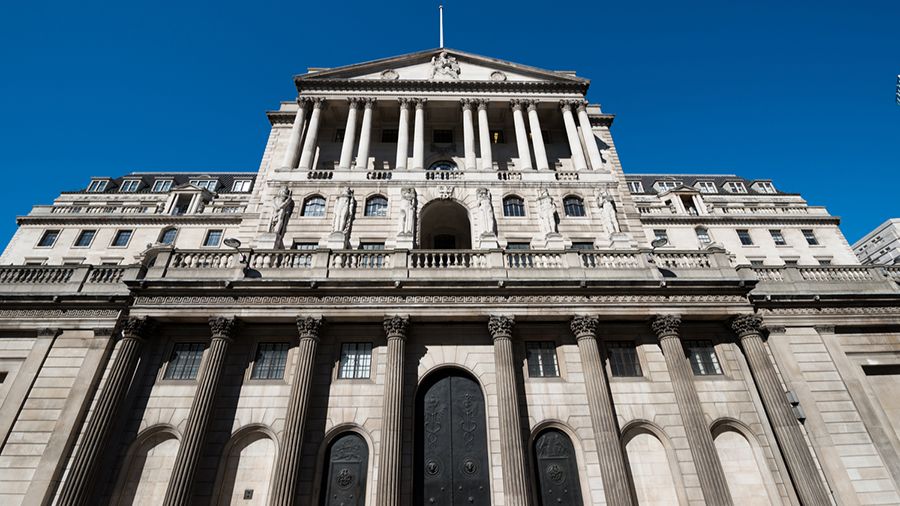
The UK central bank is updating the RTGS payment and settlement system so that it can support the operation of the government cryptocurrency in the future if it is released.
The Bank of England wants the updated Real Time Gross Settlement System (RTGS) – the payment network used by UK financial institutions – to be directly compatible with the government’s cryptocurrency.
The new settlement system is being developed so that the Central Bank can use the mechanism for transactions with digital currencies. Modules for other capabilities, including the digital pound, are also being considered as components of the future settlement system.
RTGS is a key element in the UK financial infrastructure. In this system, institutions maintain their accounts in pounds sterling and act as the main channel through which the Bank of England can inject liquidity into the economy. On average, RTGS trades over £ 685bn every day.
On Thursday, the Bank of England announced it had struck a £ 150m deal with Irish consulting firm Accenture to modernize its payments network. According to Accenture, the new RTGS network is adapting to the changing financial system, bringing more businesses access to it, and with increased interoperability and functionality.
The new system is expected to become operational in 2022. Earlier this month, Bank of England Governor Andrew Baily said that the regulator is now assessing the pros and cons of issuing a government cryptocurrency. In addition, the Central Bank stated that the design principles of the state cryptocurrency are more important than the underlying technology, and that private cryptocurrencies may be useful in the future.
Glassnode: 93% of all BTC addresses contain “profitable” bitcoins
31/07/2020
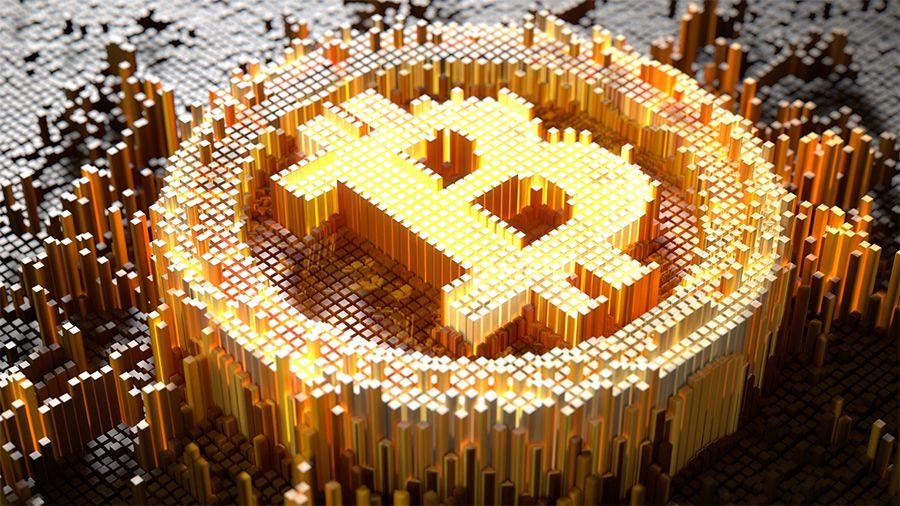
According to analyst firm Glassnode, about 93% of all BTC addresses contain “profitable” bitcoins after the price of the cryptocurrency exceeded $ 11,000.
According to Glassnode, these addresses contain bitcoins, which have increased in value since they were transferred to the wallet. Now the number of such addresses has exceeded 93% of all BTC addresses. Moreover, on July 20, there were no more than 72% of such addresses.
The last time over 90% of addresses contained “profitable” BTC was in July and August 2019, when Bitcoin traded at $ 11,500. stick to the HODL strategy.
According to Josh Olszewicz, a cryptocurrency trader at Techemy Capital, a high percentage of addresses with “profitable” BTC increases the likelihood that investors will sell bitcoins to lock in their profits. However, this does not mean that the price will not continue to rise, he added.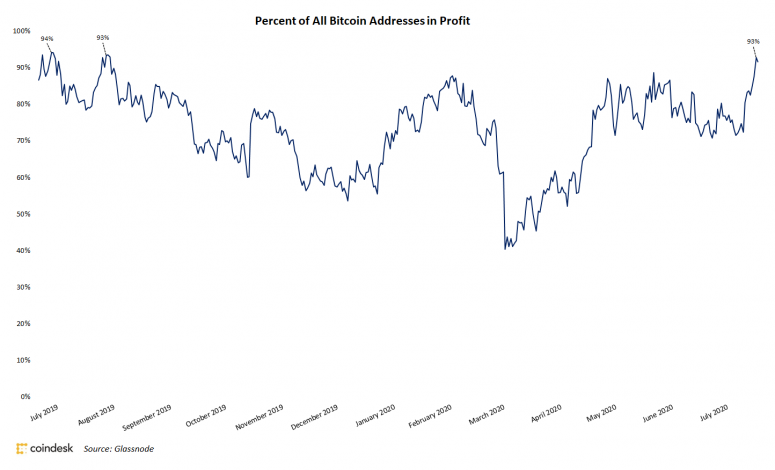
In early July, Glassnode reported that almost 79% of the bitcoins in circulation remain profitable. At the time, analysts noted that when 95% or more of all BTC holders make a profit, it usually serves as a reliable indicator of a market peak.
At the turning point of the cryptocurrency rally in December 2017, this figure almost reached 100%. Conversely, when the reading falls below 50%, the market is considered to have bottomed out. This is exactly what happened during Black Thursday on March 12 and the fall of the markets in December 2018.
Iran allows bitcoin mining at local power plants
31/07/2020

Iran has allowed large-scale BTC mining operations at power plants. Interested businesses will have to follow certain rules, some of them have already applied for mining.
According to local Irna News, Iran has allowed the country’s largest power plant operators to deploy and operate Bitcoin mining farms subject to certain rules.
Mostafa Rajabi Mashhadi, deputy head of Iran’s national electricity council, Tavanir, said power plants can mine BTC if they comply with regulatory requirements, obtain the necessary licenses and use non-subsidized electricity. In addition, power plants should not infringe on the interests of citizens.
“Now, and in a situation where the supply of electricity is of great importance to the population, we will not allow those who use the tariffs for the agricultural and industrial sectors for their own purposes, to mine BTC worth more than $ 9,000,” Mashhadi said.
He added that Iran has the lowest electricity tariffs. This is beneficial for BTC miners who are generally looking for cheap electricity and cool climates to maximize profits.
Interested businesses have already started submitting requests for mining permits. An energy council spokesman said they have already received more than 14 applications to set up BTC mining units.
Meanwhile, Mashhadi said illegal bitcoin miners would face legal consequences. He announced a $ 240 reward for those reporting unregistered BTC mining ventures.
In May, the Iranian Ministry of Industry and Trade issued a license to launch one of the largest mining farms for 6,000 devices to the Turkish company iMiner. In the same month, Iranian President Hassan Rouhani ordered the government to develop an updated national strategy to develop the cryptocurrency mining industry. It was also reported in July that Iranian miners must register with the regulator within a month.
Augur developers have launched the second version of the platform
30/07/2020
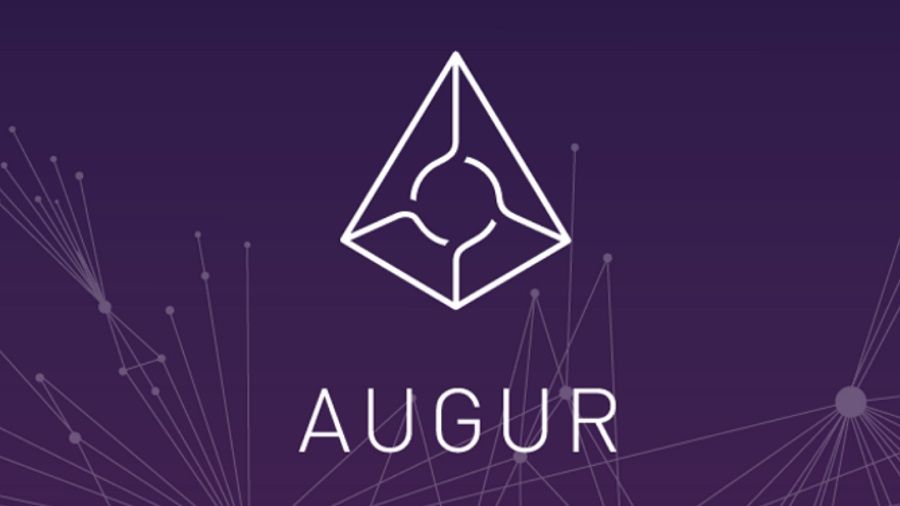
The developers of the decentralized prediction market based on Ethereum Augur have launched the second version of the platform with the ability to settle in stablecoins.
According to the developers, the update will reduce trading fees, speed up transactions and improve user experience. As indicated on the Augur website, the contracts of the second version of the protocol have already been launched on the Ethereum mainnet and have been successfully verified in the Etherscan blockchain explorer.
The main innovation in the second version of the platform was the settlement of rates “in dollar terms”. In the first version of Augur, settlements were done over the air, and users were at risk of volatility. In the updated Augur platform, users can use DAI stablecoins.
“The DAI is pegged to the US dollar, and if it remains stable, payouts to betting users will be in line with their expectations. In fact, this is the most important change in Augur. In addition, we have completely redesigned the user interface, making it look like Binance or Coinbase Pro, ”said Peter Vecchiarelli, COO of Augur.
Vecchiarelli added that the Augur platform can now be run in a browser. Previously, users had to install a special application for this. Augur has also implemented new mechanisms to prevent the processing of data obtained from “invalid or misleading” markets. This means that in the new version of the site, attackers will not be able to take advantage of vulnerabilities in the architecture of Augur prediction markets and turn to their advantage “invalid” bets.
We are talking about bets that do not have a specific end date and a clear description, or the description of which contains language and grammatical errors, as a result of which the real meaning of the message may be distorted. Therefore, a parameter has been added to the platform whereby users placing a bet can indicate its possible outcome as “invalid”. This will allow them to predict the occurrence of invalid bets and compensate for their losses.
In order for REP holders to use the Augur reporting system, they need to manually exchange their REP tokens for REPv2. This can be done through the Augur client or through custodian exchanges that support REP tokens, as required by those exchanges.
As a reminder, the Augur platform was launched in July 2018, three years after the start of development, and its alpha version was first presented in 2015.
Tether releases USDT for another $ 540 million amid bitcoin growth
30/07/2020

Over the past three days, Tether has issued USDT stablecoins totaling $ 540 million on the Tron and Ethereum blockchains, according to Whale Alert.
According to the analytical service Whale Alert, on July 29, USDT worth $ 300 million was issued on the Tron blockchain. In addition, on July 22 and 23, the service recorded two more operations to issue USDT stablecoins on the Ethereum blockchain. Each of them was the equivalent of $ 120 million. Paolo Ardoino, CTO of Bitfinex, explained on Twitter that these transactions were made to replenish USDT reserves. Such actions are necessary in order to prepare in advance for future investor requests.

“We are talking about authorized, but not issued tokens. They will be set aside as spare resources to implement token issuance requests during the next period, ” commented Paolo Ardoino on Twitter.
Recall that a few days ago, the bitcoin rate on some exchanges jumped to $ 11,400, which contributed to a bullish rally in the entire cryptocurrency market. Therefore, it should come as no surprise that due to the increase in trading volumes, Tether decided to replenish its vault with additional tokens.
Today the stablecoin Tether is one of the five leaders in terms of market capitalization. According to CoinMarketCap, over the past 24 hours the trading volume with the participation of USDT amounted to $ 33.4 billion, while for bitcoin this figure is $ 25.4 billion, and for ether – $ 11.2 billion.
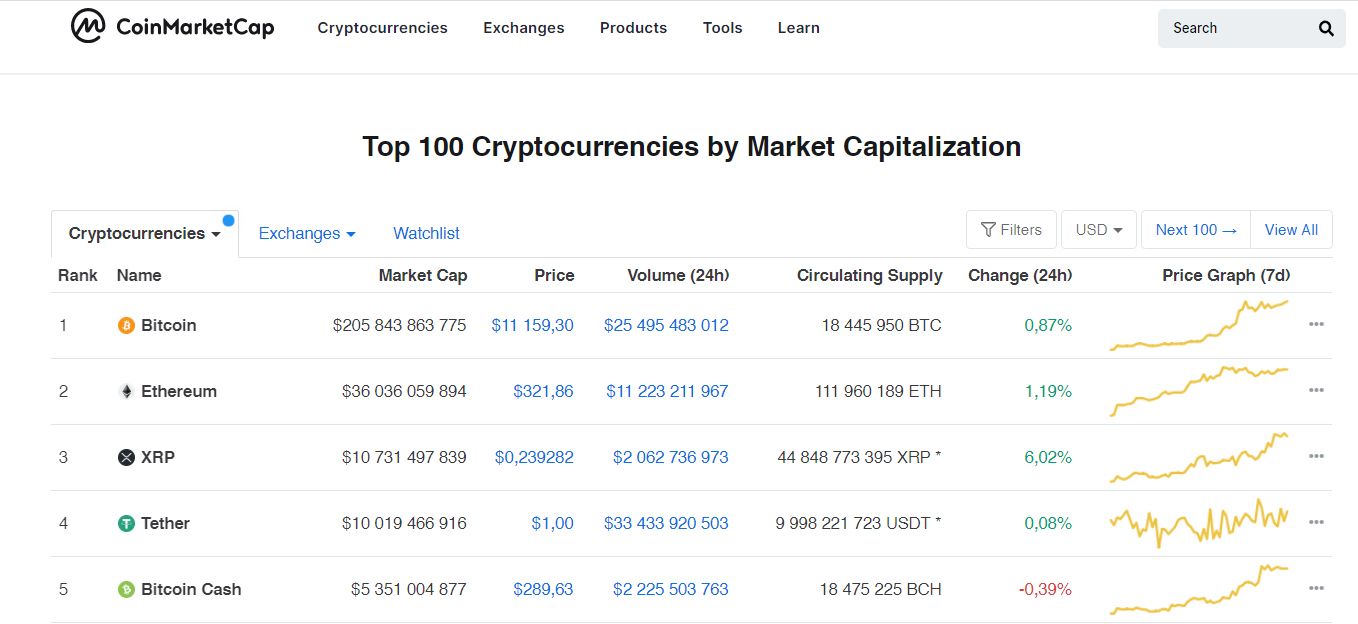 Earlier, the analytical company Messari reported that the capitalization of USDT exceeded $ 10 billion, and in 2020 it more than doubled. According to research by Flipside Crypto, USDT stablecoin is primarily used by arbitrage traders and centralized exchanges.
Earlier, the analytical company Messari reported that the capitalization of USDT exceeded $ 10 billion, and in 2020 it more than doubled. According to research by Flipside Crypto, USDT stablecoin is primarily used by arbitrage traders and centralized exchanges.
Chainalysis: 892,000 BTC linked to illegal activities
29/07/2020

According to analysts, 892,000 BTC are associated with illegal activities and are in the darknet markets, in the hands of scammers or hackers. That being said, most of these BTC end up on cryptocurrency exchanges.
According to the analytical company Chainalysis, there are about 585,000 BTC on the darknet markets, cryptocurrency scammers control about 99,000 BTC, and 205,000 BTC were stolen by cybercriminals. Another 3,000 BTC is controlled by other users associated with criminal activity.
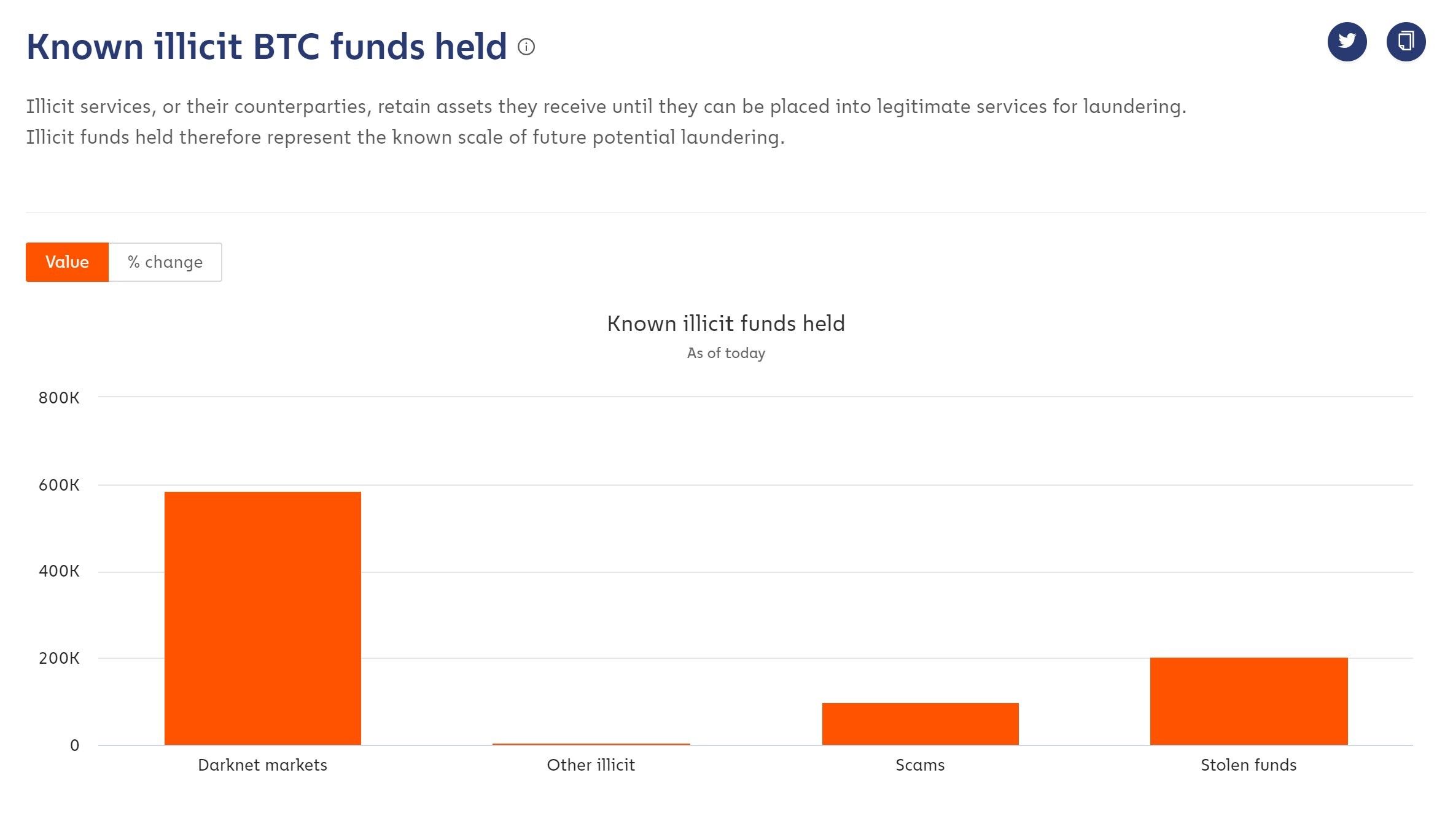
At the same time, only 0.32% of all transactions in bitcoins are associated with criminal activity. Regardless of the origin, the most commonly used BTC for illegal transactions end up on cryptocurrency exchanges. Cryptocurrency mixers are in second place in popularity among criminals, and other services are in third place.
According to Chainalysis, over the past seven days, 377 BTC have been transferred to cryptocurrency exchanges from darknet markets, 45 BTC to mixers, and 23 BTC to other services. During the same period, scammers transferred 331 BTC to cryptocurrency exchanges, and 37 BTC to mixers and other services.

Recall that on July 15, hackers gained access to internal Twitter tools, with the help of which they were able to hack a large number of popular social network accounts. Analyst firm Elliptic later reported that 22% of the bitcoins received by fraudsters were transferred to the Wasabi Wallet, most likely for further mixing of transactions.
Despite the fact that criminals often use other cryptocurrencies for their own purposes, bitcoin remains the most popular means of payment on the darknet, according to the US research center Rand Corporation.
R3 Corda Platform will implement DAML Smart Contract Language
29/07/2020

R3’s Corda Enterprise platform integrates the Digital Asset Modeling Language (DAML) smart contract language developed by American startup Digital Asset.
Currently, Corda developers can only create applications using the Kotlin language created by JetBrains. The code of this programming language is executed in Javascript and the Java virtual machine.
DAML was created in 2016. It is intended for financial institutions, and is used to draw up and execute agreements using distributed ledger technology. Digital Asset announced that it has partnered with IntellectEU, a high-tech industry company, to integrate the DAML cross-platform language with the Corda platform.
Vice President of IntellectEU Thomas Bohner announced that initially DAML will be available on the platform only for testing. Developers will be able to use it commercially as early as Q3 2020, with important enterprise features slated to roll out later this year. The integration of DAML with Corda will significantly expand the platform’s interaction with other blockchains, since this language is already integrated with Hyperledger Fabric and VMware Blockchain.
Boehner added that customers will be able to move their applications written in DAML between platforms. At the same time, they do not need to rewrite them for the new platform, remove the attachment to the software vendor and fear the risks associated with the use of complex programs.
In April, Internet bank Tencent WeBank integrated the DAML smart contract language into the technical infrastructure of the Chinese Blockchain Service Network (BSN) platform, set up by the State Information Center of China.
Chinese Community Launches TON Community Testnet
29/07/2020

The Chinese TON community announced the launch of the TON Community blockchain test network, created on the basis of Telegram developments, and the distribution of 10 million TONcoins.
Chinese TON Community project founder Tooz Wu said the testnet is called “testnet3” and is based on the official Telegram Open Network (TON) test network, often called “testnet2”. Since the developer of TON said that the platform’s testnet would be closed by August 1, 2020, the Chinese community invited users to join the new testnet as validators and continue using the network. Ace Wu added that in addition to the launch of the test network, TON Community is conducting a free distribution of 10 million TONcoins to be used on the main network. All users of the Telegram messenger can take part in the distribution.
Ace Wu first spoke about plans to launch a test network of the project back in May, while criticizing another community, which in the same month launched the Free TON blockchain based on Telegram developments without the participation of the company. The head of TON Community added that the project is already entering the international level, and a significant proportion of its participants are citizens of Russia, China and Singapore.
Recall that on May 12, the founder of Telegram, Pavel Durov, announced the termination of work on the TON platform after a lost “legal battle” with the US Securities and Exchange Commission (SEC). Last fall, the agency accused Telegram of illegally conducting an ICO, considering Gram tokens to be unregistered securities. After lengthy legal proceedings, the court completely blocked the distribution of Gram tokens for both US citizens and foreign investors. However, the original developers of TON stated that the main developments on the TON code are in the public domain and can be used by anyone who supports decentralization.
Last week, SEC Commissioner Hester Peirce, also known as a “crypto mom” for being friendly to the cryptocurrency industry, criticized the SEC for prosecuting Telegram.
Dash Developers have released an update for Dash Platform v0.14
28/07/2020
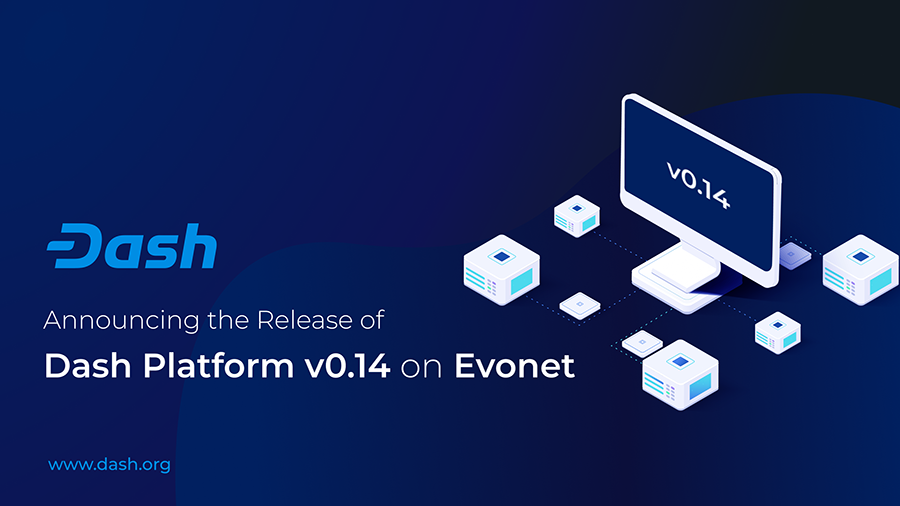
The Dash Core Group recently released Dash Platform v0.14, and are planning to roll out another update to the platform towards the end of August.
The Dash Core Group announced Dash Platform v0.14 on their blog last week. This release was the third in the updated regulated development process, and the fifth overall. According to the developers, new functionality will be added approximately every six weeks, and the next update will be released between August 25 and September 8.
Major updates to Dash Platform v0.14 include the addition of document timestamps, a new and improved DAPI Client, a platform testing suite, and an improved distribution. Adding timestamps allows you to capture the creation or update time of any document stored in the Dash Platform. Timestamps also offer opportunities for optimizing applications, for example, by sampling only new or updated documents.
The developers have also completely rewritten the DAPI Client to improve code quality, usability, and testability. In the new version, developers can specify exact DAPI node addresses or implement their own custom logic to get or select nodes. All DAPI client methods have the same parameters as the DAPI Client constructor, so developers can specify different scripts for each API call.
For the test suite, the developers have combined all functional and complete (e2e) tests of the Dash Platform into one tool. This tool comes as a docker image and allows developers to run tests on any network or local host compatible platform. Combined with a distribution (mn-bootstrap), it allowed developers to set up a comprehensive continuous integration workflow for platform components.
As part of the latest update, the distribution has also been significantly improved, especially for local development. To prepare for the launch of a local standalone node, the Dash Core Group has provided the “setup-for-local-development” command, as well as two options for the “start” command that allow you to build Drive and DAPIs from source. Recall that in June, Chainalysis announced plans to track public transactions on the Dash blockchain.
Free TON project: how to purchase Crystal tokens and become a validator?
28/07/2020

The Free TON blockchain with the native TON Crystal token is ready to continue the story of Pavel Durov’s failed project.
At the end of May, it became known that Telegram was stopping work on the TON project and the GRAM cryptocurrency due to pressure from the SEC, the US stock market regulator. Developers from TON Labs, together with other companies, decided to continue working on the launch of the network, but under a different name and with a different product. As a result, on May 7, they launched a new network based on the Telegram Open Network protocol – Free TON with the Crystal token.
The project was immediately supported by large companies from the crypto industry. These include TON Labs, Kuna Exchange, Everstake, Chorus, Bitscale Capital, Broxus, ForkLog founder Anatoly Kaplan and other companies and individuals.
Let’s figure out what Free TON is. From a technical point of view, blockchain differs from TON only in name:
“We call the network and token differently to show that this network is free from the history of the regulator. At the same time, TON has all the properties of a cryptocurrency with which payments are made, ”says Dmitry Goroshevsky, CTO of TON Labs.
TON Crystal is an internal network token. The developers came up with an interesting idea of distributing it among the participants. You can get tokens as a reward for winning contests. There are three of them:
The first competition invites developers to create tools for scalable and secure operations;
the second is to develop a system of voting on contracts for making decisions within the project;
the third is in the development of the most optimal distribution method for TON Crystal tokens.
Authors of the best solutions will receive 30,000 tokens, and the prize fund of each competition will be from 70,000 to 100,000 tokens.
To date, the first contests have already been completed and thousands of tokens have gone to the winners. Of course, you can buy TON Crystal from them. Precisely to purchase, because it would be strange if the winners of the contests offered other users tokens for free. They were originally offered at $ 1.4 per token.
Now people buy tokens mostly out of curiosity and in small amounts. While there are too few validators on the network, this curiosity often develops into a desire to seize your niche. This is quite realistic, given the current staking volume and the likelihood of mining 15-25% per annum without extra costs. In general, the opportunity to capture the market and the desire of large players to purchase TON Crystal tokens is justified even at $ 1.2.
However, the services where ordinary users can buy TON Crystal tokens can be counted on the fingers of one hand. The safest and most convenient option where you can buy TON Crystal is Chatex. The service works in the format of a Telegram bot, which implies simplicity and safety of use.
The service offers a P2P platform where you can purchase TON Crystal tokens from real users. The chances of being cheated here are minimal thanks to a transparent rating system that helps determine the reliability of a trade partner.
The service uses the anti-fraud system and BitGo Instant instant secure transfers. And if problems arise during the transaction, an arbitrator will come to the rescue and resolve the dispute in a few minutes.
Watchdog Capital will implement a regulated platform for issuing stock tokens
27/07/2020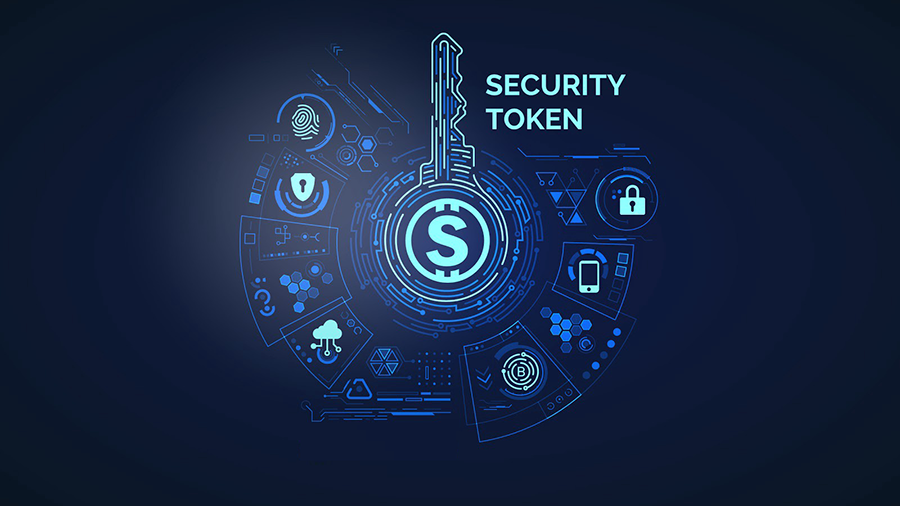
Broker-dealer Watchdog Capital, regulated by the US Securities and Exchange Commission (SEC), is preparing to launch the Gladius platform for issuing stock tokens.
Watchdog said in a statement that the platform will be able to provide companies with better access to capital as well as better opportunities for investors. Gladius was developed to comply with regulatory requirements and US securities laws and is currently in beta mode.
Bruce Fenton, CEO of Watchdog parent company Chainstone Labs, said the first share token offering on Gladius will take place in the next three months. Since Watchdog is a registered broker-dealer, the platform can be used for offers subject to SEC exemptions, including crowdfunding.
Watchdog must approve every proposal, and some of them may need SEC approval. The broker dealer is not licensed to offer secondary trading or custody services. Gladius is not tied to a specific blockchain and can also be used to issue paper shares. Investors will be able to make payments on the platform in both fiat and cryptocurrency.
Fenton noted that Watchdog is the only regulated broker-dealer currently launching a US stock token issuance platform. He added that stock tokens may well open up a new regulated investment path for companies in the decentralized financial space.
Stock tokens are increasingly of interest to regulated companies. In July, the Swiss crypto bank SEBA, in partnership with the Digital Asset Shared Ledger, announced that it would issue share tokens on traditional assets. In addition, in June, one of the largest Japanese financial organizations, Tokai Tokyo Financial Holdings, announced that it plans to open a stock token exchange with the participation of Hash Dash Holdings and iSTOX.
18,600 BTC have already been blocked in the Ethereum blockchain to secure tokens
27/07/2020
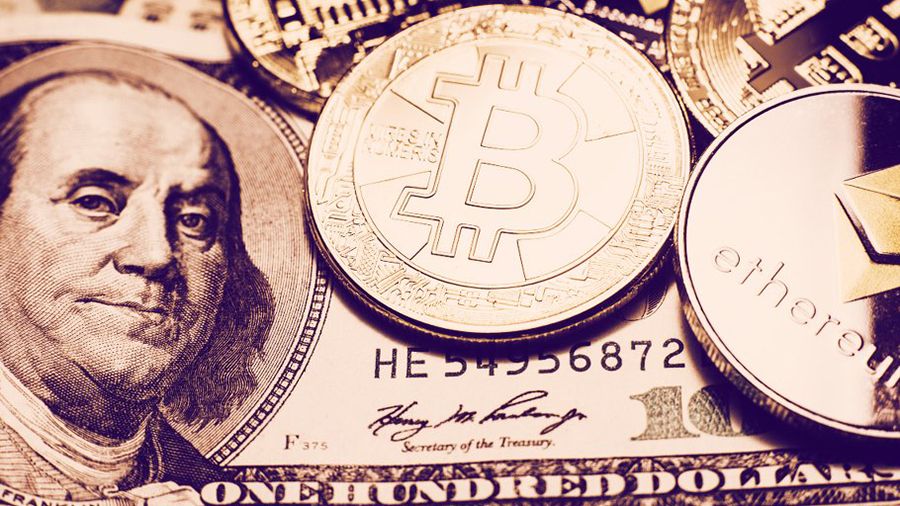
Equivalent $ 180 million bitcoins are locked on the Ethereum blockchain – mostly in WBTC, sBTC and renBTC tokens. Of these, about 1000 BTC are blocked on the Lightning Network.
According to Dune Analytics, some $ 180 million worth of BTC is currently locked on the Ethereum blockchain. Mainly in Wrapped Bitcoin (WBTC) tokens, sBTC Synthetix and renBTC Ren Project – stablecoins fully backed by Bitcoin.
As a reminder, 4,800 BTC were transferred to Ethereum in June. Moreover, the ERC-20 WBTC token accounted for about 75% of these operations.
“The industry has made significant efforts to connect BTC to the world of decentralized finance (DeFi), primarily through Ethereum,” said research firm Glassnode in its recent Q2 2020 report. “As of July 20, Ethereum has 15,800 BTC – 0.1% of all coins in circulation.”
Since then, the amount of Bitcoin blocked in Ethereum has grown to 18,600 BTC.
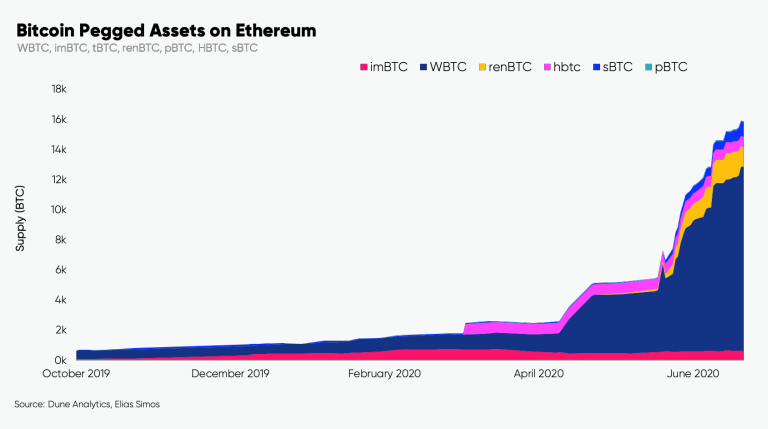
Almost 80% of the BTC locked on the Ethereum blockchain comes from WBTC. The ERC-20 Wrapped Bitcoin (WBTC) token was launched last January on the Ethereum blockchain and is a stablecoin fully backed by bitcoin. The project was presented in October 2018 by Kyber Network, Republic Protocol and BitGo. Wrapped Bitcoin uses a trusted third party custodian system to block and distribute BTC on the Ethereum blockchain.
Since May, the number of BTC blocked in Ethereum via WBTC has increased more than 12 times. This is partly driven by the growth of the DeFi industry and the willingness of users to get involved with their bitcoins.
After WBTC, the second most popular BTC blocking scheme is sBTC Synthetix, which accounts for about 7.5% of BTC blocked in Ethereum. It is followed by renBTC with approximately 6% BTC. The rest of the bitcoins are locked in HBTC Huobi and imBTC imToken.
The developers revealed the details of the launch of the final version of the Ethereum 2.0 testnet
24/07/2020
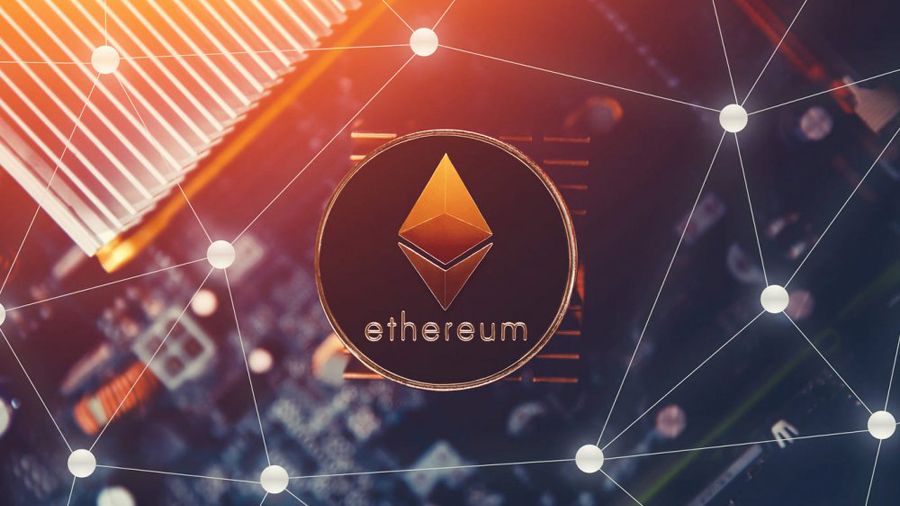
The Ethereum development team has revealed the details and conditions for the launch of the final version of the Ethereum 2.0 testnet, called Medalla, which is scheduled for August 4th.
Ethereum developer Danny Ryan recently announced that the latest version of the Ethereum 2.0 testnet will not launch until August 4th at 4:00 pm ET. This date cannot be called final, since two conditions must be met for the launch. First, you need to wait for the earliest date of the first block. This parameter is set manually, and determines the nearest time to launch the test network. Second, the testnet will be launched with a certain number of registered validators.
The deployment of Medalla will only begin when at least 16,384 deposits totaling 32 ETH have been made. Funds must be deposited 48 hours before the earliest date for the creation of the first block. If the required number of deposits is not completed before the specified period, the test network will start 48 hours after this condition is met. Medalla will mimic the Ethereum 2.0 update as closely as possible, so deposits are required. Anyone can become a test participant by registering and making a deposit of 32 ETH from the Goerli test network.
Four clients are already ready for launch: Nimbus, Teku, Lighthouse and Prysm. Four more clients are under active development. Ryan expects the Lodestar customer to be able to get their power online as well. Clients coordinate the work of the nodes, so the smooth functioning of the network depends on them to a large extent. For example, due to a bug in the Geth client, which dominates Ethereum 1.0, there was a consensus break between Geth and Parity clients. Therefore, for Ethereum 2.0, it was decided to use a multi-client model.
Unlike previous iterations, Medalla’s testnet will be community driven. In addition, white-hacker attacks will be carried out to detect defects and vulnerabilities. The developers reported that they are already working on the Beacon Chain signal chain, which will become the main coordinator of various shards. Users will be able to stake in ETH through an Ethereum 1.0 deposit contract, but they will not be able to conduct transactions with Ethereum 2.0 coins. Also, users will not be able to return them until the launch of the first phase of the update.
It was originally proposed that Ethereum 1.0 function as a separate chain until the hard fork is fully deployed. However, since December last year, developers have been considering a proposal that could significantly speed up the process. Clients Ethereum 1.0 and Ethereum 2.0 can be “hybridized” in such a way that the former are responsible for the work of consensus and block validation, and the latter are responsible for transmitting all information about blocks and transactions. In fact, Ethereum 1.0 would be one of many shards.
As a reminder, this month independent Ethereum developer Alexei Akhunov proposed embedding stateless clients into the current version of Ethereum to scale the network with minimal security impact.
World Stablecoin Association established in Switzerland to develop stablecoins
24/07/2020

In Switzerland, the World Stablecoin Association (WSA) has been established to support existing stablecoins and help develop new stable cryptocurrencies.
The association was founded by the VirgoX cryptocurrency exchange and the commercial bank Global Digital Assets (GDA Capital), which operates in the field of blockchain and digital assets. The WSA is headquartered in Geneva. VirgoX CEO Adam Cai said that it is planned to attract all major projects that have issued their own stablecoins to the international Association. WSA is already negotiating with major cryptocurrency issuers UDST, USDC, DAI and HUSD.
According to Kai, they will be ready to become members of the Association by the end of this year. In the meantime, the WSA will help create an enabling environment for cryptocurrency startups whose stablecoins are in their early stages of development. The VirgoX CEO emphasized that the main problem with stablecoins is that despite their advantages over conventional digital assets, they still cannot be widely used.
“Simple trading of stablecoins on cryptocurrency platforms is not enough. Stable cryptocurrencies should be used for cross-border payments and transfers. In order for users to view such assets as a ‘storehouse of value’, projects need to be helped to develop staking and products that generate interest, ”said Adam Kai, CEO of VirgoX.
Kai also said that to date, the World Stablecoin Association includes Canada Stablecorp, the developer of the QCAD stablecoin based on the Ethereum blockchain, and Ren, which is creating a decentralized protocol for exchanging transactions between Ethereum and the blockchains of Bitcoin, Bitcoin Cash and Zcash.
BlockGeeks also became a member of the Association, which performs audit of smart contracts and organizes educational trainings on cryptocurrencies for corporate clients. In addition to these firms, WSA includes stablecoin issuers BRZ, CBRL, USDK, XDB, as well as Peg Network, QC, Stably, Nova Club, Alpha Sigma Capital and the Beijing branch of Consensus Labs.
WSA announced that it is open to cooperation with all enterprises and government bodies supporting the development of the stablecoin industry. The association will organize monthly online seminars and annual conferences in Switzerland to discuss in detail the plans and further actions for the large-scale implementation of stablecoins, as well as explore the possibilities of interaction with other issuers of stable cryptocurrencies. The VirgoX CEO believes that there will be a “boom” in stablecoins in the coming years, and interest in them will only grow.
Note that according to Messari, the capitalization of Tether’s stablecoin USDT has exceeded $ 10 billion. Over the current year, it has more than doubled. USDC and BUSD also posted significant gains this year.
Santiment: whales have moved 700,000 ETH to cryptocurrency exchanges over the past three days
23/07/2020

The largest investors have moved 700,000 ETH, equivalent to $ 182 million, to cryptocurrency exchanges in the past three days. Analysts believe that the whales are preparing for the upward movement in the price of ETH.
According to analytical resource Santiment, the transfers of 700,000 ETH in the amount of $ 182.7 million coincided with a decrease in the total balance of OTC wallets by about the same figure. This suggests that the “whales” can prepare for the massive sale or trade of ETH in anticipation of the growth of the cryptocurrency rate.
“Over the past three days, the 100 largest whales have moved almost 700,000 ETH. During this time, the aggregate balance of the 100 largest OTC ETH addresses decreased by almost 700,000 ETH, or about $ 182.7 million. This can probably be considered preparation for the rise in the price of cryptocurrency, ”analysts said.
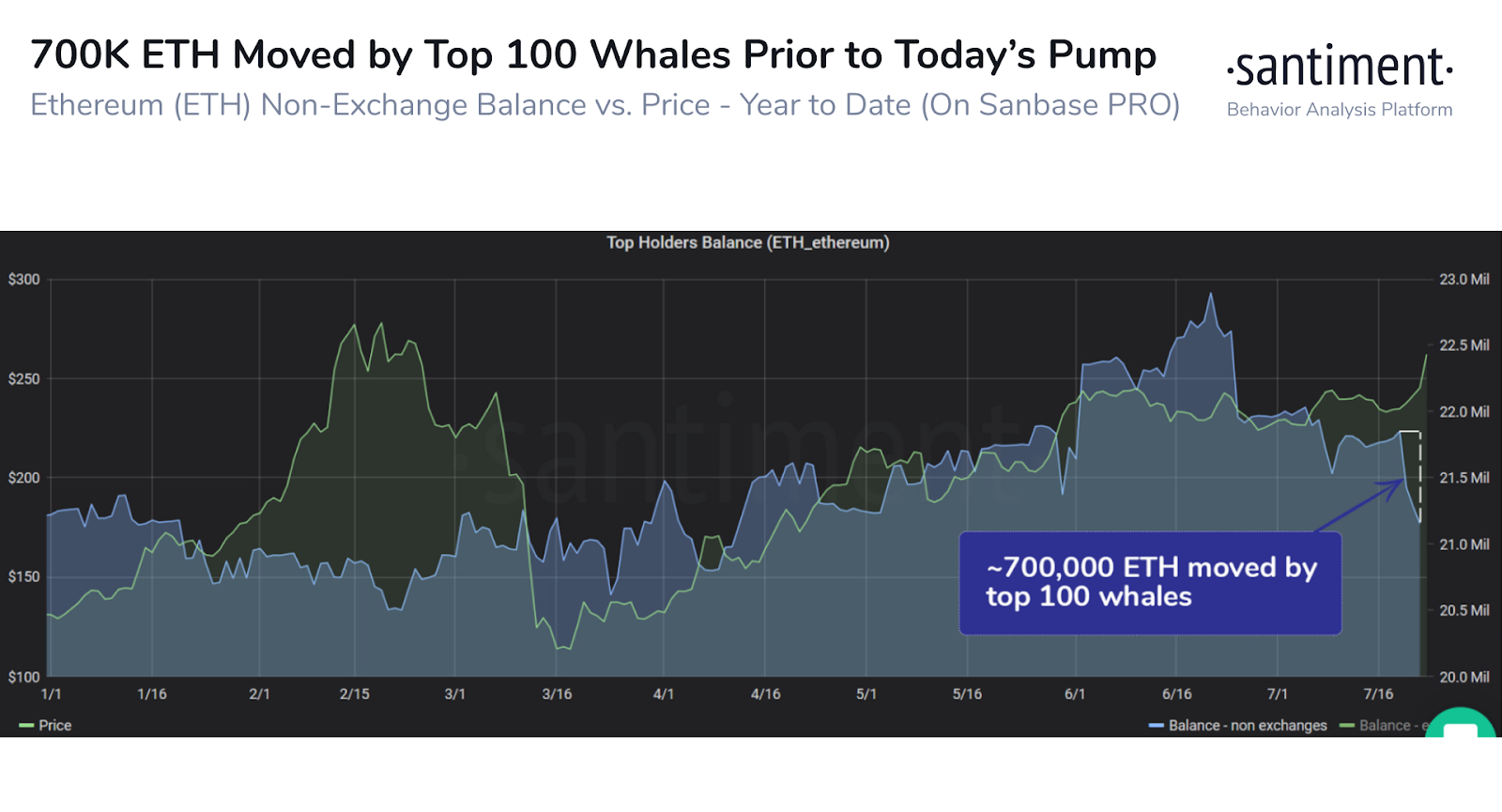
Ethereum has been the focus of the industry in recent weeks. This is due to two main factors – the boom in the DeFi industry, whose largest products are based on Ethereum, and the imminent rollout of the long-awaited Ethereum 2.0 network upgrade. These trends may contribute to the growth of ETH – over the past 24 hours, the price of the cryptocurrency has increased by 8.4% and reached $ 263, according to CoinMarketCap.
As a reminder, Ethereum developer Danny Ryan announced yesterday that the final version of the Ethereum 2.0 testnet will launch on August 4th. The mainnet launch is scheduled for November 4th. In addition, at the beginning of the week, the total market capitalization of stablecoins reached $ 12 billion. At the same time, according to analytical company Messari, Ethereum accounts for more than 85% of the transaction value of all issued stablecoins.
Recently it became known that the volume of blocked crypto assets in DeFi applications reached $ 3 billion. The combination of these and other factors could lead to the fact that the “whales” began to prepare for an increase in the price of cryptocurrency and move ETH to exchanges.
Cisco has discovered a new botnet for hidden mining Monero
23/07/2020
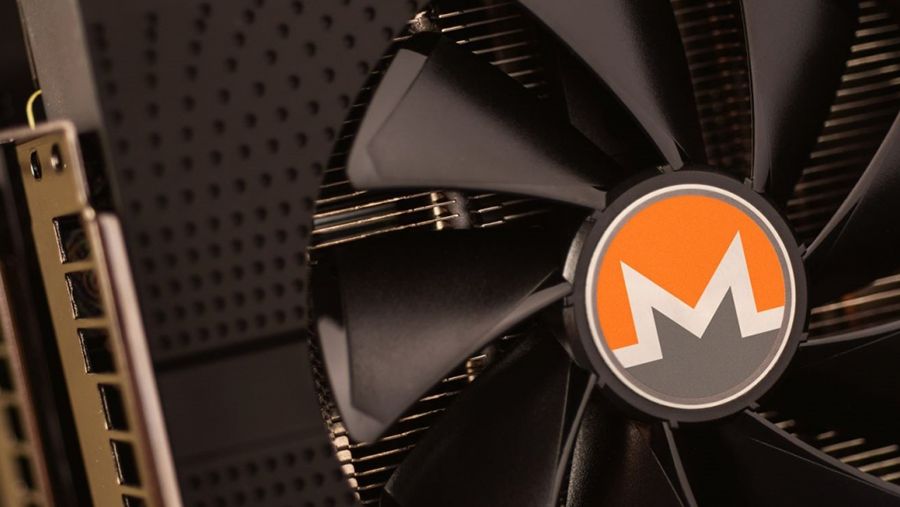
Cisco Talos discovered a botnet that has been active for several months and infected more than 5,000 computers to secretly mine the confidential Monero cryptocurrency.
In a report, cybersecurity analyst firm Cisco Talos, part of tech giant Cisco Systems, said it had discovered a botnet called Prometei that has been active for several months.
A botnet can disable security controls, copy sensitive files, and disguise itself as other programs to set up hidden mining operations on computer systems. New tools are also constantly emerging on the network to help a botnet avoid detection.
The botnet has infected between 1,000 and 5,000 computer systems since its launch in March, researchers estimate. According to analysts, Prometei has already brought its owner the equivalent of $ 5,000 XMR. Cisco Talos has not identified the hacker, but suggests it is a professional developer based somewhere in Eastern Europe.
Analysts also found that the botnet was stealing credentials such as administrator passwords, possibly for sale on the darknet.
Recall that in May, hackers attacked several supercomputers in Europe to mine Monero. The supercomputer clusters were forced to shut down to investigate incidents.
In addition, in April, the Slovak antivirus company ESET announced that it successfully counteracted a botnet of 35,000 computers in Latin America that mined XMR.
Earlier this year, a division of telecommunications company AT&T Alien Labs analyzed the distribution of malware for hidden mining Monero, which is embedded on mail servers.
CoinGecko: Cryptocurrency Exchanges Artificially Increase Web Traffic To Their Sites
22/07/2020

According to researchers, nearly 50% of OKEx’s internet traffic comes from advertising sites that pay for clicks in cryptocurrencies.
CoinGecko analysts argue that cryptocurrency exchanges can distort the amount of internet traffic to their sites. In particular, the report says that in the second quarter of 2020, the trading volume on the OKEx cryptocurrency exchange decreased, but the volume of Internet traffic increased by 239%. This is odd, because internet traffic metrics tend to correlate with trading activity.
After checking with SimilarWeb, which shows the source of the web traffic, CoinGecko analysts noticed that about 50% of OKEx’s web traffic comes from paid referral sites. The largest was Adbtc, a site that pays people with BTC to click on links to sites. Adbtc claims to have 78,000 active users and generate 866,000 impressions per day for popular sites.
Other platforms include Coinpayu, on the list of which OKEx is listed as one of the platform’s projects, Cointiply and Adeth. All three sites pay in cryptocurrency for ad clicks and use referral links. When asked to comment on the data, OKEx CEO Jay Hao responded that every company in the cryptocurrency industry should be growth-oriented.
“We continue to grow our industry presence with a greater focus on organic growth, strategic partnerships and the most innovative and diverse product portfolio on the market,” he said.
Hao added that web traffic is an unreliable indicator for ranking exchanges and that exchange trading volume is more dependent on market volatility.
CoinGecko analysts also noted that some of the paid traffic went towards Binance, but this was a very low percentage of total traffic. Binance commented on the situation and stated that this is due to testing paid traffic to the site during the week. However, due to the low conversion rate of new traders, the exchange is no longer planning to conduct testing.
In May, cryptocurrency market tracking service CoinMarketCap updated its exchange ranking system and launched a new “web traffic metric”. The criterion is designed to analyze user activity on exchanges, including the number of page views, unique visitors, time spent on the site, search engine bounce rate and search engine rankings. This placed a much greater emphasis on exchange traffic volume rather than trade volume.
When trading volumes were the default metric for ranking, many exchanges used fictitious trading to boost their rankings. But now that CoinMarketCap measures web traffic and other analysts like CoinGecko include web traffic as an important factor in their estimates, exchanges have more incentives to drive people to their site. CoinGecko co-founder and COO Bobby Ong said:
“It is possible that exchanges are paying for traffic to rank higher as data aggregators now account for web traffic. It can also be argued that exchange ads were posted on these advertising sites without any active participation of the sites themselves. However, it is possible that Similarweb’s statistics are not entirely accurate due to sampling issues. “
Ethereum 2.0 Developer Offers White Hackers $ 5,000 to Hack Test Nets
22/07/2020
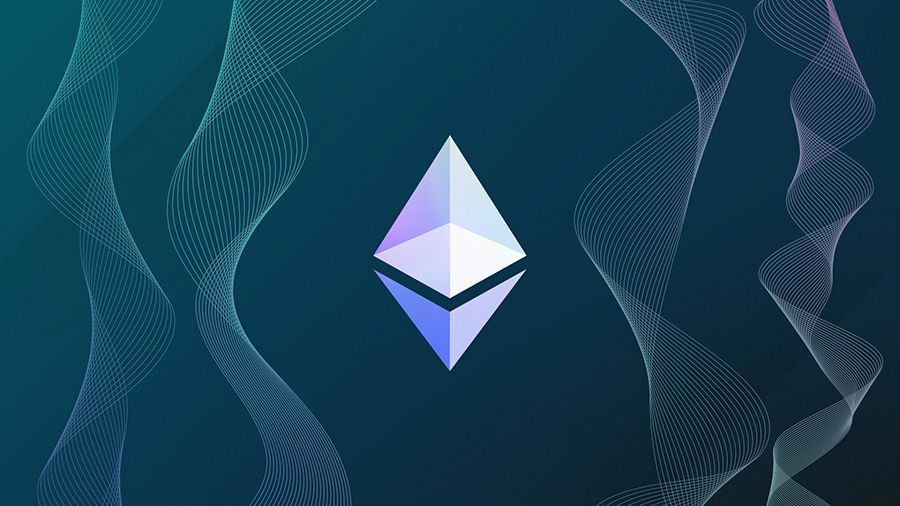
Ethereum developer Danny Ryan invited “white hackers” to hack Ethereum 2.0 testnets. The reward for discovered vulnerabilities will be $ 5,000.
Danny Ryan posted on Twitter a call to look for vulnerabilities in Ethereum 2.0 testnets with a link to the Github page for more details and conditions. The targets of the “white hackers” are the codebases of mini-networks from Lighthouse and Prysm clients, designed to access the new version of the blockchain. Unlike Ethereum clients Geth and Parity, which have a total of 7,500 nodes, the testnets for attacks will consist of only four nodes, making it easier to achieve the goal of preventing “completeness”.
In 2016, Ethereum co-founder Vitalik Buterin described the concept of “completeness” as an operation that is permanently fixed and cannot be reversed by systemic errors or outside interference. Basically, the developers of Ethereum 2.0 are asking “white hackers” to try to prevent block confirmation, as well as theoretically get transaction returns, double spend attacks, and other similar actions.
Ryan posted an article on the status of Ethereum 2.0 deployments last month, which explains the general timing of an update under development and some technical issues that need to be addressed in order to prepare for the full release. Significant development efforts have gone into creating coordination methods for tens or hundreds of thousands of validators that support Ethereum’s operation and will be eligible for staking rewards of at least 32 ETH.
While existing blockchains have tens, hundreds, or several thousand validators, Ethereum 2.0 aims to maintain decentralization and initially requires a minimum of 16,000 validators. Within a few years after the update is deployed, their number should increase to hundreds of thousands.
Earlier this month, Ethereum 2.0 lead developer Justin Drake said that the launch of the update phase 0 could not wait until early next year. In addition, researchers recently stated that DeFi applications on Ethereum 2.0 will be more vulnerable.
Tesla Shares vs. Bitcoin. Why is it more profitable to invest in cryptocurrency?
21/07/2020
 BTC and securities of Elon Musk’s company first appeared on trading floors in July 2010. Which of the assets to consider for buying and the price of which may collapse the day after tomorrow?
BTC and securities of Elon Musk’s company first appeared on trading floors in July 2010. Which of the assets to consider for buying and the price of which may collapse the day after tomorrow?
Elon Max’s company Tesla in the crypto community began to be called the bitcoin of the stock market. The reason for this lies in the explosive rise in value. The electric car maker was first listed on the stock exchange in July 2010 at a price of $ 19.2. In the same month, the first cryptocurrency appeared on the trading platform, then it cost about 8 cents.
To date, both assets have risen significantly. Tesla shares are currently trading at $ 1,500, up 7,700% after listing. Bitcoin value over the same period increased by 11.5 million and now amounts to $ 9,200.
But this year, Musk’s securities have performed better than the main digital coin. Since the beginning of the year, its rate has increased by only 27%. At the same time, Tesla stock quotes showed an increase of 275%. We learned from experts whether it is worth buying Tesla and BTC shares now or, conversely, playing downgrades and which of the assets has more potential.
Tesla
 Tesla’s stock price fell to $ 350 in March, then went into a growth phase and set a new all-time high of $ 1,790 in July. It is definitely not worth buying securities after such an increase, since a correction to $ 1100-1200 is possible. What is happening now is reminiscent of the rise in the Bitcoin exchange rate that happened in 2019. Then the coin from February to June rose from $ 3200 to $ 14,000, after which it fell to $ 6700 by December.
Tesla’s stock price fell to $ 350 in March, then went into a growth phase and set a new all-time high of $ 1,790 in July. It is definitely not worth buying securities after such an increase, since a correction to $ 1100-1200 is possible. What is happening now is reminiscent of the rise in the Bitcoin exchange rate that happened in 2019. Then the coin from February to June rose from $ 3200 to $ 14,000, after which it fell to $ 6700 by December.
Tesla’s stock movement is similar to the Bitcoin rally in 2019. The immediate target for the fall is at $ 1200. And even when it reaches $ 1200, the stock can then adjust to $ 1100. Those who bought at the top will exit the longs so as not to lose, which will strengthen the downward movement.
The American stock market is monstrously overheated, stock valuation has come off the real indicators of companies, as indicated by many indicators. Now investing in American stocks is like a casino – the bubble will burst sooner or later, and only the timing remains the biggest mystery. Tesla stock is not worth buying or shorting – it has nothing to do with investing.
Fundamentals say Tesla is heavily overpriced and the stock is trading at a huge premium. At the same time, the company is actively developing, interest in electric vehicles is growing strongly, in particular in Asia – this is clearly taken into account by investors in their assessments. But one way or another, quotes of securities may collapse sharply if the report, which is released on July 22, will contain poor indicators.
The lesson the Tesla story presents to investors is not to be short. Now the market has a lot of free money, the market looks unpredictable, and earlier it severely punished those who did it. However, buying stocks is also hardly worth it.
Tesla predicts very large cash flow in the 20-30 year interval. Investors believe that the company will live for decades, bringing in substantial profits, but, obviously, this assumption has many risks not materialized.
To be short, when there is unlimited liquidity from the Central Bank in the markets, this is an occupation that has not statistically proven to be effective over the past 12 years since the Fed’s monetary frenzy began.
Bitcoin
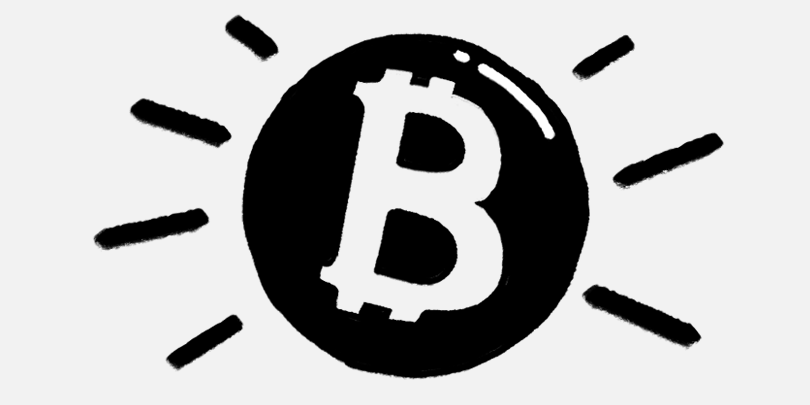 Despite the fact that in 2020 bitcoin yielded to Tesla shares in terms of profitability, it had its finest hour in 2017. In January, the price of the coin began to rise from just above $ 1000 and by December soared almost 20 times, to $ 20,000. But the rate could not be kept at this level and immediately began to decline, falling to $ 3200 within 12 months.
Despite the fact that in 2020 bitcoin yielded to Tesla shares in terms of profitability, it had its finest hour in 2017. In January, the price of the coin began to rise from just above $ 1000 and by December soared almost 20 times, to $ 20,000. But the rate could not be kept at this level and immediately began to decline, falling to $ 3200 within 12 months.
Bitcoin is a completely different story. In 2017, the cryptocurrency was a bubble, it burst, but now the market looks quite healthy. There are many positive factors that favor the development of a new industry and its recognition in the world. In other words, there is no clear reason to play to lower the value of BTC.
Bitcoin supply is limited, and after halving an additional reduction has occurred. In addition, part of the coins is lost naturally. Institutional investors and funds buy more of it than is produced. Bitcoin has an infrastructure in the form of even ATMs, unlike other cryptocurrencies. Derivatives are made on it, leafed on cryptocurrency exchanges. It’s definitely not worth it to shorten bitcoin now.
The Bitcoin situation is strikingly different. Paradoxically, the “volatile” BTC is stable now. After halving, miners are not ready to sell bitcoin at prices below $ 6-8 thousand, but there are quite a lot of buyers (including institutional investors) at such prices. BTC has moderate upside potential, and if you are not a short-term trader, then the asset should be considered a buy, not a short.
Since the beginning of the year, Bitcoin has risen in price much less than many altcoins. Some market participants believe that the cryptocurrency market will soon grow explosively, as happened in 2013 and 2017, but so far the market leader’s quotes do not look like a bubble.
The cryptocurrency market is currently showing no signs of a bubble. In the case of Tesla shares, on the contrary, there are these signs. Therefore, the price of securities is unlikely to increase if, for example, stagnation or a new fall begins in the stock market. However, the BTC rate is also not independent, its behavior depends on the S&P 500 index.
Bitcoin is in a sideways trend. Nobody knows where the exit will be. It is tied to the S&P 500. If the S&P 500 makes it to 3400, bitcoin will go up to $ 10,000. Now it’s very boring. Rally on it may be after July 25th.
Bitcoin has an important advantage over Tesla shares – you cannot increase its emission. In the case of securities, the situation is the opposite. The company may issue additional issues to balance the funding cost to market levels.
Shares are theoretically infinite: as the share price rises, the cost of financing the company falls … Therefore, as the share rises to certain levels, when the cost of capital for the company decreases significantly, the company can always issue an additional issue and issue any number of shares to bring the cost of its funding to market level. Roughly speaking, the rise in the value of the shares understates the cost of financing the company relative to the market rate.
This situation is impossible with the growth of the bitcoin price. No one can “print” it or create new coins to monetize the rise in price of the asset. This can only be done by selling what you have and by producing BTC through primary mining. After halving, this process became extremely energy-intensive.
Bitcoin has lost now, but can win in the future
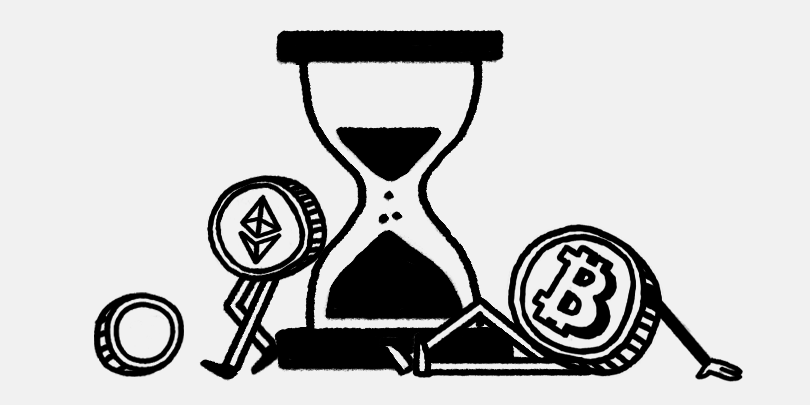 Buying Tesla shares is extremely risky right now. The securities of the company are overvalued and resemble a bubble, there is a risk of additional emission and, most importantly, on Wednesday a report for the second quarter will be released, which may contain poor indicators.
Buying Tesla shares is extremely risky right now. The securities of the company are overvalued and resemble a bubble, there is a risk of additional emission and, most importantly, on Wednesday a report for the second quarter will be released, which may contain poor indicators.
Despite the fact that the first cryptocurrency this year lagged behind in terms of profitability, at the moment it looks more attractive for investments than Tesla shares, experts are sure. Bitcoin, in comparison with 2017, does not show signs of a bubble and has a moderate potential for a long-term rise in price.
South Korean exchange Upbit closes fiat trading for foreigners
21/07/2020

The South Korean cryptocurrency exchange Upbit will prohibit the trading of fiat currencies to foreign traders and will focus on serving local users due to regulatory uncertainty.
Upbit, a South Korean exchange, is concerned that the marketplace is having difficulties in bringing digital and fiat currency trading to international users. The key problem is the impossibility of securing uncontrolled trading in fiat currencies using verified bank accounts. Upbit announced that it has entered into a partnership with the Internet bank K Bank. This will allow fiat trading to resume for South Korean users, but will not be available to traders in other countries.
According to the banking regulation of South Korea, citizens of other countries are prohibited from opening accounts through online banks. Therefore, Upbit warned foreign traders that they should withdraw their fiat currencies from the exchange by July 24. Other Korean exchanges, Korbit and Coinone, began to demand from users a mobile phone number, which must be specified during the authentication process. Thus, exchanges are trying to identify traders from other countries.
Since the beginning of June, Upbit users who are not South Korean citizens have been “giving away” 22% of their profits to the exchange for withdrawing money. This was necessary so that the platform could easily pay taxes on the profits of foreign customers. In January, the South Korean Ministry of Finance proposed a 20% tax on income from digital assets. However, the official legislation on taxation of income received from the turnover of cryptocurrencies has not yet been presented. Therefore, it is difficult to assess how the new tax regulations in South Korea could affect local cryptocurrency exchanges.
In the spring, it became known that since 2018, the trading volumes of many South Korean exchanges, including Upbit and Bithumb, decreased by 60-70% due to pressure from local regulatory authorities. Due to the lack of clear regulation of the cryptocurrency industry in South Korea, local cryptocurrency exchanges began to lose international users, so now they have to focus on local traders. In addition, in December, the South Korean Internal Revenue Service (NTS) recovered from Bithumb about $ 70 million. NTS accused the exchange of not retaining taxes from foreign clients who made profit from cryptocurrency transactions.
Bitcoin miners’ power consumption is on the rise again
20/07/2020
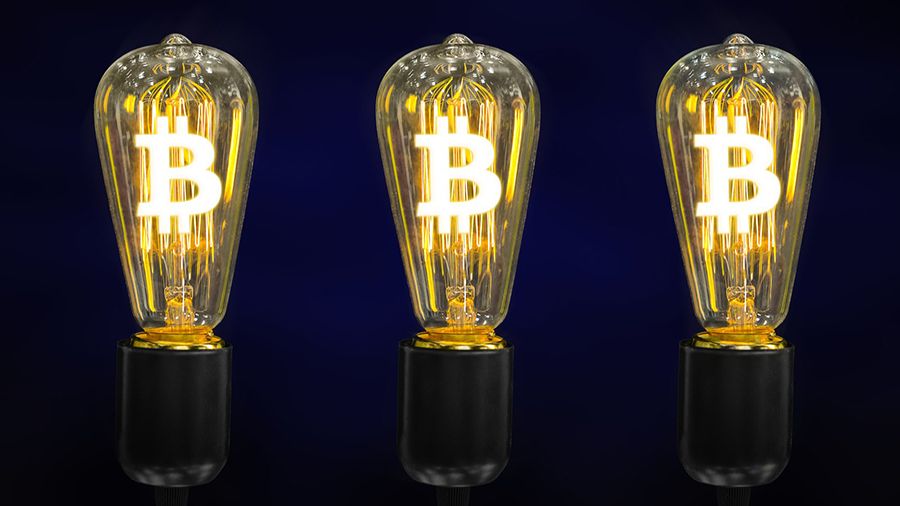
Despite the decrease in energy consumption of BTC miners shortly after the halving, when inefficient AISC miners began to disconnect from the network, this figure has now started to rise again.
After bitcoin halving in May, when the reward for mining a block for miners fell from 12.5 BTC to 6.25 BTC, many unprofitable and inefficient ASIC miners left the network. Then it was reported that the energy consumption of Bitcoin miners decreased by 24%, but still remains high.
Now, according to Digiconomist and the Cambridge Bitcoin Miner Electricity Consumption Index, this figure, albeit gradually, is starting to rise again. Digiconomist data shows that mining BTC now on average requires about 61.2 TW / hr per year, and this is the highest figure since May 11.
In June, the energy consumption of miners shortly reached 60 TW / h, fell for a short time, but then increased again. According to Digiconomist, the minimum energy consumption figure is 51.2 TWh – the highest it was last on March 14, long before the halving.
According to Digiconomist estimates, the total estimated energy consumption of Bitcoin miners is now greater than that of the whole of Algeria, and is approaching Kuwait’s energy consumption figures.
At the same time, bitcoin miners leave a carbon footprint, along with the same amount of electronic waste as in Luxembourg. A single Bitcoin transaction leaves a carbon footprint equivalent to 626,300 Visa transactions or 41,757 hours of YouTube video viewing.
Cambridge’s estimates differ from those above, but still indicate a trend towards an increase in the amount of energy spent around the world in mining BTC. The site’s data shows an average peak in energy consumption of 59.1 TWh last Tuesday, and has hovered around 58 TWh since then. This is the highest recorded on the site since May 21st.
Despite the fact that the energy consumption of Bitcoin miners is still far from the peak of 77.7 TW / h per year recorded by Digiconomist in early May before the halving, this trend indicates that energy consumption for BTC mining is gradually and steadily increasing.
Binance will partner with BitRiver to bring miners to its pool
20/07/2020

Binance wants to consolidate more hashrate of the Bitcoin network from Russia and Central Asia in its pool by deploying a physical server node at the BitRiver mining site in Bratsk.
As reported by Binance and BitRiver, the initiative will allow BitRiver ASIC miners who decide to switch to Binance to get a better connection and direct routing to the mining pool.
In turn, Binance will have access to clients who manage devices hosted on BitRiver. Currently, the total capacity of the enterprise for the production of BTC is 70 mW / h of a total capacity of 100 mW / h.
According to the Cambridge Bitcoin Electricity Consumption Index (CBECI), the current average monthly hash rate from miners in Russia is 6.08% of global BTC production, and from miners in Kazakhstan – 3.14%. At the same time, the hash rate from Chinese miners decreased from 75% recorded in Q3 2019 to 71%.
Currently, nine of the ten largest BTC mining pools by hash rate are either Chinese companies or they are owned by cryptocurrency exchanges whose owners are tied to China.
Assuming that, on average, BitRiver clients use modern ASIC miners, such as Antminer S17 from Bitmain or equivalent models, the total hashrate of BitRiver farms may exceed 1,000 P / s. Although this hashrate can only account for about 1% of BTC’s total computing power, the deal underlines Binance’s strategy of acquiring miners in different regions.
“Binance Pool offers a very competitive commission structure for institutional miners – clients of our data center,” said BitRiver CEO Igor Runets.
According to his estimates, up to 50% of the hash rate of BitRiver customer farms can be transferred to Binance Pool after the transaction. Runets added that these customers will mostly leave the BTC.com pool running Bitmain.
Both parties did not disclose whether Binance would offer special conditions on commissions to attract BitRiver customers. However, the below-market rate is one of the key steps Binance is taking to attract new miners to the pool. According to available information, Binance wants to establish similar cooperation with miners in Kazakhstan.
Recall that the Binance cryptocurrency exchange deployed a mining pool at the end of April and gradually accumulated 7,000 Px / s of the total hash rate of the Bitcoin network. Binance Pool is currently the eighth largest BTC mining pool.
Binance Pool implemented the Fully-Pay-Per-Share (FPPS) model and initially offered zero commissions, but now it charges a fee of less than 2.5%. But in some cases, the fee offered to large miner operators may be below 1%.
Meanwhile, other large BTC mining pools, such as F2Pool and Poolin, have also previously lowered their fees from 4% to 2.5%, although there are more favorable conditions for large clients.
The FPPS model means that the pool only charges the agreed commission for the subsidy in each block mined, and then distributes the subsidies, as well as transaction fees to the miners in proportion to their contribution. According to current data, since its launch, Binance Pool has mined 488 blocks with a total subsidy volume of over 3,000 BTC.
Heartwood hard fork activated on Zcash blockchain
17/07/2020
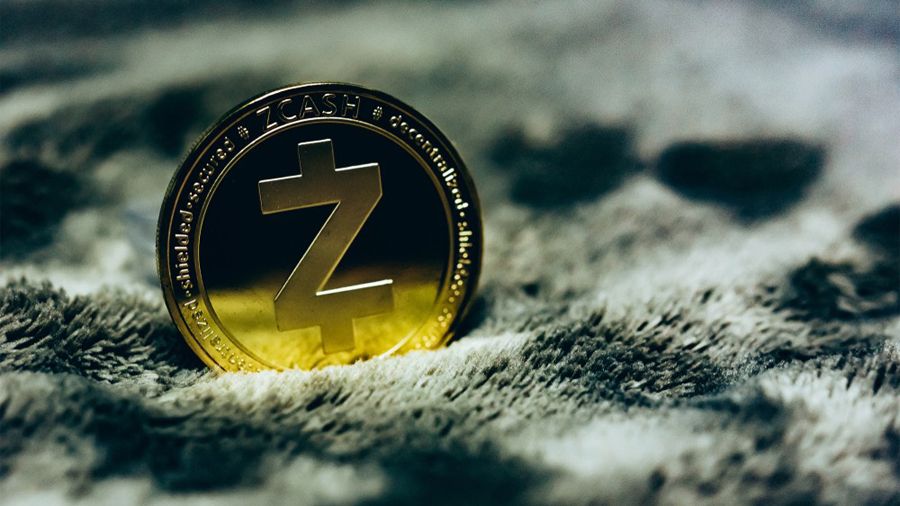
In the anonymous Zcash cryptocurrency blockchain, the Heartwood hard fork is activated on block 903,000. The update will ensure mining privacy.
Heartwood is the fourth update to the Zcash network since the advent of this cryptocurrency in 2016. Heartwood was activated with the support of the Zcash Foundation and the Electric Coin Company (ECC), supporting the development of the Zcash cryptocurrency. The update contains two suggestions for improving Zcash (ZIP): “Shielded Coinbase” (ZIP 213), which provides anonymous mining of Zcash, and “Flyclient” with support for lightweight clients to confirm transactions. Hard fork is not backward compatible. This means that all nodes must update their software in order to successfully synchronize with the new Zcash blockchain.
“The Zcash Foundation is pleased to introduce the Heartwood update with ECC. Soon, users will be able to connect to the Zcash network using the alternative Zebra client, compatible with the Zcash consensus and developed by the Zcash Foundation, ”said Zosh Foundation Executive Director Josh Cincinnati.
Note that the Zebra client, using the Rust programming language, was launched by Parity Technologies last June. Shielded Coinbase will allow miners to receive rewards for processing transactions directly to Zcash secure addresses, which hide the transaction amount, addresses and an encrypted text field. ECC Technical Director Nathan Wilcox said that the implementation of ZIP 213 was planned from the very beginning of the project. The update was implemented thanks to the Sapling hard fork, which was activated in 2018.
“With the help of secure transactions, individual miners can anonymously receive rewards. Mining pools can also privately send payouts to their customers, ”said Nathan Wilcox.
The Flyclient offer allows you to confirm transactions even with a minimum of information. Like simplified payment verification (SPV), a block header without its contents is sufficient to confirm a transaction. In addition, Flyclient simplifies interaction with other blockchains, including Ethereum. Summa’s founder and developer, James Prestwich, added that a full Zcash site is required for full privacy. Flyclient protects light clients from intruders and ensures the complete anonymity of each wallet.
Recall that in June 2018, the Zwash network successfully passed the Overwinter hard fork to prepare the Zcash code for the larger Sapling hard fork, and in December 2019, the Blossom hard fork took place in the Zcash network.
ESET discovered GMERA Trojan stealing cryptocurrency
17/07/2020

ESET specialists discovered the GMERA Trojan, which steals cryptocurrencies from traders. The software is distributed under the guise of crypto asset trading applications on Apple MacOS.
ESET, a cybersecurity company, said malware has been integrated into fake cryptocurrency trading applications. After installing these extensions, it begins to steal digital assets from user wallets. Attackers impersonate the Kattana trading platform. They copied the site of the service and promote their software under the guise of four applications: Cointrazer, Cupatrade, Licatrade and Trezarus. The Trojan was first discovered by the antivirus company Trend Micro in September 2019. At that time, GMERA was distributed in the form of a Stockfolio application for stock market investments.
ESET experts said that when downloading applications from a fake site, the user downloads a ZIP folder with the infected version of the application. Moreover, these applications fully support trading functions. Experts added that for a person who does not use the original Kattana services, fake sites may not cause suspicion. Hackers use social engineering in direct contact with potential victims. ESET analyzed malware using the Licatrade application as an example, with which GMERA has only minor differences.
The Trojan installs a shell script on the victim’s computer that provides hackers with access to the user’s system through the downloaded application. This scenario allows attackers to create command servers via HTTP, which makes it possible to exchange data with the victim’s device. GMERA steals the user’s personal data, information about his cryptocurrency wallets, location, as well as screenshots. ESET specialists reported this problem to Apple, after which the corporation withdrew the certificate issued by Licatrade on the same day.
Recall that in April Google removed 49 Chrome browser extensions, which were distributed as utilities for working with cryptocurrency wallets, but contained malicious code. Google later removed another 22 extensions that stole cryptocurrencies.
Bitcoin Core developer has proposed a new smart contract language for Bitcoin: Sapio
16/07/2020

Bitcoin Core team member Jeremy Rubin is working on a new smart contract language for Bitcoin that will increase user control over their BTC.
Jeremy Rubin showed off the new Sapio language on Saturday at the RecklessVR virtual reality presentation meeting, which many audience members joined in VR headsets. He plans to release a programming language as part of his new research organization, Judica.
Stateful smart contracts that fix state enable users to save money – they cannot be spent until certain conditions are met, including multi-stage ones. Smart contracts are most often associated with the Ethereum blockchain, which has the flexible programming language Solidity, which facilitates the writing of state-fixing smart contracts.
Not everyone knows that Bitcoin also supports several different types of smart contracts. For example, including the requirement that more than one person sign a transaction before it can be spent (multi-signature transactions). They are widely used in SegWit and Lightning Network technologies. But compared to Ethereum, Bitcoin smart contracts are less functional and more cumbersome to create, or do not fix the state – that is, the conditions are met either immediately or not at all. Until now, this has meant that there are fewer options for developing smart contracts for Bitcoin.
Rubin hopes to expand the use of smart contracts for Bitcoin to give users more control over what they can do with their money.
New opportunities
Already today, Sapio can work for Bitcoin smart contracts. But most types of such contracts, according to Rubin, are not yet available online. He created Sapio specifically for BIP CHECKTEMPLATEVERIFY (CTV). This change, if adopted, could bring more smart contract features to the Bitcoin network, and users will be able to protect their BTC in new ways.
In his speech, Rubin called CTV “a simple system of agreements for Bitcoin.” The idea of the agreements, which has existed for a long time, is to add security measures, for example, provide additional rules for moving BTC, preventing the cryptocurrency from being sent to all addresses except a few allowed ones.
“In practice, this means that the system allows you to execute more complex smart contracts and determine how you can spend BTC,” Rubin said.
One use case for agreements is the BTC repository. Usually, after capturing the private key, an attacker can gain access to all crypto assets associated with it. But blocking bitcoins in such a storage adds restrictions on the movement of BTC in case of an error or other security problem.
“I think storage is one of the most important features that CTV will present. They provide a huge number of financial sovereignty tools for a wide audience, ”Rubin said, adding that this technology offers users the opportunity to protect BTC on their own without a third-party service provider.
Now the prototype of the BTC intranet storage is already available and was proposed earlier, but creating them using CTV will be much easier, Rubin believes.
CTV also offers many other features, such as monitoring network congestion. CTV is able to help BTC users wait out high commissions and send coins at a time when it will be cheaper. Now that Rubin has created a smart contract language specifically for CTV, these usage scenarios will become easier for developers to program and, therefore, more accessible for ordinary users.
Blockchain as an arbiter
The recently established Rubin research organization Judica will focus on this set of technologies. He plans to release tools that, he hopes, “will significantly expand the economy of Bitcoin.” The word “judica” in Latin means “judgment”: Rubin considers the Bitcoin blockchain as a “judge”, and wants to push the network to develop in this capacity.
“If you look at the relationship between the market and the government, then, as a rule, supporters of the free market will say that the government is only an agent that bothers everyone and should be eliminated. But if you delve deeper into the problem, the functionality of the courts is actually crucial for the development of the economy. Without reliable courts or any judicial system (private arbitration also matters), transactions with strangers are too risky, which seriously limits economic activity. The ability to provide contacts through the legal system (and not just on their own) allows the economy to flourish, ”he said.
At the same time, Rubin claims that Bitcoin is still very limited in its capabilities in this area.
Quantstamp Audit Firm Approves Launch of Prysm Client for Ethereum 2.0
16/07/2020
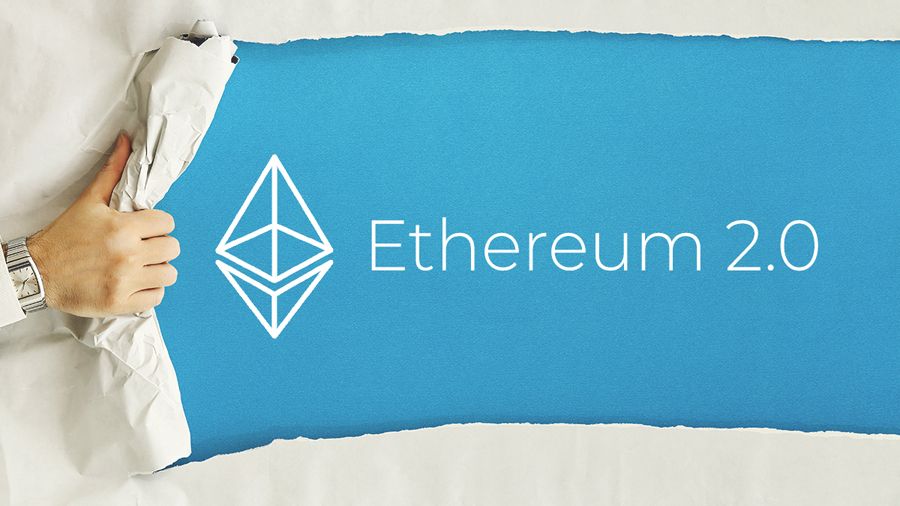
Head of Audit Firm Quantstamp Richard Ma announced that he is ready to launch the Prysm client to upgrade Ethereum 2.0.
Prysm got the approval of the auditor after the Ethereum developers started discussing the launch date of the zero-stage update last week. Justin Drake suggested that it will be released no earlier than January 3, 2021, and Ethereum co-founder Vitalik Buterin insists that its deployment begin this year. To date, nine clients using different programming languages are being tested.
Quantstamp notes that the Prysm client code is “well written and styled.” However, the company found 65 problems regarding the structure of timestamps, the generation of pseudo-random numbers, and the possibility of various attacks. According to Richard Ma, 75% of these problems have already been resolved thanks to “low-level optimizations.” Ma added that the transition of ETH and the decentralized finance ecosystem (DeFi) to Ethereum 2.0 is a very complex and important process. Therefore, when it comes to crypto assets of users, one successful audit is not enough to start the update.
Prysm recently joined the Altona test network, which Teku clients from PegaSys, Nimbus from Status and Lighthouse from Sigma Prime have already joined. Testnet allows you to perform ether staking and confirm transactions in accordance with the parameters of the zero phase of Ethereum 2.0. Prysmatic Labs co-founder Preston van Loon said Altona was the final step that would bring the launch of Ethereum 2.0 closer to the PoS algorithm. Before the launch of the Altona testnet, the first Ethereum 2.0 multi-client test network, Schlesi, as well as the Witti testnet, were launched.
We add that last month, the developer Afri Schoedon published a document stating that the Lighthouse client once again surpassed other customers in terms of technical indicators in the Witti test network. Sigma Prime co-founder Paul Hauner said Lighthouse is also undergoing an audit. Shoedon noted that Ethereum customers should not consider each other as rivals, as each client contributes to the development of the ecosystem.
The developer proposed to “reset” the state of the Ethereum blockchain for scaling
15/07/2020

The Ethereum developer has proposed introducing stateless clients into the current version of Ethereum to scale the network with minimal security damage.
The amount of account balances supported by network nodes, called state, continues to increase as applications and projects interact. An independent developer Alexei Akhunov may have a solution to this problem, the idea of which he borrowed from the Cosmos project.
The new proposal, dubbed ReGenesis, was published on EthResearch in June. It proposes to introduce stateless clients into the existing Ethereum blockchain, “zeroing” the states of certain nodes and replacing them with a mathematical proof on a rolling basis.
The goal of this proposal is to make the Ethereum dataset scalable with minimal loss to security.
“The old nodes will forget about the condition,” says Akhunov. “At this point in time, all nodes will forget what kind of condition it was. They will only remember hashing. ”
Regenesis
Blocking zeroing is not a new idea. In fact, it was mentioned back in the Ethereum Yellow Book by the co-founder of the project, Gavin Wood. Akhunov said that he drew inspiration for his interpretation of ReGenesis from the Cosmos project, which repeatedly went through a similar procedure to make the chain “easier”.
“I call this the“ restart ”of ReGenesis, and this can be done regularly to ease the load on nodes that are not related to mining. It also represents a less dramatic version of Stateless Ethereum, ”Akhunov wrote.
Support for non-stateful clients, that is, nodes that will contain as little state information as possible to verify transactions, was the main goal of ETH 2.0 in order to reduce the load on the nodes of Ethereum. ReGenesis will include some of the studies of Ethereum developers during the transition, or ETH 1.x.
The proposal implies that every time the Ethereum blockchain reaches a certain block number, the network automatically saves data. She then deletes all her progress minus the “evidence” or “witnesses” of all past transactions. According to Akhunov, autosave data can be stored in other networks, for example, BitTorrent.
Akhunov notes that the proof allows the degenerated chain of Ethereum to start work again with a solid foundation, but only for certain types of nodes.
“We are eliminating the assumption that all other checking nodes have access to this implicit state. This will verify that the transactions in the block are valid, and the hash of the root state presented in the block header matches the result of executing this block, ”he wrote.
This system of control points is already used in various variations for the translation of new nodes online, for example, in Beam synchronization.
Forgotten Old
Ethereum co-founder Vitalik Buterin describes similar ReGenesis suggestions in a 2014 article entitled Proof of Stake: How I Learned to Love Weak Subjectivity.
Buterin claims that a node can be trusted under certain restrictions, even if it starts from a checkpoint instead of a genesis block. As in the case of ReGenesis, Buterin suggests that the node simply “get a recent block hash from a friend” to join the network and start checking transactions again.
Akhunov’s offer is for the current Ethereum blockchain on PoW. However, it works in accordance with Buterin’s similar assumptions about PoS, by dividing the network into “full nodes” and “not fixing the state of clients”, which rely on external evidence.
Weak subjectivity is brought to its logical conclusion through the ongoing research project Stateless Ethereum and PoS. As part of this project, it is planned to create a transaction verification method based on the transaction hash and mathematical evidence in ETH 2.0.
Underwater rocks
At the moment, ReGenesis is a promising project that has been supported by many community members. However, one of the leaders of the Ethereum development team, Peter Szilágyi, noted that ReGenesis does not technically reduce the condition. It only thinnes out the network.
Siladiyi means that some parties still have to keep a full copy of the state without the help of Akhunov’s evidence, because they need to access the old state to send transactions. If some must use the full registry, then the state cannot be considered “nullified”.
Great condition can be a big problem. For example, transaction processing speeds may be reduced, and the network may become an easier target for DDoS attacks. At the same time, many decentralized applications (dapps), for example, Web 3.0 browsers, can have problems working without a “reboot,” Silady said. Many dapps need access to full state to work – they just need a dock
BitGo Service Introduces FATF Compliance Toolkit
15/07/2020
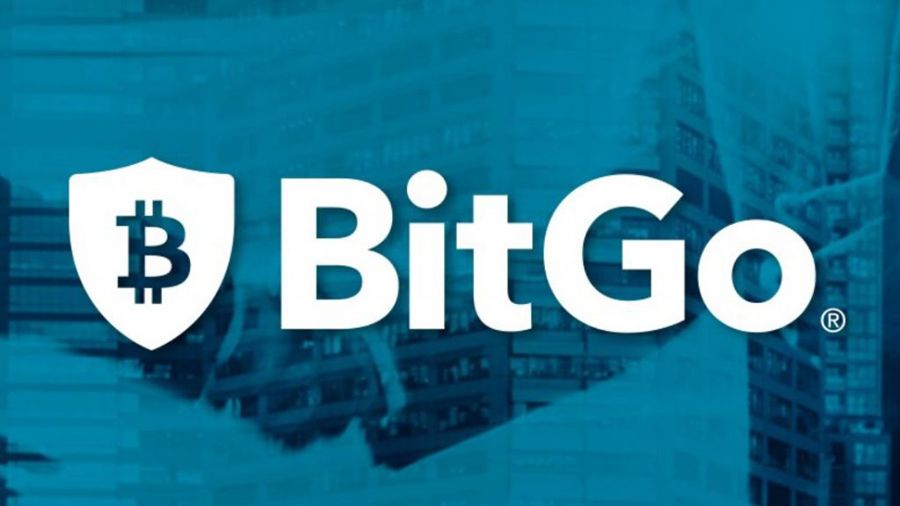
The custodial service BitGo integrates a tool into cryptocurrency wallets that ensures compliance with the requirements of the Financial Action Task Force on Combating Money Laundering (FATF).
BitGo company announced that it was the first cryptocurrency wallet operator with a built-in API that will allow you to transfer additional information about users and their transactions. The new BitGo tool aims to increase transparency and meet the requirements for virtual asset service providers (VASPs). According to FATF requirements, service providers, wallet operators and exchanges are required to exchange data at each transfer of assets between sites.
BitGo Product Development Manager Chris Metcalfe said that BitGo is using the Intervasp Messaging 101 (IVMS101) standard introduced by InterVASP in May. This standard defines a universal model for the exchange of data between VASP and their customers (senders and receivers of transactions) for each transaction. Metcalf said that the advanced BitGo API is ready to receive relevant information, and customers can provide all the necessary data when sending a request for a transaction.
Metcalf added that clients should not have technical problems with the integration of the API. Moreover, customers will not be required to provide data according to the Travel Rule principle if the amount of several transactions does not exceed $ 1000. BitGo management reported that it did not work directly with the FATF, however, for more than a year, it worked with various working groups and regulators to ensure compliance with FATF rules.
The FATF issued recommendations on virtual assets in June 2019, but the agency’s order officially took effect last month. At the same time, the organizer of the InterVASP Messaging Standards Joint Working Group, Siân Jones, believes that all players in the cryptocurrency industry will not soon fully comply with these requirements.
In February, the G20 countries called for the speedy implementation of the FATF cryptocurrency regulation recommendations so that criminals could not use them to launder money, circumvent sanctions and existing control measures.
Grayscale Increases BTC and ETH Shares in Digital Large-Cap
14/07/2020

Grayscale Invesments rebalanced the Digital Large-Cap fund, which includes cryptocurrencies with a large market capitalization. The shares of BTC and ETH are increased due to XRP, BCH and LTC.
On Twitter, the investment company reported that the share of bitcoin in the fund increased by 0.5% and now amounts to 81.5%. The share of ether increased by 2.1% and now it occupies 11.7% of the fund. The shares of XRP, BCH and LTC decreased by 1.4%, 0.8% and 0.6%, respectively. Now they occupy 3.6%, 2% and 1.2% in the fund, respectively.
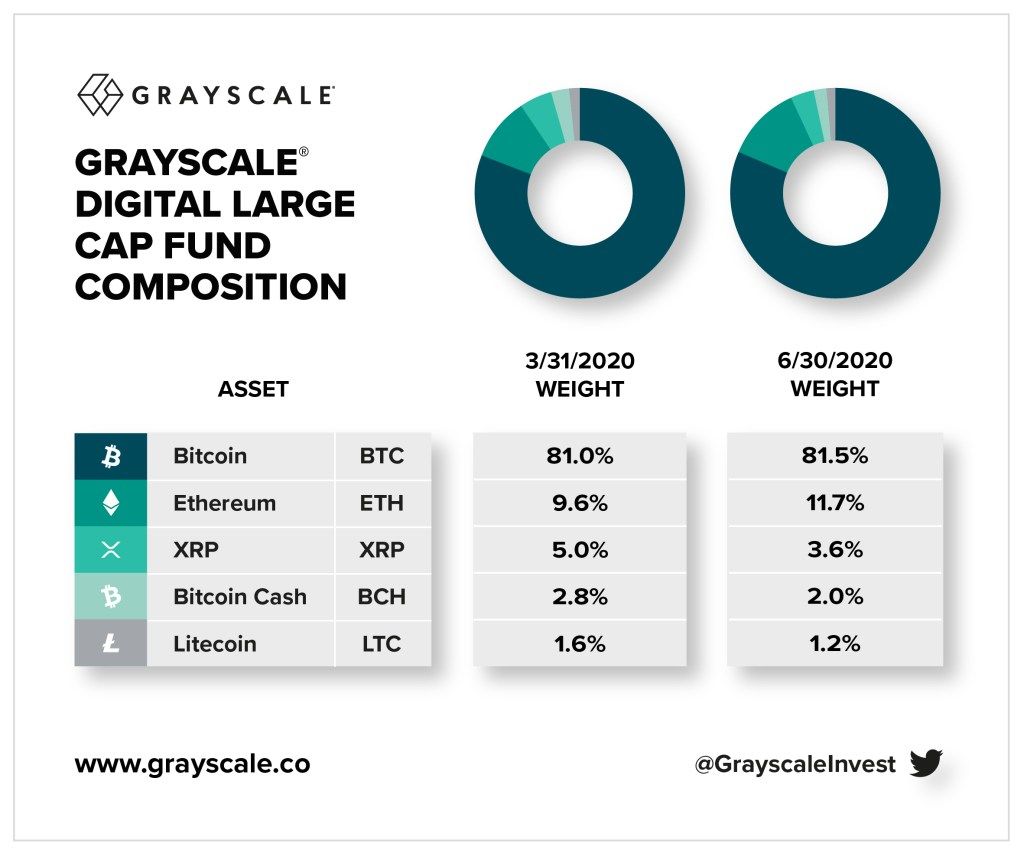
The fund is rebalanced quarterly and is based on changes in the share of cryptocurrencies in the market. At the same time, of the cryptocurrencies represented in the fund, only Ethereum increased its dominance from 8.17% to 9.8%. For other coins, the indicator decreased, including Bitcoin – from 65.78% to 62.46%, but this did not prevent the company from increasing the share of BTC by 0.5%.
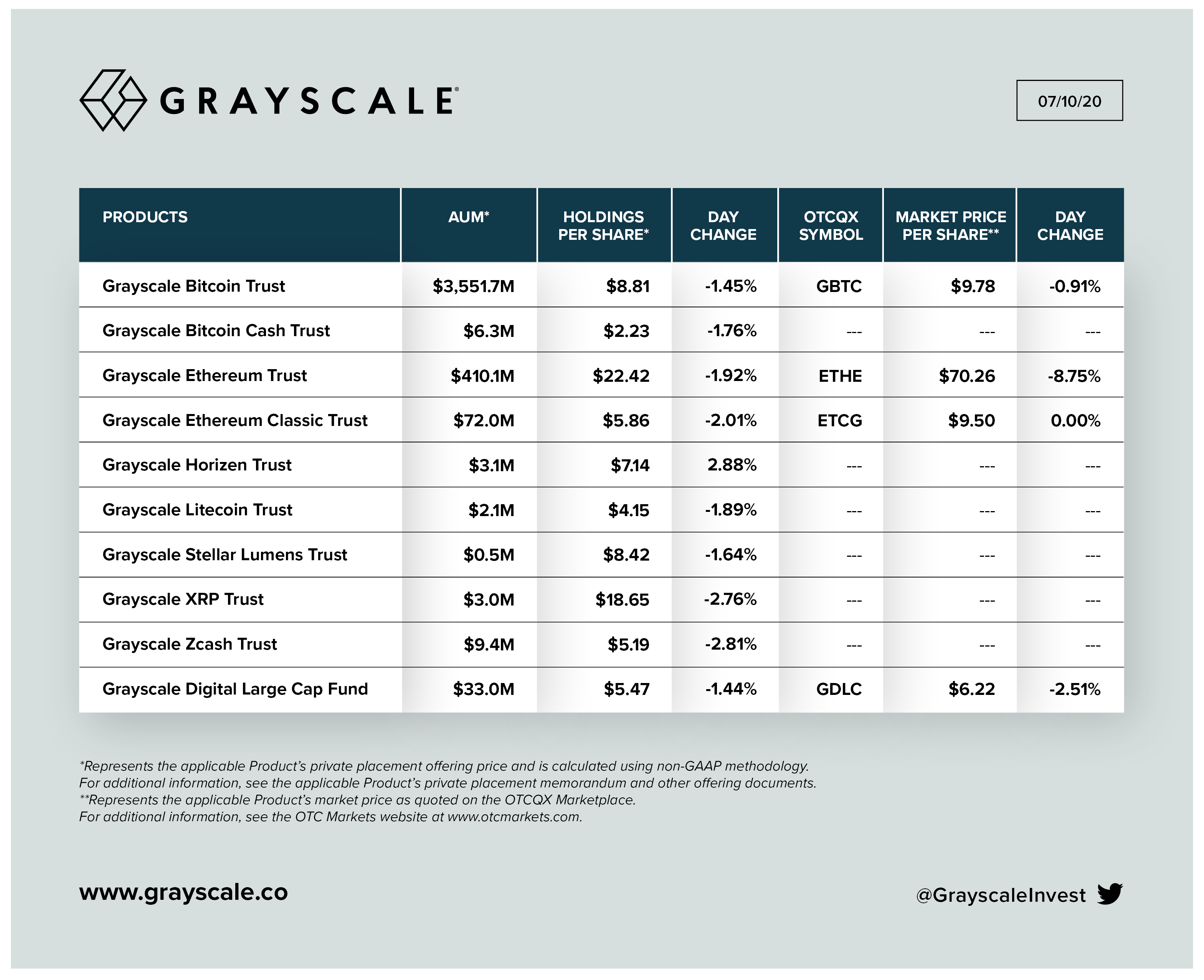
The capitalization of the Digital Large-Cap Fund is relatively small – only $ 33 million. For comparison, the oldest Grayscale Bitcoin Trust (GBTC) costs $ 3.55 billion. The Ethereum Trust, in which $ 410 million was invested, is also quite popular. The total amount of assets in cryptocurrencies managed by Grayscale Investments is $ 4.1 billion.
At the end of June, analyst Kevin Rooke calculated that the company was buying three times as many bitcoins as it mined. At that time, Grayscale bought 19,879 BTC in a week, while the total number of bitcoins mined was only 7,081 BTC.
SEC and CFTC fined Abra $ 150,000 for unregistered sale of cryptocurrency swaps
14/07/2020
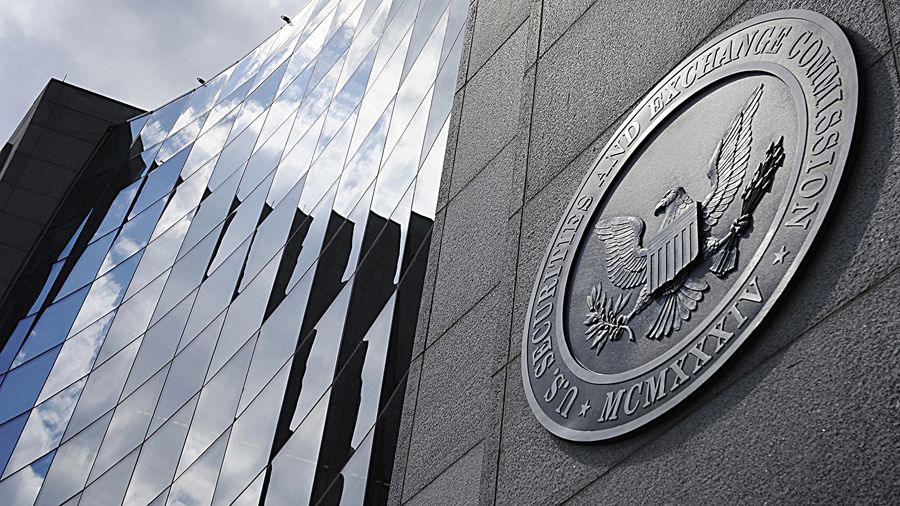
US regulators accuse Abra startup of unregistered sale of crypto assets securities swaps. Abra fined $ 150,000.
According to a press release from the U.S. Securities and Exchange Commission (SEC), using the Abra crypto-investment application, users entered into contracts that provide access to the dynamics of stock prices and traded exchange-traded funds (ETFs), as well as concluded trading transactions through the blockchain. With the help of the U.S. Commodity Futures Trading Commission (CFTC), the SEC found out that the Abra platform and its affiliate Philippine company Plutus Technologies were selling cryptocurrency securities swaps without registering on the national stock exchange, which violates U.S. securities laws.
It is reported that Abra began offering such contracts to retail investors from the United States and other countries in February 2019. According to the SEC, Abra has not taken any measures to determine whether users who downloaded the application comply with the terms of the contract under US securities law. In the same month, Abra stopped selling such swaps after the SEC notified, but in May 2019 it resumed this activity, limiting its offers to American investors. This means that part of Abra’s operations was performed outside the United States, while platform employees in California promoted swap contracts among American investors, and then selected users who could buy these contracts. The SEC found that Abra’s US employees made several thousand stock and ETF transactions in the United States to hedge contracts.
The SEC and CFTC have ordered firms to stop committing unlawful acts and refrain from resuming them. Abra and Plutus Technologies did not plead guilty, but did not dispute the charges of regulators, agreeing to pay a fine of $ 150,000.
“Platforms working with securities are required to undergo mandatory registration and must provide investors with all the information necessary for assessing risks. Firms offering securities-based swaps will not be able to evade federal securities laws, even if they register in another country as a counterparty, because most of their business is in the USA, ”said Daniel Michael, head of department SEC, working with integrated financial instruments.
Recall that in November last year, SEC and CFTC accused First Global Credit (XBT) of unregistered sale of bitcoin swaps. In addition, last week, Chairman of the US Commodity Futures Trading Commission (CFTC) Heath Tarbert said that the launch of new cryptocurrency futures in the United States depends solely on the decision of the SEC.
Kraken report: BTC correlation with S&P 500 grows, but with gold – falls
13/07/2020
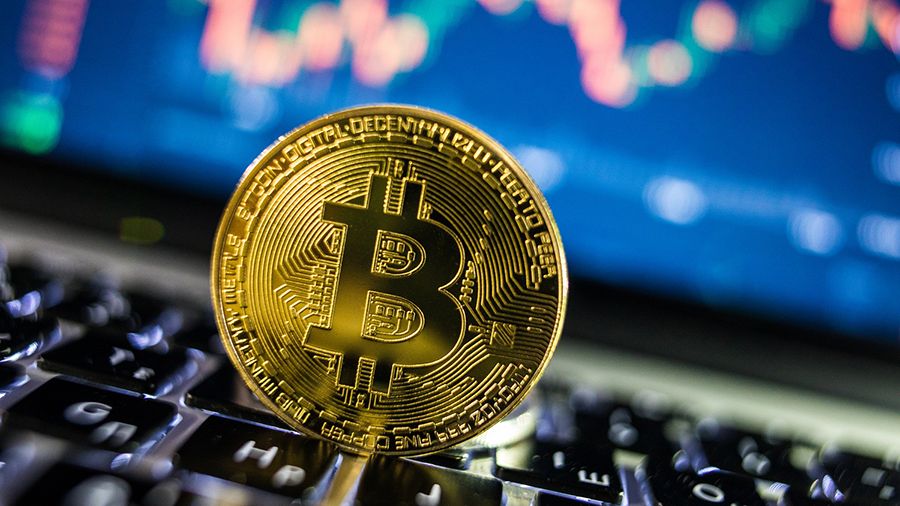
According to the latest report from the Kraken cryptocurrency exchange, a 31% drop in bitcoin trading in June led to BTC’s annual volatility reaching a six-month low.
According to Kraken in its report, June was the most unremarkable month on the Bitcoin trading market since February. The lack of activity on the market led to a decrease in trading volume on the exchange to a four-month low of $ 36.6 billion.
Earlier this month, CryptoCompare analysts also reported a decrease in trading volume. They noted that in June, trading volumes on “top-level spot” cryptocurrency exchanges fell 36% to $ 177 billion, and bitcoin volatility dropped to its lowest value for the year.
According to Kraken, in light of the weak market and low volatility, the BTC price fell by 4.4%, which was the lowest price change since last August.
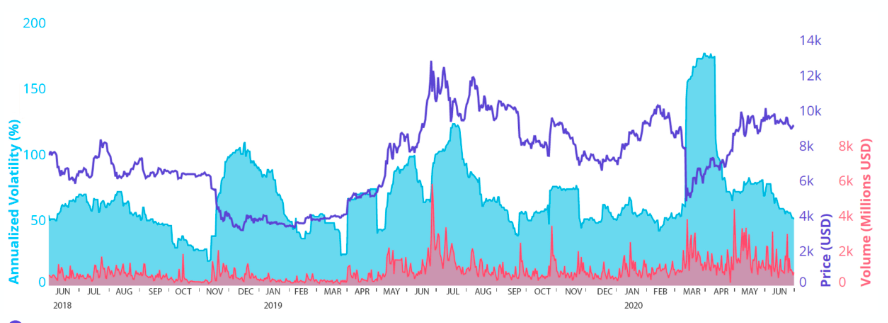
As a result of the change in trends that took place earlier this year, the thirty-day correlation of Bitcoin with the S&P 500 index became “significantly more positive” and rose to 0.65 at the end of June. At the same time, the thirty-day correlation of BTC with gold fell below the average for the year and reached a minimum of -0.49.
Interestingly, in early June, CoinMetrics noted a high correlation between the price of gold and bitcoin in recent months. At the same time, according to VanEck, the correlation between assets has intensified since March.
Kraken analysts believe that the change in the correlation of bitcoin with gold and the S&P 500 index made it less like a safe asset and more like a traditional financial asset in the context of a recovery in the global stock market.
The report notes that market participants should pay more attention to the thirty-day forecast volatility index for the S&P 500 (VIX). If BTC is about to change a multi-year macroeconomic downtrend, it needs to rise above $ 10,500 and trigger an upward price movement.
LatamLink will combine Besu, EOSIO and ConsenSys technologies to develop LACChain system
13/07/2020

LatamLink Latin American Alliance will combine Besu, EOSIO and ConsenSys technologies to develop the LACChain system, designed for use at the state and corporate levels.
LatamLink was formed by EOS Costa Rica, EOS Argentina and EOS Venezuela block manufacturers for the expanded implementation of the EOS blockchain in Latin America. In addition, the Inter-American Development Bank (IDB), as well as private and public organizations in Latin America and the Caribbean, contributed to the creation of the ecosystem.
Startup ConsenSys, working on the development of the Ethereum ecosystem, also did not stand aside. Last year, a Besu test network was installed in LACChain to create an infrastructure that would allow the use of blockchain for public procurement, registration of land and the implementation of social programs.
Edgar Fernández, founder of EOS Costa Rica, announced his readiness to launch the LACChain test network to test how the two technologies will interact with each other – EOSIO and Ethereum. Fernandez emphasized that testing LACChain should not be considered as a competition operating on the principle of “the winner gets everything”, and at the end of which a specific blockchain for the main network will be selected. On the contrary, we are talking about the interaction of different protocols.
For some applications and use cases, LACChain will use Ethereum, while others will work better with EOSIO. ConsenSys spokeswoman Kara Miley believes that if LACChain becomes the “gold standard” to bring blockchain to IDB, government and the private sector, billions of people around the world can use ConsenSys technology.
“This is not a race between the protocols. We do not check which one works better or worse, processes transactions per second more, or provides a higher level of privacy. LACChain is an independent collaboration platform where different projects can realize their mission, ”said Marcos Allende, LACChain Technical Director.
Allenda added that the LACChain system was previously tested with the Quorum financial blockchain developed by JPMorgan Chase, but there were a lot of problems using it. Tests were then conducted with IBM’s Hyperledger Fabric, which revealed that Ethereum and EOSIO-based developments are best suited for the LACChain project.
Fernandez noted that EOSIO experts could create a “Latin American blockchain” so as not to depend on North America, Asia or Europe. However, Allenda said that even if the LatamLink developers were from the United States, this would not change their attitude.
Recall that in February, JPMorgan Chase began negotiations to merge its blockchain-based Quorum division with ConsenSys startup.
Cosco Shipping Tests Ant Financial Blockchain in Cargo Transportation
10/07/2020

Cosco Shipping, one of the world’s largest container operators and carriers, is testing the Ant Financial corporate blockchain to increase the efficiency of operations.
Earlier this week, Shanghai-based Cosco Shipping, one of the world’s ten largest container operators, confirmed that it intends to test Ant Blockchain to optimize its operations. This corporate blockchain was developed by Alibaba’s subsidiary Ant Financial.
Cosco Shipping operates a fleet of 1,330 vessels with a total carrying capacity of just under 106 million tons – one of the largest in the world. In a joint press release, the companies said that Ant Blockchain could be used to distribute key documentation, such as container records and import licenses, to verified and tamper-proof distribution chain members.
Ant Group Chairman Eric Jing said that the Ant blockchain, which, as previously reported, can process up to a billion transactions per day, can make global delivery of goods more efficient.
Recall that last month, China’s largest port operator China Merchants Port entered into a partnership with Ant Financial to develop a blockchain-based platform. Earlier this year, Ant Financial launched an enterprise platform on the OpenChain blockchain. It will help small and medium-sized businesses implement applications on the blockchain.
Blockchain is increasingly being used to increase the efficiency of logistics operations, especially in the field of cargo transportation. In April, Shanghai International Port (SIPG), Cosco, Tesla and CargoSmart, a supply chain management company, announced that they would launch a blockchain-based platform for tracking shipments.
Losses of $ 1.4 billion over 5 months. Why people are left without cryptocurrency
10/07/2020
 In 2020, 98% of lost funds were stolen through fraud and fraud. We tell the main tricks of criminals and how to avoid serious financial losses.
In 2020, 98% of lost funds were stolen through fraud and fraud. We tell the main tricks of criminals and how to avoid serious financial losses.
This year may be the second in history in terms of the number of crimes in the field of cryptocurrencies. According to Cipher Trace, from January to May 2020, over $ 1.36 billion in digital money was lost as a result of theft, hacking and fraud. Most of the lost funds, 98% of the total amount, was lost due to fraud and misappropriation.
In connection with the COVID-19 pandemic, a lot of phishing sites on this topic have appeared on the network that trick users into cryptocurrency or steal their personal data. The largest fraudulent scheme in 2020 was the Ponzi Wotoken scheme in China. Its participants were promised income through the use of non-existent trading software. Over 715,000 people were affected, they lost more than $ 1 billion.
Every year, users are more attentive to the protection of their funds, and exchanges strengthen security systems. Therefore, the amount of stolen funds as a result of hacker attacks becomes smaller. Now criminals are mainly putting pressure on human psychology, promising high profits with minimal time, effort and investment.
Cryptocurrency distributions from celebrities
 In early July, a website appeared on the network that looked like a Medium portal, on which the official page of Elon Musk reports on the free distribution of cryptocurrency. Users were informed that Tesla gives Bitcoin and Ethereum to all fans of the company.
In early July, a website appeared on the network that looked like a Medium portal, on which the official page of Elon Musk reports on the free distribution of cryptocurrency. Users were informed that Tesla gives Bitcoin and Ethereum to all fans of the company.
The site has fake comments from the lucky ones who were able to get rich in this way. The fraud is that users are offered to send from 0.1 to 20 BTC or from 1 to 100 ETH to a specific address in order to get back twice as much. Of course, criminals do not send anything back.
Such a scheme has long been common in the crypto industry, and Elon Musk is one of the most favorite figures for criminals. However, fraudsters can use the name and image of any character known in the blockchain community. For example, in March of this year, the YouTube channel was launched on behalf of the head of Ripple Brad Garlinghouse. A real interview was published there, and in the description of the video, users were asked to send from 2 to 500 thousand XRP to a specific address in order to receive from 20 thousand to 5 million coins in return.
How to protect yourself:
It’s easy to save your coins: in fact, in this way no one gives out cryptocurrency for free, even the richest and most famous. In order to strengthen this idea in the heads of crypto enthusiasts, the creator of Ethereum Vitalik Buterin even added the phrase “Not giving away ETH” to his Twitter nickname, which means “I do not distribute the ether”.
The scheme has been operating for several years and always looks the same: a celebrity in honor of an event gives all cryptocurrencies. Users only need to send part of their coins to a specific address.
Financial pyramids
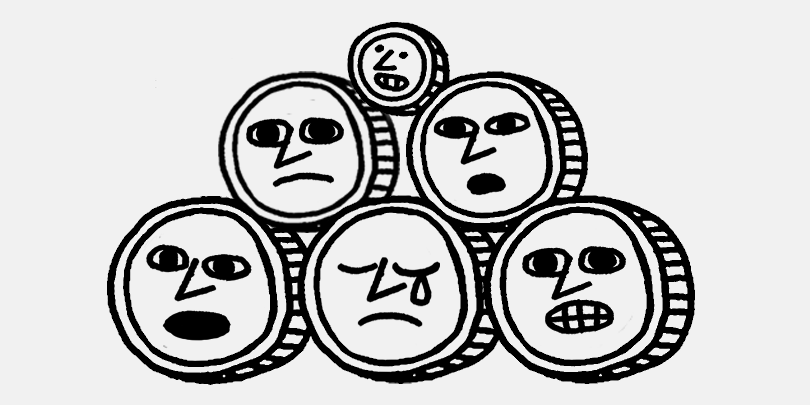 For the second year in a row, the bulk of the money that users lose is accounted for by financial pyramids. This year, as we said earlier, the leader is Wotoken, which attracted over $ 1 billion from more than 715 thousand investors.
For the second year in a row, the bulk of the money that users lose is accounted for by financial pyramids. This year, as we said earlier, the leader is Wotoken, which attracted over $ 1 billion from more than 715 thousand investors.
In the general list of schemes, Ponzi continues to lead OneCoin. According to various estimates, fraudsters raised from $ 4 billion to $ 15 billion in cryptocurrency.
On July 8, 2020, a U.S. court was to sentenced one of the founders of the pyramid Konstantin Ignatov. However, the prosecutor asked to postpone the hearing for four months, as the defendant assists the prosecution, and this cooperation has not yet been completed. Ignatov faces up to 90 years in prison.
How to protect yourself:
All financial pyramids have certain properties by which fraud can be recognized. For example, if the user is offered to earn on attracting other investors. Also, almost always, the organizers of such schemes promise participants high profits if they contribute funds or invite new participants. The latter are given a similar task.
All the profit that early investors receive is formed from the investments of the later ones. As a rule, the organizers take most of the funds for themselves, the rest of the participants are left with nothing.
Phishing sites
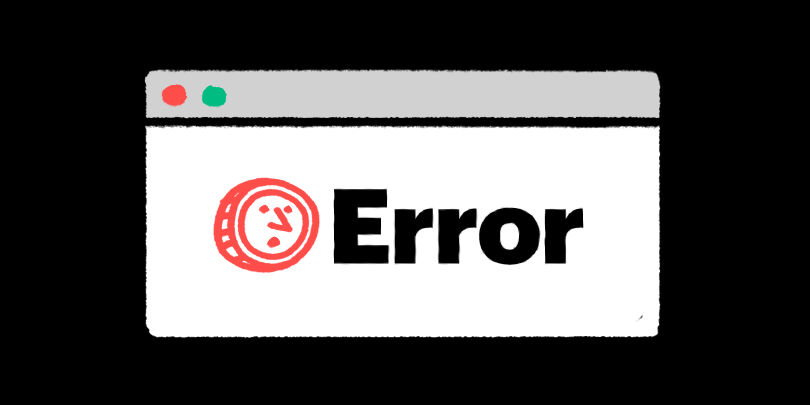 Phishing sites are used by criminals to steal user confidential data. For example, it can be a fake exchange start page, which is almost impossible to distinguish from the real one. After a user tries to log into his account and enters a username and password, the data will be in the hands of attackers. Sometimes criminals use different characters, similar to the letters of the Latin alphabet, so that even after reading the address of the site, it was difficult for the user to notice the substitution.
Phishing sites are used by criminals to steal user confidential data. For example, it can be a fake exchange start page, which is almost impossible to distinguish from the real one. After a user tries to log into his account and enters a username and password, the data will be in the hands of attackers. Sometimes criminals use different characters, similar to the letters of the Latin alphabet, so that even after reading the address of the site, it was difficult for the user to notice the substitution.
In June 2020, a copy of the Privnote website was discovered on the network. It does not encrypt messages that change in such a way as to replace bitcoin addresses. To do this, use a special script that changes the wallet of the sender of the message to the address of the criminals.
After reading the message, it is deleted, so the victim cannot check which bitcoin address was indicated in it. The only difference between the phishing page, which for a long time hung in the top of Google search results as advertising, is “s” at the end of the name, that is, Privnotes, not Privnote.
How to protect yourself:
It is always necessary to carefully check the address bar. Perhaps drive the desired address with your hands. Even a slight difference in spelling suggests that the site is fake. It is also necessary to check the functionality of the page – often only a window for entering a login and password works on phishing sites. Or, for example, by clicking on one of the tabs, you may find yourself on a page that is not like the original resource.
SIM swapping
 In February 2020, an unknown person replaced the Muscovite’s SIM card and stole more than 700 rubles from him. in bitcoin. According to law enforcement agencies, then the attacker transferred and sold cryptocurrency using the trading Telegram bot.
In February 2020, an unknown person replaced the Muscovite’s SIM card and stole more than 700 rubles from him. in bitcoin. According to law enforcement agencies, then the attacker transferred and sold cryptocurrency using the trading Telegram bot.
At the end of last year, in the same way, 19-year-old Yousef Selassie was able to steal digital money worth more than $ 1 million, as well as data from 75 people. To do this, the teenager cloned the phone numbers of the victims in order to gain access to their mail accounts and accounts on the trading floors.
The scheme works as follows. First, the criminals find out the phone number and personal data of the user through open sources or operator’s employees, then they block the SIM card (for this, just contact the support service and report the loss of the SIM card). Then, the attackers seek to transfer the number to their SIM card and gain access to the account.
How to protect yourself:
To protect against SIM swapping, you need to issue a separate SIM card for registering accounts on exchanges and wallets. Such a phone should not be used in everyday life. It does not need to be published anywhere and not reported to anyone. You can also set an additional password for the SIM card. In this case, to block the number you will need not only a full name.
Also, for two-factor authentication, you can use special programs, rather than a phone number. Now this feature is available on most crypto exchanges.
Tata Consultancy Services Launches Cryptocurrency Trading Tool
09/07/2020

Indian technology company Tata Consultancy Services (TCS) introduced the Quartz Smart Solution for Crypto Services, a cryptocurrency trading solution designed for financial institutions.
TCS developers said that with this tool, banks and investment firms will be able to provide their customers with crypto assets trading services. The solution supports various cryptocurrencies and stablecoins, and can also connect to wallets with multi-signatures, exchanges and platforms for over-the-counter trading (OTC).
Thanks to the decision, transactions will be carried out only if they have passed the necessary checks and meet the established requirements. According to TCS, the company has already signed an agreement with one client willing to use this tool. Several companies are also interested in entering into a partnership, but TCS has not yet announced their names.
“Advanced financial institutions are committed to providing cryptocurrency services to their clients. Thanks to our scalable Quartz solution, firms will be able to trade client crypto assets, store them and service transactions with cryptocurrencies, ”said TCV CEO R. Vivekanand.
CoinDCX General Manager of the Indian cryptocurrency exchange Sumit Gupta believes that this solution has good prospects for the development of the cryptocurrency industry in India and will be in demand among banks and investment firms.
The appearance of such products suggests that traditional organizations are already beginning to consider digital assets as part of the financial ecosystem, it is only necessary to work out the regulation of the industry correctly. However, the Indian cryptocurrency community is still worried that the government may completely prohibit the ownership and operation of digital assets.
Large banks in India still refuse to serve the cryptocurrency sector. They expect the Reserve Bank of India (RBI) to clarify and give further orders, despite the fact that in March the Supreme Court of India authorized the use of cryptocurrencies in the country.
LINK value continues to rise amid DeFi boom
09/07/2020
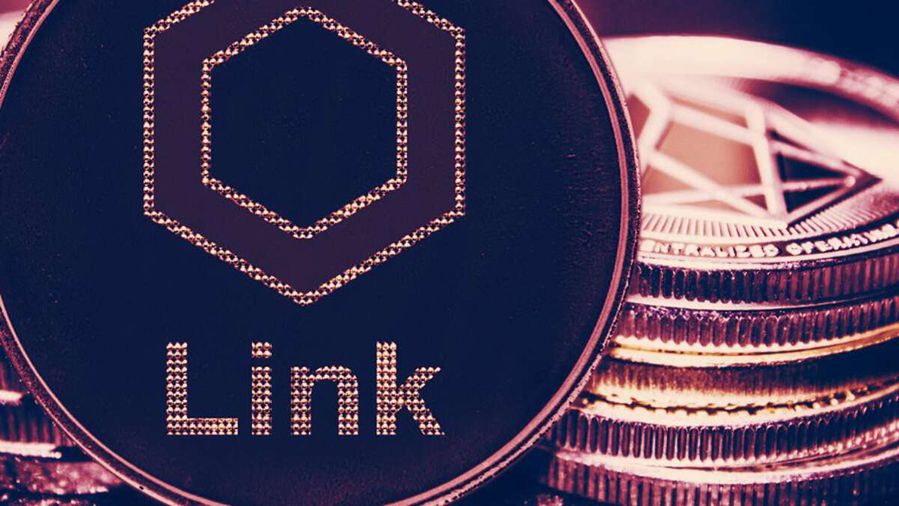
The twelfth largest capitalization cryptocurrency Chainlink shows a record growth in its entire history. Yesterday LINK rose 20% to $ 5.8, and today its price has exceeded $ 6.
According to CoinMarketCap, yesterday LINK price surpassed the historical maximum of its value of $ 5, recorded in March. However, this rally did not end there – over the past 24 hours the LINK price has grown by another 14% and now stands at $ 6.28. In general, from the beginning of the month, LINK showed an increase of almost 40% from the price of $ 4.6 recorded on July 1.

LINK is a relatively new crypto asset launched in September 2017 through an ICO, within which Chainlink raised more than $ 30 million. LINK was sold for only $ 0.09 during the pre-sale and a few months later entered the market for $ 0.2. For three years, LINK has grown by more than 2,460% of its original price.
Although the reason for LINK’s growth is not fully understood, it may be due to the fast-growing DeFi market. Recall that in May Chainlink launched the Verifiable Random Function (VRF) service, whose subscribers will have access to provably random values needed by projects based on smart contracts.
In the spring, Kadena, a hybrid blockchain platform with smart contract support, added Chainlink pricing oracles to track real-time crypto asset prices. In June, it became known that the Chinese national blockchain platform Blockchain-Based Service Network (BSN) will receive support from Chainlink oracles for working with external data. Huobi also announced earlier this month that it will launch the Chainlink site.
Arca Launches Ethereum Blockchain Regulated Investment Fund
08/07/2020
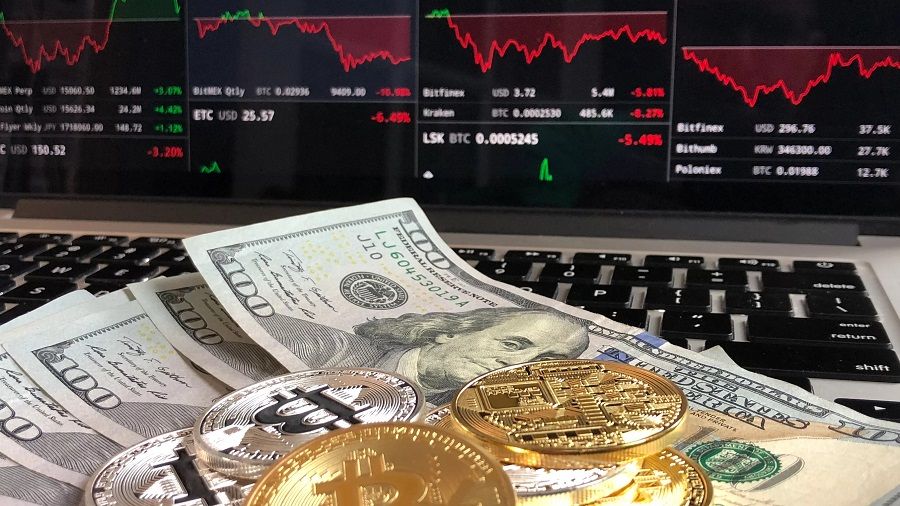
The American company Arca has registered a new fund with the US Securities and Exchange Commission (SEC), whose shares will be issued as ArCoin tokens on the Ethereum blockchain.
Arca, a digital asset investment company, has announced the launch of Arca U.S. Treasury Fund – a fund whose shares will be issued on the Ethereum blockchain as tokens of the ERC-1404 standard. At the same time, the investments themselves will be invested in short-term bonds of the US Treasury.
Essentially, Arca U.S. Treasury Fund is a regular fund for investments in securities, with an added blockchain level for distribution of shares. Investors will receive one ArCoin token for each share they own, and accrued interest will be paid to token holders every quarter.
ArCoin tokens can be used by financial institutions for settlements, trading and payments. According to Arca, they are “digital stocks” and not ordinary tokens or digital assets, as they represent a share in the fund.
Thus, Arca combined the capabilities of tokens and paper stocks, creating “digital stocks”. As the president of Arca Capital Management LLC, Gerald David, said, digital stocks allow you to more accurately keep records for the fund:
“ArCoin enables companies to manage their business operations, treasury operations and payments with greater efficiency, lower costs, faster settlements and direct tracking of all transactions.”
ERC-1404 tokens can be stored on your own wallets. At the same time, Arca considered the option where the ArCoin holder may lose private keys and tokens will be reissued.
Recall that for the first time plans to launch a fund whose shares will be issued on the Ethereum blockchain became known back in April 2020. However, then it was reported that the shares would be issued as ERC-20 tokens.
Binance completed the purchase of Swipe and listing the SXP token
08/07/2020

The Binance cryptocurrency exchange announced the purchase of the Swipe.io startup in order to use its infrastructure to issue its own payment cards.
Swipe.io provides users with access to a cryptocurrency wallet and Visa debit cards with automatic conversion of cryptocurrencies to regular money.
Binance CEO Changpeng Zhao said cooperation will be aimed at overcoming the “barrier” between fiat and digital currencies. To do this, you need to provide people with the opportunity to make purchases using cryptocurrencies through traditional financial systems.
Earlier, the head of Binance announced the launch of his own Binance Card debit card, which will allow cryptocurrencies to pay for goods and services in 200 countries. However, when implementing this initiative, Binance had some difficulties that Swipe will help to cope with.
“In order to fulfill our mission and make cryptocurrencies accessible to everyone, buyers should easily convert and spend their digital assets, and sellers should freely accept these converted funds. The whole process should go without unnecessary difficulties, and this will increase the level of interaction between the parties. It turns out that at the time of purchase, the user pays with cryptocurrency, and the seller accepts payment in fiat currency, so for them it will be regular payments,” said Changpen Zhao.
During the operation with such a card, the selected cryptocurrency is converted into fiat currency, which will pass through Visa payment channels. This will allow you to spend crypto assets in more than 50 million retail outlets around the world. Swipe serves 31 countries in the European Economic Area. Debit cards are issued by Contis Financial Services Ltd, which has the Principal Member status of Visa and is regulated by the UK Financial Supervisory Authority (FCA).
To date, the Swipe platform supports a number of crypto assets and allows transactions with euros, British pounds, US dollars, Korean won and Philippine pesos, and in the near future plans to cover Asia and North America.
“Through a partnership with Binance, Swipe will make every effort to make cryptocurrencies available to millions of users around the world. Anyone who wants to pay with digital assets,” added Swipe CEO Joselito Lizarondo.
Binance also announced that it has received an SXP stake in the acquisition of Swipe. On July 7, SXP was listed, and users can trade this asset in SXP / BTC, SXP / BNB and SXP / BUSD pairs. Binance added that most SXPs have been blocked for several years, as the exchange is focused on the long-term and sustainable development of SXP and the Swipe ecosystem.
Symbol has created a blockchain solution for tracking wine supply chains
07/07/2020

Symbol has developed a blockchain solution that will help winemakers track raw materials and products at every stage of production and the supply chain, as well as fight fraud.
The NEM project, which was renamed Symbol earlier this year, recently announced the launch of a new solution on the blockchain, which is designed to track raw materials and products in the production and supply chains of wine.
Symbol was developed as an enterprise-friendly blockchain that is designed to work in conditions requiring a large number of transactions per second, for example, applications for tracking product supply chains.
Symbol operates on the PoS + consensus mechanism and allows you to process various transactions involving multiple parties, as well as carry out trust-free asset swap transactions between multiple participants.

The solution will help winemakers and wine producers to keep track of what happens to their raw materials and products at every stage of production and distribution. Wine producers will be able to track general information about each bottle, box, or box of wine by the serial number associated with the grape, year, or vineyard. All data is recorded on the blockchain and helps to ensure that the wine leaving the place of production is genuine and has not been tampered with at any stage of the transportation process.
The hybrid blockchain solution aims to solve data privacy problems for all interested parties, for example, buyers, distributors and sellers. To counteract fraud during product transportation, winemakers can enter into “one-time” smart contracts. Settlement of payments with a transport partner occurs only if the products have passed the confirmation of authenticity and quality by all parties.
“This allows the wine producer or winemaker to participate in complex financial agreements and apply phased payments using the blockchain, which can provide real-time authentication and product quality verification results,” the developers say.
This is not the first time that blockchain has been used to track wine supply chains. Last summer, Singapore-based VeChain entered into a partnership agreement with Penfolds, an Australian winemaker, to launch a blockchain-tracking wine batch.
Burning Binance Coin tokens and launching Tron 4.0. July main events
07/07/2020
In the next month, several events will happen on the cryptocurrency market at once, which can affect both the value of individual coins and their total capitalization.

Launch TRON 4.0
At the end of May 2020, the imminent launch of TRON 4.0 was announced. This update should be a “turning point” for the project, said its founder Justin Sun. Confidential smart contracts will appear on the TRON network, the block confirmation time will be reduced from 53 to 3 seconds, cross-chain support will appear, and a universal framework for business solutions will also be presented.
What may affect: Tron Course

ICON Network Update
ICON developers presented a project update schedule. On July 14, an update will be released for Pagoda, Yeouido, July 20 for exchanges and July 27 for the main network. Developers will add the ability to duplicate the P-Rep private key, stacking and delegation function for SCORE. Multiple periods without stacking will also be added and the number of delegations will be increased from 10 to 100. The developers emphasized that additional updates are possible during the month, which they will report in the coming weeks.
What may affect: ICON Price

Zcash Network Update
On July 16, 2020, the fourth major update, Heatwood, will take place at block 903,000 in the Zcash network. On its blog, the developer Electric Coin Company announced two major changes to the ZIP 221 (FlyClient) and the ZIP 213 (Shielded Coinbase). The first is designed to provide greater compatibility and interaction with different blockchains, and also reduces the requirements for devices with limited resources. The second will affect the transactions for the block mined by the miners. Prior to upgrading, such transactions required significant RAM and CPU resources.
What may affect: Zcash Cost

Burning BNB Tokens
The second quarter of 2020 has ended; the time has come for the next, quarterly burning of Binance exchange tokens. In the last quarter, a record number of coins were burned: 3,373,988 BNBs with a total value of $ 52.5 million. Currently, slightly more than 20 of the 100 million BNBs planned for burning are withdrawn from circulation, which makes up 50% of the total issue.
What may affect: Binance Coin Course
Bank of Japan is exploring the possibility of issuing state cryptocurrency
06/07/2020

The Bank of Japan will create a proof of concept (PoC) for the digital yen to assess the feasibility of issuing state cryptocurrency from a technical point of view.
According to a recent report, the Bank of Japan “will test the possibility of issuing state cryptocurrency from a technical point of view, and will work with other central banks and relevant institutions to explore the possibility of issuing a digital yen.” However, the final schedule and the decision to issue the state cryptocurrency has not yet been adopted.
According to the Bank of Japan, there are two main technical barriers to issuing state cryptocurrency: universal access and fault tolerance. The first relates to ensuring the availability of cryptocurrency for a wide range of users. According to Nikkei, as of 2018, only 65% of Japanese owned smartphones.
By “fault tolerance” is meant the availability of the digital yen offline when a power outage occurs. The Bank of Japan emphasized the importance of the availability of cryptocurrency even in an emergency, such as during an earthquake.
The Central Bank of Japan is considering the use of blockchain to create a state cryptocurrency. A centralized system has the advantages of “high throughput and high transaction speed,” but the entire system can fail at the same time due to the existence of a single point of failure.
Cryptocurrency based on Distributed Registry Technology (DLT) can solve the problem of a single point of failure and demonstrate higher fault tolerance, but it requires more time for transactions, since the blockchain needs consensus between several validators. The Bank of Japan concluded:
“Both centralized and decentralized systems have their pros and cons. For mass transactions for retail use in developed countries, it is better to introduce a centralized type. If the transaction amount is limited, fault tolerance and future development opportunities are important, it makes sense to consider a decentralized type system. ”
Recall that back in 2018, the Deputy President of the Bank of Japan stated that state cryptocurrencies are an inefficient economic instrument. However, last fall, Bank of Japan Governor Haruhiko Kuroda said the bank has no plans to issue digital currencies, but is conducting research in case this becomes necessary in the future.
At the same time, in January, the Deputy Governor of the Bank of Japan Masayoshi Amamiya announced his readiness to issue a state cryptocurrency in the event of widespread public demand.
BTC miners’ earnings in dollars fell 23% in June
06/07/2020

Bitcoin miners’ revenue in dollar terms fell in June by 23% due to a reduction in the size of commissions and a decrease in block rewards to 6.25 BTC.
At the same time, the drop in income was partially offset by an increase in the exchange rate. According to CoinMetrics data analysis, Bitcoin miners earned $ 281 million in June compared with $ 366 million in May. According to reports, many miners immediately sell mined bitcoins. Recently, it was also reported that miners bring more BTC to the exchanges than they mine.
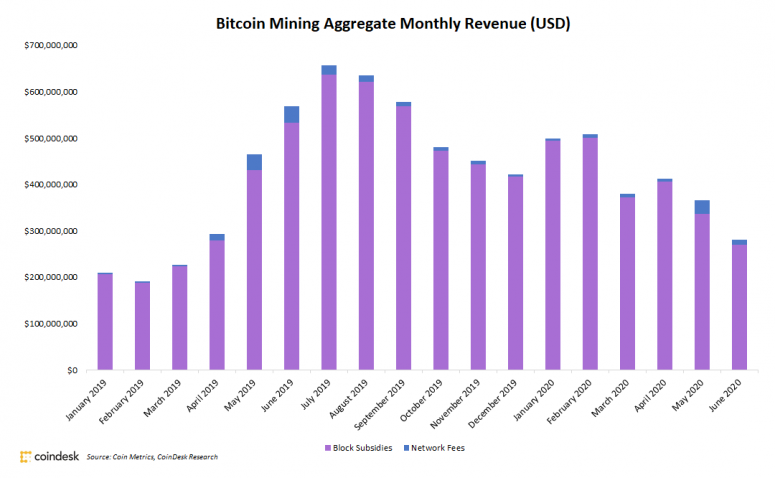
According to Austin Storms, founder of BearBox Mobile Mining Infrastructure Development Company, miners’ income from mining blocks and commissions in June better represents the current situation of industry participants compared to May. Even taking into account the decrease in the profit of miners by 11% in May, 11 days before the halving, miners received 12.5 BTC per block.
After halving the award, the size of the BTC (mempool) unconfirmed transaction queue reached a two-year high. As mempool was unloaded at the end of May and at the beginning of June, transaction fees also decreased, which affected the profit of miners.
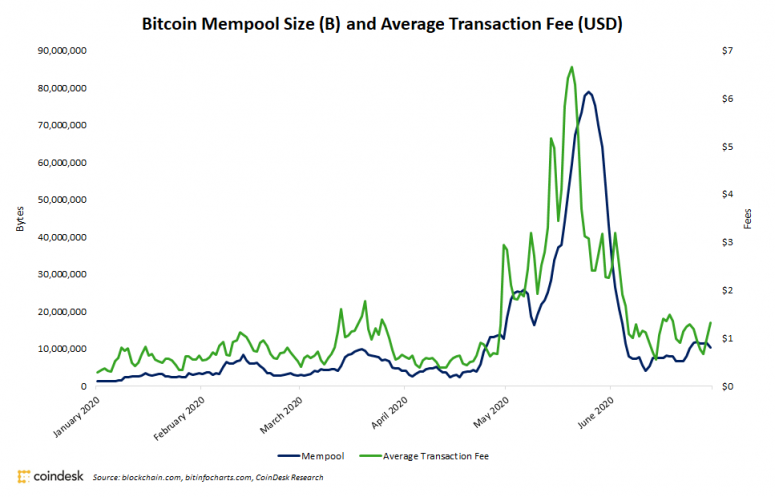
Transaction fees brought miners only $ 12 million in June, which is 4.3% of their total monthly income, compared with an annual maximum of 8.3% in May. Based on the current situation, the income of miners may increase due to the growth of commissions or the price of BTC.
A group of Crypto Research researchers recently released a report according to which the price of BTC could reach $ 397,000 in the next ten years, and altcoins will rise after Bitcoin. According to researchers, in the coming years, the market will begin to grow rapidly, and this “bull” rally can last at least five years.
Bolt Labs is developing a protocol for anonymous payments on the Tezos blockchain
03/07/2020

The cryptocurrency startup Bolt Labs, together with Nomadic Labs and Metastate, is developing the zkChannels protocol for anonymous micropayments on the Tezos blockchain.
According to the developers, zkChannels is a network-independent protocol with which you can make cheap and anonymous transactions between buyers and sellers “in the style of Lightning Network”. The solution is planned to be implemented in the Tezos blockchain next year.
To ensure a high level of confidentiality, data in zkChannel will be stored asymmetrically. For example, when making a payment, the buyer will store all the necessary information about him and see the current distribution of funds.
In this case, the seller will only know the total amount of the transaction, he will not be able to determine the identity of the buyer for the transaction. The seller and the buyer will have different information about the status of the payment channel, which ensures the anonymity of the buyer.
In the future, the developers plan to make zkChannels a link between the Tezos blockchain and the ZEC and BTC cryptocurrencies. In addition, the protocol will ensure the confidentiality of various decentralized applications and allow the creation of a hidden pool of tokens as part of a smart contract.
Co-founder of Bolt Labs, Ayo Akinyele, believes that the Tezos blockchain has all the necessary features to integrate with zkChannel. Thanks to the mechanism of efficient data management, functions can be added to Tezos to support zkChannels without data transfer conflicts.
The Tezos smart contract language ensures that code conforms exactly to its specifications through formal verification. This is especially important when dealing with payments, tokenized assets and loans, as there are guarantees that due to errors in the code, funds will not be lost or frozen.
Recall that last year, the French Finance Committee called for a ban on anonymous transactions with cryptocurrencies because of the high probability of tax evasion, fraud using crypto assets, money laundering or illegal energy consumption.
Kyber Network Token Price Updates Highs Before Protocol Update
03/07/2020

The price of the KNC token increased by 29% per day to $ 1.54 in anticipation of the Katalyst protocol update scheduled for next week. Now the price has adjusted to $ 1.45.
The decentralized financing boom (DeFi) is not slowing down. Today, the price of the Kyber Network token (KNC) was $ 1.54, showing a 29% increase per day. Apparently, the price increase is due to the Katalyst update in the Kyber Network protocol, scheduled for July 7th.
The Katalyst update promises to bring many technical improvements to the decentralized liquidity protocol, as well as introducing KyberDAO. This will allow KNC holders to participate in staking and vote on management proposals, while receiving payments in ETH, according to an article on the Kyber blog.
The development of Kyber Network, a decentralized liquidity protocol developed for the Ethereum blockchain, began in 2017. By blocking ERC-20 tokens in special smart contracts, Kyber allows users to quickly trade any token based on Ethereum without the participation of a centralized exchange. The protocol has already been implemented in many popular mobile wallet applications, including Trust and Enjin.
Over the past day, the value of the KNC token in dollar terms increased by 29% – from $ 1.19 to $ 1.54. This growth marked the two-year high of the KNC price – the last time it was at this level in June 2018. However, now the cost of the token has decreased slightly and amounts to $ 1.45 according to CoinMarketCap.
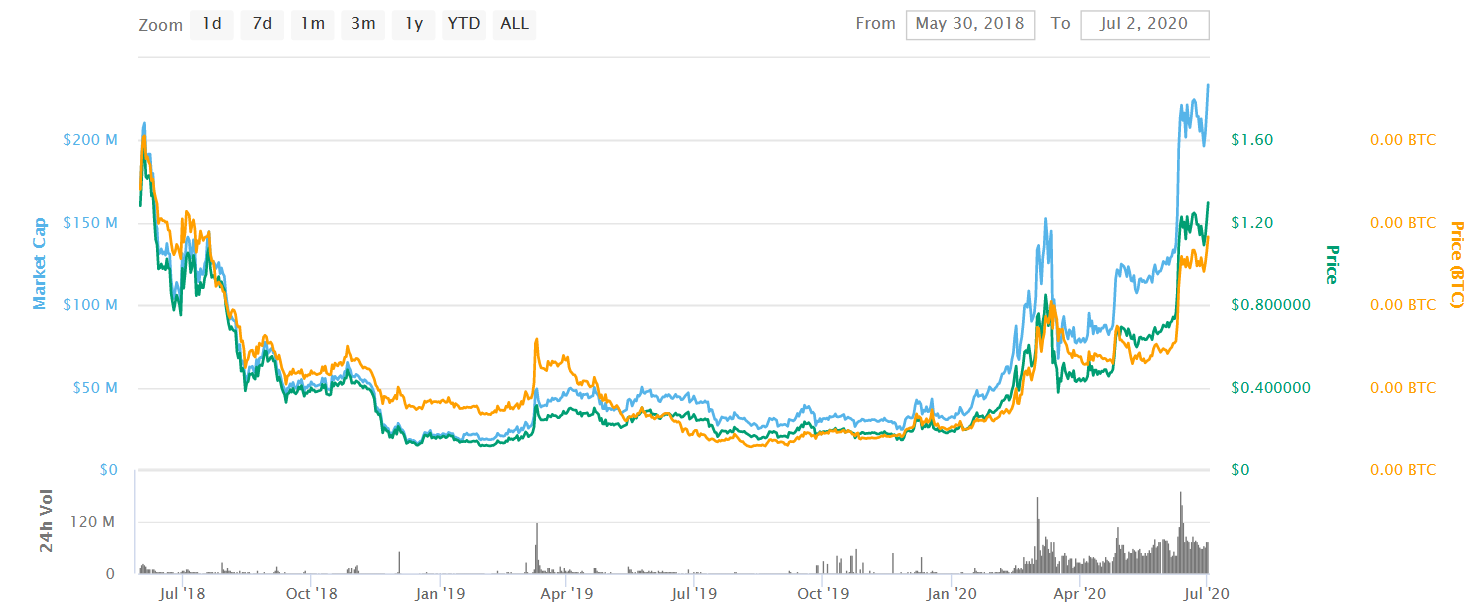
The cost of Kyber Network has been growing since the beginning of the year – in January, the price of one token was $ 0.18. The price of KNC more than doubled on the day of listing on Coinbase on February 27. In general, the Kyber Network token from the beginning of the year showed an increase of 755%, which makes it one of the most dynamic crypto assets of 2020.
After the Katalyst update is introduced on July 7, users can immediately participate in stakeout with KNC tokens and receive the first batch of payments in ETH in two weeks. The size of the minimum and maximum rates has not been established.
EU gives grants for $ 5.6 million to social projects on the blockchain
02/07/2020
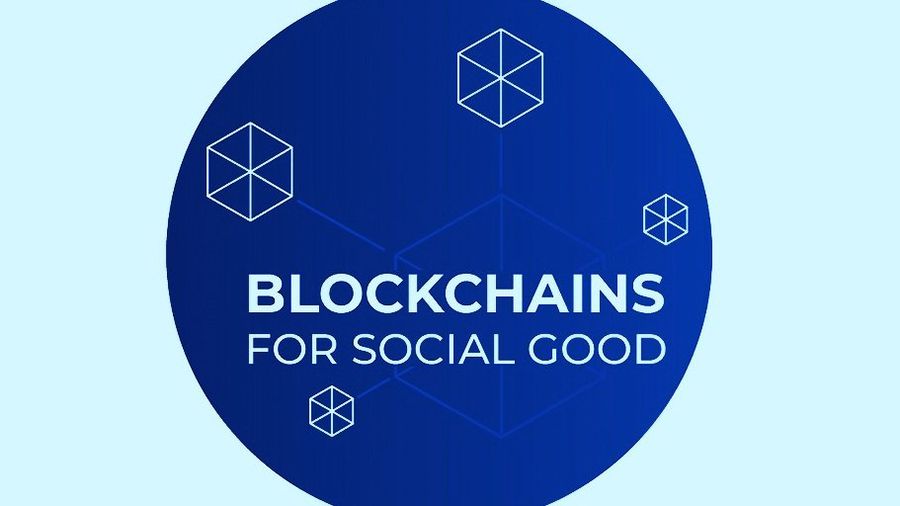 The European Innovation Council has issued grants for $ 5.6 million to six projects using blockchain to solve critical social problems.
The European Innovation Council has issued grants for $ 5.6 million to six projects using blockchain to solve critical social problems.
This week, the European Innovation Council (EIC) issued grants of $ 5.6 million to six blockchain projects under the blockchain for social welfare program.
“Six winners were selected during the contest, which determined the best scalable, deployable and effective solutions on the blockchain for social tasks,” the organizers explained.
Solutions include blockchain applications focused on fair trade and the circular economy, renewable energy sources and the availability of financial services. The first place and a grant of $ 1.1 million in the category of “High-quality information materials” was received by the Dutch startup WordProof, which is developing a verification system on the blockchain. Its purpose is to help fight misinformation and false news on the Internet.
“WordProof wants to use blockchain to restore trust on the Internet. We are creating a universal ecosystem with timestamps – a global standard that provides consumers with a method of checking the reliability of content, ”said WordProof founder Sebastiaan van der Lans.
Another $ 1.1 million grant was provided to PPP, a British startup, which is developing a system of so-called checkpoints to help enterprises “prove their social influence in the supply chains associated with their business and products.” The Finnish company GMeRitS received the same grant for conducting large-scale experiments with alternative economic structures. Startup wants to contribute to the availability of financial services.
The UnBlocked Cash OXBBU project, founded by Oxfam, an Irish company, and Sempo, a French startup, received $ 1.1 million to develop a decentralized model that explores “the potential for delivering international assistance to disaster victims” in a more efficient and transparent way.
Initially, there were five winners, each of whom would receive a grant of $ 1.1 million, but the jury decided to split the fifth place between the two startups. Thus, the blockchain platform for resolving consumer disputes in electronic commerce CKH2020 and the decentralized autonomous digital market for P2P energy trading PROSUME received $ 561,000 each.
Since the announcement of the program in May 2018, the EIC received 176 applications from 43 countries, including 19 outside the EU. According to a press release, the main goal of the contest was to study how blockchain can solve social problems.
“Despite the fact that the revolutionary potential of the blockchain has already been tested in the financial sector, its possible applications in social fields and for solving sustainable development problems have been much less studied,” said EIC.
Recall that earlier this year the European Commission announced a tender for the development of solutions for the defense industry. Companies can submit proposals based on, among other things, the blockchain.
Glassnode: the number of bitcoin`s “whales” is growing
02/07/2020

According to a new Glassnode report, the number of large Bitcoin holders has been growing for the first time since 2016, but the amount of BTC they hold is decreasing.
According to Glassnode, for the first time since 2016, the number of “whales” – large cryptocurrency holders owning at least 1,000 BTC, has begun to grow. However, the average deposit amount of these large investors is reduced.
“Despite an increase in the number of whales this year, the amount of BTC they hold is still significantly lower than the peak volume,” wrote report author Liesl Eichholz.
The richest cryptocurrency “whales” were during the “bull” cryptocurrency market at the end of 2017, when the BTC price almost reached $ 20,000. The state of today’s large bitcoin holders is not as great as before: the average number of BTC per “whale” decreased during 2020 of the year.
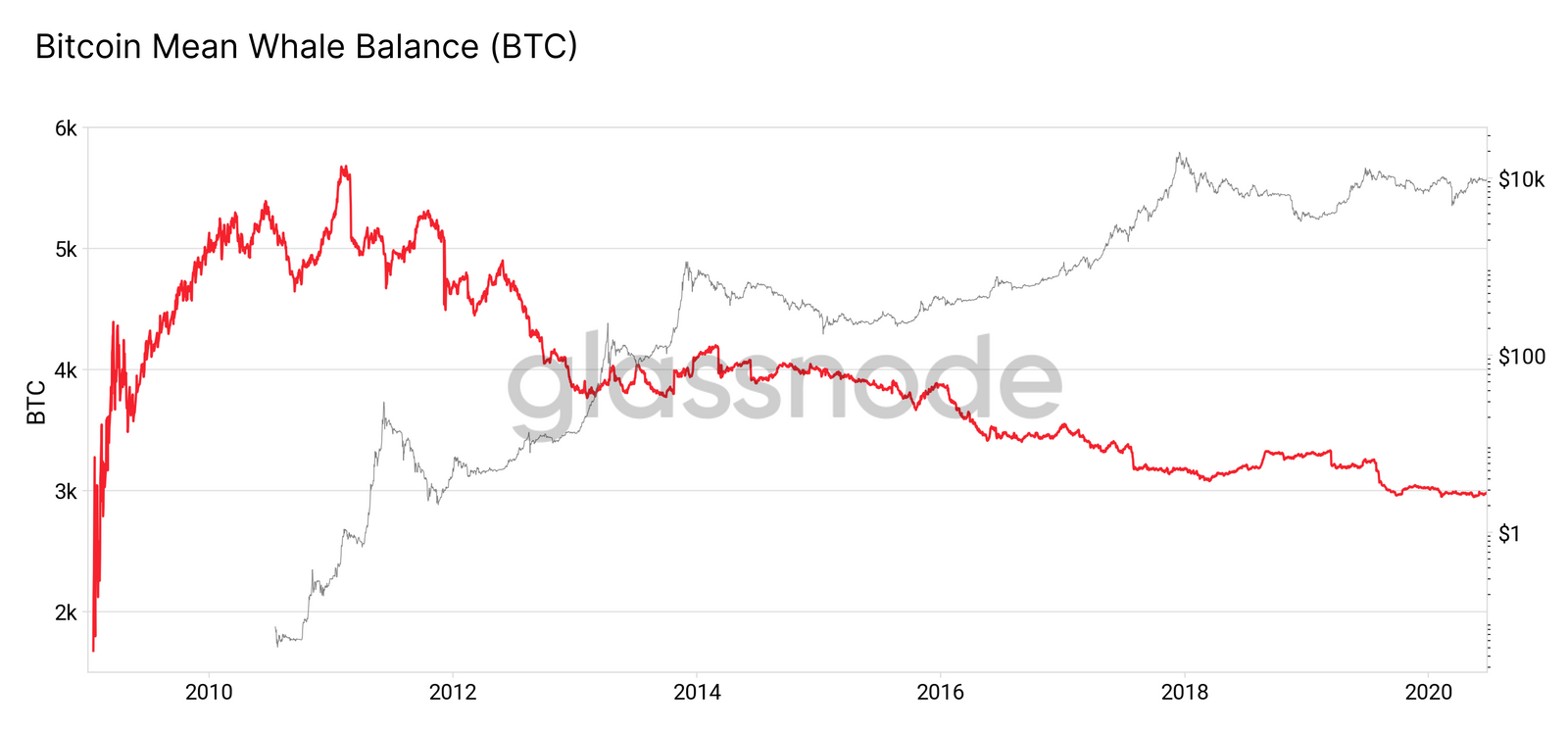
“While the condition of the“ whales ”as a group begins to grow again, each of them on average has become a bit poorer,” writes Aichholz. “The average balance of BTC held by the whales has been declining since 2011 and has not substantially increased in 2020 along with the number of whales.”
According to the analyst, the increase in the number of “whales” is partly due to the fact that they accumulate more BTC than before, and new “whales” appear that have withdrawn cryptocurrency from exchanges. The large withdrawal of BTC by large investors from exchanges is associated with Black Thursday in mid-March, when bitcoin lost more than 20% of its value in less than a day.
Perhaps then the “whales” wanted to “buy at the bottom, and then withdraw their BTC to hold on to the HODL strategy in anticipation of the next bullish rally,” the report said. Eichholz notes that the growth of BTC held by large holders cannot be called “very significant”, but it can become so if the trend continues.
The number of BTC held by the “whales” has been declining over the past five years, falling by more than 22% from $ 6.7 million to $ 5.2 million, but this year more large investors entered the market, and therefore the indicator began to grow. And the dominant position of “whales” in the market also shows the largest steady growth since 2011.
The last time a significant increase in the number of “whales” was recorded in April before the Bitcoin halving. At that time, Glassnode analysts reported that in anticipation of halving the award to the miners, large players began to build up BTC reserves on their wallets.
BHP Group and Baosteel conduct a deal to sell iron ore through blockchain
01/07/2020

The BHP Group, one of the largest mining companies in the world, sold $ 14 million worth of iron ore using a blockchain platform.
A mineral sale transaction was concluded between BHP and China Baowu Steel Group, a subsidiary of China Baoshan Iron & Steel (Baosteel). The $ 14 million transaction was conducted through a blockchain-based platform developed by Canadian technology company MineHub Technologies. BHP’s Director of Trade and Marketing, Michiel Hovers, explained that the company used blockchain to digitally process contract terms, exchange documents, and view cargo data in real time.
BHP plans to implement a blockchain to efficiently and expeditiously process documentation when making further trade transactions in the commodity markets. According to Hovers, any company sending bulk cargo in large volumes, sooner or later will switch to using the latest technologies, as they significantly reduce the time and cost of office work.
Baosteel is not the first to use distributed registry technology. In May, the company already completed an international RMB transaction with the Australian mining company Rio Tinto through the Contour trade finance platform. Last February, the BHP Group successfully tested the technology with the Japanese transport company NYK.
Blockchain is effectively used by trading companies to manage invoices and other transport documents. So, in April, AirAsia Teleport launched the Freightchain platform to simplify the process of confirming and tracking air cargo. In the same month, Shanghai International Port (SIPG), Cosco, Tesla and CargoSmart began testing a blockchain platform to track ship cargo.
White Tiger cryptocurrency tested in Fukushima Japanese Prefecture
01/07/2020
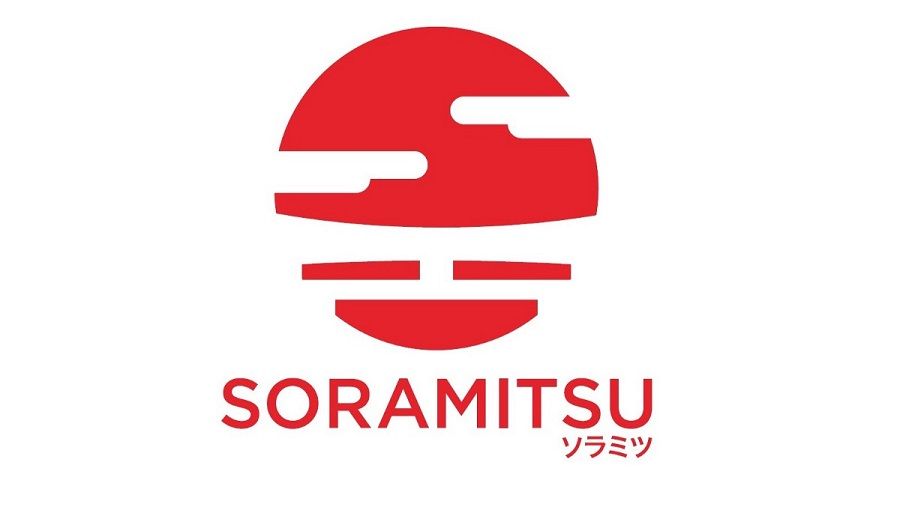
Blockchain-based Soramitsu, a Japanese company, will launch a pilot project to test White Tiger digital currency in Fukushima Prefecture.
Soramitsu has developed the White Tiger digital currency based on the Hyperledger Iroha blockchain. The local Nikkei publication reports that as part of the White Tiger cryptocurrency testing, it will be possible to pay at Aizu University’s retail outlets.
The pilot project starts tomorrow, July 1. Customers will be able to pay in digital currency at cafes and shops at Aizu University. However, later it is planned to extend the possibility of paying with cryptocurrency to and outside the campus.
The development of White Tiger has become part of the Aizuwakamatsu government and private company campaign to create a “smart city”. Acceptance of cryptocurrency to pay for goods and services will be carried out using a mobile application or special cards.
Note that Soramitsu is also actively involved in the creation of the state cryptocurrency of Cambodia. Back in 2017, the Japanese company entered into a partnership with the Central Bank of Cambodia to develop a payment infrastructure on the blockchain.
Bitcoin outperformed 5 leading stock indices
01/07/2020
 Over the past five years, the first cryptocurrency has brought investors 70 times more profit than the S&P 500, NASDAQ and other exchange tools
Over the past five years, the first cryptocurrency has brought investors 70 times more profit than the S&P 500, NASDAQ and other exchange tools
Over the past five years, Bitcoin has outperformed the world’s leading indexes, said the British investment company Buy Shares on its official website. Over this period, investments in cryptocurrency could bring more than 3400% of the profit.
At the same time, the value of the NASDAQ index, which includes the securities of all companies trading on the NASDAQ exchange, increased by 96%. The S&P 500 index showed even lower profitability, the basket of which included 505 selected companies traded on US exchanges with the highest capitalization – 46%. A similar result for the industrial Dow Jones index – 42%.
The worst result from the above was shown by the leading index of the British stock exchange FTSE 100. From June 2015 to the present day, the quotes of the instrument fell by almost 7%. Thus, the return on investment in bitcoin over the past five years has exceeded the average for the given indices by about 70 times.
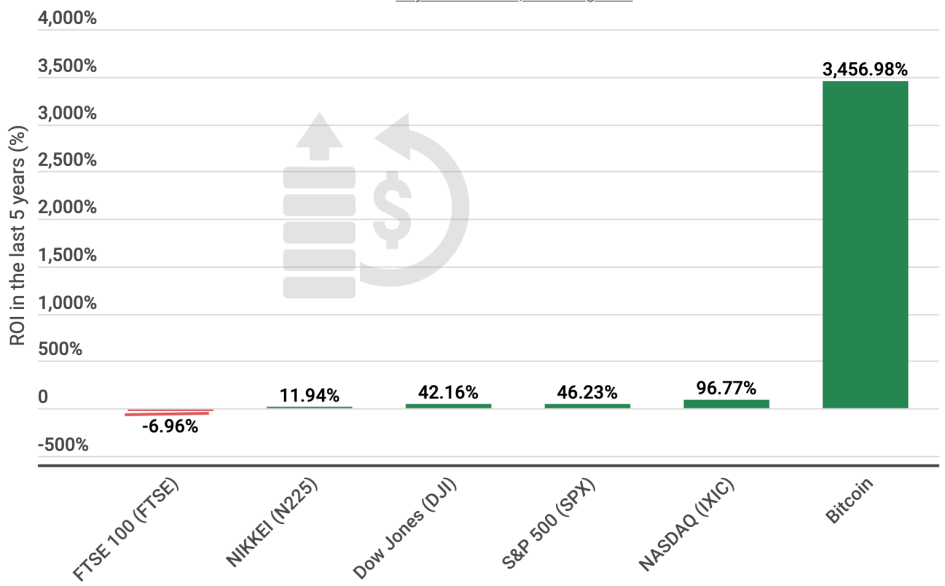
Two factors could have influenced such results. Firstly, this is the beginning of the regulation of the sphere of digital money. In 2015, the lack of legal certainty hindered the development of the industry. Secondly, the coronavirus pandemic negatively affected stock indices.
Over the years, the popularity of bitcoin has been growing, and its status as the first cryptocurrency in many ways helps a high return on investment. Investing in Bitcoin is profitable, but investing involves significant risks. The price of cryptocurrencies is very volatile, because of this, investors can lose more than they invested.
Ethereum Matic Side Chain Developers Launch Staking
30/06/2020
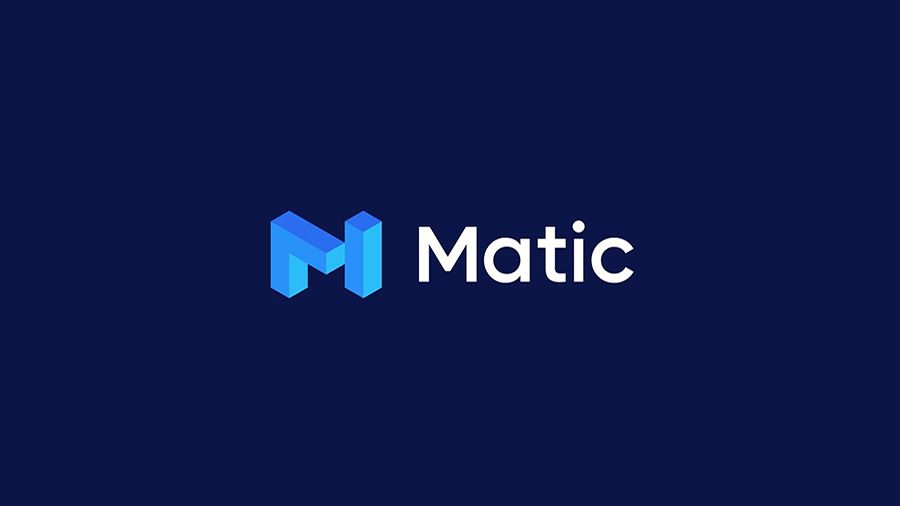
The developers of the Matic sidechain, a “workaround” solution for scaling Ethereum, have announced the launch of the first iteration of a network staking solution.
Initially, only the non-profit organization Matic Foundation, which is developing the Matic sidechain, will be able to participate in the phasing-out staking. The organization will stake out on behalf of users.
The Matic sidechain is based on Plasma technology and the Proof of Stake (PoS) algorithm. The developers claim that the network can process from 4,000 to 10,000 transactions per second – along with EOS and TRON, which position themselves as scalable alternatives to Ethereum.
Matic wants to attract as many stakeholders as possible to the network and promises first participants up to 120% of annual revenue. Users who delegate Matic Foundation tokens in the early stages will also be able to independently verify the network.
At the next stage, Matic plans to deploy staking for external validators. The developers claim that they have already received the support of several “largest” organizations, including the Indian consulting company Infosys.
In total, Matic has already placed about 1.2 billion tokens for staking (12% of the total supply) to support the staking program over the next five years. However, the fund hopes that the share of obligations of other token holders will increase to 70-80% during the year.
Matic launched its network earlier this month, and the staking program entered the test network on June 15th. About a month ago, Infosys announced that it would join Matic as a validator. Previously, the company had already shown interest in the industry – as far back as 2018, Infosys created a blockchain-based network for trade finance.
Bharat Gupta, one of the leaders of the company’s consulting division, said that checking the PoS network would give the company first-hand knowledge to develop and launch its own “privacy-oriented solution on the blockchain”.
Matic co-founder and COO Sandeep Nailwal stated that in order to become a validator, it is enough to block the nominal number of tokens. However, Matic and Infosys refused to name the nominal rate.
Rockside has launched a service to eliminate “frozen” transactions in the Ethereum network
30/06/2020

Rockside has launched a transaction relay service, the purpose of which is to eliminate “frozen” transactions in the Ethereum network. The company assumes that the main users of the service are DeFi projects.
Founded in 2018, the Paris-based blockchain company Rockside has released a free version of the software that can eliminate freezes and pending confirmations of transactions on the Ethereum network.
You paid an unpaid transfer fee. In decentralized financing protocols (DeFi), such operations can be caused by the protocol and the slowdown of the entire contract.
Algorithm “Transaction Relay Service” In case of a simultaneous large number of transactions in the network, Rockside will provide financing for contracts for a sufficient amount of gas.
In addition, Rockside offers gas-free transactions through its API. They use gas provided by the developer of the DeFi protocol, which covers user fees for gas as part of a simple interaction with the blockchain.
Developers should look for ways to deal with transactions and the fact that some transactions freeze, waiting for the approval of miners. Recently it became known that the community will finance developers who are working on EIP-1559.
“Since the end of 2019, the number of companies developing applications on the blockchain has been constantly growing,” said Rockside CEO Corentin Denoeud. “Some of them have millions of users.” In such a situation, you cannot risk even one transaction that is not included in the blockchain. ”
Rockside offers free maintenance for projects that carry out less than 100 transactions per day. In addition, Rockside offers to cover all gas costs for the first 100 transactions of new users.
What brings income to crypto investors. Which altcoins did Bitcoin lose
29/06/2020
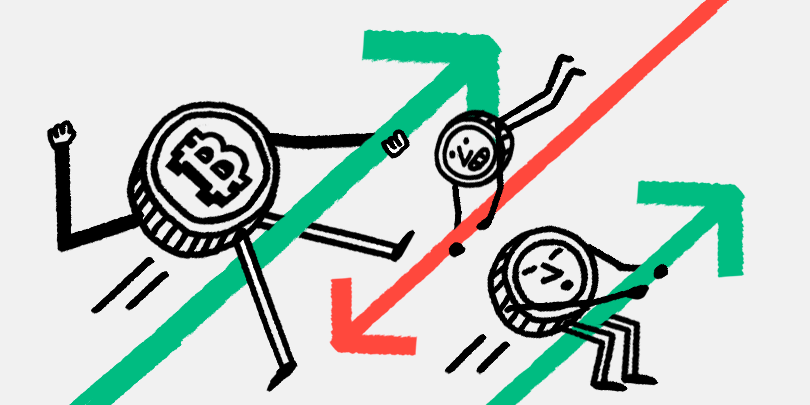 More than half of the BTC holders will make a profit if they sell the coin at the current price. But this is not a good result. Which cryptocurrencies turned out to be better for investments, and what brought only losses to users
More than half of the BTC holders will make a profit if they sell the coin at the current price. But this is not a good result. Which cryptocurrencies turned out to be better for investments, and what brought only losses to users
Bitcoin
At the beginning of the year, BTC cost a little more than $ 7,200. Since that moment, the cryptocurrency rate has grown by 25%, to the current mark of $ 9,000. During this period, the price rose twice to $ 10,400 and fell to $ 3,800.
According to the data of the analytical service Intotheblock, at the moment 11% of the current issue of bitcoin is in the hands of large investors. These include users who hold at least 0.1% of the BTC in circulation. This is about 18.4 thousand coins.
At the moment, 69% of users storing Bitcoin in a cold wallet are in positive territory. This means that they will make a profit if they sell the coin stocks at the current price. At the same level, 4% of the holders bought the asset, 27% suffered losses.
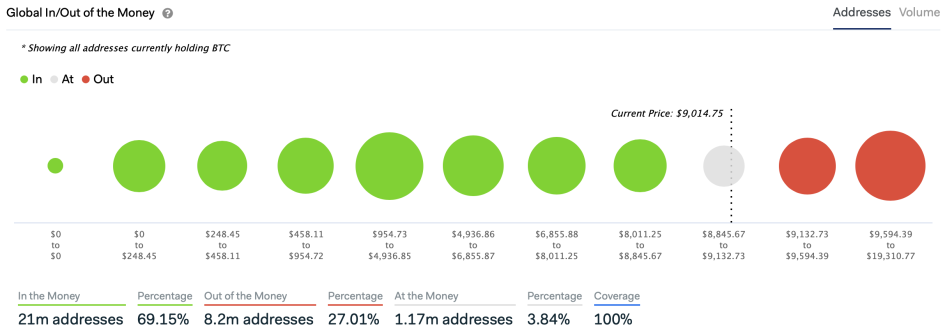
Ethereum
In 2020, Ethereum started trading at $ 130. In February, his rate set a local maximum just above $ 280. Then the price of the coin began to decline, fell to $ 86, and now it has fixed at the level of $ 220.
At the moment, 46% of altcoin holders will make a profit if they sell it at the current cost. 50% of investors in this case will record a loss. The remaining 4% of users bought Ethereum at current values.
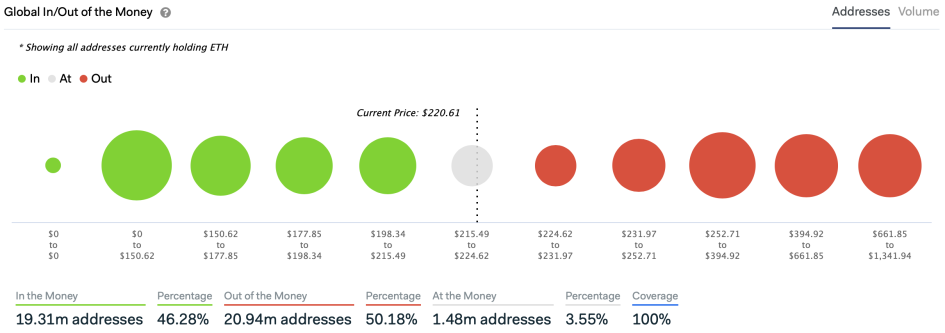
The correlation index showing the dependence of the coin on bitcoin is 73%. This means that in 73% of cases, the Ethereum rate repeated the price movements of the first cryptocurrency. Approximately 40% of the current altcoin issue is now stored in the wallets of large holders. These include investors who have acquired at least 0.1% of the ETH in circulation.
Outsiders
Litecoin on January 1 was worth $ 41. To the current moment, the rate of the coin has not changed, now it is at the same level. Since the beginning of the year, the price of altcoin has grown to $ 80 and dropped to $ 24.
Litecoin holders have one of the worst positions among the leading cryptocurrencies by capitalization. Only 20% of investors bought a coin cheaper than the current level. 3% of users are in the “neutral zone”, and 77% will lose if they sell the asset’s inventory at the current price. The concentration of LTC in the hands of the “whales” is 48%. The correlation with bitcoin is 81%.
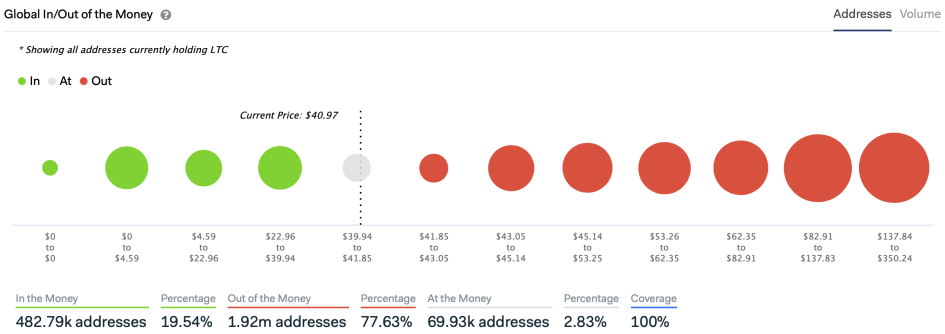
Even worse is the situation with investors of the OmiseGO token (OMG), it occupies the 40th position in the cryptocurrency rating by capitalization. Only 3% of altcoin holders are now in positive territory. All remaining users will receive a loss if they sell the coin at the current price of $ 1.38. 66% of OMG is in the hands of large investors, the correlation index with BTC is 82%.
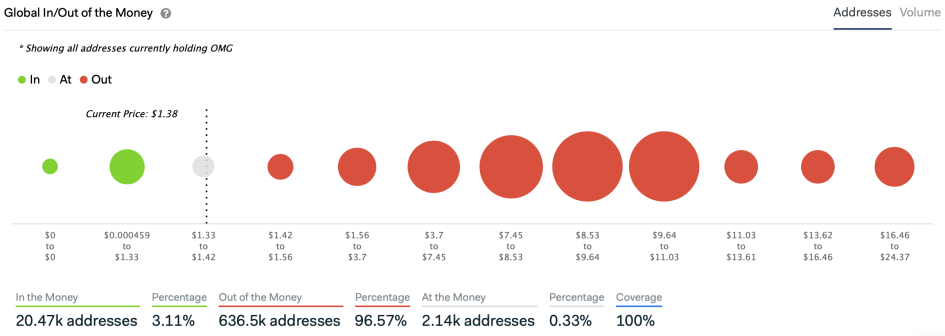
The leaders
One of the best coins for investing turned out to be Chainlink (Link), which occupies 13th place in the ranking of cryptocurrencies by capitalization. The asset began this year with a price of $ 1.8. In February, a historic high of $ 4.96 was set. In March, the rate fell to $ 1.7, but on June 24 it again approached record levels.
With a current value of $ 4.4, 88% of Link token investors can take profits. 7% of users bought a coin near current values. The number of holders who will receive a loss if they now sell cryptocurrency stocks is about 5%.
At the same time, the majority of Link emissions are in the hands of large investors, the concentration indicator has reached 80%. The correlation index with Bitcoin, in contrast, is low – 24%.
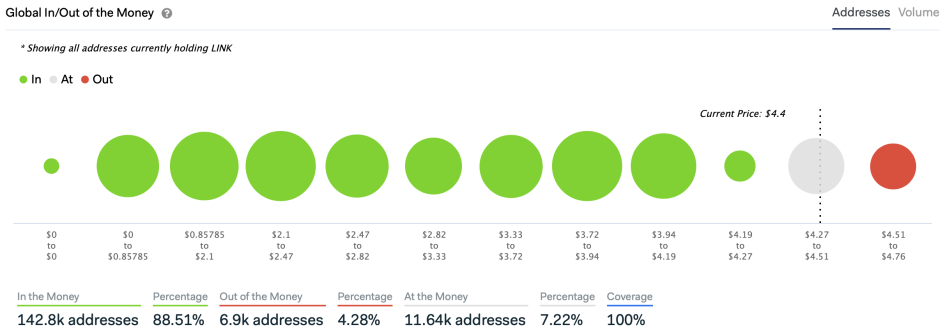
The Crypto.com Coin token, which takes 10th place at the top of cryptocurrencies, also showed a good result. Since the beginning of the year, the coin has risen in price by 250%. During this period, its price fell to $ 0.030, grew to $ 0.125, now it is $ 0.115.
At this cost, 97% of Crypto.com Coin holders are in the black. The remaining 3% bought a coin more expensive than current values. However, it has a high concentration, large investors have 98% of the token reserves. The correlation index with bitcoin is -37%. This means that in most cases, the quotes of these cryptocurrencies moved in the opposite direction.
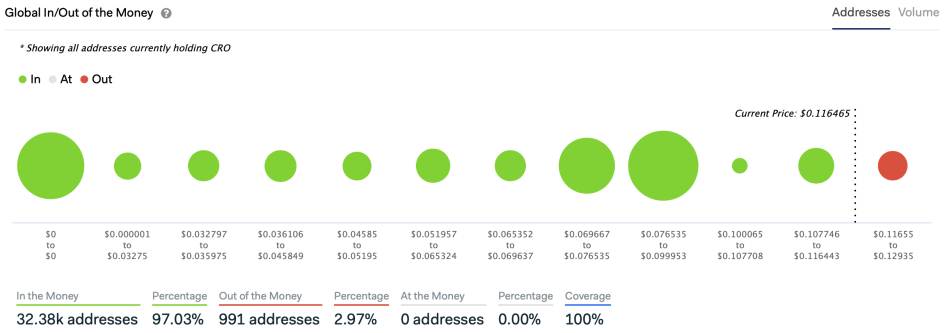
Whitestream: ISIS began accepting donations in XMR instead of BTC
29/06/2020
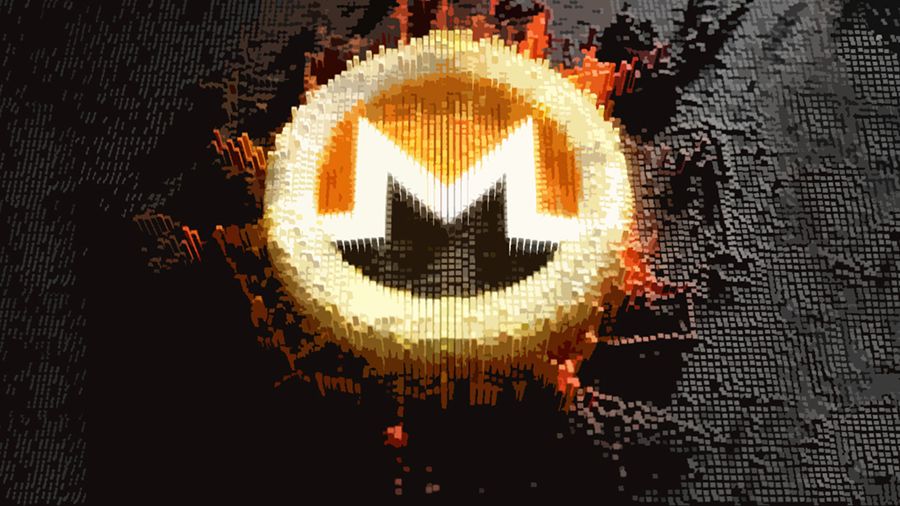
According to new data from Whitestream, an ISIS terrorist organization no longer accepts Bitcoin donations and prefers Monero.
The notorious terrorist group has stopped accepting donations to BTC and now prefers the privacy-oriented cryptocurrency XMR. According to the Israeli analytical company Whitestream, the syndicate has updated one of its sites, where it indicated that it now accepts cryptocurrency donations exclusively at Monero.
ISIS and other terrorist groups have been accepting donations to the BTC since at least 2014. But such a fundraising option has recently become an object of closer attention from governments and law enforcement officials, as bitcoin has grown in popularity over time, and blockchain analytics software has made tracking funds easier. According to the NGO Anti-Terrorism Project, ISIS stores more than $ 300 million in cryptocurrencies.
However, according to a recent report by Chainalysis, this figure is likely to be much less. The company said ISIS probably stores less than $ 100,000 in BTC, and the situation is similar for other terrorist organizations. In part, this may be due to the fact that ISIS will be difficult to move or “cash-out” a large amount of BTC once, without attracting attention.
In this case, XMR transactions can also be analyzed with special software. If Monero is not used properly, as is the case with any “privacy” technology, such as VPN, Tor or CoinJoins, it will not work as intended and will keep users confidential.
Despite the fact that terrorists do not use cryptocurrencies very often, many governments continue to express concern about the growing popularity of crypto assets among criminals. So, last fall, the Australian Interior Minister called cryptocurrencies a means of financing terrorism.
ConsenSys and AMD raise $ 20.5 million to develop blockchain cloud infrastructure
26/06/2020
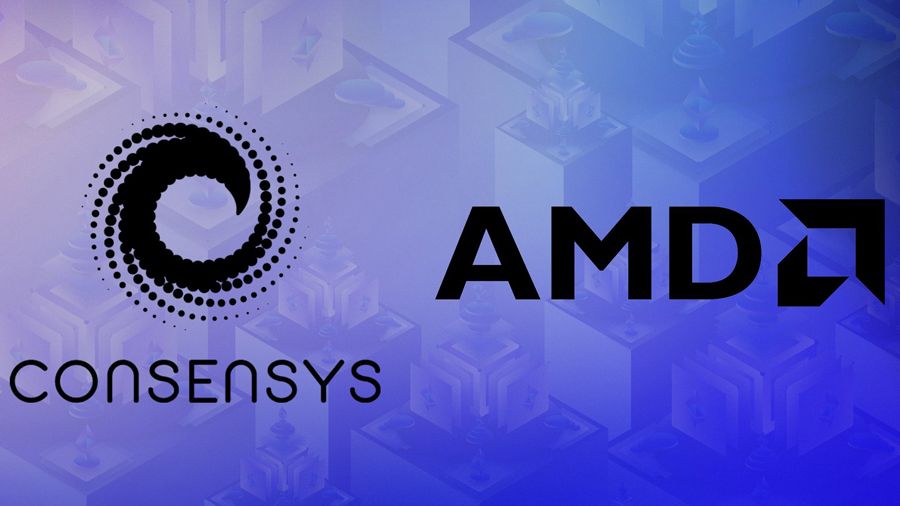
Startup ConsenSys and chipmaker AMD raised $ 20.5 million for the development of blockchain-based W3BCLOUD cloud infrastructure and the creation of decentralized data centers.
Several family trust companies from the United Arab Emirates participated in the funding round. The developers of the project said that the investment will be spent on the creation of the first W3BCLOUD infrastructure data center, which will become an analog of Amazon Web Services cloud technologies in the blockchain world.
Wael Aburida, co-founder and head of the W3BCLOUD investment department, said the main goal is for various organizations and government agencies to use the blockchain-based cloud computing system, which is characterized by high speed and increased security.
Data centers will use AMD graphics chips for computing. They will provide additional capabilities for data validation on the blockchain and for programs requiring a large amount of computing, enterprise applications and decentralized financing (DeFi). ConsenSys founder Joseph Lubin noted that AMD’s use of high-performance computing technology will drive the adoption of decentralized systems around the world.
The W3BCLOUD infrastructure can scale beyond the Ethereum on which ConsenSys operates. The system will also involve machine learning, deep learning technology and artificial intelligence (AI). Jörg Roskowetz, head of AMD’s blockchain department, said that W3BCLOUD will go international this year.
For the first time, the W3BCLOUD project became known in January last year. It was reported that the technology can be used not only to create corporate data centers but also to track records about the health of citizens, as well as to work with licenses and supply chains.
Launch of Altona, the new Ethereum 2.0 testnet, scheduled for June 29
26/06/2020
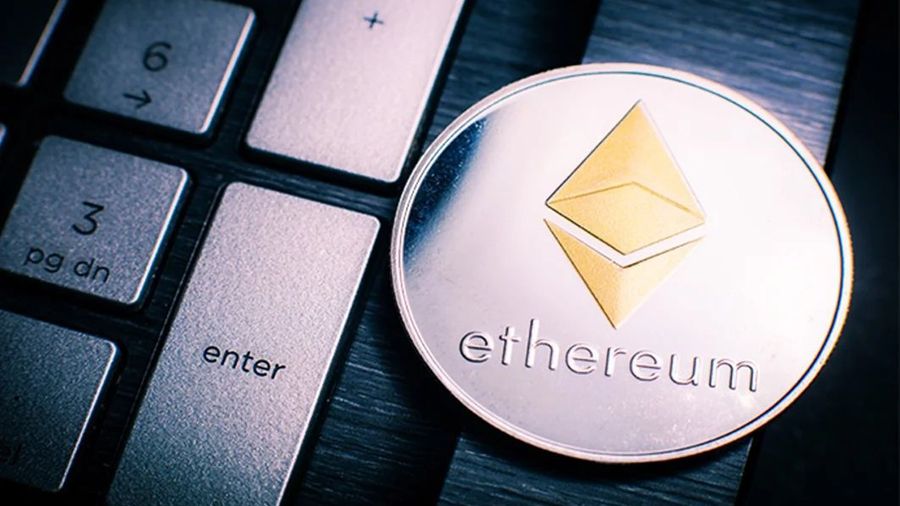
The developers of Ethereum 2.0 held an online conference, and Altona – the new iterative test network of Ethereum 2.0.
Ethereum 2.0 Test Coordinator Africa Schriedon provides a test network that is ready to run Altona has reached the minimum number of deposits. Shoyedon wrote that “technically the genesis has already taken place.” Nevertheless, the developers came to the conclusion that all specialists will be able to quickly solve any possible problems.
Altona will be the first test network to use the updated 0.12 specification for Ethereum 2.0, and which will be open to users. Developers call Altona “devnet” (“network for developers”). In previous tests, synchronization problems were often found.
Team Etrium 1.0, Gourley and Rinkebi. There is no exact information about the launch of the zero phase in the main network of Ethereum. However, the developers adhere to the plan, according to which the launch of a test network with specification 0.12 is scheduled for June. Altona will be an important step, bringing the launch of the long-awaited update. Earlier, Shoedon said that the launch of phase 0 could take place in 2021.
The first Ethereum 2.0 multi-client test network, Schlesi, was introduced this year to demonstrate customer willingness to support the Beacon Chain core shard. In addition, Ethereum 2.0 deployment coordinator Danny Ryan (Danny Ryan) said that a working multi-client model is one of the main reasons that delayed the launch of updates.
The Central Bank of Sweden investigated four models of the introduction of state cryptocurrency
25/06/2020
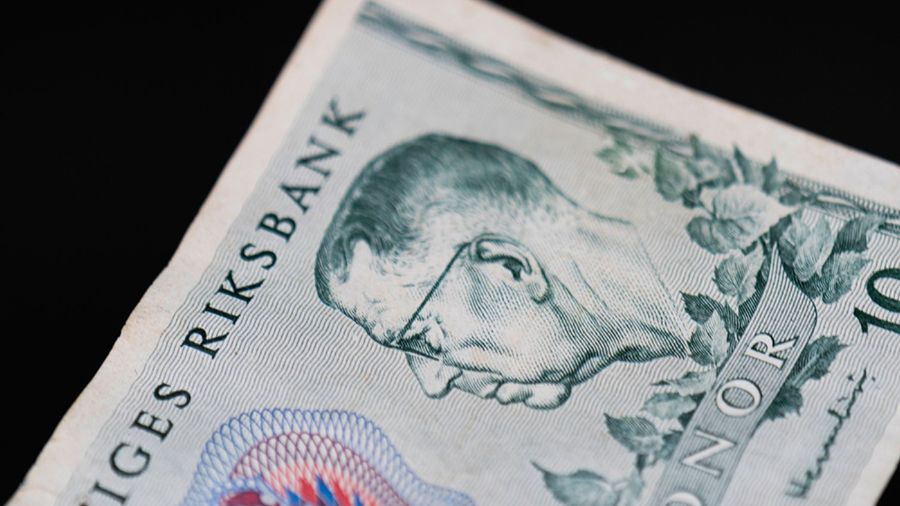
The Central Bank of Sweden has studied the potential of four different models of state cryptocurrency for the local market and published the results of the study.
The Central Bank of Sweden has prepared an economic survey describing four models for the digital version of the Swedish krona (e-krona). The four securities models under consideration include the “centralized e-krona model without intermediaries”, “the centralized e-krona model with intermediaries”, “decentralized e-krona solutions with intermediaries” and “synthetic e-krona”.
“We found that all models have their advantages and disadvantages, but some better satisfy the current needs of the Swedish payment market than others,” the review says.
A centralized model of electronic crown without intermediaries will allow the bank to take responsibility for the entire cryptocurrency distribution chain. This scheme will open up a completely new role for the bank, similar to that played by large retail banks. The Central Bank of Sweden claims that under this model the bank will have significant personnel costs and customer support functions. At the same time, the Central Bank will become a competitor to private payment services at the retail level, which indirectly creates a market monopoly.
The centralized model with intermediaries is very similar to Sweden’s current financial infrastructure in the sense that it is based on a partnership between the central bank and private service providers. In it, the Central Bank of Sweden retains its role at the wholesale level of the payment market. However, in this example, the bank does not play an operational role in the distribution chain, as in the previous model.
Just as the centralized model described above works, in a decentralized environment, all intermediaries using the electronic crown will have direct contractual relations with the consumer.
“This model is a decentralized database of all electronic crowns in circulation, despite the fact that the Central Bank will verify all transactions before they are settled,” the document says.
The review says that the Central Bank of Sweden will have to develop a contingency plan if one or more intermediaries cease to fulfill their functions. In this case, the bank should be able to provide a large number of customers with payments via e-krona.
The last model considered in the Central Bank economic survey was a synthetic electron crown. The document explains that in addition to providing more institutions with access to real-time gross settlement systems (RTGS) “the model is mainly based on new legislation that will require banks to create separate accounts.”
This model is very similar to the existing one, where the role of the Central Bank is to act as an intermediary in the payment system, and the private market is a secondary layer serving customers. For the private sector, “existing payment solutions can continue to work as they do today, without the need for additional equipment or investments.”
“What makes the synthetic e-krona attractive is its limited scale compared to the other models we described. This model will not entail major investments in infrastructure, and the Central Bank of Sweden may not take full responsibility for inspections of KYC, ALM, etc., ”the document says.
The Central Bank of Sweden came to the conclusion that both a centralized and decentralized model with the participation of intermediaries, as well as a centralized model of the electronic crown without intermediaries, will entail significant changes and investments. The review notes that the synthetic digital version of the Swedish krona may be viable, but it can not be classified as a state cryptocurrency.
“Such a minimalist approach may not achieve the goals of increasing competition and sustainability to the necessary extent, since it will be very similar to today’s system,” the review says. “In addition, this system will not directly depend only on the Central Bank of Sweden and it is unclear whether such an electronic crown can be considered a state cryptocurrency.”
Recall that the Central Bank of Sweden began testing the first European cryptocurrency in Europe – the electronic crown in February this year. The goal of this initiative is to show that citizens can benefit from the use of electronic crown.
Microsoft: blockchain can be used to track carbon emissions
25/06/2020
 Microsoft, together with universities in Germany and Denmark, has released a document outlining the potential benefits of the blockchain to create an international carbon footprint market.
Microsoft, together with universities in Germany and Denmark, has released a document outlining the potential benefits of the blockchain to create an international carbon footprint market.
The document addresses the suitability of blockchain and distributed ledger technology for the carbon market quotas mechanism in accordance with Article 6.2 of the Paris Agreement. The article provides for the creation of an accounting structure that should be an incentive to reduce carbon emissions. Existing infrastructure solutions for such a quota market have limitations because they are based on manual processes within the framework of a “centralized and fragmented database structure”.
“When considering only traditional database architectures, there is a risk of developing a“ new ”market mechanism that is already outdated at the time of creation,” the document says.
The co-authors of the article, including Microsoft data, artificial intelligence and blockchain specialist Laura Franke, as well as specialists from technical universities in Berlin and Denmark, agreed that blockchain could provide transparency and immutability of information for such a mechanism.
“We found that for the upstream and decentralized management system provided for in the Paris Agreement, a blockchain-based application is a promising solution and can bring benefits in the form of increased transparency and automation of the mechanism,” the document says.
Nevertheless, systems based on blockchain and distributed registry are described as “nascent” technologies that are not able to solve all the problems of the carbon market.
“This new technology is not a panacea for all problems, and the compromise of using the blockchain should be evaluated on a case-by-case basis,” the document says.
The authors of the article suggest using the scheme below, which will determine if the blockchain is suitable for solving a specific problem.
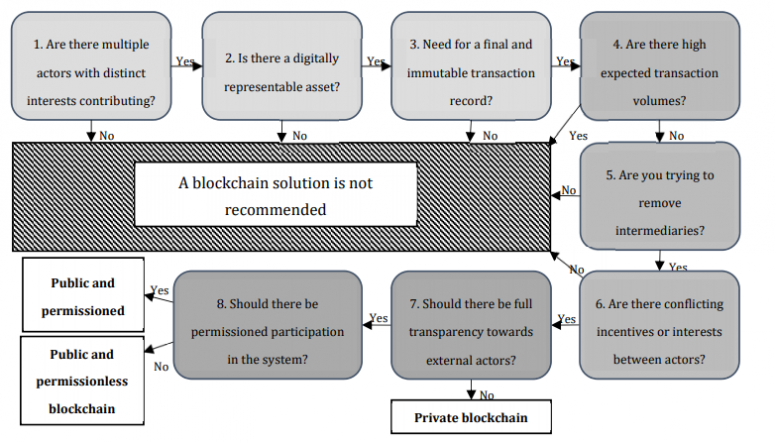
However, the document notes that the use of the blockchain-based platform “provides clear advantages in terms of interacting with other developing technologies, automating the process using smart contracts, increasing transparency, traceability and audit capabilities, as well as increasing security and trust between the parties.”
Blockchain is not the first to be used to track carbon emissions. In March, it became known that Yale University uses the Hyperledger blockchain to track carbon emissions, and in January Mercedes Benz and its startup Circulor launched a pilot project on the blockchain to track cobalt and carbon emissions.
In addition, last December, the International Chamber of Commerce (ICC) announced that, in partnership with blockchain companies Perlin and AirCarbon, it will work to reduce carbon emissions in commercial aviation.
ING Bank has developed a cryptocurrency transaction tracking protocol
24/06/2020

The Dutch bank ING has developed the Travel Rule protocol for cryptocurrency exchanges and companies. TRP will help them comply with the FATF cryptocurrency transaction recommendations.
The Travel Rule Protocol (TRP) solution proposed by ING was supported by Standard Chartered Bank, Fidelity Digital Assets, and BitGo. Recall that last summer the International Group for the Development of Financial Measures against Money Laundering (FATF) published the final version of its recommendations, which requires cryptocurrency exchanges to exchange information about customers.
One of the key provisions of the recommendations is that all operators of cryptocurrency services (primarily cryptocurrency exchanges) should transmit information about clients to each other when they make transfers between exchanges. At the same time, information should be transmitted not only about transfers in fiat currencies, but also about cryptocurrency transactions.
To comply with this and other requirements, cryptocurrency companies belonging to the InterVASP group released a messaging standard in May, which will help industry companies comply with the anti-money laundering rules developed by the FATF. At the same time, ING was the first bank to take part in the development of the protocol. In the TRP description, the bank declares:
“We offer a jointly managed infrastructure that enables cryptocurrency service operators to verify the validity of an address record. The address record is determined, inter alia, by the LEI [Legal Entity Identifier] and public key information. ”
A source close to the development of ING said that the bank began to look for a solution to comply with the FATF rules last year.
“I want to clarify that ING is not going to conduct activities related to crypto assets and payment tokens,” the source said. “The bank focuses on token stocks and other similar solutions.”
The protocol is equipped with a RESTful API. Cryptocurrency service operators should be able to publish address records. Thus, they correlate the identity and data associated with this address, the document says.
“This system can be compared with SWIFT,” the source said. “It can be used in closed projects or in open source projects, as a way to exchange information about transactions.”
PayPal will take a very important step for bitcoin. How will the price of a coin react?
24/06/2020
 Over the past two years, several significant events have occurred in the world of cryptocurrencies, which, contrary to expectations, almost did not affect quotes. It may be the same with PayPal, but the rise in the price of digital money is not always the main thing.
Over the past two years, several significant events have occurred in the world of cryptocurrencies, which, contrary to expectations, almost did not affect quotes. It may be the same with PayPal, but the rise in the price of digital money is not always the main thing.
In the field of cryptocurrencies, events regularly occur, after which they predict a new Bitcoin rally and an update of the historical maximum value. The community now expects PayPal to add digital money support in the coming months.
CoinDesk sources said that customers of the service will receive wallets for storing cryptocurrency, as well as the opportunity to buy and sell it directly through PayPal and its Venmo company. New features are expected to appear in the next three months or earlier. The company did not confirm or deny these rumors.
Last November, PayPal withdrew from the Libra Association. The General Director of the payment system emphasized that it was decided to abandon the creation of the Libra ecosystem in favor of its own development. Even earlier, in May 2019, it became known that the company is developing in the field of cryptocurrencies and blockchain.
And now, in mid-June 2020, the service continued to expand its staff. According to Cointelegraph, PayPal is looking for a technical director for crypto mining. He will be engaged in the creation and support of crypto products / functions responsible for improving the availability, performance and scalability of the system. The company also posted a vacancy for blockchain developers who want to join the research unit.
The result does not live up to expectations
 According to a survey on the BTCC trading platform’s Twitter account, 62% of respondent users believe that after PayPal adds the function of buying and selling cryptocurrency, a new Bitcoin rally will begin. In fact, the community reacts like that to every significant event, expecting an explosive increase in the value of the first cryptocurrency.
According to a survey on the BTCC trading platform’s Twitter account, 62% of respondent users believe that after PayPal adds the function of buying and selling cryptocurrency, a new Bitcoin rally will begin. In fact, the community reacts like that to every significant event, expecting an explosive increase in the value of the first cryptocurrency.
Almost always, the result does not live up to expectations. For example, this year, a halving took place on the Bitcoin network. The miners’ reward for the mined block was halved: to 6.25 BTC. Many representatives of the crypto community believed that immediately after this, the asset rate should increase sharply. However, in the past month, bitcoin has been squeezed in a narrow price range. Cryptocurrency is trading within the range of $ 9000-10 000, now its average market price is $ 9600.
The most important event of the past year was the launch of the Bakkt derivative platform. It was expected that through it large amounts of money from institutional level investors would begin to arrive on the cryptocurrency market, which would positively affect the bitcoin exchange rate. After the start of operations on September 29, 2019, the value of the asset began to decline, by December it dropped by almost 30% to $ 7000, and in March 2020 set a local minimum of $ 3800.
Opinion 1: the news about PayPal is positive, but it will not affect the rate of bitcoin and other cryptocurrencies in any way. Operations with cryptocurrency is good, but first you need to increase confidence in cryptocurrencies and so that regulatory authorities stop their “nightmare” and block promising startups. When confidence in the cryptocurrency rises, then sellers will start accepting payments in bitcoins, and this will increase interest in the PayPal service. This is an expected event. Everyone wants to be the first.
Opinion 2: adding support for cryptocurrencies in the PayPal service can lead to a short-term increase in the cost of bitcoin by 20-35%, then the asset will return to the usual range of $ 9000-10,000. Everything will depend on when the project will be launched and what the epidemiological will be situation in the world. Exacerbation of a pandemic may affect investor decision.
Substantial Films will release Satoshi Nakamoto’s Decrypted film in late 2020
23/06/2020

Substantial Films is making a Decrypted movie about Satoshi Nakamoto in the black comedy genre.
Now they are shooting the movie “Decrypted” about the cryptocurrency and the mysterious creator of Bitcoin Satoshi Nakamoto. According to the description on IMDB, the film is classified as a comedy, written by Mick Sands, and directed by Tom Sands.
“A scandalous and provocative black comedy about the team of the US National Security Agency, which kidnaps the creator of Bitcoin Satoshi Nakamoto and tries to get from him the information necessary to destroy cryptocurrencies.”
The role of Satoshi Nakamoto is played by Akie Kotabe, and the role of his lover is played by Talisa Garcia. Other actors include Sophia Myles, David Hoflin, Emilia Fox, Don Gilet, and Kevin McNally.

Substantial Films, a small independent film company based in the UK, is filming the film. The Substantial Films website says: “We’re working on a new movie called Decrypted, a black comedy about the world of intelligence.” However, filming is delayed due to the coronavirus pandemic.

“Unfortunately, we were forced to suspend Decrypted production at the end of March due to COVID-19. We have already shot about 70% of the material and are pleased with the result. As soon as possible, we will resume shooting the remaining scenes … Meanwhile, we are going to start editing, so the production will move forward, even though the shooting has temporarily stopped, ”the film company said.
The film’s producer Phil Harris notes that the movie is not only about Satoshi Nakamoto, and a lot of research has been done before the shoot, so that the whole cryptocurrency story looks authentic. According to him, the creation of the film is funded by cryptocurrencies.
“We want this film to become part of the cryptocurrency revolution in the film industry. Therefore, we will first release it for the video industry’s cryptocurrency industry friendly, ”he said, citing Livetree, Breaker, Movieschain and Cinezen as an example.
However, the filmmakers intend to sell the rights to the picture to a major platform, such as Netflix or Amazon Prime. The film is due out in late 2020.
Recently it became known that the founders of the cryptocurrency exchange Gemini Cameron and Tyler Winklevoss brought in Hollywood producers to create a film about their acquaintance with bitcoin and the cryptocurrency industry.
Mining company Ebang on Friday will enter the NASDAQ listing
23/06/2020

According to media reports, the Chinese mining company Ebang will appear on the Nasdaq listing under the ticker symbol EBON on Friday, June 26. As part of the IPO, the company hopes to raise between $ 106 million and $ 125 million.
According to the publication of the Chinese cryptocurrency publication Blockbeats, Ebang will be added to the Nasdaq stock exchange listing this Friday. In addition, Blockstream Strategy Director Samson Mow tweeted a screenshot of the invitation to the Ebang IPO holiday event.
One of the world’s largest manufacturers of mining equipment for bitcoin, Ebang International, filed an application for an initial public offering (IPO) in the United States in April of this year. Then it was reported that Ebang expects to attract up to $ 100 million during the IPO.
On June 17, the company submitted its latest application to the US Securities and Exchange Commission (SEC), selecting Nasdaq as the listing exchange. According to the latest data, Ebang wants to raise from $ 106 million to $ 125 million, putting up for sale 19.3 million shares at a price of $ 4.5 to $ 6.5. If the IPO is successful, Ebang’s market value could approach $ 800 million.
It is worth noting that Ebang’s revenue has been declining since 2018. In 2019, Ebang’s annual revenue was $ 109 million, which is 66% lower than a year earlier. According to the latest application, there is no reason to believe that the situation will change this year, despite more favorable market conditions. The company reported a net loss of $ 2.5 million for the first quarter of 2020, although sales volumes rose.
“This is very good for the Bitcoin mining industry, because the more ASIC manufacturers go public IPO, the more transparency and accountability we have,” said Samson Mow, emphasizing that Ebang is “one of the most reliable manufacturers in this area.”
In November 2019, Canaan mining company became the first industry representative to hit the US stock market. Canaan conducted a successful IPO on the Nasdaq and raised $ 90 million, selling 10 million shares at $ 9 apiece. In addition, last fall, Chinese media reported that the mining giant Bitmain filed an application for an IPO in the US with the SEC.
Open Payments Coalition will develop PayID cryptocurrency payment system
22/06/2020
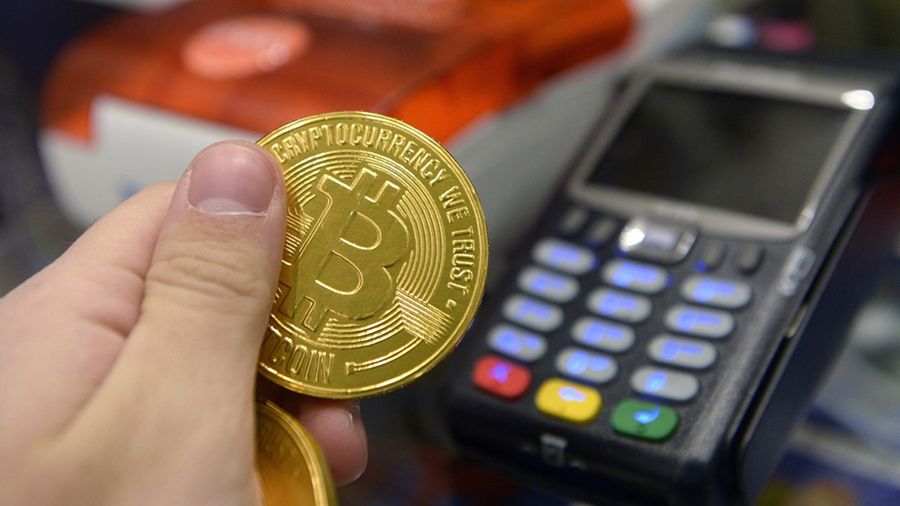 Members of the Open Payments Coalition alliance teamed up to launch a universal payment system PayID using cryptocurrencies.
Members of the Open Payments Coalition alliance teamed up to launch a universal payment system PayID using cryptocurrencies.
The alliance includes more than 40 non-profit organizations and companies working in the field of blockchain and crypto assets, including BitGo, BitPay, Bitrue, Bitso, Bitstamp, Blockchain.com, BTC Markets, CipherTrace, Coinone, Crypto.com, Independent Reserve and Liquid. The consortium organizers said that it was created to “hack” established standards in the payment sector and accelerate the introduction of cryptocurrencies around the world.
According to the developers, PayID should be an international solution that combines the functions of all existing payment systems. To instantly receive transfers, users can provide their email address or phone number tied to a bank account. You do not need a bank account or credit card number, bank code or ID of an interbank payment system SWIFT.
Xpring Ripple startup senior vice president Ethan Beard noted that cryptocurrencies will be a key component of PayID. The system will support real-time payments with both fiat and digital currencies. To do this, you must create an open payment system that can provide the necessary level of protection and confidentiality for large financial corporations, non-profit organizations, applications and ordinary users.
The system will meet the requirements of the United States Financial Crime Prevention Network (FinCEN) and the Financial Action Task Force on Money Laundering (FATF). In addition, the solution will allow alliance members to interact with a large number of payment networks and expand the user base.
How to make money work. 5 reasons to invest in tokens
22/06/2020
 Why you need to save your savings from even minimal inflation than security tokens are better than classic investments and how to get rid of intermediaries who take a significant part of the profit
Why you need to save your savings from even minimal inflation than security tokens are better than classic investments and how to get rid of intermediaries who take a significant part of the profit
The word “tokenization” should not be misleading. Assets, which in this case are most often discussed, have nothing to do with highly volatile cryptocurrencies. These are mature blockchain technology products that have just appeared on the market. Tokenized assets represent a hybrid product of the classic financial market and blockchain technology, which opens up new opportunities for existing instruments.
Why invest if you can put it off?
Prices have been rising over the years. The beautiful story that money in savings account in a bank is safely saved, and interest accruals only increase capital is not true. The reason for this is inflation. This is how Toms Kreitsbergs, Executive Director of the Latvian Asset Management Society Indexo described this phenomenon:
“If you don’t go deeper, inflation seems like a small, annoying bug. Every year he eats up a few percents of savings – it’s not so scary, is it?
In fact, inflation is a gluttonous rat that for decades left only crumbs of your “cheese”. We all work hard to create savings and take care of the future of our family. If some thief had stolen half of your savings from you, would that not have made you angry? ”
The theme of inflation is especially relevant now, during the tough economic crisis and the infusion of trillions of currency units by world central banks. The logical solution for protecting capital is an investment. Blockchain-based security tokens, according to the creators, should simplify investing and provide access to companies that have the potential to make big profits over time.
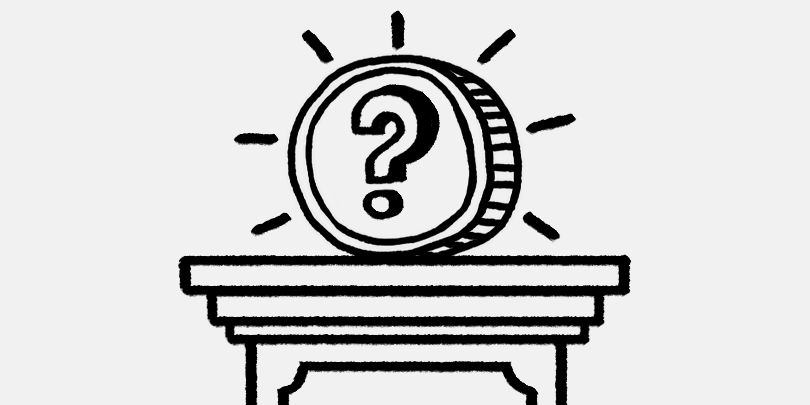 Is buying security tokens an improved version of a classic investment?
Is buying security tokens an improved version of a classic investment?
Thanks to the Fourth Industrial Revolution, today retailers are armed with Big Data (Big Data), and technology makers are getting trickier with IoT (Internet of Things). At the same time, the investment sector is looking for the most convenient form of communication between those who want to raise capital and those who are willing to invest, whether they are specialized applications, crowdfunding or venture capital. This list also contains distributed ledger technology (DLT) and, in particular, blockchain.
According to Deloitte, DLT should be considered not just as a new type of “database”, but as a new way of organizing the value chain of securities from issue to custody. But what exactly can be transmitted along this chain?
Today it is security tokens or, more simply, a digital representation of an irrefutable right to a physical share in an asset. This right is built into the smart contract along with the corresponding legal framework.
In essence, a security token is a digital signature that issuing platforms use to automate compliance, notify both investors and asset managers/owners that a certain amount of value is being transferred from hand to hand, and settlements on transactions with both parties. As with traditional securities, investors have voting rights; they can receive dividends or profits, or they can trade in the secondary market.
So, here are five reasons why investors should turn their attention to this new developing form of alternative investment.
 Fractional Property – Take As Many As You Want
Fractional Property – Take As Many As You Want
Digitization of shares makes them very divisible, that is, investors can buy a very small percentage of symbolic assets. For example, one square meter in a multi-million dollar building. The sharply reduced purchase threshold destroys barriers to the influx of billions of cash from retail investors into the market.
A good example is the real estate investment. While in the analog world, a person needs a significant amount of money to buy a share in real estate, in the digital and symbolic world you can become a landlord with $ 500 in your pocket.
Bye, intermediaries!
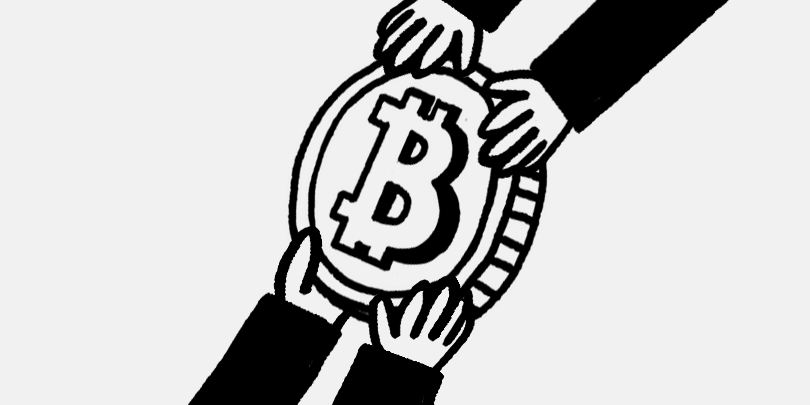 Tokens have a simpler investment structure and lower commission fees. Traditionally, investments are associated with a large number of intermediaries: banks, currency exchangers, lawyers, brokers, and so on. In this chain, each of them performs its function and cannot be simply deleted. But this is only the tip of the iceberg.
Tokens have a simpler investment structure and lower commission fees. Traditionally, investments are associated with a large number of intermediaries: banks, currency exchangers, lawyers, brokers, and so on. In this chain, each of them performs its function and cannot be simply deleted. But this is only the tip of the iceberg.
A large number of intermediaries, ensuring a smooth and lawful transfer of property rights, means a huge number of fees, which grows in proportion to investments. In the case of asset tokenization, technology removes most of them from the playing field. The project has documentation, transparency and a clear mechanism for interaction between the investor and the project. That is, there are only two participants left.
Toward Maximum Liquidity
 Transferring the investment process to the blockchain creates an environment with a low coefficient of friction: automatic transfer of ownership while maintaining compliance with requirements, lower costs and complexity, the ability to invest with fiat money or cryptocurrency, P2P trading on regulated exchanges – all this helps to increase liquidity.
Transferring the investment process to the blockchain creates an environment with a low coefficient of friction: automatic transfer of ownership while maintaining compliance with requirements, lower costs and complexity, the ability to invest with fiat money or cryptocurrency, P2P trading on regulated exchanges – all this helps to increase liquidity.
This is similar to how e-commerce once completely undermined traditional business. In the same way that customers can make purchases 24/7/365, it will be possible to trade in digital securities at any time, from anywhere in the world.
Legal defense
 In addition to all of the above, there is a regulated legal framework for security tokens. Europe is one of the friendliest places when it comes to launching compatible STOs (offering security tokens). For example, the UK Financial Conduct Authority has issued a crypto classification guide that defines securities tokens as stocks or debt instruments and includes property rights.
In addition to all of the above, there is a regulated legal framework for security tokens. Europe is one of the friendliest places when it comes to launching compatible STOs (offering security tokens). For example, the UK Financial Conduct Authority has issued a crypto classification guide that defines securities tokens as stocks or debt instruments and includes property rights.
Indeed, the industry is very young, but the infrastructure is developing by leaps and bounds, with the advent of regulated platforms for issuing security tokens that meet the requirements of exchanges and depositories. At this pace, the placement of tokenized assets will soon be able to seriously compete with an IPO – they are cheaper and faster, have a wider base for raising funds, but at the same time provide a high level of legal protection for investors.
The icing on the cake
A security token is essentially a digital signature included in a smart contract. Such a contract is responsible for simplification and verification of transactions related to property rights. Like any software, it can be encoded with some additional functions, in addition to those that were originally laid down in the project structure – a loyalty program, the ability to influence the development of the project through simple old management mechanisms, such as voting by shareholders or additional bonus dividends for accumulation assets. Projects can attract additional investors and stimulate them. At the same time, everything is automated, and the operating team and customers do not need to worry about compliance with the law, verification, AML, infrastructure support and so on. This is an additional bonus that security tokens have compared to traditional securities.
In conclusion, asset tokenization is not another type of investment, it is worth talking about adding value to any investment project. Digital securities can shape the future of investment and finance, democratize access to wealth, and break down barriers to higher-return investments. While token infrastructure is gaining momentum, pioneers can take advantage of pioneers.
How cryptocurrency helps big brand loyalty programs
19/06/2020
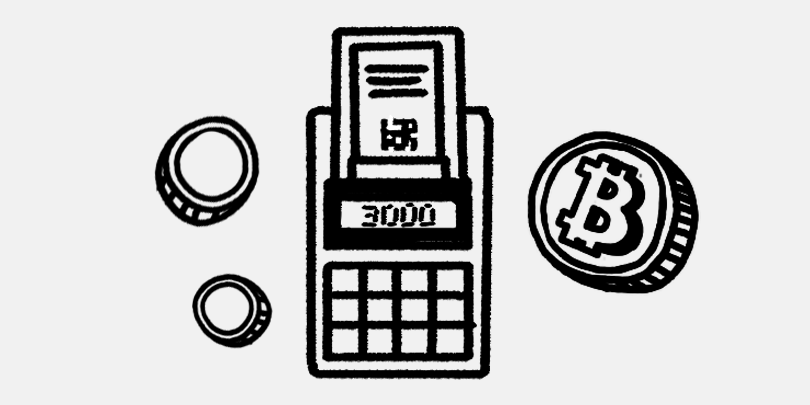 What kind of crypto start-up does Nike work with, how to get a cashback in bitcoins for reservations on Airbnb, as well as Rakuten, Reddit and other world-famous companies that already penetrate the blockchain industry
What kind of crypto start-up does Nike work with, how to get a cashback in bitcoins for reservations on Airbnb, as well as Rakuten, Reddit and other world-famous companies that already penetrate the blockchain industry
Digital money is becoming more common. Now they got to the Nike sneakers. Is it possible to get cryptocurrency by buying your favorite shoes, and what kind of competitors does Aliexpress have? We talk about how global corporations are adapting Bitcoin and Co., involving more and more people in this market.
Nike and Plutus
On June 2, 2020, the global sports giant stirred the crypto community. The company has teamed up with London-based startup Plutus, which specializes in financial technology. Plutus offers its customers a reward for every purchase in the Nike online store. Cash remuneration is paid in the amount of up to 9% of the purchase amount, and in cryptocurrency – up to 3%. Main condition: a purchase can only be paid with a Visa Plutus card. Now the service is available only in Europe and the UK – funds are returned in euros and pounds.
The main goal of a startup is to make cryptocurrency as widespread and familiar as the dollar. The startup is moving towards this goal by combining tokens and classic currencies in its application.
By the way, this is not Nike’s first step into the crypto industry. In December 2019, the company patented CryptoKicks blockchain sneakers. It is assumed that when buying a pair of sneakers, a digital token will be created, and a product and buyer ID will be tied to it. So fake shoes will be simply impossible: the authenticity of the sneakers can be verified by scanning the code.
Prior to this, Nike launched a loyalty program in partnership with the Lolli platform. Sneakers buyers can return up to 3% of their spending on shoes in the form of bitcoins.
For Plutus, this is not the first collaboration either. Not so long ago, the company teamed up with giants such as Skyscanner and Airbnb. Due to the COVID-19 pandemic, partnership development has been suspended.
Airbnb Experience
Airbnb works with a variety of loyalty programs to attract as many digital money users as possible. The list of service partners includes Lolli, Fold and Crypto.com.
The Fold application for payments in bitcoins has supported Airbnb since 2019, users can get 3% of the cashback in bitcoins for every reservation on Airbnb paid for with cryptocurrency.
Crypto.com – an electronic payment system that allows you to pay for purchases with cryptocurrency, returns up to 8% of expenses in the form of tokens to users. The millionth platform also collaborates with the Expedia reservation service. The payment system stands out among others in that it is present simultaneously in Europe, Asia and America.
Travala
More and more representatives of the tourism industry are using cryptocurrencies to attract new users. The Travala.com hotel reservation service and TravelByBit airline ticket search site recently announced a merger. Both platforms accept tokens for payment and plan to expand their use.
According to data from May 20, 2020, the companies will unite to become a platform that will provide access to more than 2 million hotels and 600 airlines. Binance cryptocurrency exchange supported this decision. Binance CEO Changpeng Zhao praised the companies, believing that they would create a modern reservation service for the cryptocommunity.
It is noteworthy that Travala already had its own AVA token, which gives access to bonuses and discounts. Soon they will be available to TravelByBit users. Now for every booking through Travala, a traveler receives a 2% bonus in tokens.
Tokens instead of miles: airlines and blockchain
The aviation industry is also introducing blockchain into loyalty programs. Norwegian Airways launched its own NBX cryptocurrency exchange. In July 2019, the managing director of the exchange, Stig Chios-Mathisen, said in an interview with a local news source:
“First, a trading platform will be launched. Then NBX will develop a payment solution for the airline so that customers can pay with virtual currency. ”
As of February 2020, the platform is already ready to accept payments in cryptocurrency. In the future, the company plans to launch a loyalty program related to blockchain technologies.
In July 2018, Singapore Airlines became the first carrier in the world to launch a blockchain-based digital loyalty wallet. It is called KrisPay.
By downloading the KrisPay app, members can convert their KrisFlyer miles to KrisPay miles. To make purchases, users scan the KrisPay QR code from the seller and enter the amount they want to pay with their miles. Now 18 sellers from different categories are working with the platform.
“Thanks to the blockchain-based digital wallet, participating sellers can easily connect to the program, and customers can make purchases using their tokenized miles,” said Jan Reinmüller, head of Digital Village in Singapore.
Lolli
The Lolli cryptostartup, in which Ashton Kutcher, Guy Ozeri and Michelle Fan have invested, helps to get bitcoins even for buying food. In the summer of 2019, the company entered into a partnership with Safeway, a large grocery chain from America, and now Americans can return 3.5% of their spending on food in the form of cryptocurrencies.
In an interview with Yahoo! Lolli CFO and co-founder Alex Adelman said that “joining one of the most recognized food retailers in the US will give people the opportunity to own bitcoins – probably for the first time.”
Founded in March 2018, Lolli allows users to earn Satoshi (0.00000001 BTC) for online purchases. Lolli increases the popularity of tokens among ordinary people by launching loyalty programs in partnership with global giants. The company already encourages people to book hotels on Hotels.com and Booking. So far, only US citizens can register with the Lolli loyalty program.
Zelwin vs Alibaba
The global giant Alibaba has become a partner of the aforementioned Lolli, but this is not the only marketplace that has learned to use cryptocurrency. So, Zelwin offers users to earn money on their spending. For each purchase, the user receives ZLW tokens, which can then be exchanged for real money or other tokens, or spent.
The platform also allows users to use not only regular money but also cryptocurrency – BTC and ETH in settlements with sellers. For convenience, the site has its own exchanger for conversion.
Rakuten
“Japanese Amazon” – Rakuten, is going to accelerate the entry of cryptocurrency into everyday life. Rakuten began to provide its users with the opportunity to exchange Rakuten Group loyalty points for popular cryptocurrencies, for example, bitcoin. This can be done by company customers in Japan. To do this, they must have an active account in Rakuten Wallet.
The Reddit platform also launches its token loyalty program. During the summer, users of two Reddit subgroups, including r / CryptoCurrency, will be able to earn tokens for posting comments. Currency can be used to purchase exclusive icons, use animated emoticons, and to respond to Reddit comments with pictures.
The efforts of Reddit differ from in-game money or rewards for video games in that the site creates real cryptocurrency working on the Ethereum network.
Major players in all sectors are reviewing their existing loyalty programs to take advantage of cryptocurrencies. The most effective and useful cryptocurrencies can simply be loyalty points. And the most numerous users of digital money have a chance to be those who did not even think about it before.
Deloitte study: “55% of companies consider blockchain a key development factor”
18/06/2020
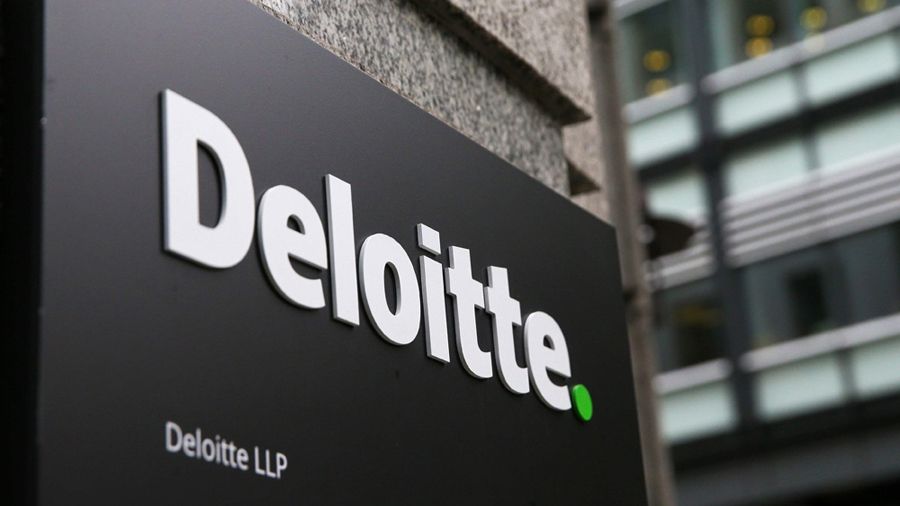 According to the report of the audit company Deloitte, the number of companies that introduced blockchain in their business processes this year increased to 39%. In 2019, this figure was 23%.
According to the report of the audit company Deloitte, the number of companies that introduced blockchain in their business processes this year increased to 39%. In 2019, this figure was 23%.
The Deloitte survey involved 1,488 company executives and specialists from 14 countries. At the same time, 55% of respondents called blockchain “one of the key factors in the development of their company,” and 82% said they already attract employees specializing in the blockchain field or ready to receive the necessary training in the next 12 months.
According to the researchers, the companies surveyed have a general idea of distributed registry technology and are even ready to share plans on how they are going to implement blockchain in their activities. Among the organizations participating in the survey, 100 companies are already using blockchain to develop their projects, and last year they received venture financing from $ 3 million.
However, the implementation of the blockchain is uneven in different countries. For example, only 31% of US companies have implemented this technology in their production processes, while in China this figure is almost twice as much – 59%. America lags significantly behind other countries in this regard: 53% of the companies that implemented the blockchain are located in the Asia-Pacific region, 48% in Ireland, and 43% in the UAE.
The leading industries where blockchain is widely used, Deloitte noted the field of telecommunications and information technology, as well as the industry of finance and wholesale. 88% of the total number of firms surveyed believe in the potential of the latest technologies and believe that in the near future they will be used everywhere.
In addition, 86% of company executives surveyed said their team is already working on various options for using the blockchain. At the same time, 83% of respondents believe that they can lose their competitive advantages and stop developing if they do not integrate the latest technologies into their business processes.
Also, 83% of company executives believe that in the next 5-10 years, digital assets can become an alternative to fiat currencies or even replace them. At the same time, the number of companies that believe that the capabilities of the blockchain are underestimated is increased to 54%. Last year, this figure was 43%, and in 2018 – 39%.
In May, Deloitte, together with the Value Technology Foundation, published the results of a study on the use of blockchain in the military industry. According to the report, Russia and China became the leaders in developing solutions based on the blockchain, leaving the United States behind.
Bank of Canada is looking for specialists in the development of state cryptocurrency
18/06/2020
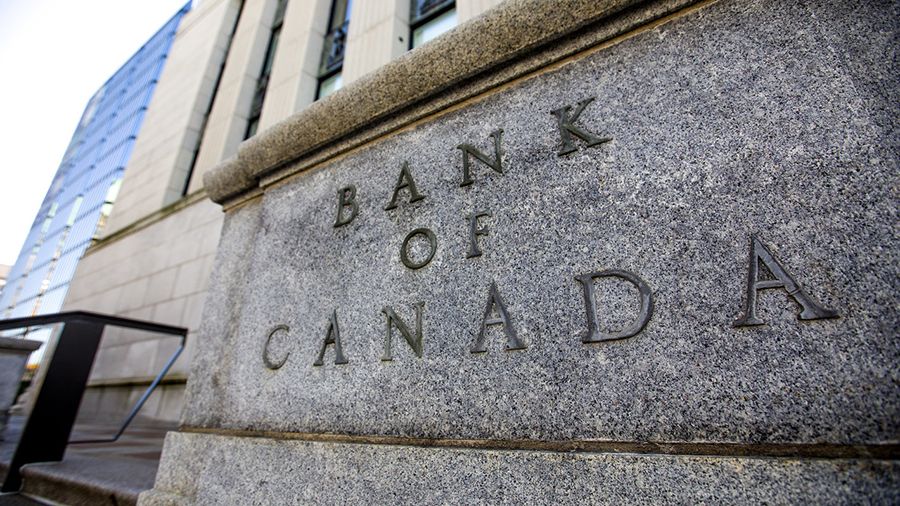
The Bank of Canada is preparing to develop a cryptocurrency of the Central Bank. The regulator opened the vacancy of the project manager for the development of the state cryptocurrency.
The Central Bank of Canada has unveiled its plans for the development of state cryptocurrency in vacancies on its website. The Central Bank said it was “rethinking the role of the Central Bank in banking services” and the nature of the circulation of the national currency of Canada.
“The Bank of Canada is starting to implement a program of great social significance to develop a conditional system for state cryptocurrency, which can be considered as a banknote, but in digital form,” the bank writes.
According to the vacancy, the developed cryptocurrency should protect the privacy of users (although not to the extent that cash does), be accessible to those who do not have bank accounts or mobile phones and compete with banknotes in the field of security in order to gain trust among people who prefer cash.
In addition, the bank wants its state cryptocurrency to be created on the basis of architecture “with the possibility of the long-term evolution of the life cycle”, and could develop along with the political goals of the country.
In the vacancy of the project manager of the state cryptocurrency, the bank did not indicate on the basis of which technology the cryptocurrency will be created, whether it will work on the basis of the token or account model. These details will be disclosed during the three-year term of the office of the project manager. During this time, the bank also wants to create a “pilot system of state cryptocurrency”.
Despite the emergence of a vacancy, the bank has not yet undertaken to issue a state cryptocurrency. In February, the Bank of Canada stated that “now is the wrong time to issue a state cryptocurrency.” In connection with the latest information on the vacancy, a Bank of Canada spokeswoman said:
“Despite the fact that the Bank plans actions in case of unforeseen circumstances, there are currently no good reasons for issuing a state cryptocurrency. Although cash use at retail outlets declined during the pandemic, we did not see a significant change in the demand for banknotes. ”
Recall that at the beginning of the year the Bank of Canada jointly with the central banks of Great Britain, Japan, Sweden, Switzerland, as well as the ECB and the Bank for International Settlements announced the creation of a task force to study state digital currencies.
US Air Force allocates $ 1.5 million to blockchain startup SIMBA Chain to track supply chain
17/06/2020

The U.S. Air Force signed a two-year $ 1.5 million contract with SIMBA Chain to develop a blockchain to track supply chains.
SIMBA Chain said it entered Phase II of its U.S. Air Force project as part of the U.S. Department of Defense’s Small Business Innovation Research Program (SBIR) with a new contract to explore blockchain capabilities to track U.S. Air Force supply chains. In particular, under the project, the company will begin tracking Boeing products supplied by the US Air Force.
Recall that in May of this year, SIMBA Chain received from the US Department of Defense $ 200,000 under SBIR to develop a solution to improve integration, security, audit capabilities and controlled access to sensitive data from the Department of Defense.
SIMBA CEO Joel Neidig said the company will operate on the Tinker Air Force-based Hyperledger Fabric hub in Oklahoma, the Air Force’s supply chain logistics center, and plans to focus on risk management. That is, the work will be primarily aimed at forecasting and identifying the most vulnerable areas in the supply chain. Neydig does not report which Boeing products will be tracked by the US Air Force in phase II, but noted that “real data” will be used.
According to Neydig, the blockchain can ensure the safety of details by documenting each relevant data point, which is crucial for the purchase of the US Air Force. They think through their supply chains with such details that civilians “do not even think about”.
“The army is thinking about how people exchange data, where they come from, where there is still access to them. They think over everything that can go wrong, and it is here that the blockchain can help, ”he said.
The US Air Force’s need for reliable tracking of the logistics network has intensified with the advent of additive manufacturing. According to Jeffrey Slayton, Director of Special Programs, Strategy, and Policy, US Air Force, the additive manufacturing process, commonly known as 3D printing, can enable the military to print whatever it takes.
“New technologies, such as the SIMBA Chain blockchain platform, can provide reliable information exchange through an unreliable network in which not all participants can be trusted, and at the same time help maintain the technological superiority of American air, space and cyber forces,” said Slayton in a statement to the press.
SIMBA Chain is also able to help the military advance in solving problems that may arise with the spread of new technologies, such as artificial intelligence and machine learning, which can analyze a lot of data, Neidig said.
“We provide this level of trust, data integrity,” Neydig said. “We need to have an excellent trusted transaction database before we start entering data into the AI.”
Glassnode: percentage of inactive BTC peaked in four years
17/06/2020
 The share of inactive bitcoins exceeded 60%. The largest increase in the number of inactive BTC since the beginning of the year is observed among coins purchased 10 years and 2-3 years ago.
The share of inactive bitcoins exceeded 60%. The largest increase in the number of inactive BTC since the beginning of the year is observed among coins purchased 10 years and 2-3 years ago.
According to Glassnode, 60.63% of all BTCs did not move for more than a year. These data indicate the consolidation of BTC ownership and that investors who bought cryptocurrency at the lowest prices in 2018 have not yet begun to profit from their investments. More than four years have passed since such a large percentage of outstanding BTC did not move for more than a year.
One method of analyzing inactive bitcoins was to group coins by the length of the period when the BTC did not move. Called HODL Waves, this data analysis was first proposed by Unchained Capital in 2018 to demonstrate macroscopic changes in the ownership and use of BTC. It can also give an idea of investor sentiment.
Each wave – one day, one month, six months, two years, five years, etc. – represents the period of time during which a certain percentage of coins in circulation were not used in transactions or, in other words, were inactive.
The term HODL reflects the behavior of investors who choose to hold BTC without the intention to use or sell these coins. Thus, each wave visualizes what percentage of BTC in circulation participated in the HODL strategy and for how long.
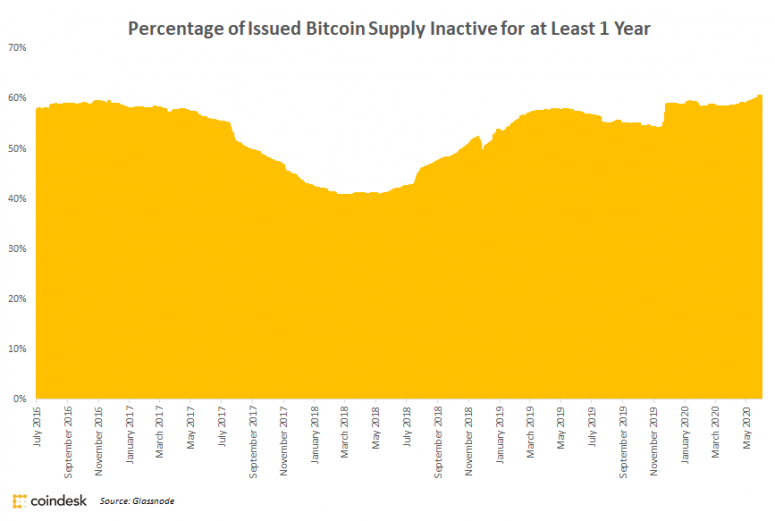
Percentage of BTC in circulation, inactive for one year or more. Source: Glassnode, CoinDesk Research.
Dhruv Bansal, co-founder of Unchained Capital, explained that the HODL Wave data indicates that investors who “bought bitcoin for between $ 6,000 and $ 3,000 in 2018 still hold it, despite a huge increase since then. recent economic fluctuations. ”
It is curious that the two periods of BTC storage in which the percentage of inactive bitcoins is highest is 10 years and 2-3 years. The number of inactive BTC in these segments has grown to 31% and 26% since the beginning of the year, respectively. In 2020, during the storage period of 2-3 years, coins were purchased that were purchased at record high prices in 2017.

HODL Waves of bitcoin from one year or more (from June 2016 to May 2020), broken down by period. Source: Glassnode, CoinDesk Research.
However, not every BTC investor can intentionally adhere to a HODL strategy. ARK Investment Management cryptocurrency analyst Yassine Elmandjra said that the growth of inactive BTC for two to three years, among other things, maybe due to the fact that cryptocurrency owners “bought BTC at the peak and lost their Trezor wallet or forgot their username and Coinbase Password. ”
Despite the extreme volatility of Bitcoin in the first quarter of 2020 and continued macroeconomic uncertainty, the growing number of inactive BTCs confirms that cryptocurrency owners still believe in their investments. According to Bansal, “if you think the BTC price history is repeating, then market consolidation in the hands of confident investors in the future may be a sign of a bullish trend.”
The New York Times Tests Fake News Blockchain
16/06/2020
 The New York Times, in the framework of a joint project with IBM News Provenance, is testing a blockchain to combat fake news.
The New York Times, in the framework of a joint project with IBM News Provenance, is testing a blockchain to combat fake news.
The New York Times is exploring whether blockchain can help restore credibility in online media. As part of the News Provenance project, created in collaboration with IBM, the publication wants to increase readers’ confidence in news photos stored on the blockchain.
To do this, a prototype of an artificial social network was created, with the help of which the team tracked the status of the photo from the moment it was taken and published, before it was edited. In addition, any signatures accompanying the photo were tracked.
Thanks to the blockchain, all changes were registered and available for study, and smart contracts guaranteed that only certain people could access the photo metadata. Project Manager Pooja Reddy shared project information at the end of last week.
She noted that additional information about photography has helped readers better understand the origin of the image through the context provided, but there are serious obstacles to the realization of something like this on a larger scale.
One of the problems is the requirement that the project publishes content published by other media. Another problem is the comparison of online photos with the originals on the blockchain, although technologies such as automatic video analysis or perceptual hashing can help.
In addition, the prototype system required significant financial and technical costs, and small news organizations may not be able to bear such costs. Ultimately, such a system can be successful only with large-scale participation of a large number of media. Reddy said that her team is working to increase the interest of industry participants and support this and other related projects:
“This prototype was an experiment that told us a lot about the power of reliable contextual information in social media channels. However, to realize something like this, there is a long way to go. Nevertheless, there are great opportunities to use blockchain to combat fake news.
This is not the first time large media have been exploring the possibilities of blockchain. Back in 2018, the American Forbes magazine announced a collaboration with the blockchain startup Civil to publish its content on a decentralized network. Recently, however, the Civil startup, whose goal was to create a decentralized platform for financing the media and posting materials, announced the closure after four years of operation.
Trezor wallet update made it incompatible with CoinJoin
16/06/2020
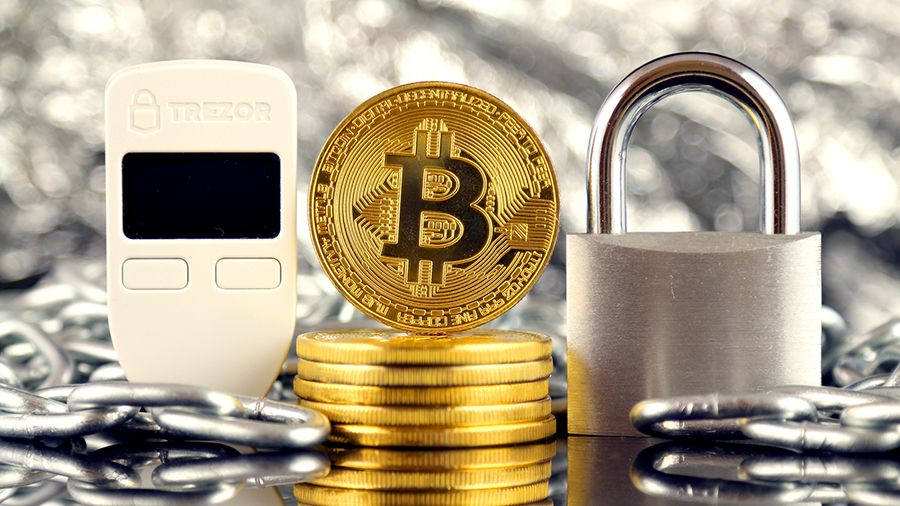 Wasabi Wallet encourages its users who own Trezor hardware wallets not to download the latest wallet until the compatibility issue is resolved.
Wasabi Wallet encourages its users who own Trezor hardware wallets not to download the latest wallet until the compatibility issue is resolved.
According to a Wasabi Wallet notice published yesterday, wallet users should not upgrade to the latest version if they use the Trezor device. Otherwise, you may temporarily lose access to your BTC.
The notification says that if the user has Trezor Model T, then it is not necessary to upgrade to version 2.3.1., And if Trezor One – to version 1.9.1. This is due to the fact that last Wednesday, the developer of the Trezor hardware wallet, SatoshiLabs, told its customers about the resolved security vulnerability. According to the company, due to a code error, wallet users could become victims of fabulous commissions.
SatoshiLabs fixed the problem with Trezor, but the update undermined third-party services such as Wasabi and the BTCPay server, writes Jumar Macato, software developer at Wasabi Wallet.
Wasabi Wallet supports CoinJoin mixing technology and allows you to anonymize transactions by collecting multiple transactions into one. Wasabi interacts with Trezor, a cold wallet, to send BTC using CoinJoin. Wasabi sends Trezor a partially signed BTC transaction, and Trezor confirms the transaction as soon as the owner signs it.
But the Trezor update interferes with Wasabi, as Trezor now considers the partially signed BTC transaction to be invalid. A Trezor device may also require a lot of space to access previous transaction data, which may make a partially signed transaction file too large for a hardware wallet.
“In light of the aforementioned problems, Wasabi Wallet encourages its users with Trezor hardware wallets to postpone the update,” Makato wrote. “We advise users not to update Wasabi Wallet until the problem is resolved, because of the potential possibility that attackers could spread a malicious copy of Wasabi Wallet and exploit the vulnerability for their own purposes.”
Fake versions of the Wasabi wallet were already created by cybercriminals earlier. In March last year, a fake Wasabi Wallet site appeared on the network, the purpose of which was to steal funds from inattentive users.
People may be prohibited from owning gold. Stablecoins will save.
15/06/2020
 History knows examples when in the XX century the authorities of large countries confiscated gold from private owners. Now the world is on the verge of a new economic shock, so there is a chance that the situation will happen again. Digital money will help save capital
History knows examples when in the XX century the authorities of large countries confiscated gold from private owners. Now the world is on the verge of a new economic shock, so there is a chance that the situation will happen again. Digital money will help save capital
With the onset of the pandemic, economic performance declined worldwide and money flooded the global market. Since March, the balance of the largest central banks in the world has increased by $ 5 trillion and continues to grow. The US Federal Reserve, the ECB, the Bank of England, the Bank of Japan and the Reserve Bank of Australia are trying by any means to save the financial systems of their countries, and at the same time – the whole world. In the United States alone, more than $ 3.5 trillion was printed. Experts consider the monetary policy of the United States the main factor in financial instability. Authorities may lose control of inflation triggered by the economic crisis and central bank interventions. In such a situation, the solution for states could be the demonetization of gold, which would make it illegal to store it by private individuals.
The bubble will continue to inflate
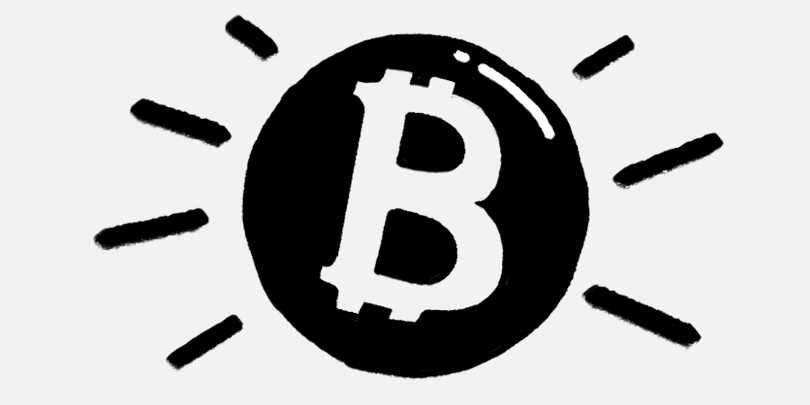 While the printing presses in the US and Europe continue to operate, it is already clear that current market performance does not reflect reality well. With unemployment rates in the United States almost at the level of the Great Depression, the stock market continues to grow and breaks through the highest levels recorded earlier this year.
While the printing presses in the US and Europe continue to operate, it is already clear that current market performance does not reflect reality well. With unemployment rates in the United States almost at the level of the Great Depression, the stock market continues to grow and breaks through the highest levels recorded earlier this year.
The following picture is now visible: stock markets behave in exactly the opposite direction to the economy, but are derivative of it. Small businesses reacted first, medium-sized companies such as Hertz filed for bankruptcy one after another. Entire industries have undergone a forced reduction in volumes. Thus, the number of drilling rigs for shale oil in the United States has halved.
In such a situation, the soap bubble created by the Central Banks with each new printed bill is about to burst. The study showed that with the change in macroeconomics, more and more people see gold as a safe asset against the current troubled currency system.
Prohibition of gold ownership. History knows examples.
 London Hedge Fund Manager Odey European Inc. Crispin Audey believes central banks may prohibit private ownership of gold if they lose control of inflation in the context of the crisis with coronavirus.
London Hedge Fund Manager Odey European Inc. Crispin Audey believes central banks may prohibit private ownership of gold if they lose control of inflation in the context of the crisis with coronavirus.
Many gold owners fear that governments may confiscate their gold, pointing to similar situations in the 20th century. The German Empire, the Soviet Union and the United States at different times carried out the confiscation of gold from the population. The outcome of such interventions is difficult to predict. After the First World War in Germany, for example, paper stamps received in exchange for gold turned to dust.
Audey added that in the current situation, governments “will only do this if they feel the need to create a stable accounting unit for world trade.” He compared the current crisis to the Great Depression of the 1930s, arguing that central banks could not contain inflation when the economy began to recover.
Under such conditions, stablecoins secured by gold through institutional organizations can become the main tool for hedging risks during high inflation of the global economy.
Stablecoins secured by gold are in great demand
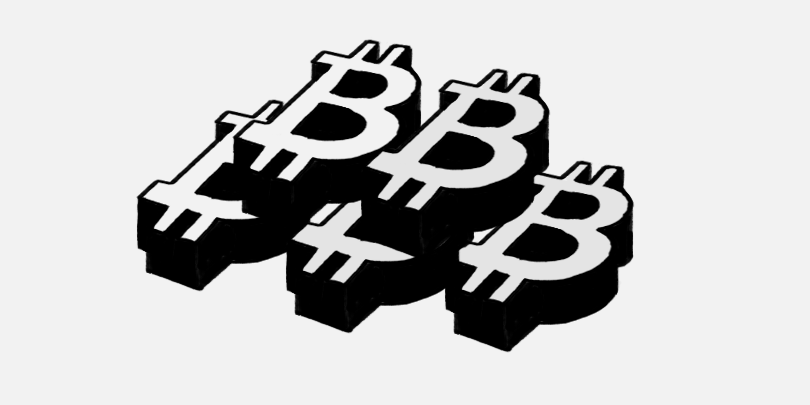 Today, there are already more than 20 cryptocurrencies, the developers of which claim that they are provided with physical gold. This can inspire some optimism for both crypto and classic investors looking for access to safe assets. For crypto investors, the main factor in crypto-gold is the withdrawal of an unsupported, algorithmic cryptocurrency into a physically tangible substance. Moreover, crypto gold gives owners the right to exchange currency for physical gold. There is also fractional ownership of one ounce, which is impossible in the classic market. All this can make stablecoins secured by gold a new spending currency.
Today, there are already more than 20 cryptocurrencies, the developers of which claim that they are provided with physical gold. This can inspire some optimism for both crypto and classic investors looking for access to safe assets. For crypto investors, the main factor in crypto-gold is the withdrawal of an unsupported, algorithmic cryptocurrency into a physically tangible substance. Moreover, crypto gold gives owners the right to exchange currency for physical gold. There is also fractional ownership of one ounce, which is impossible in the classic market. All this can make stablecoins secured by gold a new spending currency.
Moreover, if the government decides to take the gold from the population, most likely, such institutional organizations as Tether and PAX will not stop offering crypto gold. Although without a possible exchange for the physical component, stablecoins will be a popular hedging tool in case of high inflation in the global economy.
Classic currency will not give way as a world standard
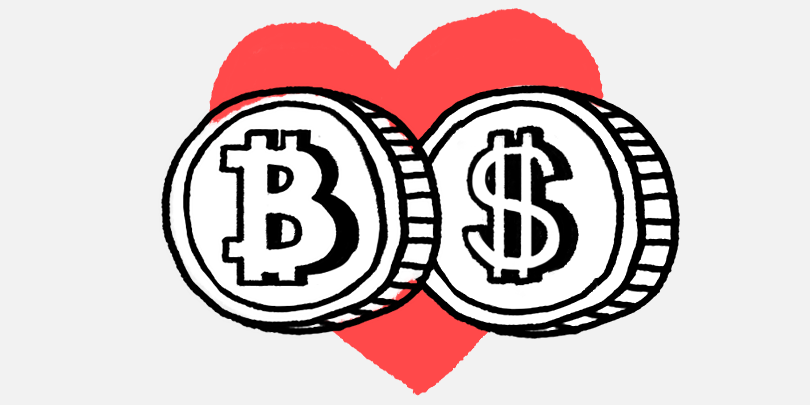 Total global debt exceeds 300% of global GDP, or roughly equal to $ 250 trillion. Most of the debt is denominated in the currencies of leading economies – these are the dollar, euro, pound, yen and yuan. Any debt must not only be repaid, but also serviced. To fulfill their obligations, countries must buy currency. Against this background, $ 5 trillion, which will be printed by the world Central Banks, looks like a drop in the ocean. Therefore, you should not expect higher inflation in the economies of leading countries in the near future. Of course, someday the next cycle of currency weakening will begin. It is hard to believe that one of the most powerful economic collapses will end with a monthly fall in the stock market and a short-term drop in oil prices. You can talk about when the next wave of crisis will come, but the market is extremely unstable, and there are many pitfalls that can trigger a fall. Professional players understand this and it is not surprising that we are seeing a sharp jump in interest in gold, cryptocurrencies and, in particular, stablecoins, as part of a portfolio of safe assets.
Total global debt exceeds 300% of global GDP, or roughly equal to $ 250 trillion. Most of the debt is denominated in the currencies of leading economies – these are the dollar, euro, pound, yen and yuan. Any debt must not only be repaid, but also serviced. To fulfill their obligations, countries must buy currency. Against this background, $ 5 trillion, which will be printed by the world Central Banks, looks like a drop in the ocean. Therefore, you should not expect higher inflation in the economies of leading countries in the near future. Of course, someday the next cycle of currency weakening will begin. It is hard to believe that one of the most powerful economic collapses will end with a monthly fall in the stock market and a short-term drop in oil prices. You can talk about when the next wave of crisis will come, but the market is extremely unstable, and there are many pitfalls that can trigger a fall. Professional players understand this and it is not surprising that we are seeing a sharp jump in interest in gold, cryptocurrencies and, in particular, stablecoins, as part of a portfolio of safe assets.
The creators of the fake stream about the Sony PlayStation 5 attracted 1.4 BTC
15/06/2020

A fake video about the release of the PlayStation 5 game console appeared on YouTube. Fraudsters who urged users to participate in the distribution of 5,000 bitcoins managed to raise about $ 13,000 in BTC.
Attackers positioned themselves as a Sony corporation, which allegedly in honor of the release of the new Sony PlayStation 5 game console distributed bitcoins. To take part in the action, users had to transfer from 0.1 BTC to 20 BTC to a specific address, after which they were promised double the number of bitcoins, depending on the amount deposited.
The broadcast was conducted on the PlayStation Live channel. At the beginning of the presentation of “Sony Playstation 5 Game Reveal Event (PS5) Live Presentation”, there was zero balance on the attacker’s wallet. After the video was deleted due to violations of YouTube’s policy, 1.4 BTC appeared on the ransomware’s account, and no funds were sent from his address to anyone.
It is easy to guess that this was a common cheating scheme, designed for gullible users. To gain confidence, the scammers personalized the Bitcoin address to which they asked to send cryptocurrency. Typical Bitcoin addresses contain alphanumeric characters, while the scam address starts with “1Sony”. Creating such an individualized address is very difficult.
Fraudsters used the original Sony PlayStation 5 broadcast recording after it ended 10 hours ago. The extortionists broadcast it for two hours, and gained about 100,000 views. A fake video appeared on YouTube in the first six lines for “ps5 reveal trailers”, and about 233,000 people subscribed to the fake channel.
To date, the channel is still operational, but this video is missing from it. Given the number of PlayStation Live subscribers, it can be assumed that the attackers hacked this channel or “pumped” it for several months with the aim of extortion.
Recall that in March, a similar video appeared on YouTube on behalf of Ripple CEO Brad Garlinghouse. Then the scammers asked users to deposit from 2,000 to 500,000 XRP to participate in the distribution of tokens.
TokenInsight: China Loses Leadership in Bitcoin Mining
12/06/2020
 The share of Chinese miners in the total bitcoin hash rate has decreased, and production in the US and Kazakhstan is gradually growing. The development of this trend will lead to China losing its leadership in BTC mining.
The share of Chinese miners in the total bitcoin hash rate has decreased, and production in the US and Kazakhstan is gradually growing. The development of this trend will lead to China losing its leadership in BTC mining.
According to a report by TokenInsight, an analytic company that cites data from the University of Cambridge’s Alternative Finance Center, the share of BTC miners from China in the total Bitcoin hash decreased from 75.63% in September 2019 to 65.08% by the end of April.
At the same time, the share of BTC miners from the USA increased from 4.06% to 7.24%. Cryptocurrency mining in Kazakhstan also increased sharply: in September, Kazakhstan miners accounted for 1.42% of the hashrate, and by May 7, it was already 6.17%.
TokensInsight chief analyst Johnson Xu said China’s dominance in bitcoin mining will continue to decline. Due to price fluctuations and lower BTC prices last month, “a large share of miners in China have stopped working,” he said. TokenInsight chief analyst explained that bitcoin halving has complicated the work of Chinese miners.
“In China, there are quite a lot of devices of past generations, because miners do not have much motivation to switch to new ASICs,” he said, explaining that in China, lowering energy costs contributes to higher profits.
Xu noted that miners are leaving China because “the mining industry in China is unstructured and limits access to capital.”
Although the Chinese government began to take steps towards the mining industry last fall, Xu believes that the “structured and progressive legal framework” of other countries, as well as “raising awareness of BTC and cryptocurrencies outside of China at the national level” make the country less attractive to miners.
After halving the Bitcoin miner reward, the overall hash of the network fell. He has bounced back since then, but that’s more than just a market correction, Xu said – this is due to the weather in China. At this time of year in the Sichuan province, the rainy season begins, and miners close farms in the cold province of Xinjiang and run them in Sichuan, where there is cheap hydropower.
Since electricity in Sichuan is cheaper in the rainy season, “more and more miners are interested in turning on the [old] devices because they can make a reasonable profit,” Xu said.
But he believes that Chinese miners will not be able to maintain leadership. As soon as the rains run out and electricity prices rise again, miners in China will have to deal with more serious problems. In addition, at the end of last month, Sichuan authorities said they could limit the extraction of cryptocurrencies.
Messari: the profitability of tokens of decentralized exchanges grew by 240%
12/06/2020
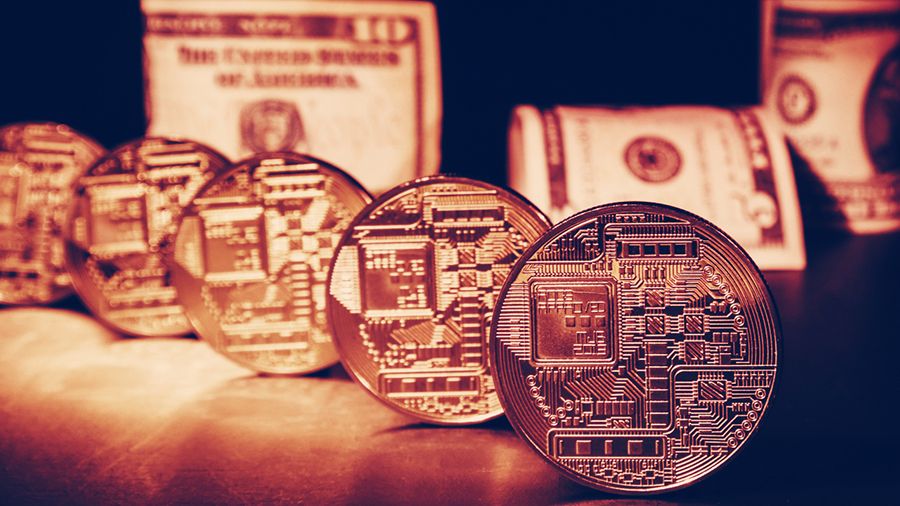 Growing trading volumes and protocol updates have helped decentralized exchange (DEX) tokens become five times more profitable than their counterparts on centralized sites.
Growing trading volumes and protocol updates have helped decentralized exchange (DEX) tokens become five times more profitable than their counterparts on centralized sites.
A new Messari report says that the profitability of DEX tokens, such as Kyber Network and Bancor, in 2020 grew by an average of more than 240%. For comparison, a similar indicator for centralized platform tokens (BNB, HT, etc.) fluctuates at the level of 40%.
Forecasts show that, despite the leadership of centralized exchanges in terms of the number of users and trading volumes, decentralized alternatives have more and more advantages. In a report, Messari explains that most of the hype surrounding DEX tokens is due to the increase in volume and recent or upcoming protocol updates.
DEX aggregators, for example, 1inch, which distribute token swaps to several decentralized exchanges to provide the user with the best price, helped to increase the total trading volume of DEX tokens from less than $ 5 million to almost $ 25 million. Moreover, this increase led to an increase in the share of decentralized exchanges on the crypto assets market from 0.25% to 0.5%.
Despite this, DEX is still far from reaching trading volumes that are characteristic of popular centralized exchanges, such as Binance or Huobi. However, the Messari report notes that achieving parity with centralized competitors is not necessary for DEX tokens in order to offer investors favorable conditions.
The biggest advantage of decentralized exchanges is the programmatic nature of their commission distribution models – anyone can check the blockchain and make sure that the commissions are correctly distributed between token holders. At the same time, centralized exchanges already use token burning programs, which reduce the supply and, accordingly, increase the price, which can be changed at any time by the organizations managing them.
Base product updates add new features and increase potential revenue for liquidity providers and market makers on exchanges. While centralized exchanges currently offer users the best profit opportunities, the report looks at upgrading protocols like 0x and Uniswap as a potential catalyst for attracting these market participants and the trading volume that they bring with them.
Since trading volumes on DEX are relatively small, their steady growth can increase profits for token holders and the associated cost of the tokens themselves.
The Chinese bank employee appropriated 1.85 million yuan and lost them on bitcoin trading
12/06/2020
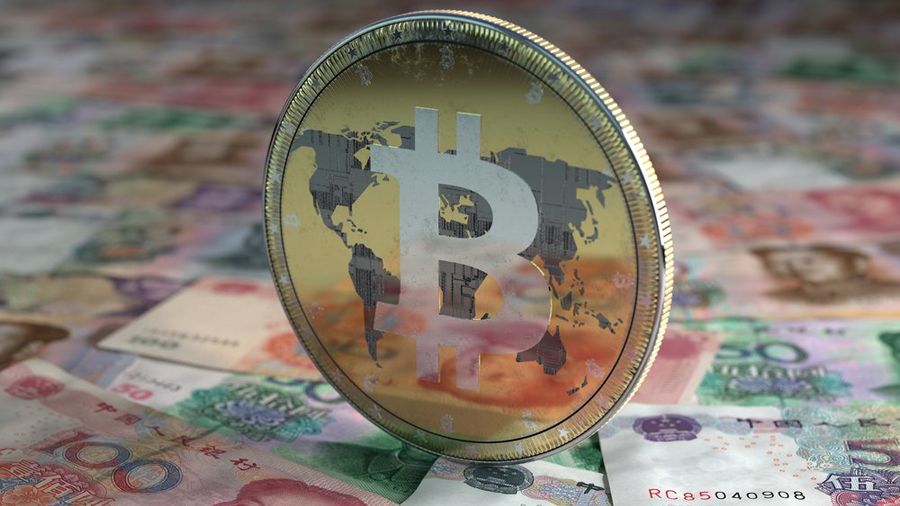 The employee of a Chinese bank invested 1.85 million yuan in Bitcoin, owned by the bank. For fraud, the “trader” faces 12 years in prison and a fine of 100,000 yuan.
The employee of a Chinese bank invested 1.85 million yuan in Bitcoin, owned by the bank. For fraud, the “trader” faces 12 years in prison and a fine of 100,000 yuan.
On Tuesday, a Hanfeng court in the Chinese province of Jiangxi examined the case of former bank employee Liu Lihua. This 33-year-old citizen took advantage of his official position and appropriated 1.85 million yuan to buy bitcoin. According to Lihua, he learned about bitcoin in 2013. He started investing in this cryptocurrency in 2018, believing in its potential after the bitcoin rate jumped to $ 20,000. Initially, Lihua invested 100,000 yuan in BTC, and within one week he made a profit of 1.6 million yuan. This trader seemed a little, and he decided to invest even more, using the money of the bank’s customers. The defendant believed that if he managed to earn 1.6 million yuan, he could easily gain 16 million yuan if he had extra money.
Between 2018 and May 2019, a bank employee managed to appropriate 1.85 million yuan, which he converted to Bitcoin and spent on his own needs. Subsequently, Lihua began to issue trumped-up bank loans to customer names, the total amount amounted to 770,000 yuan.
However, over time, the “streak of luck” ended, and in December 2018, the bitcoin exchange rate fell to $ 3200, although at the beginning of the year it held about $ 15,000. As a result, the “grief trader” lost 2 million yuan. He faces 12 years in prison and a fine of 100,000 yuan for fraud and misappropriation of bank money. In addition, Lihua is obliged to return all money received illegally.
Some banks are opposed to their employees owning and trading cryptocurrencies. At the beginning of 2018, the European bank Nordea made appropriate changes to its policy due to “too high risks” for the bank and its employees.
Instructions for beginners: how to make money on cryptocurrency
11/06/2020
 There are many ways to increase savings with Bitcoin and other digital assets. For example, investing, trading, mining and other methods. We talk about all the options.
There are many ways to increase savings with Bitcoin and other digital assets. For example, investing, trading, mining and other methods. We talk about all the options.
2020 may well be the year when interest in cryptocurrencies reaches the level of the end of 2017. Bitcoin, according to forecasts, is again torn to historic highs, and altcoins are growing in price. It’s time to recall the most popular ways of investing and making money on cryptocurrencies.
Trading
Trading involves short-term speculation, the completion of many transactions. For this, exchanges are best suited. It is easiest to quickly buy or sell cryptocurrency here. There is an option and margin trading with leverage. However, it is suitable only for professionals, since it is much more risky.
Cryptocurrencies are extremely volatile, so it is better to start trading them with a training account. It allows you to get acquainted with the exchange and its tools, get practice on a virtual balance. Then it’s better to start a small amount and, no matter how strange it sounds, survive the first losses. This will help to understand whether you are able to remain calm and make informed decisions in a stressful situation.
It is worth reading specialized literature on trading, listening to lectures, and taking courses. This will help to better understand the market situation and explore various trading strategies. We discussed in more detail how to start trading cryptocurrency in the previous material from the series “Instructions for Beginners”.
Algorithmic Trading
There is also algorithmic trading. Most transactions on world exchanges are performed using high-frequency trading tools, a trading method in which special programs automatically look for opportunities to earn money, sell and buy positions in a split second. Due to strong fluctuations in cryptocurrency rates, bots are becoming more and more popular in this area.
Algorithmic trading systems are used by both professionals and amateurs. Programs vary in complexity and device principles. There are three main categories of software for working with crypto exchanges:
Simple bots with predefined logic;
Trained trading robots based on AI and machine learning technologies;
Advisor robots (do not make deals, but give recommendations).
This option is hardly suitable for beginners. System performance is difficult to predict and impossible to guarantee. You should not completely give up exchange operations to the software, but you can try the work of robot advisers and independently evaluate their effectiveness.
Earnings on referral programs of cryptocurrency exchanges
A referral program is a type of cooperation in which a company pays its client (referral) for attracting new users (referrals). As a rule, bonuses are received both by the one who brought and the one who brought. Each organization chooses the method and amount of remuneration independently.
Among the crypto exchanges with regular affiliates: Binance, BitMEX, EXMO, OKEx, Huobi and Bitfinex. The amount of remuneration depends on the total volume of all attracted referrals. It happens that companies run “one-time” referral programs, for example, as part of IEO or in honor of a major update.
In March, Bittrex Global announced major changes to the mobile platform: the platform began to support credit cards for the purchase of digital assets and pending orders on smartphones. Then the company introduced a new referral program, which allowed customers to receive an additional commission percentage of the transaction of customers who came through a special link.
Investment
 An alternative to trading is “stall” or investing. This approach involves long-term transactions. It is more suitable for non-professionals, as it does not require knowledge of technical analysis, trading abilities and other skills.
An alternative to trading is “stall” or investing. This approach involves long-term transactions. It is more suitable for non-professionals, as it does not require knowledge of technical analysis, trading abilities and other skills.
Investing has less potential than trade. The price of cryptocurrencies can change by tens of percent every day, and the investor, accordingly, misses the opportunity to capitalize on these fluctuations. The “go” has another significant nuance. It is extremely important to find the right moment to acquire an asset, it is better to wait for a strong decline in its course. For example, users who invested in bitcoin in 2017-2018 at a cost above $ 14,000 still have not been able to close the profitable transaction.
Stablecoins
Stablecoin is a cryptocurrency secured by traditional assets, such as US dollars. Such tokens are often used on crypto exchanges as a convenient trading pair and adaptation tool. For traders, they are one of the main tools for taking profits. Having made a successful transaction, the user does not have to withdraw funds to fiat.
In April of this year, the balance of USDT and USDC stablecoins on the balances of users of all crypto exchanges exceeded $ 1 billion. Analyst at the Longhash portal explained that traders did not withdraw money, as they were going to invest it back in cryptocurrency, they were just waiting for the right moment. Recall that at the beginning of the month, bitcoin was trading at $ 6,200, since then it has risen in price by 57% to $ 9,700.
ICO and IEO
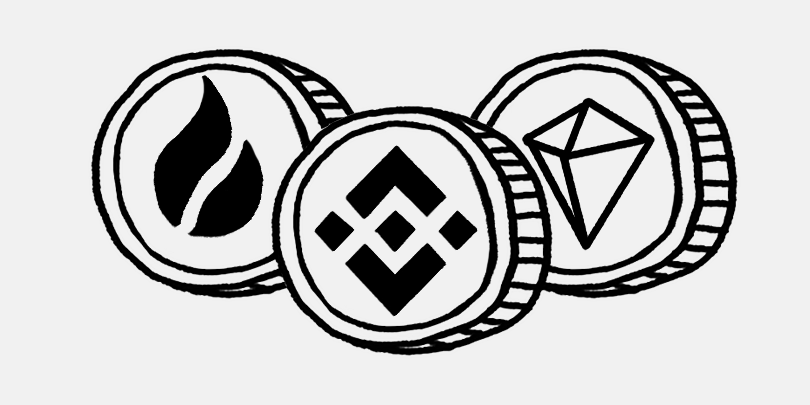 The peak of the glory of ICO projects took place at the beginning of last year. They were remembered by both large losses and huge earnings of investors. Perhaps the point in this method of attracting funding in the spring of 2020 was put by the Telegram Open Network – a project of Pavel Durov, which was much more talked about than others. An American court banned the release of Gram, after which Durov announced the completion of work on the blockchain platform.
The peak of the glory of ICO projects took place at the beginning of last year. They were remembered by both large losses and huge earnings of investors. Perhaps the point in this method of attracting funding in the spring of 2020 was put by the Telegram Open Network – a project of Pavel Durov, which was much more talked about than others. An American court banned the release of Gram, after which Durov announced the completion of work on the blockchain platform.
ICO was replaced by IEO – the primary exchange offerings. They differ in that not the project developers are looking for investors, but the cryptocurrency exchange selects promising teams and promotes their coins among their users. One of the main advantages of IEO is that tokens are necessarily issued and are listed. That is, there are no deceived investors who did not wait for the appearance of their coins.
No one guarantees investors high profits, but most IEO projects have shown multiple growth at the start of trading. Last year, this method of earning was so popular that some fundraising campaigns ended in seconds. Most investors did not have time to take part in the crowd sale, so the exchanges changed their approach and made a lottery out of it.
Now, on the vast majority of sites, customers need to keep exchange tokens on the balance sheet for a certain time before the token sale. In this case, people can participate in the lottery and try to get an allocation for the purchase of new coins. Often the percentage of winning tickets does not exceed 20% of the number of applicants.
Mining
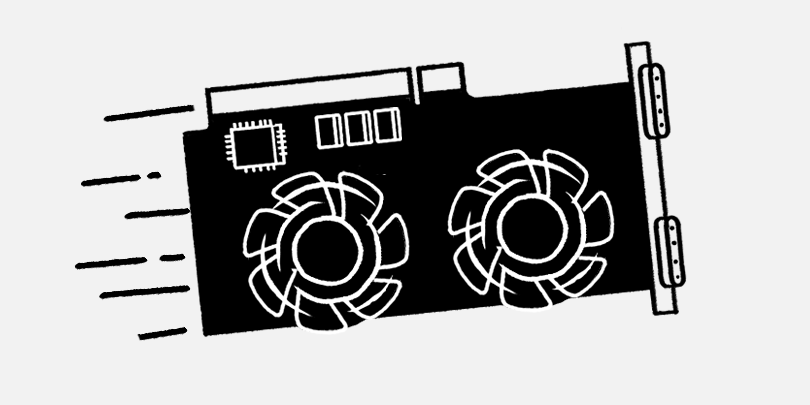 One of the most popular ways to make money on cryptocurrency is mining. Now, after the May halving, bitcoin mining has become even less profitable. Mining the first cryptocurrency is hardly suitable for beginners. It is often earned by large companies that have a large number of necessary equipment, access to cheap rental conditions, electricity, and maintenance. It makes sense to get digital coins only if it is possible not to sell most of them to cover transaction costs.
One of the most popular ways to make money on cryptocurrency is mining. Now, after the May halving, bitcoin mining has become even less profitable. Mining the first cryptocurrency is hardly suitable for beginners. It is often earned by large companies that have a large number of necessary equipment, access to cheap rental conditions, electricity, and maintenance. It makes sense to get digital coins only if it is possible not to sell most of them to cover transaction costs.
Beginners are better off mining altcoins. It is cheaper and makes it possible to resell video cards in case of failure. After operation ASIC is much more difficult to implement. It is even more profitable to work in a pool, that is, together with other miners. In this case, due to the total capacity of the pool, you can get a small but stable income.
Stacking
An alternative to mining is stacking. This is a way to mine cryptocurrency, but without farms or asics. Coins that work on the Proof-of-Stake algorithm are stored in the wallet, and while it is running, they bring a certain income. The amount of earnings depends on the account, the annual interest rate on PoS and, a little, on luck.
In PoS, network operation is provided by remote servers running software. They are also called masternodes. In fact, this is a home computer or laptop on which a special wallet is installed and a certain amount of coins is lying. For example, in order to participate in the ETH 2.0 stacking, which may be presented as early as this fall, you need to keep at least 32 ETH.
In order to earn on stacking, you need to replenish your wallet with coins. Then wait for the blocks to appear, usually this process takes 1-2 days. After – install the software client on the computer and start the storage operation. It should be active and synchronized, and coins should not be used for transactions for a long time.
Stacking is like a bank deposit when a user deposits funds into an account at interest for a certain period of time. The more money in the account, the higher the profit. The power of the computer in the case of stacking does not affect income in any way, only the balance of the wallet and the shelf life is important.
To search for coins using the PoS algorithm, the StakingRewards service exists. The portal has information about approximate income that can be obtained from the storage of certain coins. Now on the market, there are more and more altcoins that support stacking. But the most anticipated is Ethereum. It is still unknown when the ETH 2.0 network will be launched, but many experts predict its success.
Masternode Earnings
Masternodes are needed to ensure that transactions take place as quickly and anonymously as possible. Each owner of such a server, as in the case of stacking, must be a holder of a certain amount in cryptocurrency. Earnings consist of part of the reward of miners.
The most profitable and risky option in this case is to look for new projects that implement the masternode mechanism and become the owner of the node in them. This does not require large investments, but, in case of the successful development of a startup, it allows you to get a high income. In this case, you must be constantly online and be able to negotiate in English.
According to Dmitry, a system administrator from Belarus, this way of earning makes $ 2000-3000 per month. This directly depends on the activity of altcoin users and its relevance in the market. The main problem associated with this type of activity is regulatory loopholes. It is not yet possible to correctly explain to the tax authorities what kind of business it is, how it works and where the money comes from.
Mining on the phone
Not everyone knows about the complexity and features of mining, so some users believe that you can get digital money on a regular smartphone with the Android operating system. In the Google Play application store, there are several options at once, each of which promises easy earnings without unnecessary costs.
However, none of them in reality can bring real profit. And phone problems are easy. For example, the most realistic way to earn digital money in a smartphone is in a wallet from the Electroneum project. However, as we thought earlier, for two months in this way you can earn no more than 0.5 euros.
In 99% of cases, applications that offer mining on a smartphone actually do not mine anything. They can show ads and use other methods of earning on users. But real income cannot be obtained in this way now.
Upvest will develop a tool for predicting fees for transactions on the Ethereum network
10/06/2020
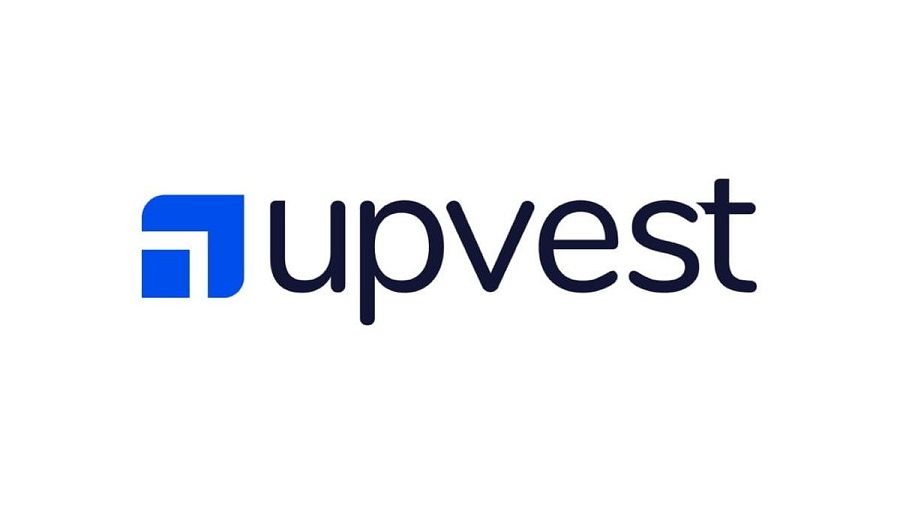 Asset Token startup Upvest received $ 1 million in funding to develop a tool for predicting transaction fees on the Ethereum network.
Asset Token startup Upvest received $ 1 million in funding to develop a tool for predicting transaction fees on the Ethereum network.
Investments were provided by the European Regional Development Fund through the ProFIT program of Investitionsbank Berlin (IBB). The solution will help to set the most appropriate commissions and reduce overall transaction costs.
“Transactions with an increased commission hurt affordably, especially when the number of operations is growing. If the commission is set lower than necessary, then it is likely that the transaction will not be processed and included in the next block, ”the Upvest statement said.
To solve this problem, the startup has developed a special engine that analyzes the parameters of the Ethereum network and issues the recommended transaction fee. It uses machine learning technology and is available as an API.
The engine collects “signals” and network data in real time, including the number of unconfirmed transactions and the number of active miners, and determines the recommended size of the commission.

According to Upvest, using the solution can increase efficiency by 18% – that is, make transactions cheaper and speed up their processing time.
“Our customers mainly use the engine to issue tokens and to distribute them on the secondary market between investors. Since the technology is independent of the use case, exchanges can just as easily use it”, – the statement said.
Coca-Cola vending machines in Australia and New Zealand will accept cryptocurrencies
10.06.2020

Coca-Cola vending machines in Australia and New Zealand will soon start accepting cryptocurrencies as part of a partnership between Coca-Cola Amatil Asia Pacific and Centrapay.
Jerome Faury, CEO of cryptocurrency company Centrapay, said that the Sylo Smart Wallet platform will solve the problem of integration difficulties and poor user experience, which often become obstacles to the introduction of new technologies, such as digital identification and crypto assets.
Centrapay says its platform “helps brands connect directly with customers and increase sales revenue and productivity for sellers.” Coca-Cola Amatil customers will be able to use Sylo Smart Wallet to pay for drinks at more than 2,000 Coca-Cola vending machines in New Zealand and Australia with a payment sticker with a QR code.
“Now that we have shown how this can work in Australia and New Zealand, we strive to grow our business globally. We have already begun working in North America and will be guided by the American market for introducing innovations, ”Fori said.
According to Centrapay, due to the coronavirus pandemic, people are less likely to use cash to pay for goods and services. The company believes that due to the possibility of payments in cryptocurrencies, people will be able to touch the device less, which is important in the current conditions. Many vending machines across Australia already accept contactless payments.
This initiative is not the first step of Coca-Cola in the cryptocurrency and blockchain industry. In the fall, it became known that more than 70 franchise companies Coca-Cola Company around the world will be able to use the SAP solution developed on the blockchain for supply chain management.
Conspiracies, scientists and religion. Who is Satoshi Nakamoto?
09/06/2020
 There are many theories about who could create the first cryptocurrency. Some of them seem absurd, others seem believable. However, so far none of them has received conclusive evidence.
There are many theories about who could create the first cryptocurrency. Some of them seem absurd, others seem believable. However, so far none of them has received conclusive evidence.
Each movement has an iconic face. Gandhi led the Indian Independence Campaign, Professor Xavier was the driving force behind the X-Men, and Rosa Parks led African-American rights activists. In the case of Bitcoin, decentralization has become one of the most important principles of movement. Therefore, no one knows or speaks publicly who founded the currency: this is not an accident.
Bitcoin and blockchain were created by a person or group of persons under the pseudonym Satoshi Nakamoto. In December 2017, when the price of BTC reached $ 20,000, Nakamoto took 44th place in the list of the richest people in the world. There are dozens of legends and rumors, new fan theories are constantly appearing. But over ten years there has not been a single conclusive evidence of who the mysterious creator of Bitcoin is.
Satoshi was not just a brilliant technologist, but also an outstanding marketer. In 2008, people were depressed because of the situation in the world, and they needed an alternative to recover from financial losses. At this time, bitcoin appeared. It became a reaction to the collapse of the business: the article “Bitcoin: a peer-to-peer electronic money system” was published a month after the crisis began, in October 2008.
Satoshi served Bitcoin for three years, and then “moved on to other things.” Communication with Satoshi ended in 2011. The last thing he said in a letter to another Bitcoin developer, Gavin Andersen:
“I would like you to stop talking about me as a mysterious shadow figure, the press is turning it into a pirate currency. Perhaps instead it would be better to talk about an open source project and pay tribute to the developers; it helps motivate them.”
Faketoshi
The brightest candidate for the role of Satoshi Nakamoto is an Australian entrepreneur, programmer and scientist Craig Wright. In 2015, he burst onto the scene, saying that in fact Satoshi is two people, Wright himself and his colleague Dave Kleiman. Kleiman died in 2013 and cannot confirm or deny this information.
Wikileaks later revealed that Craig is not who he claims to be. Wright tried to present his old post as proof that he developed cryptocurrency. The irony is that the word “cryptocurrency” was added to the post much later. The crypto community has found a lot of evidence of Craig’s lies.
Dorian Nakamoto
In 2014, Leah McGrath Goodman of Newsweek published an investigation according to which the creator of Bitcoin is California resident Dorian Nakamoto, a 64-year-old retired Japanese-American physicist and well-educated engineer. Dorian agreed to speak with the journalist only in the presence of police officers. He answered evasively, and then declared:
“I am no longer involved in this and cannot discuss it. <…> It was passed on to other people. They are responsible for this now. ”
Later, he made a statement, where he said that he misunderstood the journalist’s questions. Dorian’s statements emphasize that he was embarrassed when Goodman asked questions, and that his comment “I am no longer involved in this” was taken out of context. The community fell in love with Dorian and collected more than $ 1 million in donations to him.
Hal Finney
The first Bitcoin transaction was sent to Hal Finney. He received 50 BTC in January 2009. A Libertarian and a member of the cipherpunk community, Finney seemed like an ideal candidate for the role of inventor of Bitcoin. The appearance of Dorian Nakamoto in the neighborhood, and they lived in the same town, added fuel to the fire. In May 2020, two news refuted the involvement of the programmer in the creation of the first cryptocurrency. Firstly, it worked on a Windows system. Secondly, Finney was developing a Bitcoin client for Mac OS for Satoshi Nakamoto.
Company scam
One of the most popular theories is that Satoshi Nakamoto is a combination of the first letters of the Samsung-Toshiba-Nakamichi-Motorola company names. Proponents of this theory say that bitcoin was created with the aim of fraud. There is no evidence.
Was there a boy?
Satoshi Nakamoto is an almost religious figure. Everyone can proclaim himself to them. Satoshi is at the same time everything and nobody. Most religions, nations, institutions and associations have a history of origin, for example, the book of Genesis or the history of the enlightenment of the Buddha. These origin stories are not necessarily accurate in fact; they exist more like archetypal stories, myths, or images. In fact, one of the ideas of Bitcoin is to free the world from idolatry.
Chainalysis will begin tracking public transactions in the Dash and Zcash blockchains
09/06/2020
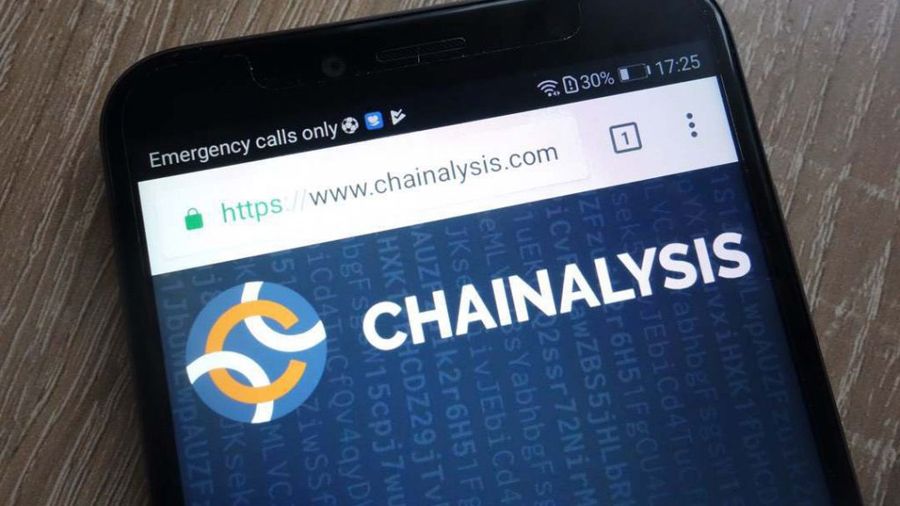 Chainalysis KYT and Reactor tools will allow you to track most of the open transactions with anonymous cryptocurrencies Dash and Zcash.
Chainalysis KYT and Reactor tools will allow you to track most of the open transactions with anonymous cryptocurrencies Dash and Zcash.
As Chainalysis executives said on their blog, users of these tools will be able to check for cleanliness of DASH and ZEC. The daily trading volume of these cryptocurrencies in total is about $ 1.5 billion.
Dash and Zcash are believed to have a high level of privacy, but anonymity features are not used in most transactions. DASH has a PrivateSend function, which is a built-in mixer that confuses the transaction trace to hide the original address. Zcash uses zk-SNARKS technology, which encrypts the data of the sender, recipient and their balance. According to Chainalysis, this technology provides higher anonymity compared to mixers. Despite the confidential nature of DASH and ZEC, with the help of Chainalysis KYT and Reactor tools, users will be able to find out if these cryptocurrencies were used for money laundering, terrorist financing or other illegal actions.
Chainalysis explained that even in some transactions with the PrivateSend option activated, you can associate inputs and outputs, as well as determine the wallet address from which the coins were originally sent. PrivateSend greatly enhances user privacy, but Chainalysis does not preclude successful research. According to experts, PrivateSend is used only in 0.7% of transactions with Dash, and only about 9% of transactions with this cryptocurrency are mixed. As for Zcash, 14% of transactions are performed using encrypted pools, while only 0.9% of transactions with ZEC are fully encrypted.
The above means that most transactions with both coins are made without using all the functions of the protocols that ensure confidentiality. Accordingly, in such cases, Chainalysis services will allow you to find out the transaction amount, and often to track the address of the sender or recipient.
In April, Chainalysis reported that cryptocurrencies are increasingly being used to access prohibited content. However, cryptocurrency enthusiast Andreas Antonopoulos compared Chainalysis to “arms manufacturers and cage camp companies.” In his opinion, such analytical companies provide information that violates the civil rights of millions of people.
Norwegian salmon producer Kvarøy Arctic joins IBM Food Trust blockchain platform
08/06/2020
 Norwegian salmon producer Kvarøy Arctic joins the IBM Food Trust blockchain platform to increase supply chain transparency and prevent fraud in the seafood industry.
Norwegian salmon producer Kvarøy Arctic joins the IBM Food Trust blockchain platform to increase supply chain transparency and prevent fraud in the seafood industry.
Kvarøy Arctic, a Norwegian farm-raised salmon producer, has joined the ranks of companies that have joined the IBM Food Trust, a blockchain-based supply chain tracking platform. Kvarøy Arctic supplies Whole Foods restaurants and retail stores in the US and Canada.
Now the company will use blockchain to provide consumers with detailed information about the origin of its products. IBM Food Trust CEO Raj Rao called the partnership “an important step in promoting transparency and responsible production in seafood supply chains.”
Using a QR code, Kvarøy Arctic customers will be able to access comprehensive information and images detailing salmon production conditions, including fish age, date of harvest, and information about the product’s delivery route from the farm to the supermarket.
The salmon producer is also working with the BioMar feed supplier to add its supply chain to the project. Kvarøy Arctic reports a sharp increase in demand for fresh seafood in the United States over the past three months – deliveries are twice the expected volume.
IBM Food Trust spokeswoman Espen Braathe said premium products are much more likely to be scammed than other consumer products.
“When demand for premium foods grows, the benefits of fraud with them also increase,” he said.
A study published by environmental nonprofit organization Oceana found that a third of all seafood in the United States is mislabeled, resulting in consumers often paying a high price for low-quality products.
“Blockchain is the future when it comes to ending fraud in the seafood industry,” said Kvarøy Arctic CEO Alf-Gøran Knutsen. “Technology provides the necessary level of detail in supply chain tracking that helps us reduce food waste.”
In April, it became known that the “fruit giant” Dole Food Company will launch an supply chain tracking system on the IBM blockchain for agricultural products by 2025. In the same month, Nestlé and the nonprofit Rainforest Alliance announced they were using the IBM Food Trust blockchain platform to track Zoegas coffee supply chains.
Philadelphia Fed: “Central Bank cryptocurrencies can crowd out commercial banks”
08/06/2020
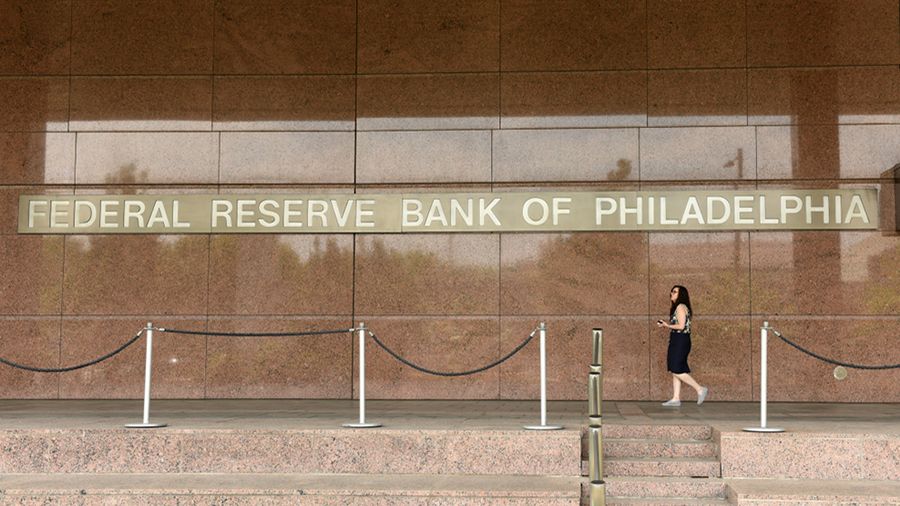 According to researchers of the Federal Reserve Bank of Philadelphia, state cryptocurrencies can change the role of commercial banks and force them out of the financial system.
According to researchers of the Federal Reserve Bank of Philadelphia, state cryptocurrencies can change the role of commercial banks and force them out of the financial system.
The Philadelphia Fed released a research paper, Central Bank Digital Currency: Central Banking for All ?, which outlined the implications of using state-owned cryptocurrencies. The researchers focused on the potential competition of the cryptocurrency of the Central Bank with the traditional role of commercial banks in the transformation of short-term deposits into longer-term loans.
“The launch of the state cryptocurrency can contribute to a fundamental shift in the architecture of the financial system, and initiate the birth of a central bank concept that is“ open to all, ”the document says.
The study was conducted by the Fed in collaboration with the University of Pennsylvania and the University of Chicago. Researchers have studied the consequences of issuing cryptocurrencies of the Central Bank and how this can affect financial intermediation. In particular, the role that state-owned cryptocurrencies play in “giving consumers the opportunity to have a bank account directly with a central bank,” and how this will affect the operation of commercial banks, was examined.
The transformation of short-term deposits into longer-term loans refers to the practice when financial institutions borrow money for shorter periods than they issue loans. This is often done with the help of deposits of depositors by converting this financing into long-term loans, such as mortgages. The role of commercial banks is to meet the needs of lenders and borrowers.
This process can have unpleasant consequences, for example, in case of panic in the markets or panic withdrawal of bank deposits, when all depositors try to withdraw money immediately, or when money markets suddenly run dry due to the fact that lenders no longer provide each other with short-term loans.
The document says that a set of appropriations received through private financial intermediation (commercial banks) can also be obtained using state cryptocurrency, provided that competition with commercial banks is allowed and investors do not panic. However, the document identifies related issues.
“If competition from commercial banks worsens, for example, due to some budget subsidization of central bank deposits, the Central Bank should be careful to avoid chaos when transforming short-term deposits into longer-term loans,” the document says.
In other words, if a state-owned cryptocurrency really changes the role of commercial banks, then there are concerns that central banks might harm money markets.
The document also notes that “the rigidity of the central bank’s contract with investment banks” holds back the panic. Thus, if depositors start making deposits exclusively with the central bank, it can ultimately become a monopolist, taking deposits from the commercial banking sector.
In February of this year, Lael Brainard, member of the Board of Governors of the US Federal Reserve, said the institution was more loyal to the idea of issuing digital currency by the Central Bank.
Bitcoin mining difficulty decreased by 9.29%
05/06/2020
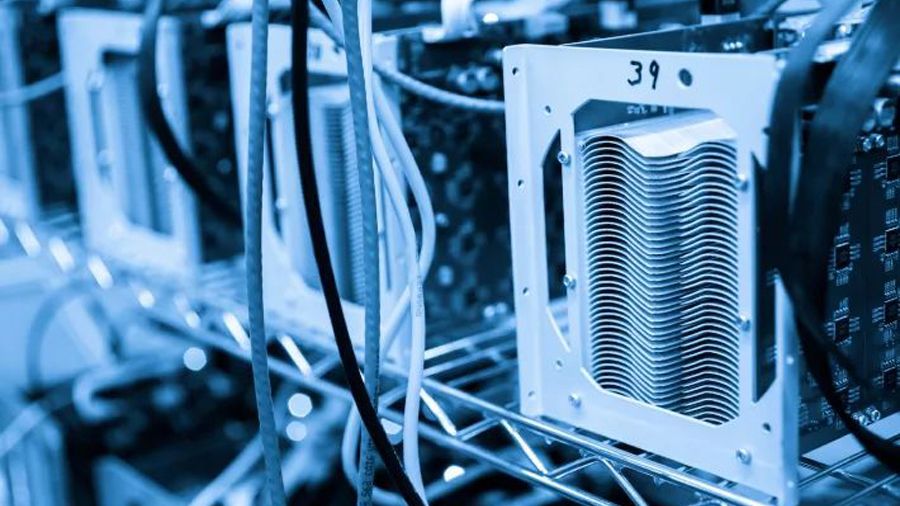 According to CoinDesk Research, on June 4, Bitcoin mining difficulty decreased by 9.29% to 13.7 trillion units, reaching the January low of this year.
According to CoinDesk Research, on June 4, Bitcoin mining difficulty decreased by 9.29% to 13.7 trillion units, reaching the January low of this year.
Recalculation of mining difficulty occurred at block 633 024 at 12:30 UTC. This was the eighth largest decrease in BTC mining complexity in its entire history. After bitcoin halving on May 11, the complexity of BTC mining was recounted for the second time. On May 20, at the first recount, mining complexity fell by 6%. The current situation is beneficial for miners with access to cheap electricity, as a reduction in complexity can return profitability to old equipment.
Despite the drop in complexity, the hash of the network has begun to increase in recent days. This is due to the fact that with the onset of the rainy season in China and a decrease in the cost of electricity to $ 0.03 per kWh, miners began to connect new equipment or return old equipment to work. Since May, the two largest manufacturers, Bitmain and MicroBT, have already begun shipping AntMiner S19 and WhatsMiner M30S devices. This means that the next recount is likely to be positive, and complexity will again move to growth.
The complexity of mining in the Bitcoin network changes every 2016 blocks to maintain an average ten-minute block creation interval. Increasing the power of miners increases the hash rate of the network, and the complexity automatically increases. According to Blockchain.com, on May 27, the average seven-day hash rate dropped to 90 EH / s. Until May 20, the average hash rate was 108 EH / s. In the period from May 20 to May 27, it took more than 12 minutes to release the block. Accordingly, the growth of hash after May 27 allowed to reduce the time to create a block to 11 minutes.
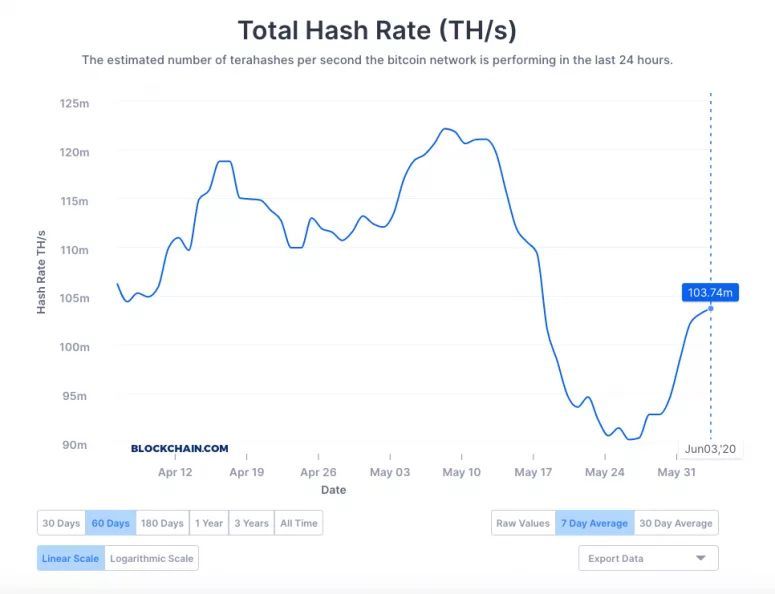
Over the past two weeks, the number of unconfirmed transactions in the Bitcoin network has significantly decreased, as a result, the median commission size has decreased by 78%.
Ethereum 2.0 developer talks about plans to deploy Serenity update
05/06/2020
 ETH 2.0 developer Danny Ryan has published an article detailing the upcoming Serenity update. He also answered Reddit users’ questions about the update.
ETH 2.0 developer Danny Ryan has published an article detailing the upcoming Serenity update. He also answered Reddit users’ questions about the update.
According to Ryan, ETH 2.0 aims to change Ethereum and make it much more efficient, secure and scalable for “high transaction volumes.” Currently, the network can process up to 12 transactions per second, and network congestion slows down transfers and increases fees.
Ryan said that ETH 2.0 will be deployed in four main phases. In phase 0, Beacon Chain will be launched based on the PoS consensus algorithm and validator nodes will be presented. Any user with 32 ETH for staking will be able to expand the node and take part in adding blocks.
“The goal of phase 0 is to reach a consensus with hundreds of thousands of validators distributed across thousands of nodes around the world,” Ryan writes.
In phase 1, “sharding” will appear – a complex implementation that “breaks down” the Ethereum network into thousands of separate chains, providing faster data entry and transaction confirmation. Beacon Chain validators will receive random short-term tasks to build and test shard chains. First, it is planned to launch 64 shards, and the total amount of data available for the system will be in the range from 1 to 4 MB / s.
In phase 1.5, the current Ethereum core network will be integrated with the ETH 2.0 consensus mechanism as a shard. Applications will gradually appear on the network, and a much more powerful system for work will become available to developers.
The final step — phase 2 — will be to add states and capabilities to trigger more shards. As Ryan notes, there are many options for what form this phase can take, and now the developers are discussing research and prototyping for this phase.
“Now there is rapid progress in turning abstract ideas of interaction between shards into specific specifications for discussion and, ultimately, into prototypes,” Ryan notes.
The developer also added that there are many different clients and ETH 2.0 tools that are currently being tested.
Questions on Reddit
Last week, Ryan held a session of answers to questions from Reddit users, during which he talked about the stages of ETH 2.0 deployment and the upcoming features. In addition, he answered questions about network security and the possible centralization of stakers.
Ryan said that Ethereum developers are almost entirely focused on launching phase 0. However, the development of phase 1 also continues to progress and is expected to be deployed shortly after the launch of phase 0.
According to Ryan, microcomputers such as the Raspberry Pi 4 will be able to work with phase 0, but implementing phase 1 will require more processing power. He also noted that a “special shard for DeFi is“ quite possible ”, and acknowledged that some applications could theoretically work better on separate shards.
Some members of the community noted that earlier developers talked about the concept of ETH 3.0, which will include updating some components of Ethereum using zk-Snarks to provide more privacy and network security. Ethereum co-founder Vitalik Buterin commented on the idea of such an update:
“I am currently embracing the idea of not changing the current structure of Ethereum after deploying ETH 2.0. I stand for gradual change. ”
Crypto Rating Council: “TRX, DOT and CKB can be recognized as securities”
04/06/2020
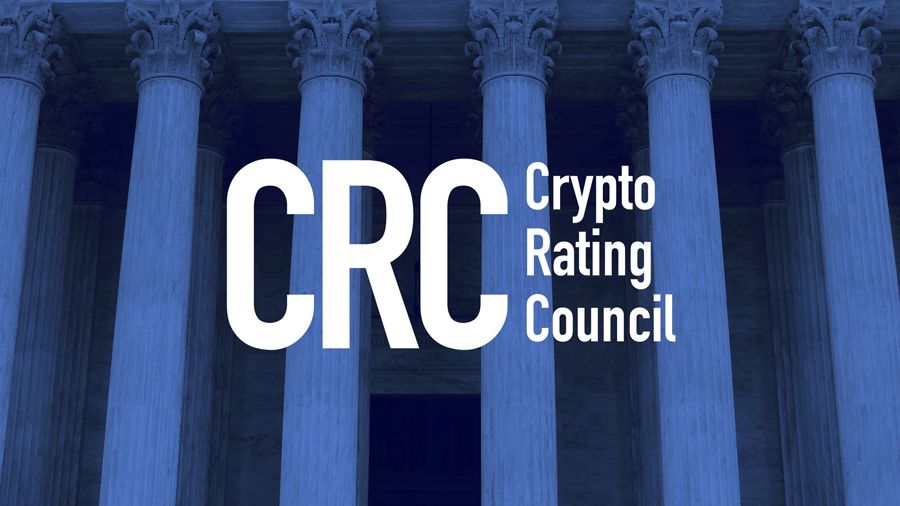
According to the Crypto Rating Council (CRC), regulators are likely to recognize TRX, DOT, and CKB cryptocurrencies as securities.
CRC was founded last year by Coinbase, Circle and Genesis Capital. The organization analyzes the characteristics of cryptocurrencies and estimates the likelihood of them falling into the category of securities using a five-point system. A top score suggests that a digital asset has all the attributes of a security. Ratings are based on the Howie test and may vary depending on the key parameters of digital assets.
According to CRC member Juan Suarez, the organization does not provide legal advice. She seeks to clarify the approach of the US Securities and Exchange Commission (SEC) and the courts to regulate digital assets, and how appropriate it is to apply securities laws to them.
In mid-April, CRC conducted a preliminary analysis of several cryptocurrencies. The organization came to the conclusion that regulators can recognize cryptocurrencies of Tron, Nervos and Polkadot projects as securities – these assets scored 4.75 points out of five. Crypto assets Cosmos, Stellar and EOS received 3.75 points. However, final estimates have not yet been published and may differ from the initial results of the study.
When compiling the estimates, all available information was taken into account: technical documentation, posts on social networks, data in the GitHub repositories, as well as interviews with CRC. In addition, CRC discussed the information received about the projects with independent lawyers, after which the project was assigned a specific score. However, it is not known how carefully these estimates have been worked out. It should be borne in mind that they can change as projects develop and new information emerges from them. For example, a preliminary ranking of Polkadot was made before the launch of its main network. In the future, the transfer of control over the network to the community may change the project rating.
In April, Nervos Network developers interacted with CRC on the characteristics of the CKB cryptocurrency. Initially, the organization classified the distribution of CKBs as dividends, with the Nervos team claiming that CKBs are utility tokens, not share tokens. Nervos executives said the CKB rating will be revised based on new data.
Canaan introduced new miners for bitcoin mining
04/06/2020

Shares of the company went up by 17%, however, it is still several times cheaper than the price of the initial offer
On June 2, Canaan, the Bitcoin mining equipment manufacturer, introduced the new AvalonMiner 1146 Pro device, as announced on its Twitter account. The miner is capable of generating a hashrate of 63 TH / s, the energy consumption is 3276 watts.
Representatives of the company noted that the updated model will increase the efficiency of cryptocurrency mining. The weight of the device is 14.5 kg, the warranty will last for 180 days.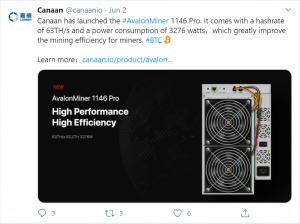
Canaan stock quotes reacted positively. On June 2, they grew by 17%, from $ 2.2
to $ 2.5, at the moment rising to $ 3. However, it is 72% lower than the initial offer price of $ 8.99, held in November.
In the first quarter of 2020, demand for miners decreased, which caused Canaan to incur a loss of $ 5.6 million. The company submitted financial statements according to which revenue from January to April amounted to $ 9.4 million, which is 44.6% higher than last year. At the same time, expenses exceeded $ 15 million. This is due to the fact that in order to increase sales, Canaan reduced the price of devices by almost 2 times.
KuCoin Exchange Introduces Chainalysis KYT and Reactor to Track Transactions
03/06/2020

KuCoin cryptocurrency exchange announced the introduction of Chainalysis KYT and Reactor to track suspicious transactions and comply with regulatory requirements.
KuCoin executives said the Chainalysis KYT tool, developed by Chainalysis, an analytic firm, will enable real-time transaction monitoring to prevent money laundering, terrorist financing, and other illegal cryptocurrency transactions. In addition, KuCoin will use the Chainalysis Reactor tool to track suspicious activity on the exchange.
In addition to these services, KuCoin has developed its own internal system for tracking high-risk transactions in the early stages to protect users’ digital assets. In April, KuCoin partnered with Onchain Custodian Custodian Service and Lockton Insurance Company to further protect client crypto assets.
KuCoin Global CEO Johnny Lyu said working with Chainalysis will create a safe trading environment for traders. It is not only about providing infrastructure to the blockchain ecosystem, but also about ensuring strict compliance with the rules of regulatory bodies from different countries.
Chainalysis Sales Director Jason Bonds, in turn, noted that the company is pleased to partner with cryptocurrency exchanges, for which user safety and compliance with KYC / AML procedures are priority tasks. In addition, partnerships with Singapore-based KuCoin will expand Chainalysis’s presence in the Asia-Pacific region.
Chainalysis tools are used by different sites. In March, Paxful’s P2P platform also introduced Chainalysis Reactor and KYT, although, prior to working with Paxful, Chainalysis doubted the security of P2P platforms due to low user disclosure requirements. In addition, last year Chainalysis KYT introduced Bittrex and Bitfinex cryptocurrency exchanges.
Microsoft, IBM and Hyperledger create IWA alliance to develop tokenization standards
03/06/2020
 Microsoft, IBM and Hyperledger formed the non-profit InterWork Alliance (IWA) to create international standards for tokenized ecosystems.
Microsoft, IBM and Hyperledger formed the non-profit InterWork Alliance (IWA) to create international standards for tokenized ecosystems.
The alliance was led by Microsoft’s chief architect Marley Gray (Marley Gray) and former CEO of Ethereum Entrepreneurship Alliance Ron Resnik (Ron Reznik). The organization includes more than 28 companies working in the field of blockchain, finance and technology. These include Microsoft, Chainlink, Hyperledger, IBM, Accenture, and NASDAQ.
According to IWA executives, startups developing tokenized ecosystems are focused on individual solutions and promoting their platforms. Nevertheless, the creation of international standards that clearly define the concept and operation of smart contracts will facilitate the collective implementation of distributed business models.
The InterWork Alliance intends to develop three different systems of international standards. The Token Taxonomy Framework will introduce a common language and toolkit. The InterWork Framework will help you put together a variety of contracts using the standard guidelines provided by IWA. Thanks to the “System Analytics” (Analytics Framework), firms can analyze various contracts, use the services of artificial intelligence and reporting on market data.
Hyperlinger Brian Belendorf (Brian Belendorf) said that standards play a crucial role in the development of any technology.
To create distributed applications and data exchange services, a certain structure is needed that will allow companies to work at the business level, regardless of the use of technology. Director of IBM WW Digital Asset Labs Nitin Gaur emphasized that such an alliance with a neutral attitude to all platforms will change the “landscape tokenization” and the entire cryptocurrency industry.
Blockchain and cryptocurrency standards are being developed by other organizations. Last summer, the Institute of Chartered Public Accountants (AICPA) proposed a new set of standards for evaluating blockchain-based audit data.
Ethereum Classic blockchain hosts Phoenix hard fork
02/06/2020
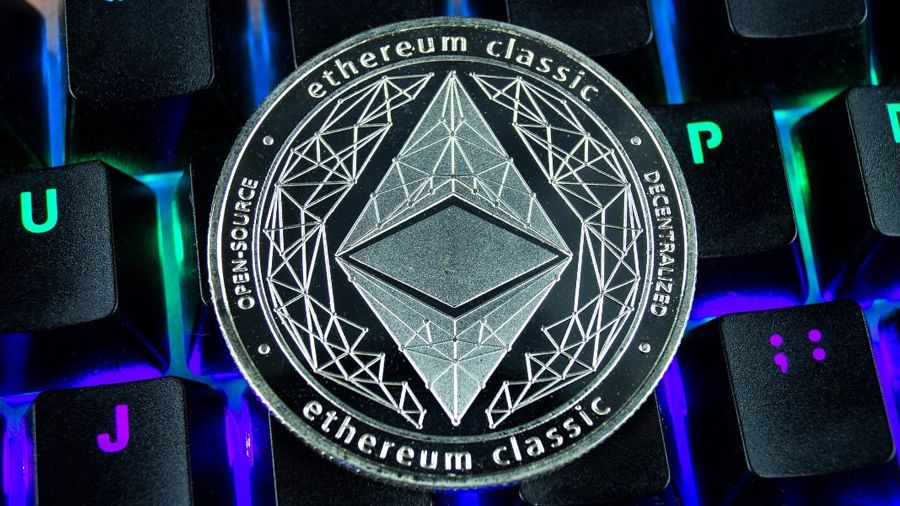 Ethereum Classic successfully activated the Phoenix hard fork on block 10 500 839. This is the third hard fork on the ETC blockchain within a year.
Ethereum Classic successfully activated the Phoenix hard fork on block 10 500 839. This is the third hard fork on the ETC blockchain within a year.
ETC Labs Core Technology Coordinator Stevan Lohja said that Phoenix has features implemented in the latest update on Ethereum – Istanbul. This will ensure the technical compatibility of tools and use cases for the Ethereum and Ethereum Classic networks, while preserving their features.
Hard fork developers Atlantis, Agharta and Phoenix will conduct further research on how to further “bring together” the ETC and ETH blockchains. According to Lohja, most customers have already switched to Phoenix, and the number of those who remained on the old version is gradually decreasing. Many cryptocurrency exchanges, wallets and infrastructure services are also in the process of synchronization.
After the upgrade, Core-geth, OpenEthereum, and Multi-geth clients synchronized with the new ETC blockchain. Hyperledger Besu, the relatively new Ethereum Classic client, out of sync during the activation of the hard fork, however this will not negatively impact the network. The Parity Ethereum client is no longer supported by the Parity Tech developer and has been transferred to the OpenEthereum project managed by the community. The Multi-geth client is also under community control. Therefore, for security reasons, developers recommend that site holders switch to Core-geth.
Recall that in September, the Atlantis hard fork was successfully activated on the Ethereum Classic blockchain, and the Agharta hard fork was held in October to increase the level of interaction with the Ethereum network.
OMG Network Launches Beta Level 2 Network to Scale Ethereum
02/06/2020
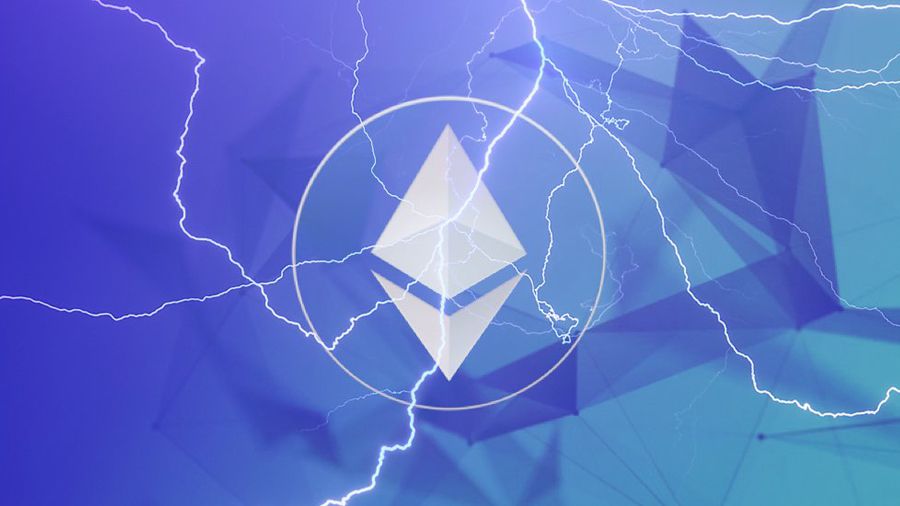 OMG Network developers have introduced a beta version of the “add-on” to scale the Ethereum blockchain to several thousand transactions per second.
OMG Network developers have introduced a beta version of the “add-on” to scale the Ethereum blockchain to several thousand transactions per second.
OMG Network was established in 2017 under the name OmiseGO. In August of that year, she held an ICO and became one of the first “unicorns” in the industry. But the “cryptozyme” of 2018 crippled the capitalization of the project and the development dragged on.
OMG Network Technical Director Kasima Tharnpipitchai said the solution uses the More Viable Plasma (MoreVP) specification to increase Ethereum throughput. It scales transactions with ETH and ERC-20 standard tokens, grouping them and sending them through a set of smart contracts.
These bundled transactions are verified and verified on a decentralized network. It is the “bundling” of transactions that provides high network bandwidth, in which it will be possible to conduct several thousand secure transactions per second, and commissions for end users will be reduced three times from the current cost.
OMG Network developers have presented a trial version of a web wallet with which users can enter the network, make transactions and return funds to the Ethereum blockchain. He also announced the OMG Network Block Explorer service for tracking transaction history, wallet addresses and other information. With the release of further updates, it is planned to introduce OMG staking. Project management has warned users that OMG Network is in beta and may have network problems, so users are advised to exercise caution.
One of the first “residents” of OMG Network may be Tether, which produces the largest stablecoin USDT by capitalization. Due to the transfer of part of the transactions to the second level, the load on the main network of Ethereum should decrease, as well as the size of the fees.
“Thanks to the switch to OMG Network, we will reduce costs, increase speed and reduce the load on the main network of Ethereum,” said Tether Technical Director Paolo Ardoino.
According to Ardoino, in the near future, Tether support based on OMG Network will appear on the Bitfinex exchange, which will allow traders to “respond faster to trading opportunities.”
At the moment, it is transactions with Tether that occupy the lion’s share of operations in the Ethereum blockchain. According to the estimates of the ETH Gas Station service, over the past month, the total volume of commissions for transactions with USDT in the ERC-20 format amounted to $ 1.85 million.
OMG Network is built on Plasma technology, similar to the Lightning Network, which has opponents. Recently, the Ethereum community has switched to waiting for the launch of the Optimism project. In addition, in November, a startup BloXroute Labs introduced a solution to reduce the average time to create a block and distribute it on the Ethereum blockchain to 172 milliseconds.
Study: “Transactions in Ethereum are easier to deanonymize than in Bitcoin”
01/06/2020
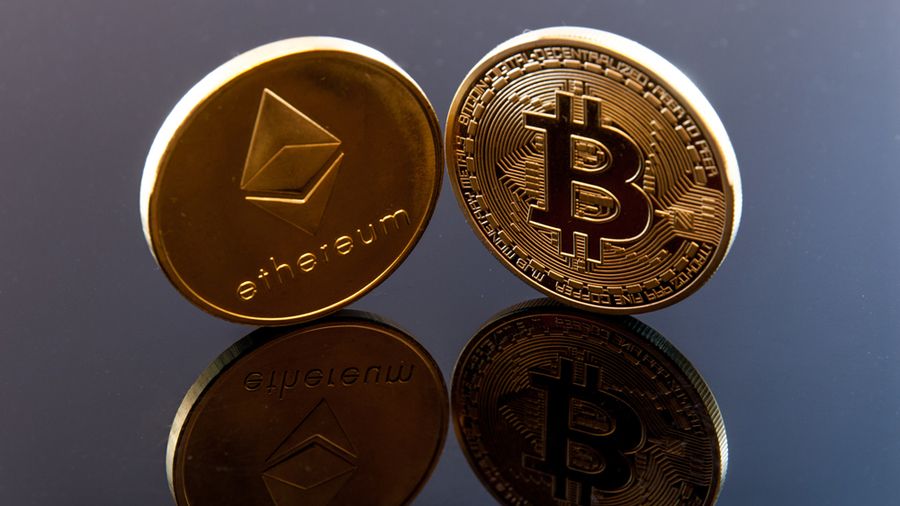
Hungarian researchers believe that transactions on the Ethereum blockchain are less confidential than on Bitcoin. The reason for this is the Ethereum Domain Name System (ENS).
The study was conducted by three Hungarian educational institutions: the Institute of Computer Science and Control (SZTAKI), the University of Lorand Eötvös and the University of St. Istvan, as well as the Canadian company HashCloack, led by the developer Ferenc Béres. The researchers analyzed the features of Ethereum, which make it easier to track transactions on this network compared to Bitcoin. The Ethereum account-based model is more open due to address reuse.
“The account-based model increases the likelihood of protocol reuse of addresses. Therefore, from the point of view of anonymity, Ethereum-based cryptocurrencies may be inferior to Bitcoin and other UTXO-based digital currencies ”
Ethereum features an Ethereum Domain Name System (ENS) that maps addresses to .eth domains that are easy to read. Researchers managed to find 890 of these domains hosted on open profiles on Twitter. This may already be enough to reveal whether the owners of these addresses committed compromising actions. For example, about 10% of these wallets were used on gambling platforms, and 5% were used to make payments on resources for adults. According to Beres, ENS has become a “starting point” that allows users to be identified by linking signatures to time zones, as well as through gas prices and direct transfers between wallets. In these ways, you can disclose up to 17% of transactions.
Researchers also found that 7.5% of users of the ETH Tornado Cash mixer received coins for the same wallet from which they started mixing. This means that the efforts of these users who tried to mix transactions turned out to be futile. Analysts have focused on the weaknesses of Ethereum, but some of the tricks can be applied to UTXO-based cryptocurrencies. However, in this case it will be much more difficult to deanonymize transactions.
Last year, scientists from Stanford University introduced a “fully decentralized and confidential payment mechanism” on the Ethereum network to encrypt account balances, deposits, transfers, and coin withdrawals from wallets.
How to store cryptocurrency correctly
01/06/2020
 Digital money is hard to make and easy to lose. We tell you where it is best to keep your coins, so as not to lose them by mistake or because of intruders
Digital money is hard to make and easy to lose. We tell you where it is best to keep your coins, so as not to lose them by mistake or because of intruders
The “crawl” strategy is widespread in the crypto industry: investors buy coins for the long term and do not sell, regardless of market fluctuations. But digital money is easy to lose, even if you do not conclude risky transactions. One of the main questions of everyone who is just starting their acquaintance with the field of cryptocurrencies is how to store them. There are several ways, and each of them has its pros and cons.
Exchange
The easiest and most understandable way to store cryptocurrency: keep it on the exchange. When creating an account, each user has his own wallet. It supports all coins that are traded on the site, they always have quick access. You can sell or buy. Also one of the advantages of this option: the ability to easily restore access to your account.
In contrast, there is a major minus – the problems of exchanges with security. From this point of view, cryptocurrencies remain in the era of the Wild West, because not a single large trading platform has been left without the attention of hackers. Even the leaders of large exchanges urge not to keep funds on them.
“Please do not store more cryptocurrencies on exchanges than you need to trade. Use Ledger and Trezor (hardware wallets), DEX (decentralized exchanges) – not a panacea, look at The DAO. Open source only says that exploits will be detected earlier (probably by bad guys), ”wrote Kraken CEO Jesse Powell on Twitter.
In 2018, ICORating found that most exchanges (54%) have various security issues. Over the past two years, the situation has improved. Now it’s hard to imagine a site that doesn’t offer to install two-factor authentication. But hackers are improving their skills. Therefore, the exchange is worth storing only the amount that is not afraid to lose.
The exchange can go offline at any time. For example, on March 13, when the price of bitcoin fell to a local minimum of $ 3800, the BitMEX trading platform was not available for trading. The user may lose access to their funds at the most inopportune moment.
An indicative case occurred with customers of the Canadian exchange Einstein. Last fall, she owed more than $ 12 million to customers, while she only had $ 45,000 of “solid assets”. One trader said the company owed to him was $ 535,000, according to another lender, several million dollars.
The choice of exchange must be approached with extreme caution, because there is always a risk of getting into scammers.
Hardware wallet
The safest way to store cryptocurrencies is hardware wallets (devices that often look like a USB flash drive). But here everything is not so simple and you need to be extremely careful. For example, in December last year, Kraken experts found that a KeepKey wallet can be cracked in 15 minutes, and an attack will cost attackers $ 75.
However, this method is still more reliable, since for hacking criminals need to get physical access to the wallet. If it is stored in a safe place, the risk can be minimized.
Last year, the hacking of the largest trading volume Binance exchange doubled the sales of Ledger wallets. But they often find vulnerabilities or errors in work.
When choosing a hardware wallet as an option for storing your funds, you need to remember that losing a PIN code will result in a loss of cryptocurrency. Also minus hardware wallets – the ability to lose or ruin the physical way. For example, at home it can be broken by children or a dog.
Online Wallets
This method has similarities with the option of storage on the exchange. The cryptocurrency does not belong to you, and its fate depends entirely on the service on which it lies. Extremely convenient and unsafe way. Hackers have a ton of options on how to steal funds. For example, hacking a user’s account, the service itself or creating a phishing page. You need to be extremely careful and not keep a large amount of funds in an online wallet.
Online wallets are divided into hybrid and traditional ones, depending on how private keys are stored. In wallets of the first type, separate storage of keys using multi-signature is used, of the second – private keys are on the service, and only a backup copy is available to the user.
The main advantage of hybrid wallets is that developers do not have full access to user coins. Payments from such a service cannot be made without the joint participation of the client and the company. This increases the level of protection. On the other hand, the loss of a secret phrase will be fatal, in which case you can forget about cryptocurrency.
One of the most famous online wallets is Blockchain.com. In May, the company announced the addition of support for cryptocurrency interest accounts. They can be used to store bitcoin, the annual yield will be 4.5%.
Another popular wallet is BitGo. It is considered safe, as each transaction requires two signatures. The platform does not have full access to user coins. You can also work with it only after connecting two-factor authentication.
Local wallet
A universal way to store funds is a local wallet. These are applications for PC or mobile devices, extensions for browsers. Finding such a wallet is easy: just go to the official website of the project and download the appropriate option. But this method also has its own difficulties.
The option for mobile devices is suitable for those who need constant access to their coins for transactions. But the cryptocurrency will not be stored on the smartphone, so access to it can be obtained only with the Internet. Even if the device is lost, digital money can be returned.
A local wallet on a PC makes sense only for coins that use Proof of Stake in their algorithm – a confirmation of a share. Because to store cryptocurrency in this way, you need to completely download the blockchain of the selected asset. And it can weigh tens and hundreds of GB. In the case of PoS, while there is some amount in cryptocurrency in the wallet and the computer is turned on, the user is credited with a certain amount in digital money. It is this function that should appear in Ethereum 2.0. You can become a network validator by storing from 32 ETH in your wallet.
Theta Streaming Blockchain Platform Launches Updated Theta Network 2.0
29/05/2020

Theta blockchain streaming platform announced the launch of the updated Theta 2.0 network, as well as a partnership with Google. Google Cloud will become one of the corporate validators.
In addition to Google, corporate validators that will confirm transactions on Theta include the Binance cryptocurrency exchange, the Japanese firm Gumi Cryptos, and the Blockchain Ventures venture capital fund. The platform’s management noted that Google is the most preferred cloud computing provider, since after launching Theta 2.0, users will be able to launch sites directly from the Google Cloud platform.
Google Cloud developer Allen Day noted that the blockchain will allow the use of new commercial models that modernize the international digital economy, including the media and the entertainment industry. Theta Labs co-founder and CEO Mitch Liu said that interacting with the Google Cloud in several strategic areas will accelerate Theta’s development and facilitate the use of the platform in various industries.
Today, Theta platform is used for broadcasting e-sports competitions, poker tournaments and major cryptocurrency conferences. In addition, a few weeks before the launch of the updated version of the network, the platform announced cooperation with the South Korean corporation Samsung to launch its application on Android smartphones.
Blockchain is actively used by streaming platforms, allowing you to receive tokens for organizing broadcasts or viewing them. For example, last month, the Refereum platform announced a partnership with Tron, through which gamers and viewers will be able to receive TRX and BTT tokens, and last March, BitTorrent opened up early access to the BitTorrent Live streaming service.
Operations with crypto assets on Samsung smartphones will go through the Gemini exchange
29/05/2020

Gemini has entered into an agreement with Samsung to integrate with Samsung Blockchain Wallet. This will enable owners of a new generation of Samsung smartphones in the US and Canada to trade cryptocurrencies.
According to the Gemini cryptocurrency exchange, this partnership will allow Samsung Blockchain Wallet users to connect to the Gemini mobile application to buy, sell and exchange cryptocurrencies. The exchange said:
“Gemini is the first US cryptocurrency and custodian exchange to partner with Samsung Blockchain. This integration will help make cryptocurrencies available to Samsung Blockchain Wallet users in the US and Canada. ”
The exchange notes that the Samsung Blockchain Wallet is a convenient and secure cryptocurrency wallet that allows users to independently store their cryptocurrencies directly on the Samsung Galaxy phone that supports Samsung Blockchain.
Through the partnership, Samsung Blockchain Wallet users will be able to connect to Gemini, buy and sell crypto assets, view the balances on their Gemini accounts, and transfer cryptocurrencies to the Gemini Custody cold storage for the highest level of security.
In February, it was reported that the new generation of Samsung Galaxy S20 smartphones will support cryptocurrencies and tokens. In addition, in the same month, Samsung announced that it would improve the security of its smartphones to increase the protection of user data related to cryptocurrencies.
CryptoKitties Developer Launches NBA Top Shot Beta
28/05/2020

The company Dapper Labs, which developed the game CryptoKitties, launches a closed beta version of the game NBA Top Shot with non-replaceable tokens (NFT).
Katy Tedman, vice president of marketing and partner relations at Dapper Labs, said the developers worked with the National Basketball Association (NBA) to create the new game. Fans will be able to buy live video streams of NBA games, store them and sell them as collectibles. We are talking about the tokenization of interactive moments of games: videos, photos or data provided by the provider of sports statistics SportRadar.
Users will buy tokens in the form of arbitrary sets of rare gaming moments. They can be purchased with a credit card, bitcoin or ether. Having accumulated a certain set of tokenized fragments from games, players will be able to solve complex problems and even create status attributes at their own discretion. The closed beta version of the game will appear next week.
NBA Top Shot will run on its own Dapper Labs blockchain, Flow, which will make the game accessible even to those who are not familiar with the blockchain. Flow will allow to process a large flow of transactions in case of expanding the user base. This will help to avoid the increase in fees that CryptoKitties players face. Tedman added that the transition from crypto kittens to international sports was a great achievement for the company. The game attracted companies from various industries, including many athletes and other celebrities.
The management of Dapper Labs reported that previously a group of NBA experts had already explored the possibilities of the blockchain, so when the developers presented their initiative to develop a new game, NBA supported this opportunity. The NBA has a clear idea of how to easily introduce blockchain technology to the masses.
Recall that in February, Dapper Labs announced a partnership with the Ultimate Fighting Championship (UFC), in which it was going to issue collectible tokens for fans of mixed martial arts.
Goldman Sachs named 8 reasons not to invest in bitcoin
28/05/2020
 The investment bank held a conference at which it listed a lot of minuses of cryptocurrency. Among them – high volatility of the course, lack of features of a protective asset, use in illegal activities, etc.
The investment bank held a conference at which it listed a lot of minuses of cryptocurrency. Among them – high volatility of the course, lack of features of a protective asset, use in illegal activities, etc.
Bitcoin and cryptocurrencies in general do not belong to the asset class, Goldman Sachs, one of the largest investment banks in the world, said. Today, May 27, the company organized a conference for clients on the current state of the economy, gold and inflation problems. Among other things, the issue of digital money. Materials from this meeting were published by Mike Dudas, the founder of The Block information portal, in his Twitter account.
 Goldman Sachs in their presentation listed a number of reasons why cryptocurrency cannot be classified as an asset. The arguments are as follows:
Goldman Sachs in their presentation listed a number of reasons why cryptocurrency cannot be classified as an asset. The arguments are as follows:
- Does not generate cash flows, like securities;
- Not involved in GDP growth;
- It does not allow diversifying investments due to unstable correlations;
- There is no downward trend in volatility;
- There is no evidence that it can act as a hedge asset against inflation.
A separate point in confirmation of the high volatility in the company indicated a daily drop in the rate of bitcoin by 37%, which happened on March 12. In addition, Goldman Sachs analysts noted that cryptocurrencies can be used to conduct illegal activities. For example, to be involved in the organization of financial pyramids, money laundering, extortion and used in a high-quality unit of account in the darknet.
The company emphasized that, although the issue of cryptocurrencies is limited, the number of digital assets themselves is not. Three of the six leading capitalization coins are “identical clones” of each other. This refers to Bitcoin, as well as Bitcoin Cash and Bitcoin SV, analysts explained.
They added that the crypto industry is still developing, which is why companies working with digital money are at risk of being attacked by hackers. Many users entrust their funds to stock exchanges, which makes them a target for cybercriminals. Representatives of the company cited all the hacks of large trading floors over the past nine years as an example. A total of 44 such incidents were indicated.
In April, the opposite opinion was expressed by Bloomberg analysts. They stated that Bitcoin is being transformed from a speculative crypto asset into a digital version of gold. Reasons: increased interest in cryptocurrency futures and a decrease in volatility.
The non-profit organization Web3 Foundation has announced the launch of the first phase of the main Polkadot network, without the possibility of moving DOT tokens.
27/05/2020
 The developers at Polkadot said that in the first phase of launch, the Web3 Foundation will still control the network by starting nodes and validating blocks. Holders of internal DOT tokens will be able to access their accounts to propose their candidacy as a validator or to vote for other users. At this stage, users will not be able to send DOT tokens. But judging by the roadmap, developers will gradually transfer control of the network to the community as the network stabilizes.
The developers at Polkadot said that in the first phase of launch, the Web3 Foundation will still control the network by starting nodes and validating blocks. Holders of internal DOT tokens will be able to access their accounts to propose their candidacy as a validator or to vote for other users. At this stage, users will not be able to send DOT tokens. But judging by the roadmap, developers will gradually transfer control of the network to the community as the network stabilizes.
Web3 Foundation co-founder Peter Czaban said that after releasing Polkadot technical documentation three years ago, developers continued to research and refine the protocol, allowing them to expand their understanding of the Ethereum system. Polkadot’s open control system will allow the network to grow rapidly and accelerate the development of decentralized applications targeted at a wide audience.
Ethereum co-founder Gavin Wood began work on the Polkadot project in 2016. In 2017, Web3 held a private sale of tokens, on which 5 million DOTs worth $ 144 million were bought, and at the end of 2019 another 500,000 DOTs were sold. Tokens were sold using the Simple Future Token Agreements (SAFT) method, according to which investors receive a crypto asset after the network is launched. After today’s official launch of Polkadot, the community will vote on a token exchange within a few months. When it is activated, investors will have full access to their tokens and will be able to trade them.
It is reported that a few weeks ago Web3 proposed a DOT split to increase the total volume of tokens by 100 times. Despite the fact that the Polkadot community agreed with this proposal, the organization decided to vote on this issue after the launch of the network.
Recall that in February, the developers of Polkadot planned to integrate the decentralized oracle Chainlink outside Ethereum, and in March the Web3 Foundation funded Interlay to create a BTC-Parachain that will help put Bitcoin-supported assets into Polkadot.
Each Japanese will be paid $ 930. Why will this money be converted to bitcoin
27/05/2020

After the benefits of $ 1,200 began to be paid in the United States, the number of deposits for this amount on the Coinbase exchange increased 4 times. The cryptocurrency market in Japan is even more developed, but there are also barriers that could hamper investments in digital money
On May 26, Japanese authorities began paying benefits to each resident of the country in the amount of 100 thousand yen (about $ 930 at the current exchange rate). According to the Minister for Administrative Affairs and Communications, Sanae Takaiti, the payment of benefits began in 1388 municipalities of the country (79.7% of the total), writes TASS.
The funds for the payment of benefits were taken from the additional budget of 25.6 trillion yen ($ 237 million) for the current fiscal year, which was approved at the end of April. Yesterday, May 25, the emergency mode was canceled in the country. According to the latest data, 17.3 thousand cases of coronavirus infection were recorded in the country, more than 860 people died, 14 thousand recovered.
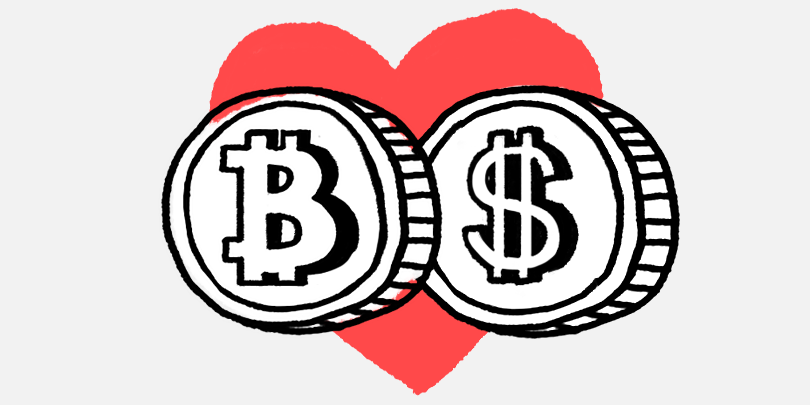
How US Payments Affected Bitcoin
In April, payments were made to the public in the United States. The government of the country transferred to citizens $ 1200 each, allocated as financial support during the crisis. At the same time, the number of deposits on this amount increased 4 times on the American Coinbase exchange.
However, the correlation between the appearance of stimulating payments and the movement of the price of bitcoin has not been proved, and the theory of their relationship is refuted by statistical and mathematical methods.
On April 17, the average market rate of bitcoin was approximately $ 7100, the next two days it rose by 3% to $ 7300, after which it dropped sharply on April 20, and reached $ 6748 on April 21. From that moment, the value of the asset began to increase sharply. At the moment, the first cryptocurrency costs $ 8787, 24% more expensive than on the day of paying $ 1200 to American citizens. Although, probably, these events are really not connected in any way.
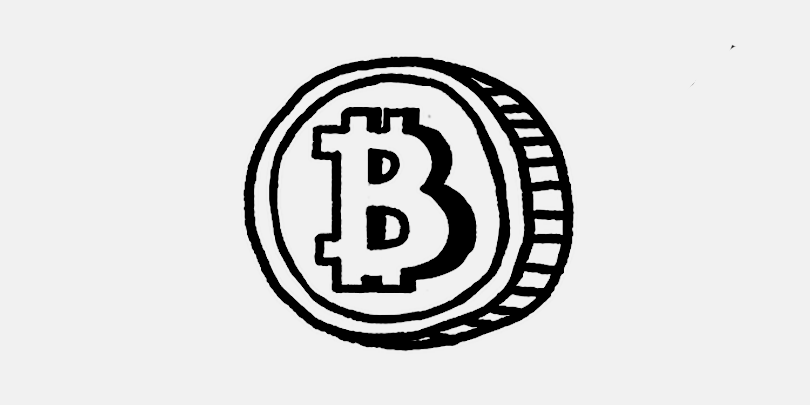
Why the Japanese will transfer payments to exchanges
The Japanese are a financially literate nation, and they always try to increase free funds. Rates on deposits in Japanese banks are near zero; accordingly, due to their knowledge, citizens use a different range of proven financial instruments in the currency, stock and cryptocurrency markets.
The flow of money to exchanges after the payment will be unambiguous, investors will activate trade, especially if they have excess money. But this is not enough to influence the rate of cryptocurrencies and other assets. The course is influenced by global central banks and regulatory authorities. More and more significant is the effect of manipulations on the market. A significant part of the population of Japan has trading platforms on their phones and mobile computers. With the phenomenal penetration of the Internet on all Japanese islands, the trading activity of private investors will increase.
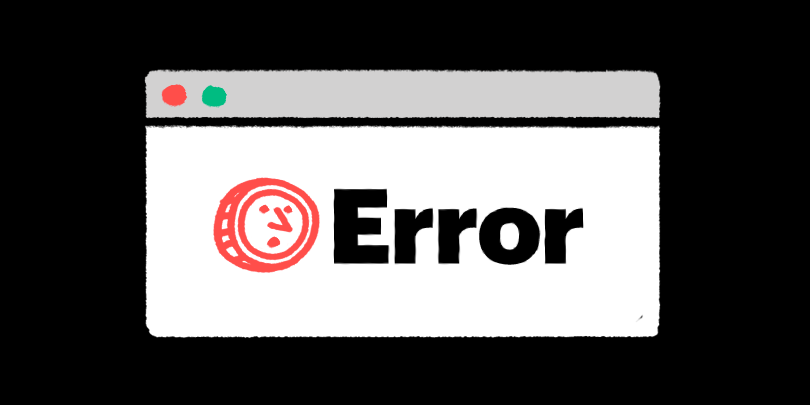
Tight regulation of the cryptocurrency market in Japan
However, payments may not reach the exchanges, despite the fact that in Japan the cryptocurrency market is extremely developed and investments in digital assets are very popular among the population.
The fact is that since May 1 of this year, the regulation of crypto exchanges has been significantly tightened. As a result, foreign exchanges, in particular, Binance and BitMEX, began to leave Japan. This trend will not contribute to the growth of investments in digital currencies, as well as to the increase in market capitalization.
The first cryptocurrency would not hurt the support of users from Japan. The asset is trading below $ 9,000, and previously five analysts immediately gave a negative forecast for its rate. According to Nick Chong of NewsBTC, the price of bitcoin may fall by 50%, as the coin is now in the same position as in 2018, when it fell in price from $ 6,400 to $ 3,150 within a few weeks. Hash Ribbons indicator, which predicts capitulation of manners, speaks in favor of the decline. They will have to sell their cryptocurrency reserves in order to maintain the operation of equipment, the profitability of the use of which decreased due to the May halving.
Glassnode: retail investors buy BTC amid falling prices
26/05/2020
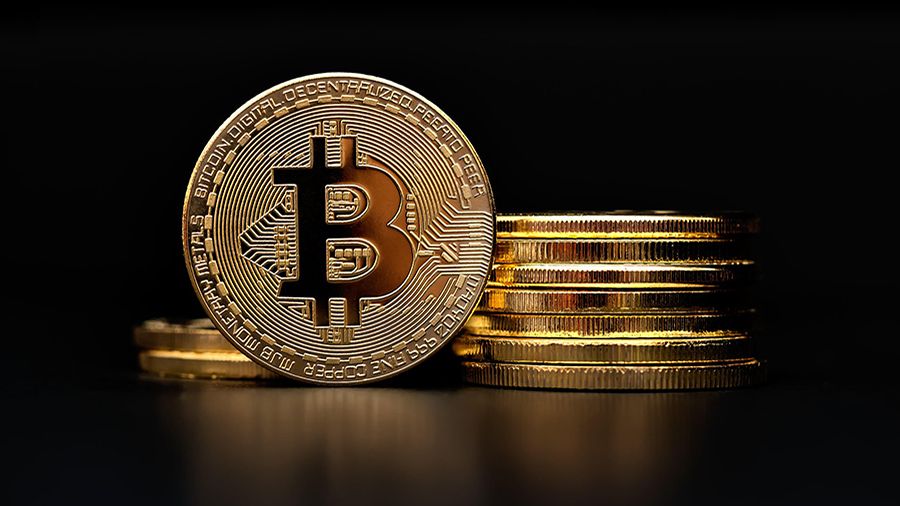
The price of bitcoin reached a two-week low, which affected the interest in buying among retail investors.
Over the past seven days, the price of bitcoin has fallen by 9.8%, showing the most serious decline in one week since mid-March. On Monday, a two-week low of $ 8,630 was fixed, and now Bitcoin is trading for $ 8,773, demonstrating a 11% decrease in value compared to the maximum price after the $ 9,960 halving recorded on May 18.
Despite the price drop, the number of addresses containing a small amount of BTC continues to grow. The number of addresses that store at least 0.01 BTC has grown to a record high.
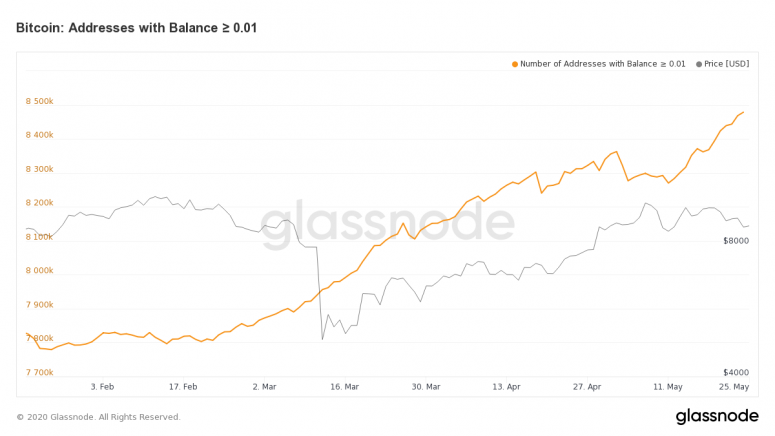
According to Glassnode, the number of unique addresses that host at least 0.01 BTC rose to 8,478,746 on Sunday. At the same time, the number of addresses from 0.1 BTC and more also rose to a record level of 3 053 004 addresses last Friday.
“Retail investors are probably in the accumulation phase,” said Ki Young Ju, CEO of CryptoQuant research company.
However, the increase in the number of addresses with a small amount of BTC does not necessarily mean that a large number of new users have come to the industry, as one investor can store BTC in several places.
In addition, the growth of interest in cryptocurrency among retail investors is unlikely to have a big impact on the price, since the market is still dominated by large players – “whales”. According to Glassnode, over the past two weeks, the number of addresses containing more than 1,000 BTC and 10,000 BTC has declined.
Moreover, activity in the options market suggests that in the near future a more serious drop in bitcoin may occur. “Traders buy put options at a loss,” said Chris Thomas, head of digital assets at Swissquote Bank.
A put option is a bearish bet on cryptocurrency, and a call option is a bullish bet. A losing put option has a strike price that is lower than the market price of the underlying asset. Thomas expects that in the short term, the price of bitcoin will fall in the range of $ 8,000 – $ 8,200.
Monero 0.16.0.0 Nitrogen Nebula Released
26/05/2020
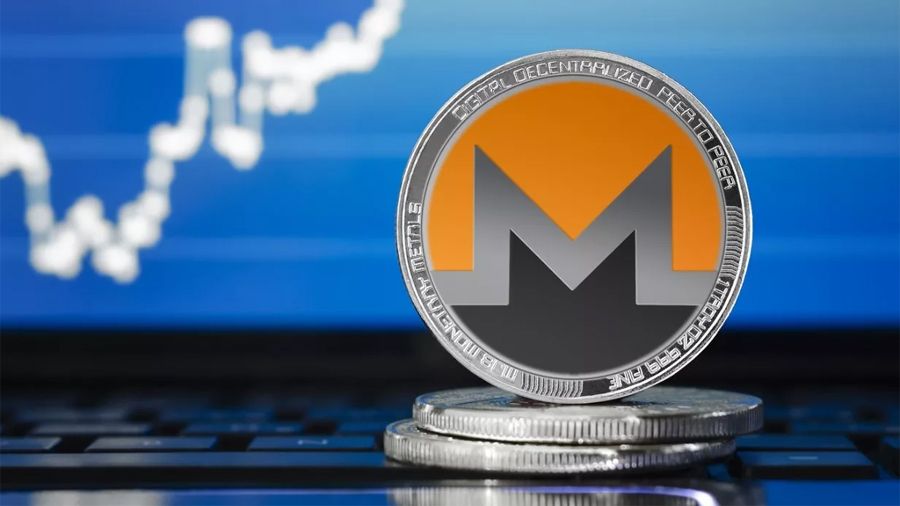
Confidential cryptocurrency Monero is moving to a new version 0.16.0.0 called Nitrogen Nebula with support for the Dandelion ++ protocol.
The development team said that the new version of Monero fixed many bugs and improved network performance. In particular, thanks to Bulletproofs technology, the speed of user verification and transaction confirmation from Ledger devices has increased, as well as the amount of data on the blockchain has decreased. In addition, Nitrogen Nebula 0.16.0.0 supports the Dandelion ++ protocol, which distributes transactions on the network so that it is not possible to track the origin of the transaction and reach a specific IP address.
49 developers worked on the update. The new version of the software is available for download with the command line interface (CLI). A wallet with a graphical interface (GUI) will be released shortly.
It is Monero’s confidentiality that is the reason for the removal of this coin from various cryptocurrency exchanges, striving to comply with international anti-money laundering standards and the requirements of local regulators. For example, the BitBay exchange planned to remove XMR from the list of trading pairs in February, and in 2018 Monero was removed from the Japanese exchange Coincheck under pressure from the country’s financial regulators.
At the same time, Monero developers believe that the recommendations of the United States Financial Crime Prevention Network (FinCEN) should only apply to regulated assets, and not to anonymous cryptocurrencies.
OMFIF Launches Digital Money Institute to Study Blockchain and Cryptocurrencies
 25/05/2020
25/05/2020
OMFIF, an independent organization working with central banks on economic policy, has opened the Digital Monetary Institute to study blockchain and cryptocurrencies.
The institute was created in order to unite the world of digital currencies and the traditional banking industry. In addition, the institution will focus on the study of payment instruments that can be used in the wholesale and retail market along with the digital currencies of the Central Bank.
Bhavin Patel, head of OMFIF’s financial technology department, said that according to the results of studies conducted by OMFIF since 2018, the interest of central banks in state cryptocurrencies is growing every year. Patel believes that in the next few years there will be a large number of projects on the development of stablecoins from central banks. These stable cryptocurrencies will be targeted at both institutional and retail customers, and will also be used in various jurisdictions, including the European Union. The Digital Money Institute was created to accelerate this process.
The founders of the institute include specialists working in the field of politics, finance, technology and regulation, as well as the corporate platform Cypherium, which recently joined the Microsoft program, organized for the development of cryptocurrency startups. Patel added that companies in the blockchain industry will share technical knowledge with regulators and financial analysts, raising their awareness of the latest technologies. The Institute plans to regularly hold conferences and forums where government officials and private entrepreneurs will be able to discuss issues related to the use of cryptocurrencies or the introduction of blockchain in their business processes.
Patel said that the recent OMFIF conference was attended by the leaders of the European Central Bank (ECB), the Bank for International Settlements (BIS), the Central Bank of Japan, China, Australia and some European central banks.
“OMFIF’s Digital Money Institute will help economists and financial regulators understand how blockchain can improve international financial systems. The world and financial markets are in constant motion. Given that we live in unstable times, the blockchain will be able to become a tool that will drive the economy to prosperity, ”said Cypherium CEO Sky Guo.
Blockchain opportunities are of interest to many educational institutions. This month, Chinese Webank planned to provide FISCO BCOS platform for the study of blockchain to Singaporean universities, and University College London (UCL) joined the Board of Governors of the Hedera Hashgraph decentralized platform to integrate technology into various industries.
ConsenSys, Microsoft, and EY Successfully Test Ethereum Data Sync Protocol
25/05/2020
 ConsenSys, Microsoft, and Ernst & Young (EY) have successfully completed Ethereum-based Baseline Protocol testing for enterprise data synchronization.
ConsenSys, Microsoft, and Ernst & Young (EY) have successfully completed Ethereum-based Baseline Protocol testing for enterprise data synchronization.
Protocol development began in March. The testing involved firms in the DLT sector, including Unibright, Provide, and Envision Blockchain. The parties involved were able to perform proof of concept (PoC) verification by safely synchronizing data and fulfilling purchase orders on the Ethereum network without disclosing confidential information. On May 21, the developers of Baseline Protocol presented a demo with a detailed description of how companies can manage purchase orders and agreements on the provision of wholesale discounts on different systems in Ethereum.
When testing the concept, two different ERP systems were used: Microsoft Dynamics and SAP, which provided data synchronization through the blockchain, while information about the company’s activities, as well as its relations with customers and competitors, remained closed. The Baseline Protocol also prevents workflow errors that can lead to data inconsistencies. On May 27, developers will conduct an open review of the system.
Alex Tapscott, co-founder of Blockchain Research Institute (BRI), said that Baseline can be used by international companies to increase the productivity and security of their business processes. Organizations will not have to change existing work schemes, since all data will be protected and contracts can be managed digitally. Therefore, firms will be able to seamlessly interact in digital space through the blockchain.
Blockchain technology is used by many companies for document management. For example, last month, the Polish credit bureau Biuro Informacji Kredytowej, together with fintech firm Billon, developed a blockchain platform that will simplify internal communication for retail banks.
Research: The number of active BTC addresses is 140 times that of XRP
22/05/2020
 According to a Glassnode study, bitcoin remains the most popular cryptocurrency, including the number of active addresses.
According to a Glassnode study, bitcoin remains the most popular cryptocurrency, including the number of active addresses.
Analysts said that the number of active Bitcoin addresses is 3 times more than the same indicator on the Ethereum network, 11 times more than active Litecoin wallets and 140 times more active XRP addresses.
 It is also interesting that Bitcoin is also a leader in the growth rate of new addresses. Every day, the Bitcoin network uses five times more new addresses than Ethereum. So, after halving the award to miners, 470,000 new bitcoin addresses and a total of 90,000 new ether addresses appeared.
It is also interesting that Bitcoin is also a leader in the growth rate of new addresses. Every day, the Bitcoin network uses five times more new addresses than Ethereum. So, after halving the award to miners, 470,000 new bitcoin addresses and a total of 90,000 new ether addresses appeared.
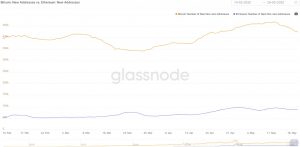
Over the entire life of the Bitcoin blockchain, 626 million addresses were used, but 95% of them no longer store coins. And if the number of addresses with a positive BTC balance remains approximately the same, then in the Ethereum network there is a constant increase in the number of wallets with a non-zero balance. Currently, the number of wallets with coins and tokens in the Ethereum network is 10 million more than the number of Bitcoin addresses that store BTC.
 The ratio of active addresses in Bitcoin and Ethereum networks to the number of addresses with a positive balance is 3% for BTC and 0.8% for ETH.
The ratio of active addresses in Bitcoin and Ethereum networks to the number of addresses with a positive balance is 3% for BTC and 0.8% for ETH.
The bitcoin network is overloaded. What can it talk about?
22/05/2020
 In the blockchain of the first cryptocurrency, a queue of unconfirmed transactions formed, and the size of the commission charged by miners increased by 7-10 times compared to April
In the blockchain of the first cryptocurrency, a queue of unconfirmed transactions formed, and the size of the commission charged by miners increased by 7-10 times compared to April
There was a sharp increase in the number of unconfirmed transactions after halving in the Bitcoin network. According to blockchain.com, by now this figure has reached 72 MB, rising to 98 MB at the moment. Since the beginning of the year, it ranged from 0.3 to 15 MB, occasionally exceeding this value.
The current figure of 72 MB is the second largest since December 2017 and indicates a congestion in the coin network, i.e., overflow of the mempool. A queue has formed of users who want to transfer bitcoins. But the current number of miners is not enough to satisfy demand.
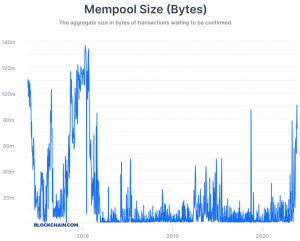 This assumption is confirmed by two other metrics. Firstly, the hashrate in the network of the first cryptocurrency fell. It fell 40% after halving and now stands at 86 EH / s. Secondly, the average value of the commission that miners charge for confirming transactions has increased. In April, this indicator ranged from $ 0.4 to $ 0.9, now it has reached $ 6.6. This suggests that users are willing to pay more so that their funds are transferred earlier than others. Data provided by bitinfocharts.com.
This assumption is confirmed by two other metrics. Firstly, the hashrate in the network of the first cryptocurrency fell. It fell 40% after halving and now stands at 86 EH / s. Secondly, the average value of the commission that miners charge for confirming transactions has increased. In April, this indicator ranged from $ 0.4 to $ 0.9, now it has reached $ 6.6. This suggests that users are willing to pay more so that their funds are transferred earlier than others. Data provided by bitinfocharts.com.
The congestion of the Bitcoin network may speak in favor of an increase in its value. For example, on March 26, 2019, the number of unconfirmed transactions on the BTC network within 10 days soared by 24,500%, reaching 43 MB. At the same time, the growth in the value of the first cryptocurrency began, and in three months it went up from $ 4,000 to $ 14,000.
A similar overflow of the network occurred in early November 2017. After that, the course of the main digital asset during the month grew from $ 6,000 to $ 20,000. However, there are exceptions. For example, the last BTC blockchain overload occurred on November 15 of last year. No cryptocurrency rally followed. The reason for the overflow of the mempool could be a failure in the Blockchain.com service system or an attack on the blockchain coins by Bitcoin SV supporters. This date is considered the project’s independence day, since then there was a Bitcoin Cash hard fork, after which the BSV altcoin appeared.
Another reason for the current network congestion could be that part of the mining farms in the Chinese province of Sichuan disconnected equipment due to a lack of electricity. Since the beginning of the month, the load on the region’s networks has increased by 22%, while the volume of water in rivers has decreased by 20%, which has led to a shortage of hydroelectric power. This led to a drop in the bitcoin hashrate, and then to filling the mempool.
If the price of bitcoin stays the same or falls, the situation with network congestion can only worsen. Miners will begin to turn off equipment, as cryptocurrency mining has become less profitable after halving. In this case, the hashrate will continue to decline, and the load on the blockchain will increase.
French Central Bank announces successful testing of digital euro
21/05/2020
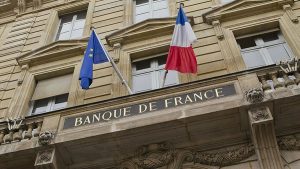 The Central Bank of France announced the successful testing of the digital euro based on the blockchain. State cryptocurrency is focused on institutional clients.
The Central Bank of France announced the successful testing of the digital euro based on the blockchain. State cryptocurrency is focused on institutional clients.
According to the French Central Bank (Banque de France) on its website, on May 14, the bank began a test sale of securities for digital euros, after which it continued testing with several financial institutions, including Societe Generale. The pilot project is focused on institutional clients and banks, and not on individual users. The regulator explained this by the fact that when testing the digital euro, the potential of blockchain technology in interbank regulation and the reduction of financial risks is simultaneously studied.
The Bank of France said that in the coming weeks it will conduct additional tests with partners related to the transfer of state cryptocurrency within the European Union. The regulator believes that the digital euro will solve many problems of the European market, namely, it will speed up transfers between banks and their international partners, strengthen the financial system of France and ensure confidence in the currency, while reducing the possible influence of the Libra stablecoin from Facebook.
In January, the Chairman of the Bank of France, François Villeroy de Galhau, stated that digital currencies should not be issued by private companies – central banks should take over these functions. However, Fabio Panetta, member of the Executive Board of the European Central Bank (ECB), believes that even in times of crisis, you don’t need to rely entirely on digital euros, but pay attention to peer-to-peer payments and Target Instant Payment Settlement (TIPS), developed by the ECB.
Satoshi Ghost: Bitcoins moved from a block mined in February 2009
20/05/2020
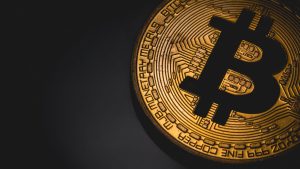 More than ten years after the launch of the Bitcoin blockchain, coins mined on February 9, 2009 started moving. Who conducted the transaction – Satoshi himself or one of the first miners?
More than ten years after the launch of the Bitcoin blockchain, coins mined on February 9, 2009 started moving. Who conducted the transaction – Satoshi himself or one of the first miners?
Today at 12:54 UTC, 50 BTC left the address 17XiVVooLcdCUCMf9s4t4jTExacxwFS5uh. They were received in block number 3 654, created on February 9, 2009 – exactly one month after the start of mining (the “zero” block was created by Satoshi on January 3, 2009, but the subsequent ones, with which permanent mining began, appeared only on January 9 – approx. Ed.). At that time, only Satoshi himself and a few enthusiasts were engaged in mining.
Although many people write about moving the entire amount (50 BTC), it is more likely that the transaction was completed with only 10 BTC. The remaining 40 BTC in the form of change went to another address of the same wallet, since they no longer move. Both receiving addresses were not used in this transaction before it was completed.
Of course, this transaction generated a wave of discussions and many believe that Satoshi Nakamoto decided to spend his “state” in bitcoins. However, do not forget that at that time at least a few more people were engaged in mining, including the famous cryptographer Hal Finney and the early Bitcoin developer Martti Malmi. The distribution of the news caused a drop in the Bitcoin exchange rate, at the time of publication it fluctuates around $ 9,500, which is almost $ 300 below the morning values.
Let’s return to the mentioned transaction, or rather, a complex transaction chain with 10 BTC sent to the address 3A6AsxxxzgHnGKhiFyW4tYX1Hn2sjNfrQP. Firstly, the transaction was probably sent with a commission inside, because the remaining 40 BTC remained untouched. But 10 BTC most likely went to one of the mixers, since the further chain is divided into transactions with dozens of recipients and different amounts, which is usually done to anonymize the movement of bitcoins in the open blockchain.
The insignificance of the transferred amount suggests that this transaction was not made by Satoshi, but one of the first miners who joined the then-unknown project out of curiosity or enthusiasm. In fact, the owner of more than a million bitcoins (that is, about $ 10 billion at the current exchange rate) hardly has any reason to excite the community in ten years, not to mention large investors, regulators and special services, because of 10 BTC worth less than 100 one thousand dollars. Apparently, large investors are of the same opinion, so the exchange rate did not react to such a significant event.
The personality of Satoshi Nakamoto worries everyone who works in the cryptocurrency industry, but the creator of Bitcoin managed to remain anonymous. According to Charles Hoskinson, co-founder of Ethereum and IOHK, the most effective way to “calculate” Nakamoto is to use the stylometry technique. However, now the deanonymization of the creator of Bitcoin will not cause the storm that could have happened 5-7 years ago, since it has no effect on the operation of the blockchain, and its condition does not exceed 6% of the total amount of BTC mined to date.
Iran will forbid cryptocurrency exchanges to operate without a Central Bank license
20/05/2020
 The Iranian parliament has proposed that cryptocurrencies be included in the current “currency smuggling” legislation, and cryptocurrency exchanges will be required to obtain a license from the Central Bank of Iran to operate in the country.
The Iranian parliament has proposed that cryptocurrencies be included in the current “currency smuggling” legislation, and cryptocurrency exchanges will be required to obtain a license from the Central Bank of Iran to operate in the country.
According to the proposed amendments, Iranian cryptocurrency exchanges must obtain a license from the Central Bank of Iran, as well as meet the requirements for exchanging foreign currencies. As a result, Iranian entrepreneurs will become more exposed to the risks of getting under US sanctions, and the likelihood of imprisonment of people working with cryptocurrencies increases dramatically.
At the same time, it is unclear how exchanges should receive this license and adapt the standards for working with fiat currencies to the blockchain industry. There are suggestions that in this way, the Iranian government is going to stop the outflow of capital, creating conditions for closing cryptocurrency exchanges.
Cryptoland Cofounder Hassan Golmohammadi said the trading platform operates in Iran, although it is legally registered in another country. Therefore, the question remains how Iran’s new legislation on services and platforms with registration in other jurisdictions will operate. Another example is the UtByte exchange and the KingMoney project are registered in Sweden and are managed by Sweden Invest Group AB of Iranian businessman Reza Khelili Dylami. According to the analytical company Chainalysis, UtByte works closely with Iranian cryptocurrency services and exchanges.
Dan Newcomb, a specialist at Shearman & Sterling Law Firm, commented that U.S. economic sanctions against Iran apply to all individuals and legal entities in the country, and if cryptocurrency companies are advertised in Iran, they run a full-fledged business in the country.
Last weekend, Tron founder Justin Sun reportedly tweeted the Iranian Cryptoland exchange. However, a member of the Tron team stated that the project does not work directly with the Iranian site, and the marketing materials in the Persian language are compiled by the Chinese and Asian Tron team, and not by its American division. Tron denies cryptocurrency marketing in Iran, since Farsi is also used in other countries in the Middle East.
Iranian authorities do not encourage cryptocurrency activities. In August, the Iranian government issued a new law, according to which cryptocurrencies cannot be considered legal means to make payments, and in June, Iranian Energy Minister Homayoun Haeri proposed depriving miners of government subsidies for electricity.
White hackers were able to access the private keys of wallets on the exchanges Lykke and Hubdex
20/05/2020
 CyberNews analysts discovered vulnerabilities in the cryptocurrency exchanges Lykke and Hubdex, due to which it was possible to withdraw crypto assets with a total value of $ 18 million.
CyberNews analysts discovered vulnerabilities in the cryptocurrency exchanges Lykke and Hubdex, due to which it was possible to withdraw crypto assets with a total value of $ 18 million.
CyberNews cybersecurity experts conducted a study that revealed that the Swiss cryptocurrency exchange Lykke stored more than $ 16.5 million in cryptocurrencies in hot wallets in an open database. White hackers managed to reveal Lykke API keys, gaining unrestricted access to the internal mechanisms of the exchange, after which they discovered 80,000 insecure private keys. In addition, the researchers discovered the “core network keys” that allow access to the $ 25,000 coins used by the exchange for staking.
Experts said that Lykke is not the only exchange where serious violations in data storage were discovered. The Chinese site Hubdex, which claims to be a decentralized exchange, also stored keys in an open database without encryption. In addition to the API keys, “white hackers” managed to gain access to user data and information used to complete the KYC procedure.
In total, analysts managed to discover more than a million private keys. Lykke responded to the hacker notification, confirming and fixing the detected problem. A response from Hubdex was never received, but the exchange also closed the vulnerability.
If this information reached the attackers, they would gain unhindered access to user tools. According to a study by the KPMG audit company, from 2017 to 2020, hackers were able to steal cryptocurrencies worth more than $ 9.8 billion due to the fact that companies do not pay enough attention to security issues.
Without Telegram. The Free TON blockchain platform began distributing its tokens
19/05/2020
 The developers of an alternative version of Pavel Durov’s project organized three contests, for participation in which you can get the TON Crystals cryptocurrency
The developers of an alternative version of Pavel Durov’s project organized three contests, for participation in which you can get the TON Crystals cryptocurrency
The Free TON project, based on the Pavel Durov blockchain platform Telegram Open Network, announced at its official forum the start of the distribution of its cryptocurrency. TON Crystals tokens will be distributed between developers and users of the platform in three competitions. They started today, May 18, and will last until May 25.
Two contests are aimed at developers, they are invited to create solutions to improve the work of the Free Ton blockchain. The task of the third is to come up with the most optimal way to airdrop TON Crystals tokens. It should include the following items:
- signature of the “Decentralization Declaration”;
- subscription to two telegram channels belonging to the project;
- Free Ton promotion;
- protection against bots and fake accounts.
The best offer will receive a reward of 30 thousand TON Crystals tokens. Within each competition, it is planned to distribute from 70 thousand to 100 thousand coins. The selection of the best solution will be chosen by the jury, whose members will also receive an award in the cryptocurrency of the project.
An alternative version of the main Telegram Open Network called Free TON was launched on May 7th. The launch was organized by independent developers, major validators and other participants, but without Pavel Durov. Later, he announced the completion of work on the TON platform, and also urged not to trust their funds and personal data to other projects that use the Telegram name for promotion.
CFPB Recognizes Ripple’s Potential for International Payments
19/05/2020
 The U.S. Consumer Financial Protection Bureau (CFPB) has recognized the potential of Ripple technology and XRP cryptocurrencies in making international payments.
The U.S. Consumer Financial Protection Bureau (CFPB) has recognized the potential of Ripple technology and XRP cryptocurrencies in making international payments.
On May 11, CFPB presented a document that published the results of a study of new trends in the money transfer market. The agency noted the continued growth and expansion of companies working with digital assets, including Ripple. CFPB researchers believe that XRP can be used effectively for cross-border payments, because the Ripple solution allows banks and credit cooperatives to know the exact final amount intended for the recipient, even before sending the payment.
In addition, the report refers to the Global Payments Innovation (GPI) platform from the interbank payment system SWIFT, which was developed to make almost instant payments in the existing banking infrastructure. Last year, SWIFT considered introducing Distributed Registry Technology (DLT) into the GPI, testing the concept with the Corda R3 platform.
Despite the potential of Ripple, CFPB still doubts that in the near future the solution of this company will be used everywhere. Banking networks will not lose influence and continue to dominate the market, even if a more modern payment solution appears on it. CFPB came to this conclusion on the basis of its own assessments and a survey of market players.
This month it became known that a retail bank RAKBank from the UAE joined the RippleNet payment network, and since April, the network has been used by the Thai company Azimo with Siam Commercial Bank, Thailand’s oldest bank, for instant payments from Europe to Thailand.
Ethereum 2.0. What to do with a coin and why buy it
18/05/2020
A threefold increase in the number of long positions on the cryptocurrency indicates that the crypto community expects its transition to the second version of the network. How the update will affect the price of altcoin, how much it will turn out to earn on its stacking and what risks this has.
The crypto community is waiting for the Ethereum network to upgrade to the second version. This is evidenced by several factors. For example, on the Bitfinex exchange, according to Tradingview, the number of long positions for altcoins has increased by 215% since the beginning of the year, to the current value of 1.63 million ETH, and reached a historic maximum.
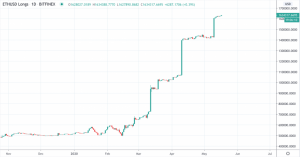
Also, the transition of Ethereum to the new version has become more interested in the Internet. According to Google Trends, the number of Ethereum 2.0 requests is now at an absolute maximum. Since March, this figure has grown more than six times.
The importance of the Ethereum update was emphasized by research analyst at Messari Ryan Watkins. He is sure to upgrade to version 2.0. will have a greater impact on the cryptocurrency market than bitcoin halving. Updating the coin network is fundamental and carries some uncertainty.

“Ethereum 2.0 is a much stronger catalyst than halving bitcoin because it is an uncertain and fundamental change,” Watkins wrote in his Twitter account.
How exactly the transition of Ethereum to the new version will affect the cryptocurrency market and Watkins, in particular, did not specify the price of the altcoin. Therefore, we decided to answer the most important questions: why is the update necessary, how will it help the coin and whether it is worth investing in it.
Why upgrade Ethereum?
One of the problems of the Ethereum network that the update should solve is scalability. At the moment, the altcoin blockchain is capable of conducting up to 15 transactions per second. This figure is more than two times higher than that of bitcoin. However, for a large number of users this speed is not enough. For example, a Visa payment system can carry out up to 24 thousand transactions per second.
Optimistic Rollup development will help solve the scalability problem. According to Vitalik Buterin, creator of Ethereum, its implementation will occur after updating the altcoin network. This will increase its throughput to 1000 transactions per second.
Another solution to this problem is to change the algorithm. Ethereum now runs on the same protocol as Bitcoin – Proof-of-Work. This mechanism implies that the confirmation of transactions in the cryptocurrency network occurs using the computing power of computers, that is, with the help of miners.
Using the Proof-of-Work algorithm hinders the growth of Ethereum network bandwidth. So that it can withstand a large load, more miners are needed. And the growth in their number is slowing down, since from time to time it is becoming more difficult to mine cryptocurrency and, accordingly, more expensive.
For this reason, the Ethereum development team is planning a move to the Proof-of-Stake algorithm. Unlike the first, it does not require the use of computing power of computers to confirm blocks. That is, there is no need for miners. Instead, validators validate transactions. These are users who will keep a certain amount of coins on their wallet, at least 32 ETH. Thus, the system will no longer need expensive equipment.
The main solution to the scalability problem will be the introduction of sharding. The Ethereum network is now a common database. After the update, the blockchain will be divided into autonomous, interacting blocks – shards, each of which will process its transactions and smart contracts. In December 2018, Buterin said that this method will make the altcoin network more efficient by a thousand times.
Update against centralization 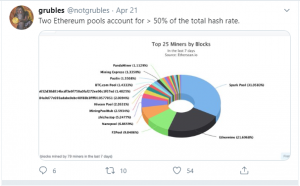
Another problem with the old algorithm is the risk of centralization. In the first few years of the existence of Bitcoin, a stationary computer was enough for its extraction. Over time, the complexity of mining has increased, and now this process requires the purchase of expensive equipment and access to cheap electricity. Moreover, the complexity of BTC mining is likely to continue to grow. In this regard, miners will have to constantly update devices in the future in order to maintain their profitability.
Such conditions were weeded out from the infrastructure of small participants. Now Bitcoin mining is mainly engaged on an industrial scale. This leads to centralization of the industry. For example, according to Coinshares, in December, 54% of the hashrate of the first cryptocurrency network accounted for the Chinese province of Sichuan.
Due to the fact that Ethereum, like Bitcoin, works on the Proof-of-Work algorithm, the altcoin also has the risk of centralization. For example, in April, more than 50% of the computing power of the coin network was provided by two mining pools. The solution to the centralization problem is to replace miners with validators. To become them, it will be enough to hold 32 ETH and install a special client. From a technical point of view, this is easier than buying devices for mining and maintaining their performance, as well as looking for access to cheap electricity. According to the developers, this will give Ethereum mining a “massive character”
What will validators get
Validators will confirm transactions in the new Ethereum network. For their work, they will rely on remuneration in the form of passive income, this function is called stacking. Currently, the annual return on stacking is unknown. According to the project roadmap, this value will vary from 1.81% to 18.1%.
Stacking profitability will depend on the number of validators. The more there are, the smaller the amount is supposed as a reward. In this regard, we can suggest that users who become validators at an early stage will be able to get the most profit. However, there will be costs. The roadmap noted that the cost of validating transactions according to “rough calculations” will be about $ 180 per year.
One of the developers of the project, Justin Drake predicted that on average, the validator will receive an income of 5% per year. At the current altcoin exchange rate of $ 200, the user will need to invest $ 6400 to become a validator in the new project network. In this case, taking into account Drake’s calculations and estimated expenses, the annual profit from stacking 32 ETH at a constant price of the coin will be $ 140 ($ 6400 * 5% – $ 180).
Project prospects
Updating Ethereum 2.0 will lead to technical improvement and development of its network, said Viktor Pershikov, leading analyst at 8848 Invest. The transition to a new algorithm and the introduction of sharding will significantly scale the product. Thanks to this, ETH will be able to hold the first place in the ranking of altcoins, since now there are blockchain platforms that, in terms of bandwidth, network efficiency and the number of dApps applications, make Ethereum a competition.
Pershikov said that thanks to the update, Ethereum will be able to compete not only with other cryptocurrencies, but also with DeFi projects. They are currently firmly occupied a niche in which the main profit comes from stacking.
Yuri Mazur, head of data analysis at CEX.IO Broker, added that the launch of the updated platform will provide more benefits for project development and transaction acceleration. For this reason, it is likely that the platform will secure the status of the most popular platform for the deployment of new projects. In addition, Ethereum will penetrate deeper into the decentralized finance market. The amount of commissions for transfers will also decrease. All this in the future will allow Ethereum to compete, possibly even with Bitcoin.
“Updating the network is primarily an extension of the number of users. Today, most blockchain projects are created just on the Ethereum platform. I will give a simple example: now 213 projects working in the field of decentralized finance are officially registered. Of these, 199 are developed on the Ethereum platform. The transition to the updated platform 2.0 will allow attracting even more partners who will use the blockchain for their projects, accelerate transactions and make them almost free. Therefore, Ethereum 2.0 could potentially become a real competitor to Bitcoin, ”Mazur suggested.
Mazur added that the Ethereum update will allow him to gain certain advantages over the main competitors of EOS and TRON. Today, these tokens are actively used by exchanges for stacking. The annual yield on them is 1-3% and 7-9%, respectively.
United Traders Managing Partner Anatoly Radchenko noted that it’s difficult to talk about the success of Ethereum 2.0 since the idea, albeit a good one, is still at an early stage of implementation. At the same time, the transition to the second version, which will consist of three phases, can happen both this year and not the next.
However, there are prospects. Radchenko stressed that the Ethereum blockchain has already become the basis for a decentralized finance infrastructure, decentralized exchanges, landing, stacking and other products. In addition, most stablecoins, including Tether (USDT), which recently entered the top 3 cryptocurrencies by capitalization, also work on the basis of ETH. Thus, Buterin’s platform can become the main one for “financial system 2.0”, the expert admitted.
Negative sides
Despite a number of benefits, updating Ethereum carries the risk of significant negative consequences, Masur warned. Earlier it was reported that the US Securities Commission (SEC) would recognize ETN as a security if the coin switched to the Proof-of-Stake algorithm. In addition, this will change the approach to mining, which is why most retail miners will simply leave the market. Today ETN is the most popular coin for mining at home.
Mazur noted that competition from EOS and Tron should not be discounted. Firstly, most of the projects related to gambling are deployed on these platforms – 80%. The Ethereum ecosystem accounts for only 20%. Secondly, many tokens have been created on the Ethereum platform, which are completely useless or dead. But the very fact of their presence overloads the system, because of which failures occur. If this problem is not resolved in the near future, then Ethereum may lose its position in the market, the expert admitted.
You also need to consider the risk that the price of Ethereum may fall. In order to receive passive income for storage of ETH, it will be necessary not only to have 32 coins, but also to block them through a special transaction. Removing blocked funds does not work instantly. The cryptocurrency withdrawal process will take at least 18 hours. This period may be extended if many users request a return of tokens at the same time, as indicated in the project roadmap. Accordingly, if ETH starts to become cheaper, it will be impossible to sell it instantly. Thus, there is a risk of losing part of the capital and all the income received from stacking.
Study: Bitcoin demand remains high even after halving
18/05/2020
A study by Cointelegraph Markets and Arcane Research shows that, despite investor concerns, demand for bitcoin remains high even after halving the reward for miners.
Analysts note that over the past year, the number of Bitcoin vending machines has increased by 90% and reached 8,000. In addition, according to Coinstar, the use of crypto machines has increased by 40% since February this year.
The volume of transactions in Bitcoin also continues to increase – on average, transactions amounting to $ 10 billion are processed in the Bitcoin blockchain per day. For comparison, the volume of ETH and LTC transactions does not even reach $ 500 million per day.
After halving the award to the miners, the price of the first cryptocurrency increased and now Bitcoin is trading at $ 9,400. At the same time, the growth in the rate of the first cryptocurrency was accompanied by large trading volumes, which is a positive sign.
In addition, interest in bitcoin continues to grow among both retail and institutional investors. So, the number of open positions on options for bitcoin on the CME exchange has increased significantly, and the volume of such positions has reached $ 140 million.
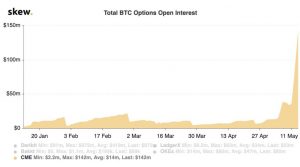
Researchers emphasized that the popularity of decentralized loan products has also increased markedly.
Miners began to switch from Bitcoin to Bitcoin Cash and Bitcoin SV
15/05/2020

After halving the reward for Bitcoin miners, the hash rate of Bitcoin Cash and Bitcoin SV began to grow again. Obviously, this is due to the transition of some of the miners.
The halving of the award to miners in the Bitcoin Cash and Bitcoin SV networks took place in early April, and after that a significant part of the miners switched to mining the first cryptocurrency. However, a halving occurred on the Bitcoin network the day before yesterday, so miners began to return to mining BCH and BSV.
 Immediately after halving, the hash rate in the Bitcoin Cash network decreased by 80%. A little later, he recovered somewhat, but still amounted to no more than half of the previous figure. At the moment, the Bitcoin Cash hash has almost doubled – if on May 10 the network hash was 1.43 Eh / s, then on May 13 it increased to 2.74 Eh / s. The Bitcoin SV hashrate increased from 1.1 Eh / s to 1.78 Eh / s.
Immediately after halving, the hash rate in the Bitcoin Cash network decreased by 80%. A little later, he recovered somewhat, but still amounted to no more than half of the previous figure. At the moment, the Bitcoin Cash hash has almost doubled – if on May 10 the network hash was 1.43 Eh / s, then on May 13 it increased to 2.74 Eh / s. The Bitcoin SV hashrate increased from 1.1 Eh / s to 1.78 Eh / s.
In the first day after halving the award to the Bitcoin miners, the hashrate of the first cryptocurrency network decreased by 16%. This was the result of disabling obsolete equipment and the transition of miners from mining bitcoin to mining alternative cryptocurrencies.
It was previously reported that a drop in hashrate in the Bitcoin Cash and Bitcoin SV networks after halving the reward made them vulnerable to a 51% attack.
Bitfly launches Ethereum 2.0 signal chain profitability calculator
15/05/2020
![]() The Austrian Bitfly development team introduced a tool for calculating the costs and profits of staking in the Beacon Chain – the “signal chain”, a key component of Ethereum 2.0.
The Austrian Bitfly development team introduced a tool for calculating the costs and profits of staking in the Beacon Chain – the “signal chain”, a key component of Ethereum 2.0.
In Ethereum 2.0, transactions will be checked by “stakes” instead of PoW miners. Any user with 32 ETH for staking will be able to participate in the addition of blocks. To reward network members for ensuring the integrity and security of the blockchain, the ETH 2.0 mechanism will periodically distribute their rewards.
Bitfly has released a tool to calculate the return on stake in ETH 2.0. Ethereum users can compare different approaches to staking: with a low and a large number of validators, with and without pools, etc.
According to the calculations available in the Bitfly tool, when staking 32 ETH with a one-time initial cost of $ 1000 and monthly expenses of $ 100 (electricity, depreciation, etc.), staking will become profitable after 260 days.
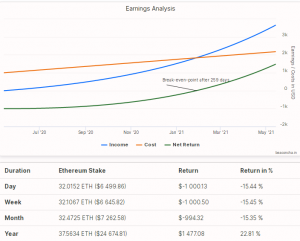
Earlier, numerous assumptions were made about the amount of periodic rewards for ETH 2.0 stakes. According to the most conservative forecasts of Ethereum developers, the remuneration can be about 4-5% per year. However, independent analyst Adam Cochran believes that the ongoing accumulation processes in the Ethereum network can significantly increase the size of the rewards.
Last week, the Ethereum 2.0 Schlesi test multi-client network was launched. This event took the Ethereum community one step closer to launching phase 0 of the ETH 2.0 core network. The exact timing of the deployment of this update is not yet known.
According to Vitalik Buterin, the developers of ETH 2.0 suggest that the Beacon Chain based on PoS consensus can be launched “in the third quarter” of this year. But according to more pessimistic forecasts, the launch may be delayed until the beginning of 2021.
Will Bitcoin Price Fall With The Stock Market?
14/05/2020
A repeated drop in the stock market cannot be ruled out. And in 2020, bitcoin shows a high correlation with it. The price of the cryptocurrency has been decreasing and growing along with the quotes of the leading US S&P 500 index, which includes 505 of the largest companies whose shares are traded on US exchanges.
However, the correlation between the BTC and the S&P 500 has now declined. According to The Block, over the past month, this figure has fallen from 0.53 to 0.15 points. These data are confirmed by trading on the markets of the last days. Since May 12, the index value fell by 4%, to the current mark of 2820 points. However, despite this, the price of the coin increased, over the same period it rose by 15% and now amounts to $ 9700.
If the March fall in quotes of the S&P 500 index repeats, this will not have a strong impact on the price of cryptocurrencies.
The connection of bitcoin with the S&P 500 weakened after the collapse of bitcoin on May 10 by 15%. Yesterday, the S&P 500 index suffered from a speech by the head of the US Federal Reserve Jerome Powell. Bitcoin ignored the fall of background indexes. Today it recovered to $ 9777. Completely blocked the fall of May 10. But this does not mean that he alone will survive the recession of the stock market. If it fixes above $ 10,250, then during the collapse of the American market it will fall less, as there will be more buyers in the second fall than in the first.
A number of experts called Bitcoin a promising investment. Its price can rise to $ 12,000, possibly up to $ 14,000, if it overcomes the resistance formed by $ 10,500. The coin is unlikely to begin to get cheaper until the economic situation in the world stabilizes. And if the fall in the stock market continues, the cryptocurrency rate will not be affected much, since it has become weakly dependent on the S&P 500 index, experts say.
 $ 240 million withdrawn from crypto exchanges in Bitcoin after halving
$ 240 million withdrawn from crypto exchanges in Bitcoin after halving
14/05/2020
Users began to take cryptocurrency from trading floors in April. The largest outflow of funds occurred with Bitfnex, reserves of some platforms were not affected
Users withdrew more than 24 thousand BTC from crypto-exchanges since May 11, when the first cryptocurrency network hosted a halving. It should be noted that the removal of funds from the main sites began a little earlier, namely in the second half of April. For example, the reserves of the Bitfinex exchange from that moment decreased from 205 thousand BTC to the current value of 134 thousand BTC, bitcoin.com reports.
Other sites showed similar dynamics. For example, Bitcoin stocks BitMEX decreased from 228 thousand to 214 thousand in March. Huobi exchange reserves decreased by about 20 thousand BTC in April. The amount of savings stored on the Coinbase platform, which is the largest in this parameter, has not practically changed. However, there are other examples: an increase in funds occurred on the Bitstamp exchange, its assets increased from 66 thousand BTC to 71 thousand BTC.
In April, the analytical company Glassnode reported that users began to withdraw cryptocurrency from exchanges. As a whole, the reserves of cryptocurrency sites decreased by 10% compared with the maximum established at the beginning of the year. This is because investors are moving to a longer-term strategy.
 Trump may affect bitcoin
Trump may affect bitcoin
13/05/2020
The US President insists that the Fed impose negative rates. This may lead to negative consequences for the country’s economy and affect the cryptocurrency market.
Most likely, the US economy will continue to fall, United Traders analyst Fedor Anashchenkov believes. According to him, the Fed’s attempt to avoid deflation through a sharp increase in the money supply could lead to inflation. This reduces the attractiveness of government bonds and forces investors to seek new protective assets that are independent of central bank policies.
“This is exactly what Bitcoin provides. Everyone pays attention to its correlation with the stock market, but in reality it is not high. The correlation of bitcoin with gold is much higher, it is historically at the highest level. This is a sign that Bitcoin is becoming a protective asset, ”Anashchenkov emphasized.
Andrey Berezin, Managing Partner of Raison Asset Management, an investment company, agreed with him. He emphasized that negative rates could “push the cost” of major cryptocurrencies well. Firstly, due to the destruction of fundamental principles in the economy, and secondly, there will be even more liquidity, and financial institutions will begin to invest it, including in high-risk assets, such as cryptocurrencies. Bitcoin with recent halving and limited issuance in such a situation may look like a “healthy asset”, which is becoming less and less, the specialist noted.
Now the BTC rate is growing again. The first cryptocurrency surpassed the $ 9000 mark, over the past day it has risen in price by 3%. And since mid-March, the value of the coin has increased by almost 140%. And this happens against the backdrop of the development of the situation with COVID-19 and new problems of various countries in the economic sphere. It is not yet possible to say that Bitcoin has become a defensive asset, but the limited issue really gives it a great advantage over national currencies.
 Ripple (XRP) will start loan platform
Ripple (XRP) will start loan platform
13/05/2020
Ripple has been opening initiatives to diversify and find new ways to use XRP. A new vacancy announcement give information that the company wants to launch a new capital lending platform. By the publication, Ripple is looking for a new person for product manager to lead the all project. The part of vacation:
”This person will bring a new loan product to market from concept to launch for RippleNet customers. This person will bring strong leadership skills as they will need to collaborate heavily with cross-functional internal teams and the financial ecosystem of partners and customers.”
The text does not mention the use of XRP, but loоking for a person who can work with other teams.It is possible the platform assume the use of the token. Eventually, the product manager will have to know how to create a structure that turn around capital lending, but also cross-border payments:
”(The product manager will) create the relevant structures to properly execute on a functional loan offering, develop customer empathy around problems related to working capital needs and cross border payments, develop risk capabilities to properly understand how to price new loan offerings for customers.”
As CNF reported , Ripple has published two vacancies that have some rumors about the starting of a “next generation trading platform”. The platform is presumably based on Ripple’s On Demand Liquidity payment solution and XRP. At this moment the company has not made an official declaration yet. It is also unclear: does the vacancy for the manager of the lending platform is related to this project?



